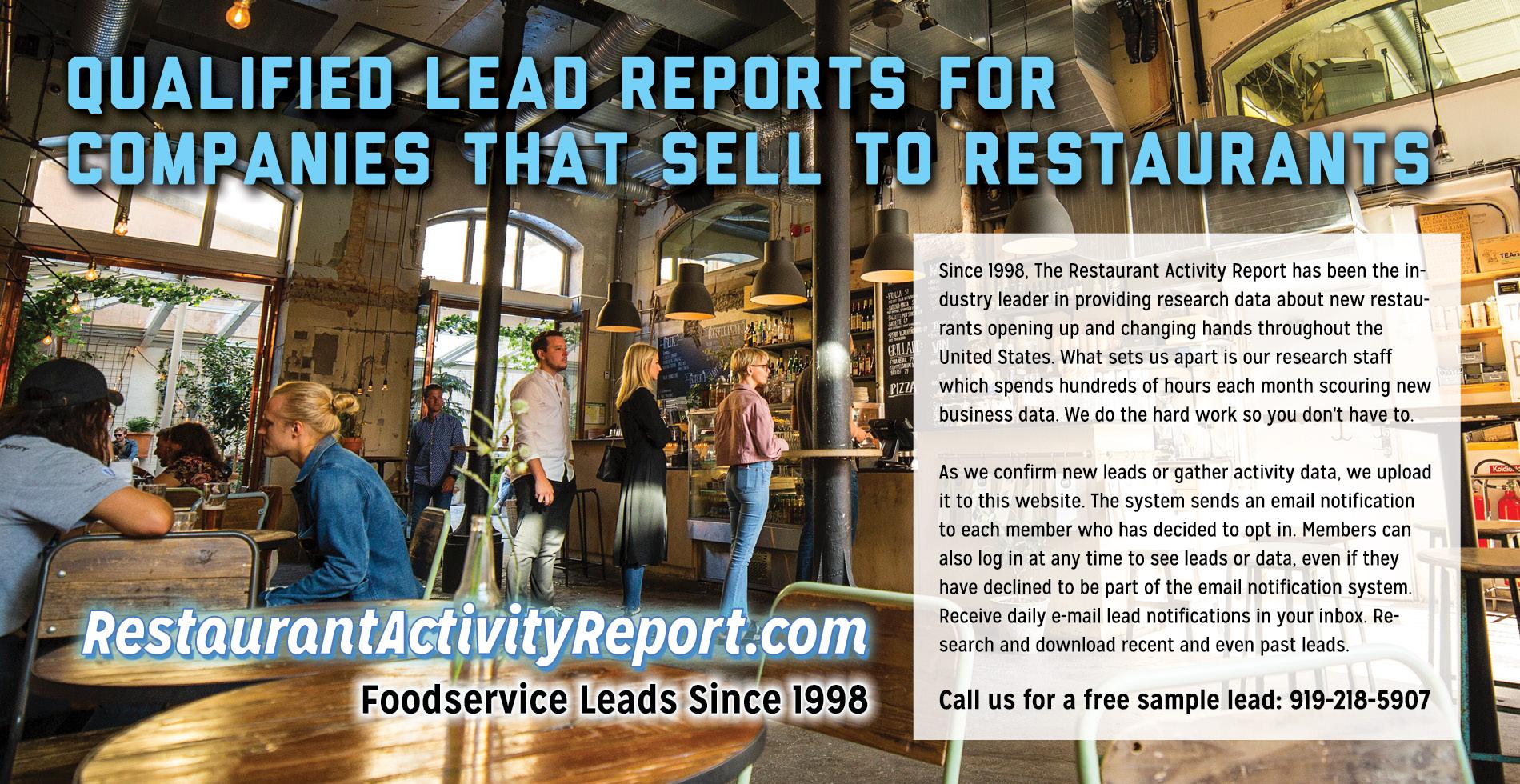








Dining has become more than just a meal—it’s now a magnet for year-round tourism and economic development. With the recent announcement that Boston and Philadelphia will be the latest cities to join the MICHELIN Guide Northeast Cities edition, the dining world is witnessing both a symbolic return to legacy rankings and a strategic investment in culinary prestige. The inclusion of these two historic and foodforward cities speaks volumes about how global travel, community identity, and economic momentum are increasingly centered around the dining table.
“The local passion, talent and camaraderie in both Boston and Philadelphia is evident in their restaurant communities,” Gwendal Poullennec, International Director of the MICHELIN Guides said. “The anonymous Inspectors look forward to spotlighting their unique experiences in both cities.”
What sets this announcement apart is not just the addition of two new markets, but what it represents: the transformation of cities into 365-day tourist destinations fueled by culinary excellence. For decades, restaurant culture has served as a heartbeat of local communities. But over time, especially post-pandemic, it’s become clear that food is also a primary driver of destination appeal. Michelin’s return to these cities is a nod to the evolving role of dining as tourism infrastructure.
Martha J. Sheridan, President & CEO of Meet Boston, noted, “Long known for distinguished and unparalleled farmto-table and sea-to-table cuisine, Boston now boasts an expanded portfolio of epicurean excellence. We invite all to see and try for themselves how Greater Boston's contemporary culinary culture has evolved.”
The evolution of restaurant rankings tracks with shifts in how we travel,
“Our chefs, restaurateurs, and hospitality professionals have been steadily building our city into an internationally acclaimed foodie destination.” — Gregg Caren
search, and experience food. Zagat once ruled the early '90s and 2000s with a democratic scoring system that turned diners into critics. Then the Internet blew the gates open. Yelp and Google Reviews dominated the 2010s, ushering in the age of crowdsourced, often inconsistent reviews. Now, the pendulum is swinging back toward expert-based assessments. Consumers are craving authority, credibility, and consistency— qualities the MICHELIN Guide delivers with its anonymous inspection process and transparent standards.
“Our chefs, restaurateurs, and hospitality professionals have been steadily building our city into an internationally acclaimed foodie destination,” said Gregg Caren, President and CEO of the Philadelphia Convention and Visitors Bureau. “This announcement that the MICHELIN Red Guide will be exploring the Philadelphia region to experience our restaurants is an acknowledgement of years of hard work, collaboration, and extraordinary culinary innovation.”
For restaurateurs, the MICHELIN Guide is more than a badge of honor— it’s a business accelerator. A single star

can bring global attention. Two can change a career. Three can transform a city. But to get there, restaurants must understand the game. The first step is consistency. Inspectors don’t announce themselves. They dine repeatedly, judging excellence based on five universal criteria: quality of the products, mastery of flavor and cooking techniques, the personality of the chef in the cuisine, value for money, and consistency between visits.
To develop a strategy for becoming part of the MICHELIN-ranked community, foodservice operators must start by refining their story and executing their identity at every level—kitchen, service, and ambiance. There’s no checklist for a star, but the best operators build with intent. They invest in talent, embrace sustainability, and create an experience that transcends the plate. Training, team retention, and sourcing matter. So does design, storytelling, and authenticity. Every moment, from amuse-bouche to dessert, must reflect thoughtful craftsmanship.
“Inspectors look for character and consistency,” Poullennec detailed. “They’re not swayed by hype or trends. They’re guided solely by what’s on the plate and how it’s delivered.”
Tourism boards have taken note. Cities that invest in culinary tourism are now reaping tangible benefits. Atlanta, for example, saw a measurable uptick in visitor spending after its MICHELIN debut. In the case of Boston and Philadelphia, these rankings serve not only as a tourism tool but as a signal to in-
vestors, media, and international travelers. High-spend tourists seek out MICHELIN-starred cities. They stay longer, book more, and contribute to broader economic impact across hotels, transportation, and local shops.
“Michelin brings unprecedented prestige and recognition to a destination, creating new opportunities for talent recruitment and retention,” Sheridan outlined. “It’s also a powerful differentiator in travel decisions.”
Restaurants benefit from this halo effect, but so do distributors and suppliers. As demand rises for premium ingredients and high-touch service, so too does the need for partners who can meet elevated standards. Local economies expand. Jobs are created. A vibrant restaurant scene feeds a city’s brand and attracts a new wave of travelers.
“There is a ripple effect,” Caren continued. “Dining becomes part of the city’s identity. It’s not just about a meal—it’s about what that meal says about who we are and how we welcome the world.”
The MICHELIN Guide doesn’t just hand out stars. It tells the world that a city is worth visiting, again and again, 365 days a year. For Boston and Philadelphia, this moment marks a culmination of decades of grit, ambition, and flavor. And it’s only the beginning.
Other U.S. cities have made strategic investments to bring the MICHELIN Guide to their communities. In Texas, six tourism boards collectively paid $2.7 million over three years to secure Michelin’s presence across Austin, Dallas, Houston, and San Antonio. The Atlanta Convention and Visitors Bureau paid $1 million for a three-year deal, resulting in the city's first-ever MICHELIN stars. Florida, Toronto, and Colorado have also joined the club, with cities like Denver, Boulder, and Miami Beach contribut-
continued on page 109

As Veterans and Service Members’ Week continued in New York City, celebrated chef David Burke spearheaded a group of acclaimed New York City restaurants in a heartfelt show of appreciation for active-duty military and veterans. The culinary initiative was part of a broader citywide program launched by Mayor Eric Adams to recognize those who have served, with perks that go far beyond the plate.
Through Memorial Day military personnel and veterans enjoyed exclusive benefits and discounts at dozens of top restaurants and cultural venues across all five boroughs. Burke, who owns David Burke Tavern and Park Ave Kitchen by David Burke, said the gesture was personal.“These men and women have risked everything for our country,” Burke said. “As a chef, I use food as a form of expression. This weekend, it’s a way of saying thank you.”
Joining Burke were an array of wellknown New York establishments of-
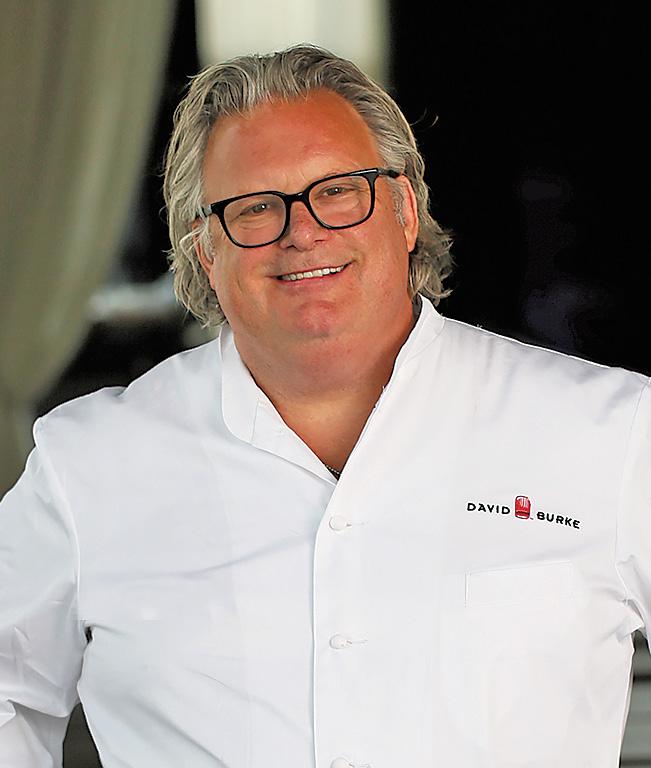
“When you’re in the hospitality business, you learn to appreciate sacrifice and service—those are part of the DNA of any good restaurant. Welcoming veterans isn’t a promotion. It’s a privilege.” — David Burke
fering their hospitality to those who wear the uniform. Participating restaurants include Amélie (West Village), David Burke Tavern, The Dram Shop Bar, Gaia, The Independent, The Long Room, Lorenzo's Restaurant, Bar & Cabaret, Mae Mae Cafe & Plant Shop, Maggie's Place, Neir's Tavern, NoMad Diner, Park Ave Kitchen by David Burke, Pasta Lovers, Pete's Tavern, Rivercrest, Stout NYC (all locations), Sungold, and The Wolfe.
The initiative falls within a broader campaign from City Hall to reaffirm New York City’s commitment to the military community. On Wednesday, Mayor Adams announced that the city had forged new partnerships with restaurants and cultural institutions to create a network of benefits for those who have served. The timing— Fleet Week and Military Appreciation Month—was deliberate. “Our veterans and service members deserve more than our thanks,” Adams said. “They deserve access, opportunity, and respect. This city owes them, especially given our own history with 9/11. What we’re offering this week is just a slice of what they’ve earned.”
The program was coordinated in part by NYC Tourism + Conventions, whose leadership has long advocated for deeper inclusion of veterans in the city’s cultural life. “The offers and incentives from restaurants and cultural
institutions across all five boroughs underscore our city's deep gratitude and commitment to those who have served,” said Julie Coker, president and CEO of NYC Tourism + Conventions. “We want veterans and service members to know—this city belongs to them, too.”
In addition to restaurant perks, dozens of New York’s top museums, zoos, gardens, and theaters are opening their doors to military families, offering free or deeply discounted admission. Participating venues range from the American Museum of Natural History and the Metropolitan Museum of Art to the Brooklyn Botanic Garden and Carnegie Hall. Many of these institutions are part of the city’s Cultural Institutions Group and are long-time partners in Blue Star Museums, a nationwide initiative that provides free access to cultural sites for military families.
The restaurant portion of the initiative isn’t just symbolic—it reflects a deeper civic effort to make New York City a more veteran-forward city. That strategy includes long-term investments in housing, employment pathways, and mental health access for former service members. Earlier that week, Mayor Adams unveiled renderings for the “Flames of Honor” memorial to post-9/11 military service mem-





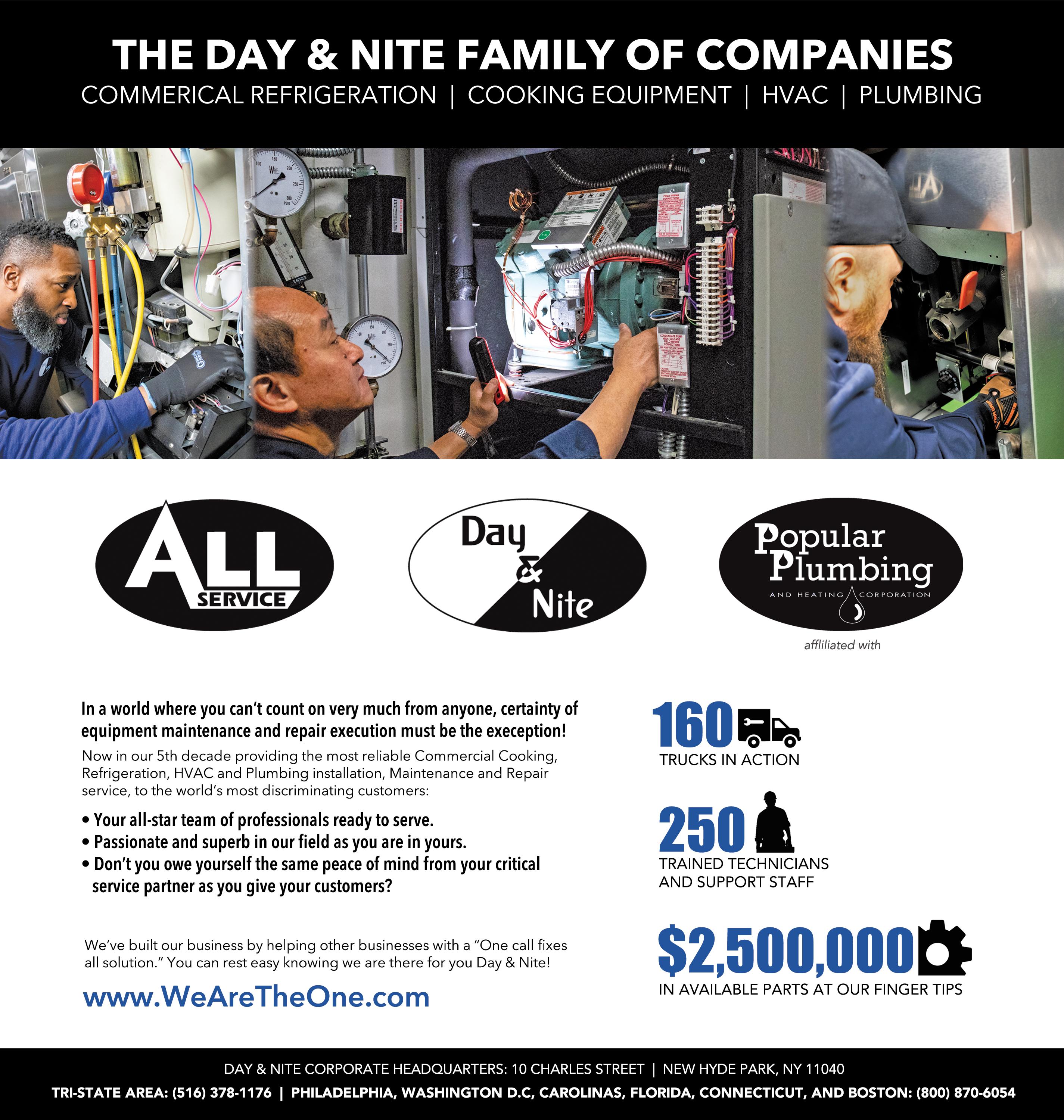
When it comes to delivering a great campus dining experience, the food isn’t the only thing that needs to be well-prepared. The people behind the scenes—cooks, cashiers, dishwashers, servers—shape the atmosphere, culture, and consistency of university foodservice. A motivated, well-treated workforce doesn’t just make meals; it creates an environment students and staff rely on every day. Northwestern University’s recent labor agreement with its dining workers is a clear signal of how crucial that workforce is—and how high the stakes can get when things go wrong.
The agreement, finalized in midMay, brought together Compass Group, the university’s dining service provider, and UNITE HERE Local 1, the union representing around 500 food service workers across Northwestern’s Evanston and Chicago campuses. The new four-year contract came after nine months of negotiations and a historic strike that tested the strength of worker solidarity and campus-wide support.
Compass Group began operating at Northwestern in fall 2018, following a competitive bidding process aimed at upgrading the university’s foodservice offerings. At the time, Compass offered a unified vision that spanned residential dining, retail food outlets, athletics hospitality, and catering. It replaced legacy providers Aramark and Sodexo, promising sustainability, innovation, and a people-first approach. The company retained all hourly associates and committed to honoring their pay and seniority—an important move given the workforce’s deep roots on campus.
But the optimism that launched Compass's tenure at Northwestern gradually

eroded under the pressure of economic challenges and contract delays. After the previous labor contract expired in August 2024, negotiations stalled. Workers, many of whom had spent decades on campus, were left without a renewed deal or clear timeline for resolution.
Tensions reached a boiling point in early 2025.
“The strike didn’t come out of nowhere,” said Sarah Lyons, communications director for UNITE HERE Local 1.
“Workers had gone months without a contract, and they were falling behind financially. They stood together to demand fair wages, retirement security, and dignity on the job.”
Hundreds of food service employees picketed across campus in all weather conditions, backed by student groups, faculty, and local political leaders. The union also filed charges with the National Labor Relations Board, alleging unfair labor practices by Compass. The pressure mounted steadily.
“Northwestern understood the stakes,” said Luke Figora, the university’s
Vice President of Operations and Chief Operating Officer. “The food service associates at the University play an important role in the day-to-day life of our students, staff and faculty,” Figora noted. “We knew a resolution had to be found that respected that contribution.”
Negotiations ultimately delivered a sweeping package: a $4 hourly wage increase to $25.68, retroactive back pay, a one-time bonus, and a 250% increase in employer pension contributions. Importantly, job protections were written into the deal—particularly for workers impacted by the Allen Center’s closure.“The workers made it clear what they needed to stay afloat and feel secure about the future,” Lyons added. “This contract meets those demands head-on. This is a model for what’s possible when workers organize and don’t back down. It proves that strong unions can reshape the terms of campus employment.”
As a service provider, Compass Group expressed satisfaction with the outcome. “This agreement offers both immediate and long-term wage increases and
enhanced benefits to our team,” a Compass spokesperson said. “We are proud to have reached such a positive outcome for everyone.”
Northwestern administration shared a similar tone. “We are grateful to both Compass and UNITE HERE Local 1 for their work to reach this agreement,” Figora continued.
“This was a long process, but it reflects a mutual understanding of the value these workers bring to the university.”
For Compass Group, the agreement could strengthen its relationship with the Northwestern community. Since 2018, the company has emphasized high standards for food quality, customer service, and sustainability. Now, with a renewed labor foundation, it has the opportunity to turn attention back to innovation and execution.
Figora outlined Northwestern’s outlook moving forward. “We’ve always said that delivering a great dining experience means investing in the people who make it happen,” he said. “This agreement allows us to do that—sustainably and respectfully.”
The new four-year contract, set to expire in August 2029, offers more than just numbers on a page. It resets the tone of labor relations on campus and reinforces the importance of treating dining workers as essential—not just operational. As universities nationwide grapple with the intersection of labor, affordability, and service quality, Northwestern’s experience may serve as both a cautionary tale and a blueprint.
“The bottom line is this: When workers are heard, everyone benefits,” Lyons concluded. “Northwestern students will eat better, and the people who serve them will live better.”
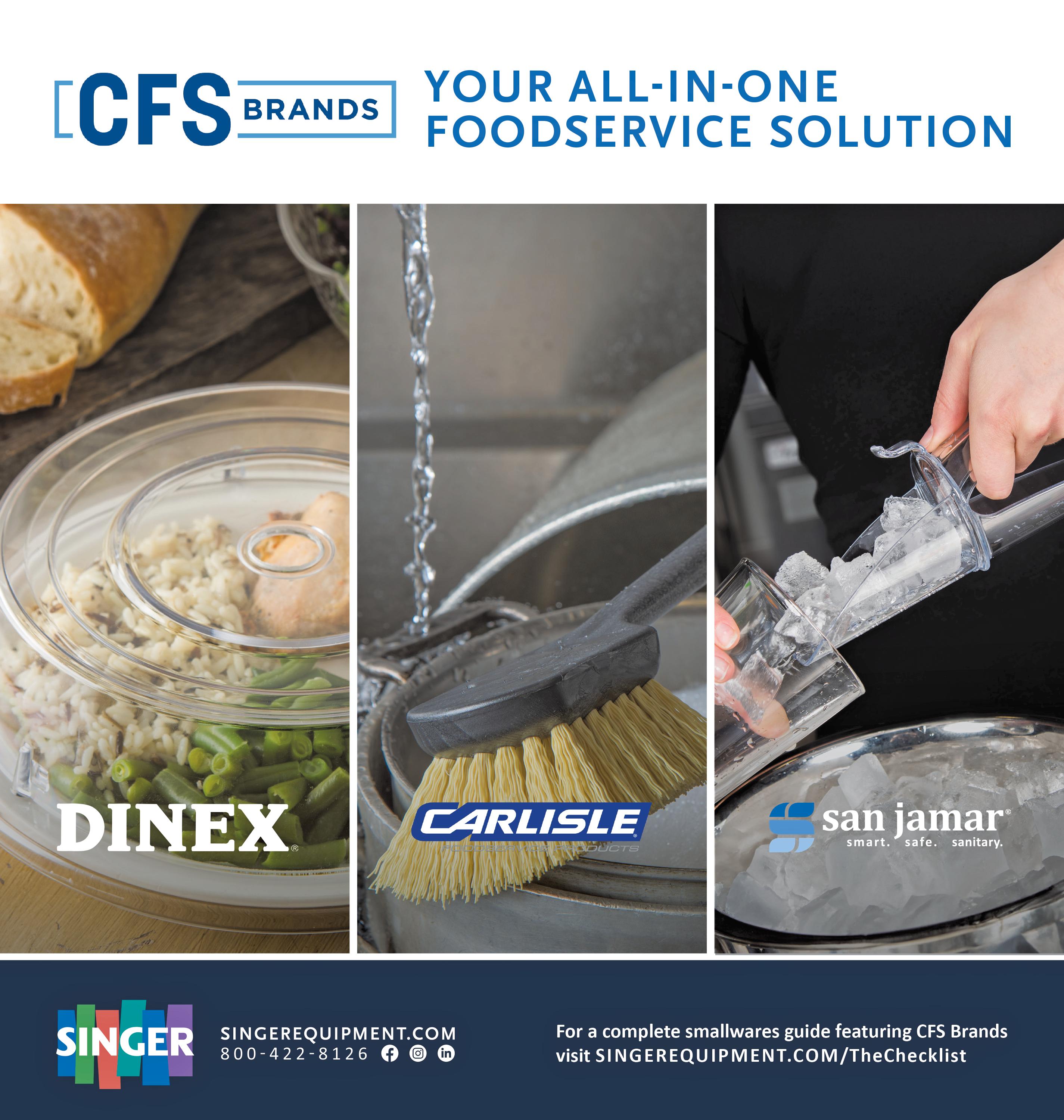
The Specialty Food Association has announced its keynote speakers for the 69th Summer Fancy Food Show: Chef Michael Symon, TV personality, author, and partner in POP Mustards, and Ben McKean, Founder and CEO of Hungryroot.
On Monday, June 30, Chef Symon will take the stage to present “Foodservice Trends, Food Network Stories, and Finding Your Path.” A cornerstone of Cleveland’s dining scene for more than two decades, and a mainstay of food TV for nearly as long, Chef Symon has headlined and appeared on megahit shows including The Next Iron Chef and The Chew building his brand as a soulful yet playful personality. With his latest foray into the CPG market, Chef Symon's journey has taken him to all corners of the food industry. The Fancy Food Show audience will get to hear the latest news about his new condiment line, POP Mustards, and the chef's unique perspectives on foodservice trends, the "secret sauce" of success in food, and more.
"I couldn’t be more excited to be a keynote speaker at the Fancy Food Show in New York
City,” said Chef Symon. “The food world has given me so much over the years, and to be part of an event that celebrates innovation, passion, and the people behind the plate—it’s an absolute honor. Can’t wait to share some stories, a few laughs, and of course, talk about what’s next in food!”
The story of Hungryroot, one of the fastest-growing food companies in the U.S., will come to life on the Main Stage in an inspiring keynote from McKean on Sunday, June 29. The founder and CEO will take the Fancy Food Show audience behind the scenes of the company's evolution from healthy food brand into a tech-driven grocery and recipe service. McKean will discuss the critical decisions that shaped the com-
pany, embracing the power of AI, unlocking sustainable, rapid growth, as well as how staying customer-obsessed and data-informed helped Hungryroot build a loyal community and stand out in an increasingly crowded market.
“Being at the Fancy Food Show is always a highlight for me—it's where innovation meets passion. Engaging with so many incredible brands and entrepreneurs reminds me why I started in this industry in the first place,” said McKean.
“In a moment of immense change and innovation across the food industry, we’re thrilled to welcome keynote speakers who demonstrate the power of evolving and adapting to change,” said Bill Lynch, SFA President. “Chef
Michael Symon and Ben McKean will bring unique insights and ideas from their careers to the Fancy Food Show Main Stage for the benefit of all participants.”
Featuring thousands of new specialty food products from around the world, educational programming, events, and networking opportunities, the Summer Fancy Food Show will run June 29-July 1 at the Jacob Javits Center in New York City. The Show is open only to qualified members of the specialty food trade, industry affiliates, and journalists.
To learn more and register for the Show, please visit https://www. specialtyfood.com/fancy-food-shows/ summer/
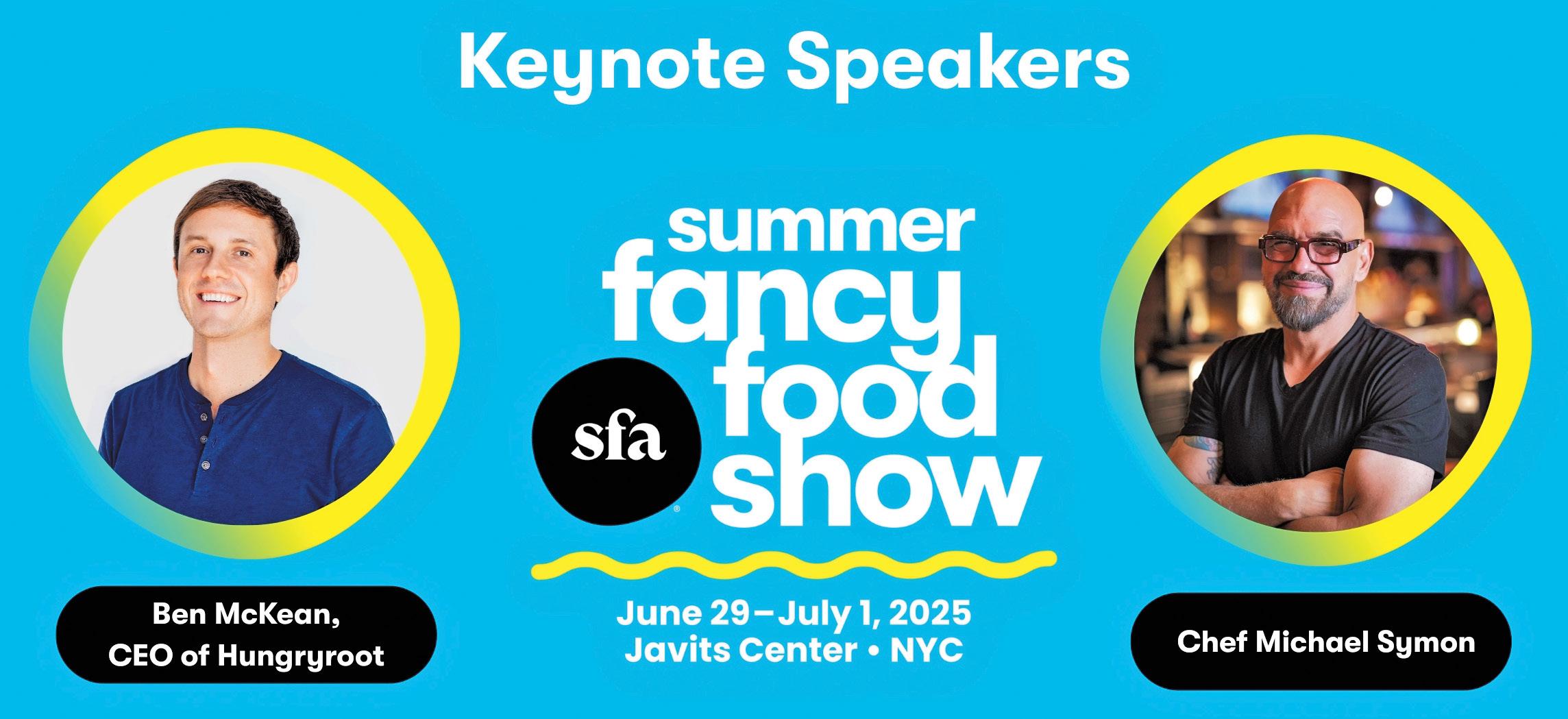

Walk into any restaurant kitchen, janitorial supply room, or foodservice warehouse in the U.S., and you’re likely to hear multiple languages spoken. Spanish, Creole, French, Tagalog, Portuguese—the list goes on. Yet, until recently, most training materials, marketing content, and even product labeling were only in English. At Imperial Dade, we realized that had to change.
With our deep roots in multicultural cities like New York and Miami—and now with operations across North America, including Quebec—we’ve learned that language inclusion isn't just about compliance. It's about respect, productivity, and building real connections with both employees and customers.
Our expansion into Canada in 2022 sharpened our understanding of what multilingual communication can achieve. In Quebec, French isn’t just a preference—it’s the law. We quickly adapted by delivering all public-facing materials in French, from marketing materials to the text on our delivery trucks. But we didn’t stop at legal minimums. Going bilingual in marketing built deeper trust with customers and our team. We saw firsthand how inclusive content isn’t just a checkbox—it’s a bridge.
Now we’re applying those lessons across the U.S., especially in regions where Spanish is a dominant language among workers.
Here are the numbers: about 45% of workers in the cleaning industry and nearly 30% of back-of-house restaurant staff in the U.S. speak Spanish as their first language. That’s a massive popula-
tion relying on clear, accessible communication to do their jobs safely and effectively.
We've started translating all marketing materials and training content into Spanish. This includes a Spanish-language YouTube playlist, where we’re filming our most popular how-to videos with native Spanish-speaking experts.
We could dub or use subtitles, but that only goes so far. Speaking directly to your audience in their own language—with cultural context and nuance—makes a difference. It’s more human, and it resonates.
Let’s talk about the entire facility. In a kitchen, proper sanitation procedures must be crystal clear—especially in fast-
A welcome wall in our will-call area features greetings in over 15 languages. These aren’t just design flourishes. They signal to our team and visitors that everyone is valued.



Laura Craven is the Vice President, Marketing at Imperial Dade, a North American distribution company headquartered in Jersey City, NJ. Her responsibilities include marketing communications, brand and reputation management, experiential marketing events, and media relations. Laura has been with the company for over 20 years and has contributed to the organization’s growth and brand awareness. A LEED AP, Laura consults on sustainability initiatives and as a GBAC Trained Technician she assists customers develop cleaning programs.
paced, high-risk environments. Labels on chemicals, instructions for use, and safety protocols need to be understood instantly. If those messages are only in English, there's room for error.
The same applies in restrooms, where cleanliness and hygiene directly affect guest perception. Whether it’s signage on handwashing, refilling dispensers, or maintaining inventory, every instruction must be accessible. Dining areas, too, benefit from multilingual signage for front-of-house staff managing setup, cleaning, or guest communication.
In our newest facility in Hialeah, FL, our interior signage includes English, Spanish, Creole, and more. Our mission statement and safety protocols are displayed in multiple languages. A welcome wall in our will-call area features greetings in over 15 languages. These aren’t just design flourishes. They signal to our team and visitors that everyone is valued.
We’ve also brought this thinking to industry events. At the BSCAI Executive Management Conference, we participated in Emprendiendo en la limpieza, an event focused on Spanish-speaking cleaning entrepreneurs. The entire afternoon was presented in Spanish, and our bilingual staff engaged directly with attendees.
When we host events, we make sure at
continued on page 118

Chef Avishar Barua has graced TV screens as a contestant on “Top Chef” and “Beat Bobby Flay,” has been lauded by the likes of Bon Appetit and Food & Wine magazines and was even named a James Beard Award semifinalist earlier this year.
But the accolade that fuels his fire is much simpler: hearing from guests that they had a great experience at one of his restaurants.
“The most fulfilling part of my work is the reality that our baseline job is always to make someone else’s day better,” Barua said. “There’s so many things going on in the world, and if we can make someone’s day for just a few seconds, then we’ve done meaningful work.”
Barua, the son of Bengali immigrants, grew up in Columbus, Ohio, raised on his mom’s home cooking. Food was a core part of his childhood, but it wasn’t until he was finishing up dual degrees at Ohio State University that he first saw it as a passion and a viable career path.
Learning to cook for himself and friends led him to abandon dreams of becoming a doctor and instead pursue culinary school. Despite the grueling hours and culture, he knew he wanted to bring joy to others with food as his mom had done for their family and community.
After a stint in New York’s food scene (at WD~50 and Mission Chinese Food), he returned to his hometown, and in 2022 opened two restaurants, the finedining, live-fire establishment Agni in Columbus and the smaller café Joya’s in nearby Worthington, Ohio.
Why Columbus, a mid-size Midwestern city that doesn’t have the prestigious food culture or clientele of say, a New York or Chicago?
“I think there's two ways to look at it.
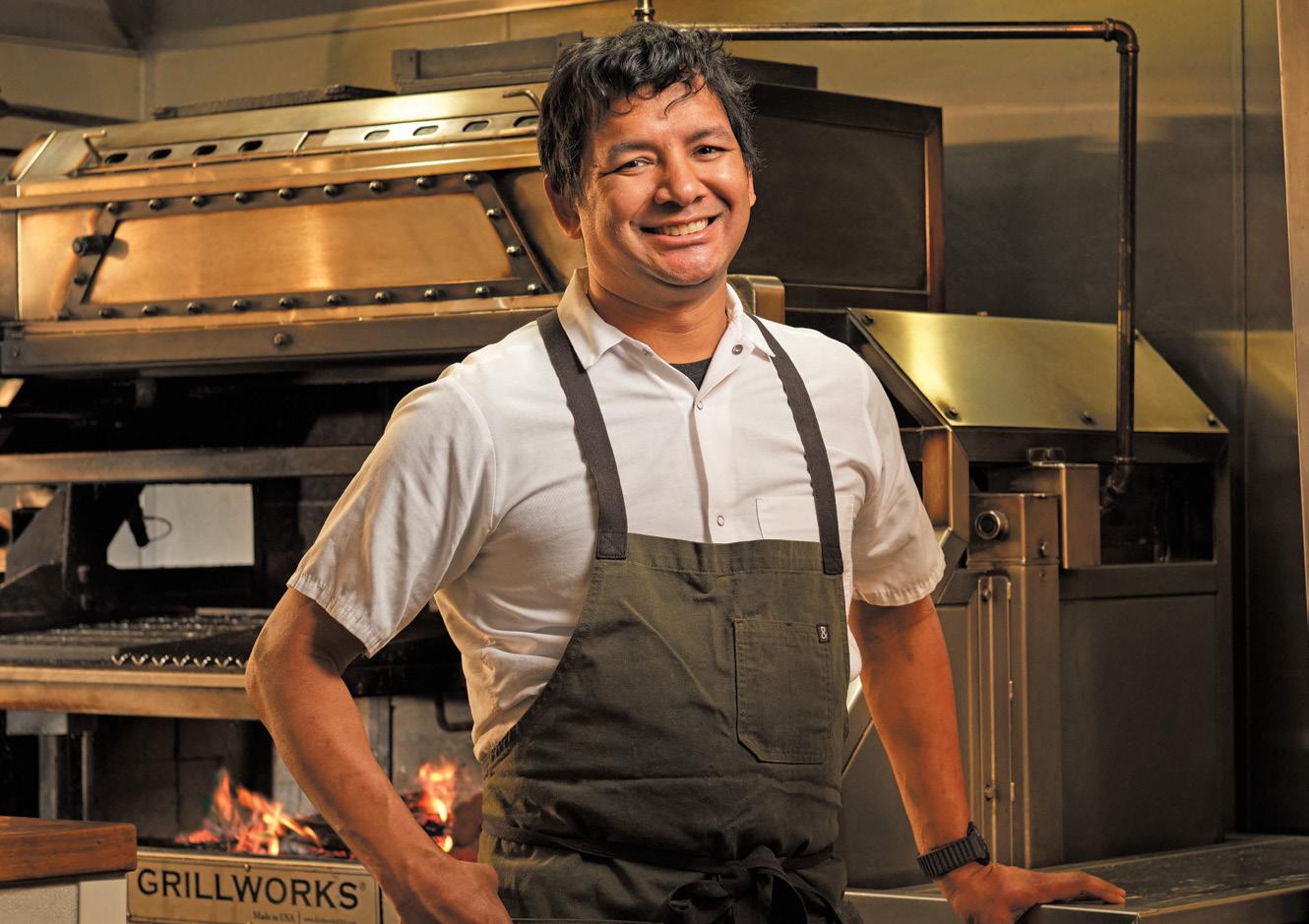
You can go to a city that has made an impact, or you can try to be a part of the change that makes a difference in your home,” he said.
Here, he can be a trailblazer, not only for the city’s food offerings but for local up-and-coming chefs. He appreciates the close-knit community of food and drink makers that he’s helped cultivate here.
Columbus’ relative “blank slate” is a chance for Barua to experiment, play and innovate. He and his team take their inspiration from anywhere and everywhere: childhood, world travels, even favorite fast food items.
It’s a high-low, global-local fusion that reflects Barua himself. “The thing about food right now is that we get to use ourselves as an ingredient,” he said. “Each of our restaurants is sparked by nostalgia or a memory that kind of holds dear to us, something that never changes. Agni is inspired by the fun of a backyard barbecue. Joya’s is a representation of my mom.”
Agni’s current menu is billed as a cu-
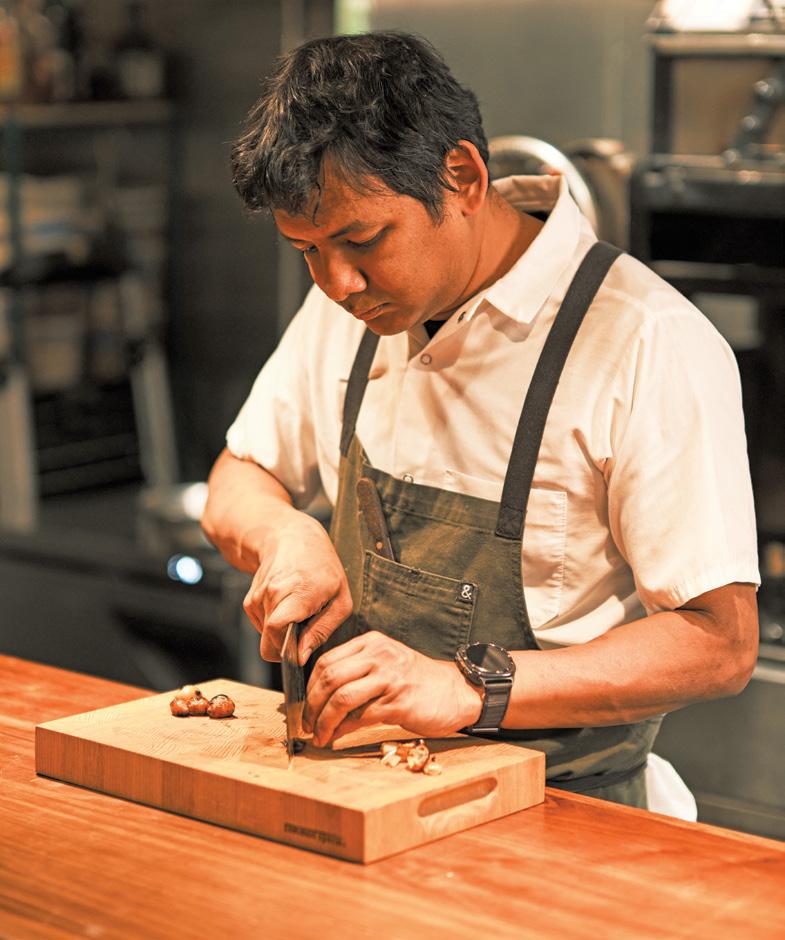
linary journey around the globe, with tastes of Montreal, Bangkok and even Cincinnati, among others. That free-spirited approach to fine dining has made Barua’s style hard to categorize.
“Nobody else can really tell us who we are,” he said. “That’s kind of cool because it lets us do whatever we want. We can draw from five different cultures and make something novel. That's awesome because it's genuine to us.”
Just as important as the flavors he presents are the feelings he wants his food to inspire. It’s not just about recreating a cherished recipe from childhood but recreating the sensation of taking that first bite and the warm, comforting feeling that comes with it.
Even the tableware can be part of the experience. For example, Libbey’s Hedonite pattern plays a role in a Thai-inspired dish, with colors that call to mind plates he saw in Asia. “I like engaging all of the senses,” he said.
For Barua, creating that moment of connection is what it’s all about. “They
didn’t say the food was the best, they didn’t say the service was the best, they said they felt welcome. That’s pretty awesome.”
It all comes together in an experience
Barua has dubbed “seriously fun” eating: unpretentious food that boasts culinary school credentials, made with care and served with genuine Midwestern hospitality.
“My fire is fueled by community, staff and family,” he said. “I think it’s so amazing that we get to be in an industry where we get to represent culture, we get to represent food and history, and we get to reinforce what makes Ohio great.”
Two years on, Joya’s and Agni are still earning buzz. And Barua is still joyful he can serve his community doing what he loves.
“Food can solve many of the problems in the world,” he said. “Just a little bit of conversation over a meal can make all the difference.”
Read more chef stories at https:// libbeyfoodservice.com/fuel-your-fire
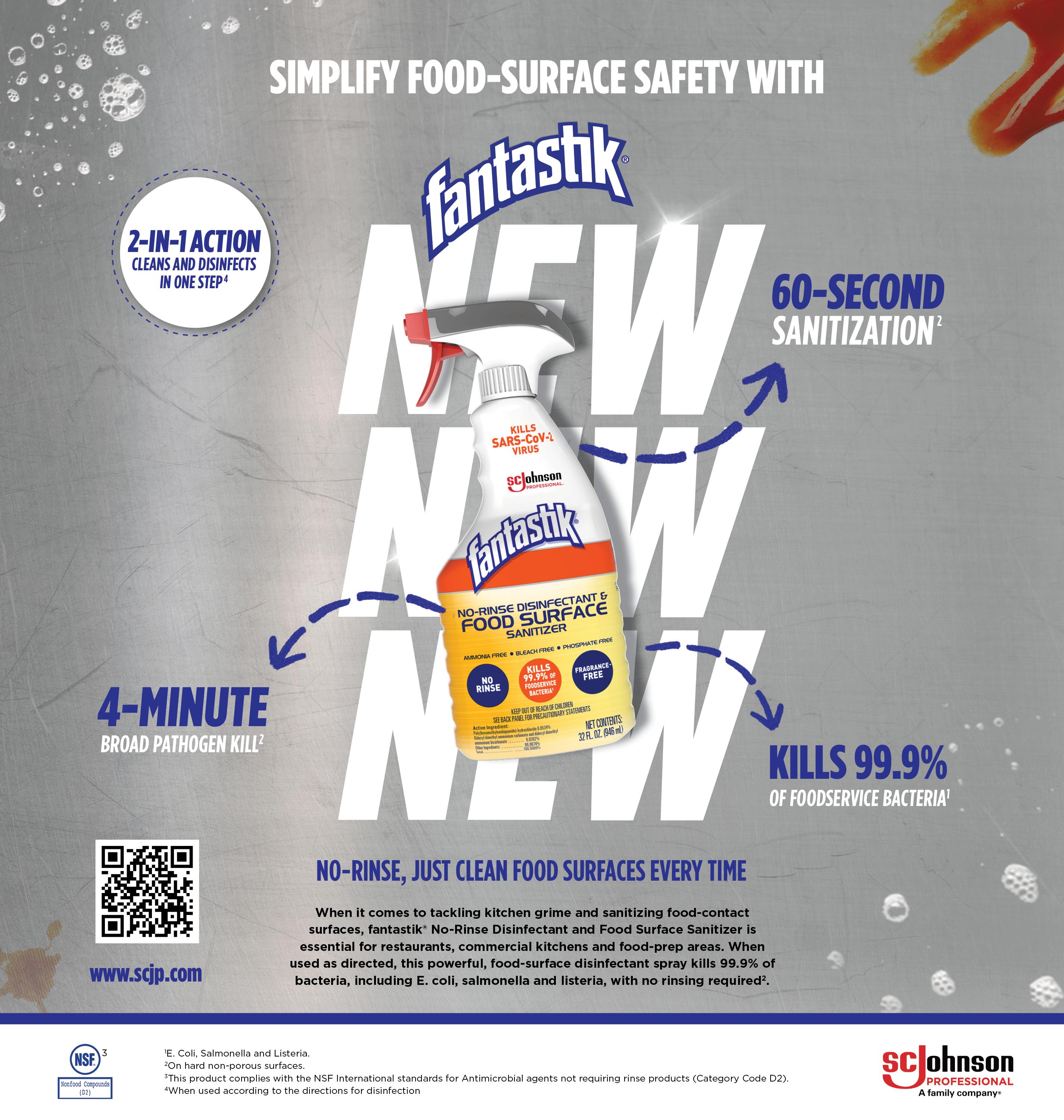
Brand perception is crucial for any restaurant. As discussed in an earlier article, the most significant ingredient in building your brand is your restaurant: the food, service, and ambiance. Equally as important are your customers’ experiences and subsequent word-of-mouth feedback. But what about a potential customer trying to get to know you? How do you grow your brand beyond your local community?
Let’s examine an essential part of the brand-building recipe: your online presence. The combination of your website and social media is critical to how your brand is perceived by potential customers. Unfortunately, many restaurateurs struggle to find the time and energy to create websites or manage social media platforms, so they adopt a get-by attitude, and the platforms do not come close to reflecting their desired brand. For your brand’s sake - don’t do that! Creating a website can be simple. You can begin by choosing a template from the numerous DIY website builders available. Make sure it includes essential features such as a menu, a reservation system, your location, and an option for
online ordering. Add appealing stock photos of food and personalize the site with your logo. With this approach, you can have your website up and running in just a few hours!
However, building your website this way would be akin to serving Chicken Piccata frozen dinners from the grocery store at your restaurant. It's not something you would consider serving, so why create a website that doesn't truly reflect your brand, highlight your food, or share your story? You can create a fantastic website using a DIY template, but a custom site may be the best answer. Whether template or custom, it's essential to focus on enhancing your brand. Be as creative in telling your story as you are with the food you serve. While it may require more effort and you might need to hire a professional for assistance, the investment will be worthwhile! Here are a few ideas to help you get started.
Focusing on the Sensory Experience Immersive Visuals: The focus should be on using high-quality images of your food and restaurant. Stock images can be used wisely for artistic effects that enhance your brand's look and feel. How-
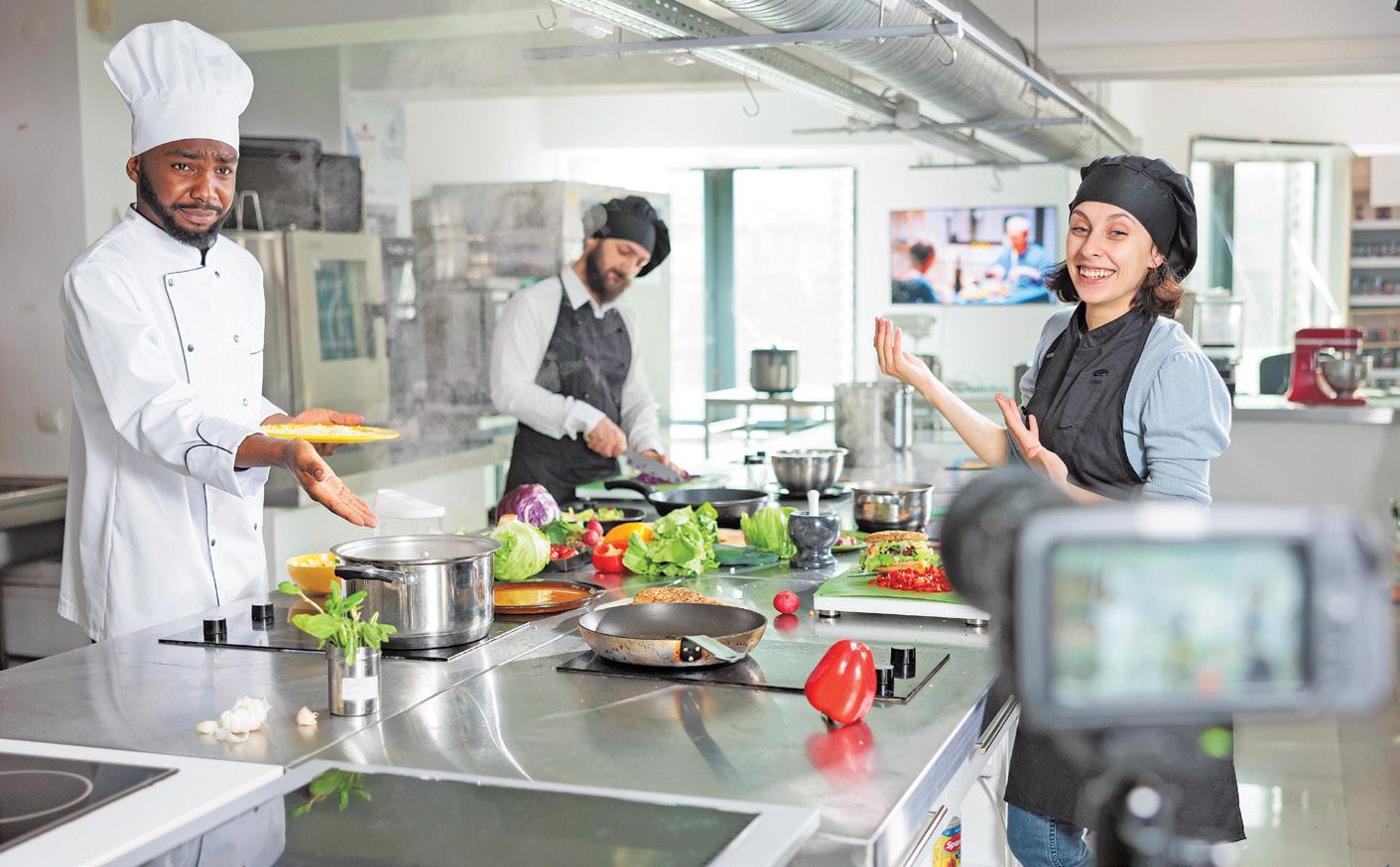
ever, please avoid using stock photos to represent your food! Consider using the next level in storytelling. In today’s TikTok world, instead of just static photos of dishes, invest in short, high-quality video clips showcasing the food being prepared, the sizzle of a pan, the steam rising from a bowl, or even a quick pan of the restaurant’s ambiance during different times of the day. Think about ASMRadjacent content that makes mouths water.
Interactive 360° Tours: What if visitors could virtually walk through your restaurant? This gives them a feel for the layout, décor, and overall vibe, helping them decide if it's the right place for their next meal.
"Sound of the Restaurant" Playlist: Curate a short playlist of the music typically played in the restaurant and embed it on the site (with an option to mute, of course!). This adds another layer of sensory connection.
Building Community and Personal Connection:
“Meet the Team" Stories: Go beyond just names and titles. Feature short interviews or profiles of the chefs, servers, and even long-time patrons. Share their passion for food and the restaurant’s story. This humanizes the brand.
Local Spotlight Blog: Regularly feature local farmers, producers, or artisans whose ingredients are used in your dishes. This will highlight your restaurant's commitment to the community and provide interesting content for locals, while elevating your brand.
Interactive Recipe Teasers: Share snippets or key ingredients of upcoming seasonal dishes to encourage anticipation and repeat visits. Maybe even a "guess the ingredient" contest on social media linking back to the website.
Personalized Welcome Messages: If a user has ordered online before or made a reservation, the website could display

Sam Barnett is the Founder of Brand Think Plus LLC, a consulting agency dedicated to helping clients with brand development and everyday marketing challenges. With over 40 years of experience in marketing and brand building across the foodservice industry and other sectors, Sam brings a wealth of knowledge to his clients. Before founding Brand Think Plus LLC, Sam co-founded Creative Energy in 1992, serving as Vice President and Marketing Strategist until 2008. From 2008 to 2024, he established Barnett and Associates, specifically working for Creative Energy. During this time, Sam managed accounts for major clients such as The Coca-Cola Company, Johnsonville Sausages, Hoshizaki, Olé Mexican Foods, Flat Technologies, Winston Industries, and many other companies in the foodservice sector. Brand Think Plus LLC was formed to assist businesses, both large and small, in discovering the right strategies for building strong brands. So, if you're interested in talking about branding or Brunello, feel free to reach out to Sam; he would be happy to chat with you. BrandThinkPlus.com • sam@ brandthinkplus.com
a personalized welcome message like, "Welcome back, [Name]! Ready for your usual?" You can do this utilizing that other kind of cookie (smile)!
You Can Add Extra Seasoning by En hancing Functionality:
Dynamic Menu with Dietary Filters: Offer a visually appealing menu that allows users to filter by dietary restrictions (vegan, gluten-free, allergies) easily with clear and concise labeling.
Interactive Wine Pairing Suggestions: For each dish, offer a recommended wine pairing with a brief explanation of why they complement each other.
Real-Time Table Availability (if applicable): Integrate a live booking system that shows current table availability, making reservations seamless.
"Flavor Profile" Descriptions: Incontinued on page 105

Every year on May 20th, the global food community honors World Bee Day—a call to protect the pollinators that help feed our planet. This year’s theme, “Bee Inspired by Nature to Nourish Us All,” challenges chefs, foodservice leaders, and innovators to take meaningful steps toward ecological harmony.
And the data is clear: in the past year alone, up to 62% of managed U.S. bee colonies were lost, as reported by AgNet West. From pesticide exposure to climate change, bees are under immense pressure—and the foodservice industry has a chance to lead the shift toward pollinator-safe practices.
One simple, high-impact solution? Replacing traditional honey with plant-based alternatives that are beefree, functional, and delicious.
• Mindful FÜD: Bee‑Mindful Hunnie—Sweetness with Purpose
At the forefront of this sweet revolution is Mindful FÜD, founded by Co-Founder and CEO Venessa Stonehouse, a passionate food systems leader based in Canada. Their flagship product, Bee - Mindful Hunnie, is a certified organic vegan honey made from rescued organic apples that would otherwise be discarded.
During our Plant’ish Live World Bee Day interview, Venessa shared:
“I didn’t just want to create a product—I wanted to create a standard … One that shows we can nourish people and the planet at the same time.”
Today, Bee - Mindful Hunnie is available in over 500 stores across Canada and used by more than two dozen foodservice operators and CPG
brands in their recipes and product lines. The product performs as a 1:1 replacement for traditional honey, making it a drop-in solution for sauces, beverages, baked goods, and more.
Mindful FÜD offers:
• Wholesale formats for commercial kitchens and cafes (1 kg jars)
• Private-label options for retail and foodservice
• A growing footprint in the U.S. distribution space Website: mindfulfud.com
• Mellody by MeliBio: Real Honey, Reinvented MeliBio, co-founded by former European honey industry expert Darko Mandich, developed Mellody—the world’s first molecularly identical plant-based honey.
Using precision fermentation, Mel -
iBio programs microorganisms to grow the exact enzymes and aromatic compounds found in traditional honey. These are then blended with plantbased carriers to deliver honey’s signature texture, golden hue, and floral complexity—without any bees. Noteworthy features:
• Performs identically to honey in cooking, baking, glazes, and beverages
• Available in bulk and B2B formats
• Mellody’s hot honey variant was developed in partnership with Eleven Madison Park
• Every jar helps offset the impact on approximately 20,000 honeybees, the average size of a commercial hive Website: melibio.com
continued on page 109
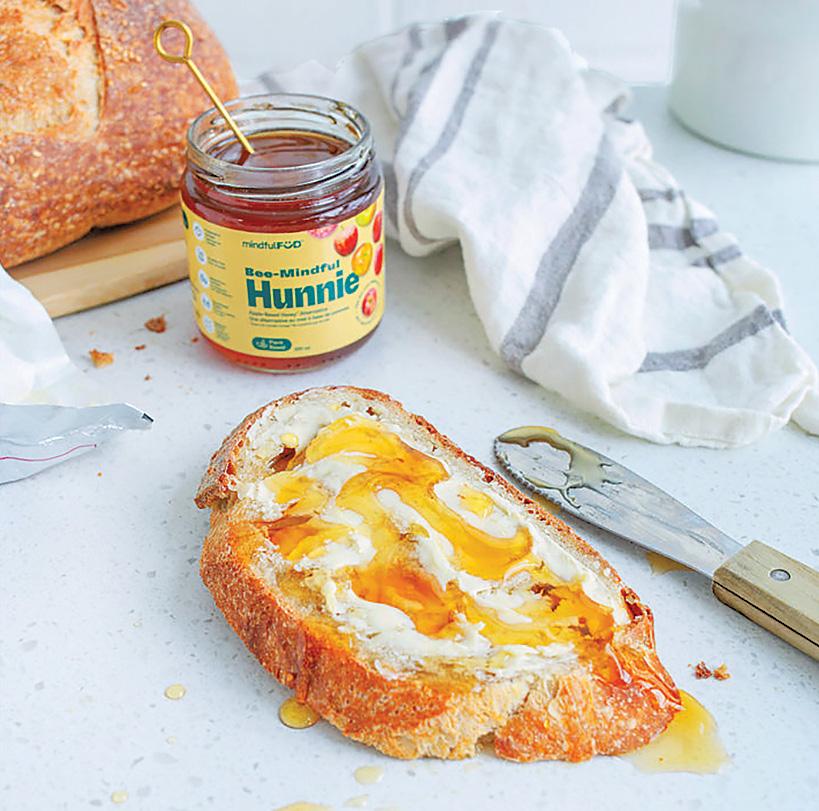

Chef Nina Curtis is a celebrated professional in plant-based cuisine, named one of the 25 Top Women in Foodservice and Hospitality for 2024. With over two decades of culinary excellence, she has redefined the possibilities of plant-based cuisine, earning widespread acclaim from vegans and non-vegans alike. In 2020, she was honored as America’s Top Hospital Chef, highlighting her commitment to health and flavor. In 2023, Chef Curtis curated a historic plant-based menu for a White House State Dinner at the invitation of First Lady Dr. Jill Biden, honoring Prime Minister Narendra Modi. This groundbreaking event showcased her ability to elevate plant-based cuisine to luxurious heights.As the Director and Executive Chef of Plant’ish & Co. Culinary Arts, Chef Curtis continues to innovate and inspire through her delectable creations and leadership. Her role in the American Culinary Corps, a James Beard Foundation and State Department initiative, underscores her dedication to culinary diplomacy and cultural exchange. Chef Curtis’s influence extends beyond the kitchen. She is a passionate advocate, sharing her expertise through captivating dining experiences and enlightening lectures, inspiring culinary professionals and enthusiasts worldwide with her imaginative and nourishing creations. Learn more at chefninacurtis.com
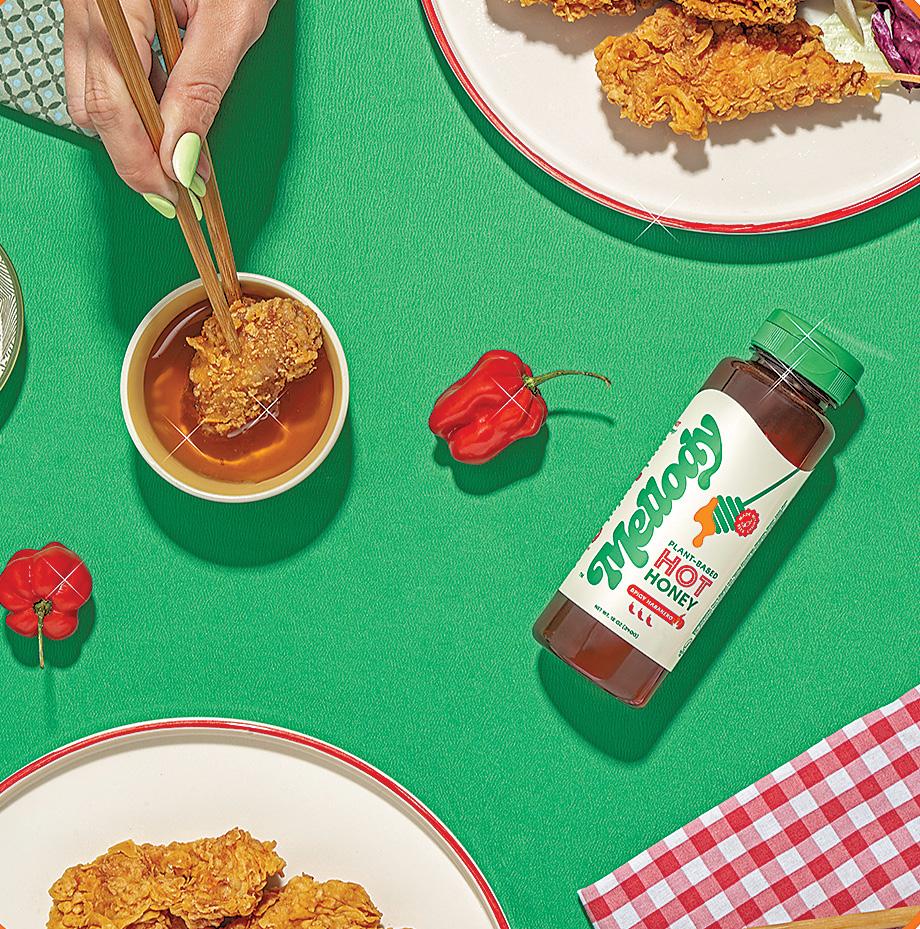

In the world of restaurants and foodservice, design details matter—often more than operators realize. The menu, as one of the most handled and examined items in any establishment, plays a powerful role not only in guiding guest choices but in shaping the perception of the entire brand. Yet, too often, the menu design strategy is treated as a one-and-done task instead of a core element of a restaurant’s ongoing growth plan.
That’s where Jason and Nadine Brown come in. As the founders of Taste Envy, they’ve built a national reputation helping restaurants and foodservice operations reimagine how their menus can drive profitability, brand alignment, and customer engagement. Taste Envy evolved from their original venture— Lost Luggage—a company known for award winning branding and exquisitely handcrafted products. "Taste Envy grew from our relationship with restaurateurs and the need for well-branded and designed menu covers," Nadine Brown said. "We believe the menu is an extension of the restaurant’s brand."
The Browns don’t just think about menu design as aesthetics. They see it as strategy. Menu engineering—when done right—is about optimizing how items are presented to influence choices, manage food costs, and reinforce the restaurant’s identity. It starts with understanding the brand’s goals, then building a system that supports those goals with intentional design.
Operators aiming to revamp their

menu strategy should start by assessing their current menu content through the lens of data. Which items are top sellers? Which ones deliver the highest margin? Which items are popular but dragging down kitchen efficiency? A solid engineering strategy uses that data to group and position dishes strategically—whether it's promoting high-margin items through placement, typography, or visual framing.
"Just as careful consideration would


be put into the interior design of a space, the menu should communicate the same feeling through texture, color and layout," Nadine Brown noted. Developing a strategy means syncing interior decor, brand tone, and product mix. It also means identifying seasonal rotation plans, pricing strategies, and formats that are scalable and adaptable over time.
Once a strategy is outlined, the next step is researching and vetting poten-
“Spending a large budget doesn’t guarantee you’ll get a product that lasts or communicates your brand effectively, Instead, understanding your brand and making informed decisions is what matters.” — Nadine Brown
tial providers who can execute it costeffectively. This isn’t just about finding a printer or a freelancer. It’s about partnering with a provider who understands hospitality, who asks the right questions about your brand goals, and who can offer flexibility in materials, production time, and support. "Many of our products offer ease of use, which saves time on in-house labor and increases ROI year over year," Jason added.
Operators should avoid vendors who offer cookie-cutter templates or who prioritize fast production over thoughtful consultation. “If you buy quality up front,” Jason said, “not only will your investment last longer, but it will show your customers that you care about continued on page 110
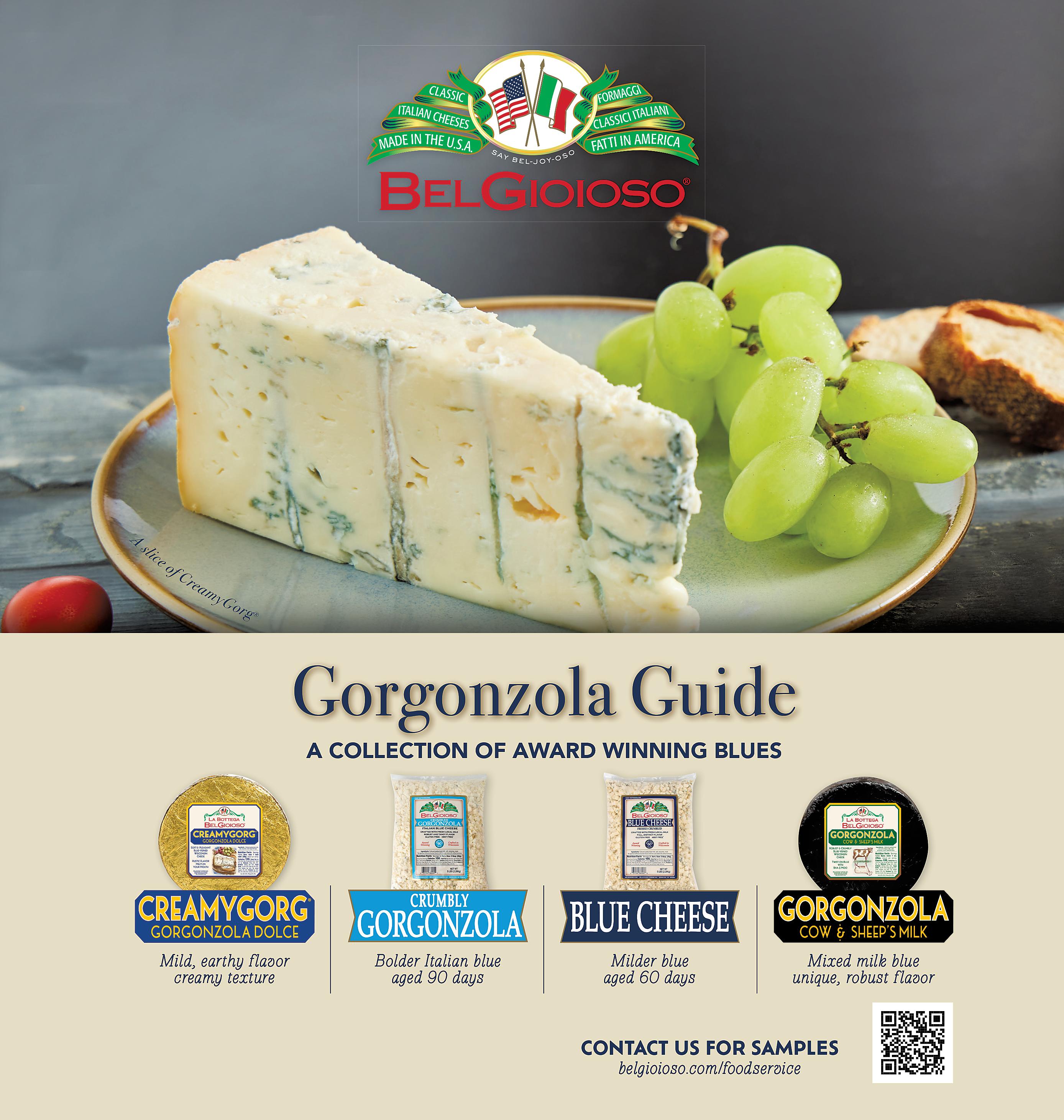
The ever-increasing cost of food ingredients is a significant challenge for restaurants and foodservice operators. Balancing the need to maintain highquality, flavorful offerings while managing tighter budgets requires creativity and strategy. Chef Brad Walker of Barilla for Professionals shares insights on how operators can navigate this landscape without sacrificing taste or customer satisfaction.
Before joining Barilla for Professionals, Chef Brad Walker spent years working in the restaurant industry, including running his own restaurant in Washington, DC. His extensive experience also includes working with large chains, giving him a comprehensive perspective on the challenges operators face, from independent establishments to high-volume operations. Chef Walker noted, “Running a restaurant taught me the importance of consistency and quality, espe-
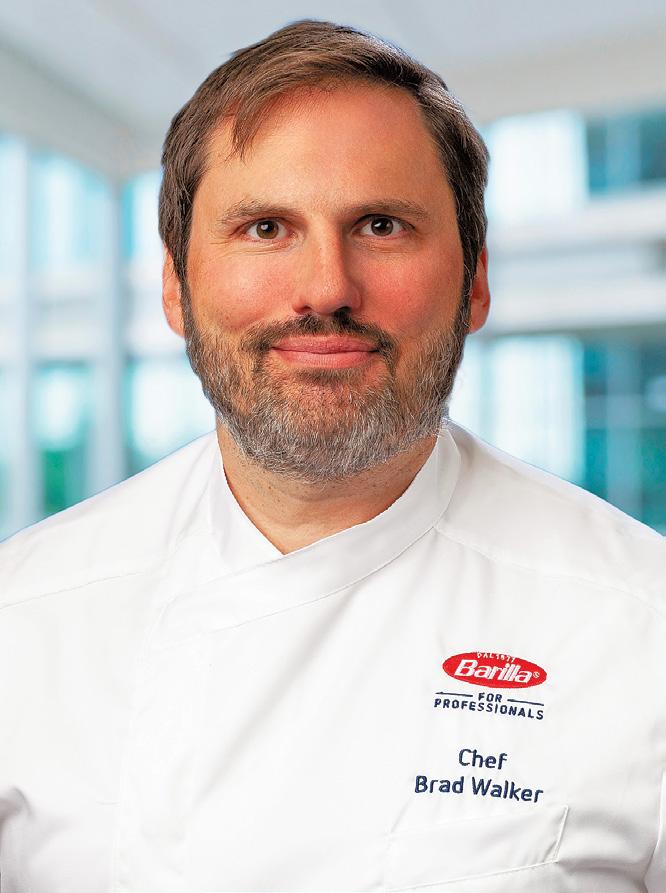
cially when working with tight budgets and high customer expectations. When you’re managing both a small business and a large-scale operation, the ability to rely on consistent products is crucial. That’s why I’m passionate about helping operators find solutions that work no matter the size of their business.”
Chef Walker’s recipe for a restaurant’s success includes menu items like Mac & Cheese, a versatile and beloved comfort food that offers many creative menu opportunities. So much so that it’s the #1 pasta dish on menus! (Datassential, 2024) Its adaptability allows operators to create both traditional and innovative dishes, combining different flavors and textures. Chef Walker noted, “Mac & Cheese’s popularity makes it an ideal choice for adding variety while managing costs.”
Operators appreciate how easily Mac & Cheese can be elevated with highquality ingredients or kept simple to maintain budget-friendly pricing. It’s a labor-friendly crowd-pleaser that can fit any menu style. As many operators have found, Mac & Cheese can be customized with premium ingredients like lobster, truffle, or specialty cheeses, or served traditionally with classic cheddar. Chef Walker added, “Mac & Cheese is a menu item that appeals to just about every guest and allows operators to differentiate their menus creatively with

both high-end and familiar ingredients. Also, it’s not just about the ingredients but how they are presented. Adding texture through crispy toppings or balancing flavors with acidic or spicy elements can make even a basic Mac & Cheese dish feel special.”
Creativity and differentiation will fall flat without quality and consistency, the two most vital ingredients for operators – which is why Barilla for Professionals is passionate about both. Using only the highest-quality ingredients, their pasta is dependable even during peak times. It doesn’t break, doesn’t stick, and always
“Mac & Cheese is a menu item that appeals to just about every guest, and allows operators to differentiate their menus creatively with both high-end and familiar ingredients.” — Chef Brad Walker
maintains that perfect al dente texture. Whether used in creative appetizers like deep-fried Mac & Cheese balls or baked dishes, Barilla pasta holds its shape and perfectly carries sauces.
Incorporating pasta into innovative dishes means considering the latest cooking technology as well. Chef Walker emphasized that modern equipment, like high-heat ovens and rapidcook systems, requires pasta that holds up under pressure. Barilla’s pasta is crafted to withstand aggressive cooking techniques, maintaining texture and quality even when baked or cooked at high temperatures.
Chef Walker also suggests incorporating lighter, more seasonal elements into Mac & Cheese dishes, especially during summer. “Using white cheddar or incorporating roasted vegetables like spring onions can keep the dish balanced while
continued on page 113
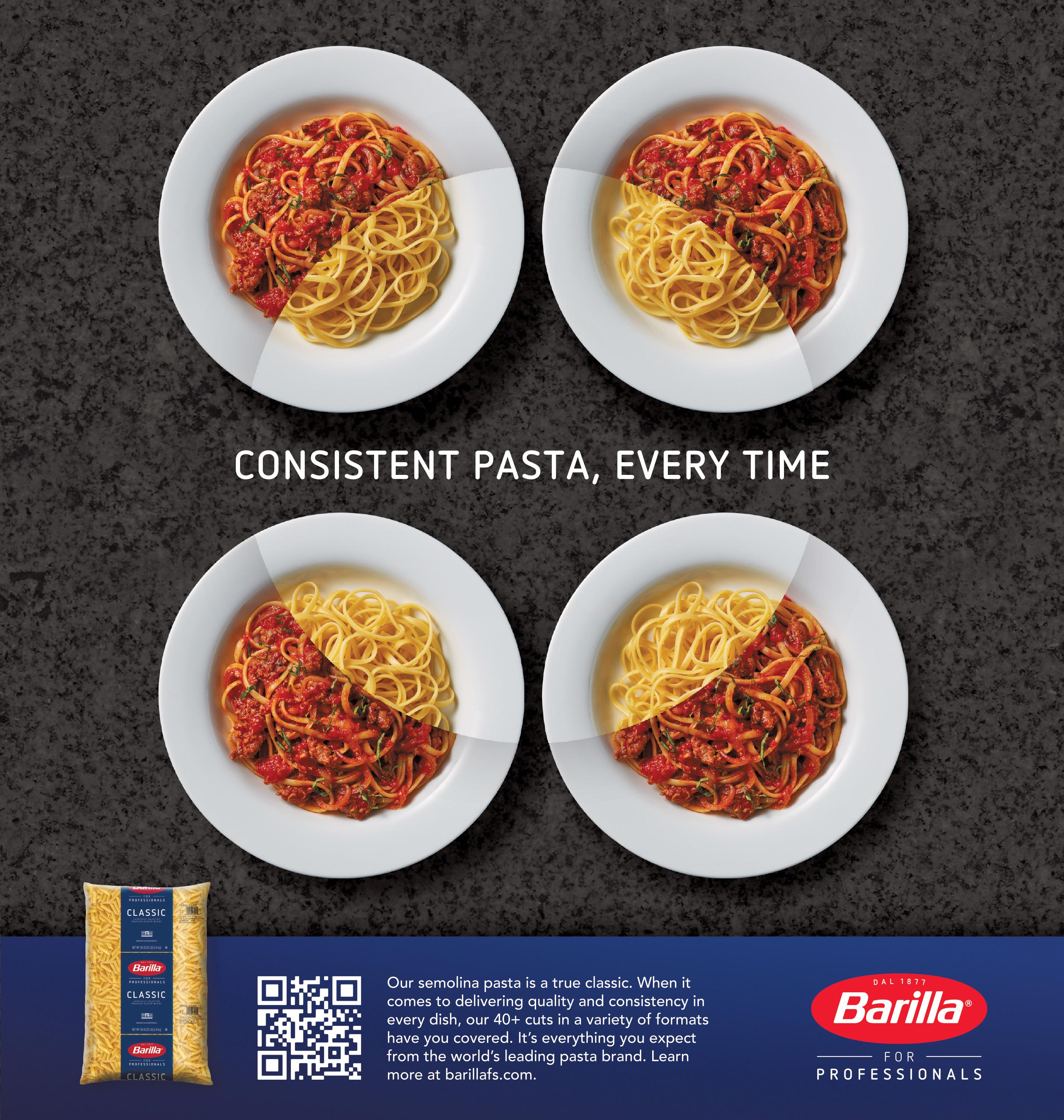
Foodservice operators looking to maximize revenue with a BBQ-focused menu must think strategically about dayparting. Breakfast, lunch, and dinner present unique opportunities to feature barbecue in ways that suit customer expectations and operational efficiencies. According to Chef Chris Gatto and Chef Greg Schweizer of Ken’s Foods, the key lies in versatility and creative utilization of ingredients, especially when incorporating sauc-
es like Sweet Baby Ray’s® and Ken’s® Barbecue lines.
BBQ breakfast might sound unconventional, but it’s gaining traction, especially in regions where barbecue culture is strong. In Texas, for example, breakfast tacos with brisket or pulled pork are common. Chef Greg Schweizer noted, “When you think of breakfast, it’s often grab-and-go, lower price point, but there’s definitely room for BBQ to offer something unique without overwhelming the


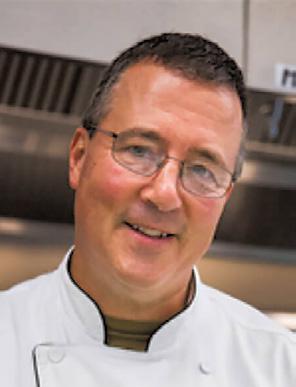
morning crowd.”
Chef Schweizer, who has spent considerable time exploring Texas BBQ culture, sees the state as a leader in incorporating barbecue into breakfast. He pointed out that in Central Texas, Brisket Benedict, breakfast skillets with pulled pork, or even breakfast tacos are not uncommon, reflecting the deep-rooted barbecue tradition. “It’s more than just ribs and sandwiches,” Schweizer explained.
Sweet Baby Ray’s® offers eight distinct barbecue sauces, each designed to cater to different flavor profiles and applications. The lineup includes the iconic Original, Sweet & Spicy, Honey Barbecue, Hickory Brown Sugar, Citrus Chipotle, Mustard-Based Golden Barbecue, Korean Barbecue & Wing, and a No Sugar Added Original Barbecue Sauce. This variety allows foodservice operators to experiment creatively while maintaining consistency.
Chef Schweizer noted, “With eight different flavor profiles, you can develop multiple dishes that feel unique yet maintain a common thread. Whether it’s using the Hickory Brown Sugar sauce on ribs or incorporating the Mustard-Based Golden Barbecue into a breakfast sandwich, the versatility is endless.”
Ken’s Cannonball Barbecue Sauce is another standout in the lineup, known for its rich, smoky profile and slightly sweet finish. It has become the second best-selling BBQ sauce in Ken’s Foodservice, just behind Sweet Baby Ray’s. Chef Chris Gatto noted, “Cannonball
Chris Gatto, Corporate Executive Chef (CEC), brings a unique blend of manufacturing expertise and operational insight to his role as Corporate Executive Chef, enabling him to craft culinary solutions that cater precisely to customers’ needs while ensuring they are practical for execution at the unit level. With an Associate Degree in Culinary Arts, a Bachelor’s in Food Marketing, and a Master of Arts in Teacher Education, Chris combines a strong academic foundation with real-world experience. As a Certified Executive Chef with the American Culinary Federation and an active member of the Research Chefs Association, he remains at the forefront of industry trends and innovations. Chris’s passion for creating scalable, high-quality dishes and his ability to understand both the culinary and business aspects of foodservice make him an invaluable leader in the field.
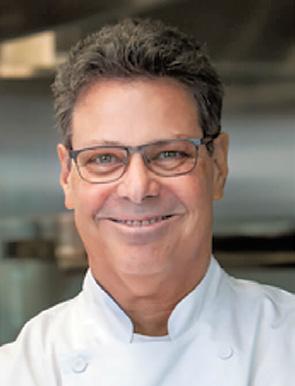
Gregory Schweizer, Corporate Executive Chef, is devoted to delivering high-quality culinary solutions through knowledge, strategy, and innovation. His extensive training includes studies at the Culinary Institute of America (CIA), Le Istituto Culinario de Toscano, Halliburton Institute of Technology, Eckerd College Management Development Institute, Darden University, and the Applebee’s Leadership Institute. Chef Greg’s comprehensive experience reflects his commitment to excellence in every aspect of the culinary industry.
has a bold flavor that works well with hearty dishes, from brisket sandwiches to BBQ baked beans. Its consistency also makes it perfect for glazing ribs or using as a dipping sauce. Operators appreciate how it complements both
continued on page 116

June is the perfect time to talk about what is essential to enhancing the dining experience and attracting customers for Summer 2025. Industry professionals from across the country share the trends you need to know about that may impact your business for what you buy, sell, and serve.
"Summer dining is all about light, fresh ingredients like tomatoes, with a focus on infused oils, marinades, and aromatic salts, while reducing heavy sauces and butter. The goal is to create memorable, satisfying meals that leave you feeling light, keeping customers coming back, like family."
- Executive Chef Danilo Galati, Olio E Piu NYC
"Summer brings bright, colorful ingredients with a fun twist—it is an opportunity to use fruits in savory dishes. The season also offers more options for fresh seafood, as fishing is easier in the warmer months. Some more ingredients that many chefs will be utilizing include citrus fruits, peaches, almonds, and melons.” - Chef Hector Diaz, La Grande Boucherie
“Hyperlocal is evolving beyond farm to table. Guests are craving wild foraged ingredients, heirloom grains, and flavors that tell a story of place and season. Expect to see more locally sourced mushrooms, native berries, and artisanal grains on menus, bringing a unique sense of terroir to each dish.” - Director of Food and Beverage TJ VanRhee, JW Marriot Grand Rapids
“Raw bar options will be all the rage for summer – I expect that tuna tartare and fresh oysters will be flying out the doors! I also anticipate light fish dishes like our Seabass and Salmon to be

extremely popular, and fresh pastas and fruit-forward salads – such as our Strawberry Fields – are always a musthave during the summer months.”Executive Chef Adam Fiscus, Central Park Boathouse
“The trends that we see unfolding this year are diners choosing quality over quantity; more comfortable, casual dining experiences being chosen over fine dining, and chefs looking to more traditional dishes but with a fresh spin for menu inspiration.” - Director of Food & Beverage Krysta Pe -
terson & Executive Chef Steve Hamilton, Alma Hotel
“When looking at summertime desserts, seasonal, fresh and bright flavors are always popular. This season is a really great opportunity to serve desserts that are less sugary, and utilize quality, local ingredients. Some of my favorite fruits to use in summer desserts are lemon, lime, pineapple, and passionfruit. Especially after enjoying French cuisine – which tends
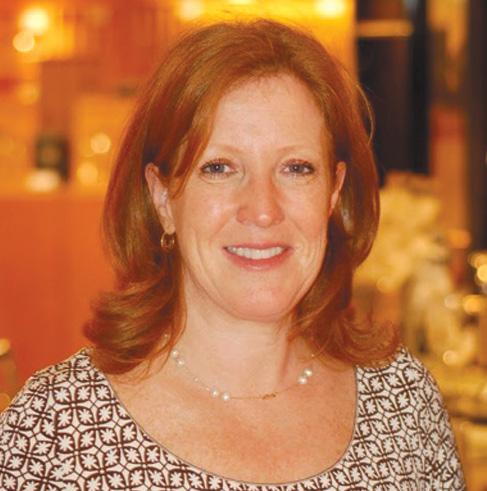
Joyce Appelman is the SCOOP News Editor and Senior Contributing Writer for Total Food Service and previously the National Communications Director for C-CAP, Careers through Culinary Arts Program. An industry leader supporting education and scholarships, she has been instrumental in opening career opportunities for many young people in the foodservice industry. Email her at joyceappelman@gmail.com
to be rich – our guests enjoy a light and refreshing touch.” - Executive
Pastry Chef Jean Baptise Scordel, La Grande Boucherie
“As we look ahead to summer 2025, the spotlight on hyper-local sourcing will only grow, with restaurants embracing unique regional ingredients to celebrate the rich diversity of local flavors. Sustainability and healthconscious dining will continue to take center stage, as diners gravitate toward menus that emphasize seasonal ingredients and eco-friendly practices.” - Executive Chef Kinan Ibrahim, The Bosworth Restaurant + Bar, Hotel AKA Boston Common
“The Mediterranean way of eating is set to make a major impact in summer 2025, as more people embrace healthier lifestyles and the farm-totable movement continues to thrive. With an emphasis on fresh, seasonal ingredients, heart-healthy fats, and bold yet balanced flavors, this timeless culinary tradition is poised to be a standout trend, offering a naturally nourishing and flavorful approach to summer dining.” - Executive Chef Ron Reda, The Barn Kitchen + Bar, The Williams Inn
“At BLDG, we prioritize working with local farmers, fisheries, and artisans who share our values of responsible sourcing. Each season, my team
continued on page 114

Workplace injuries don’t just hurt employees— they can cripple your bottom line. For every $1 spent on direct workers’ compensation claims, employers typically incur an additional $4 to $10 in indirect costs. These hidden expenses include lost productivity, training temporary replacements, reduced staff morale, legal fees, and more. For example, a seemingly minor injury—like a strain or a small cut—might have a direct cost of $500 in medical expenses. However, once indirect costs are added, the total financial impact can easily exceed $5,500. Now consider the financial fallout of a more severe injury involving hospitalization, surgery, or long-term disability.
In restaurant operations, the risk is even higher. Kitchens, dining rooms, and service areas are packed with hazards—slippery floors, hot equipment, sharp tools, and unpredictable customer behavior. For businesses with high-deductible insurance policies, even minor claims can trigger immediate out-ofpocket expenses. And for both high-deductible and guaranteed-cost insurance programs, a poor loss history can lead to soaring premiums or even being dropped by a carrier altogether.
Many of the most expensive workers’ comp claims result from conditions that are entirely avoidable. Unsafe acts (like bypassing a safety procedure) or unsafe conditions (such as a blocked walkway) are at the root of most injuries. Common examples in restaurants include:
• Slips and falls from uncleaned spills or poorly placed mats
• Burns from fryers, ovens, or steam equipment

• Cuts or lacerations due to misuse of knives or slicing equipment
• Strains from improper lifting techniques
• Injuries caused by malfunctioning or unmaintained equipment
• Accidents triggered by customer actions (e.g., ice on the floor, unstable chairs)
These hazards can be minimized—or even eliminated—through a proactive safety strategy built around proper planning, employee training, and most importantly, active on-site management.
Developing a comprehensive safety program is the first step. Partnering with an experienced insurance or risk management consultant can help ensure the program is tailored to your specific operations. Start by aligning with Occupational Safety and Health Administration (OSHA) guidelines, then customize your safety procedures to reflect the unique risks of your workplace.
Your program should clearly define what “safety” means for your organization. Include specific, actionable protocols—how to shut down equipment, proper storage of hazardous materials, personal protective equipment (PPE) requirements, and return-to-work policies. Ensure these guidelines are written in plain language and updated regularly as compliance rules evolve.
Even the most well-designed safety program can fall flat without daily implementation and oversight. This is where investing in trained, on-site safety managers becomes crucial.
A qualified safety manager helps translate policy into practice. They’re responsible for:
• Providing daily coaching and reminders
• Conducting pre-shift safety briefings
• Monitoring work practices in

Robert Fiorito serves as Vice President with HUB International Northeast, a leading global insurance brokerage, where he specializes in providing insurance services to the restaurant industry. As a 25+ year veteran and former restaurateur himself, Robert has worked with a wide array of restaurant and food service businesses, ranging from fast-food chains to upscale, “white tablecloth” dining establishments. Robert can be reached at 212-3382324 or by email at robert.fiorito@ hubinternational.com.
real time
• Ensuring corrective actions are taken immediately when hazards arise
• Facilitating injury response and documentation when accidents occur On-site managers should also promote a culture of accountability and recognition. Behavioral-based safety approaches—where employees are coached and praised for safe practices rather than simply punished for infractions—are proven to improve compliance and morale. Tracking the number of safety coaching sessions and tying them to performance metrics or rewards can further reduce incidents.
At the end of the day, a safe work environment not only protects your team—it protects your profitability. Fewer injuries mean lower claims costs, better insurance terms, and a healthier, more productive workforce. In today’s competitive hospitality industry, that edge is invaluable.
To get started, consult your insurance broker or risk management partner. They can help you design a safety program that includes practical policies, targeted training, and strong on-site leadership— giving you the tools to reduce risk, prevent injuries, and support a sustainable bottom line.
Learn more at https://www. hubinternational.com/industries/ hospitality-insurance/
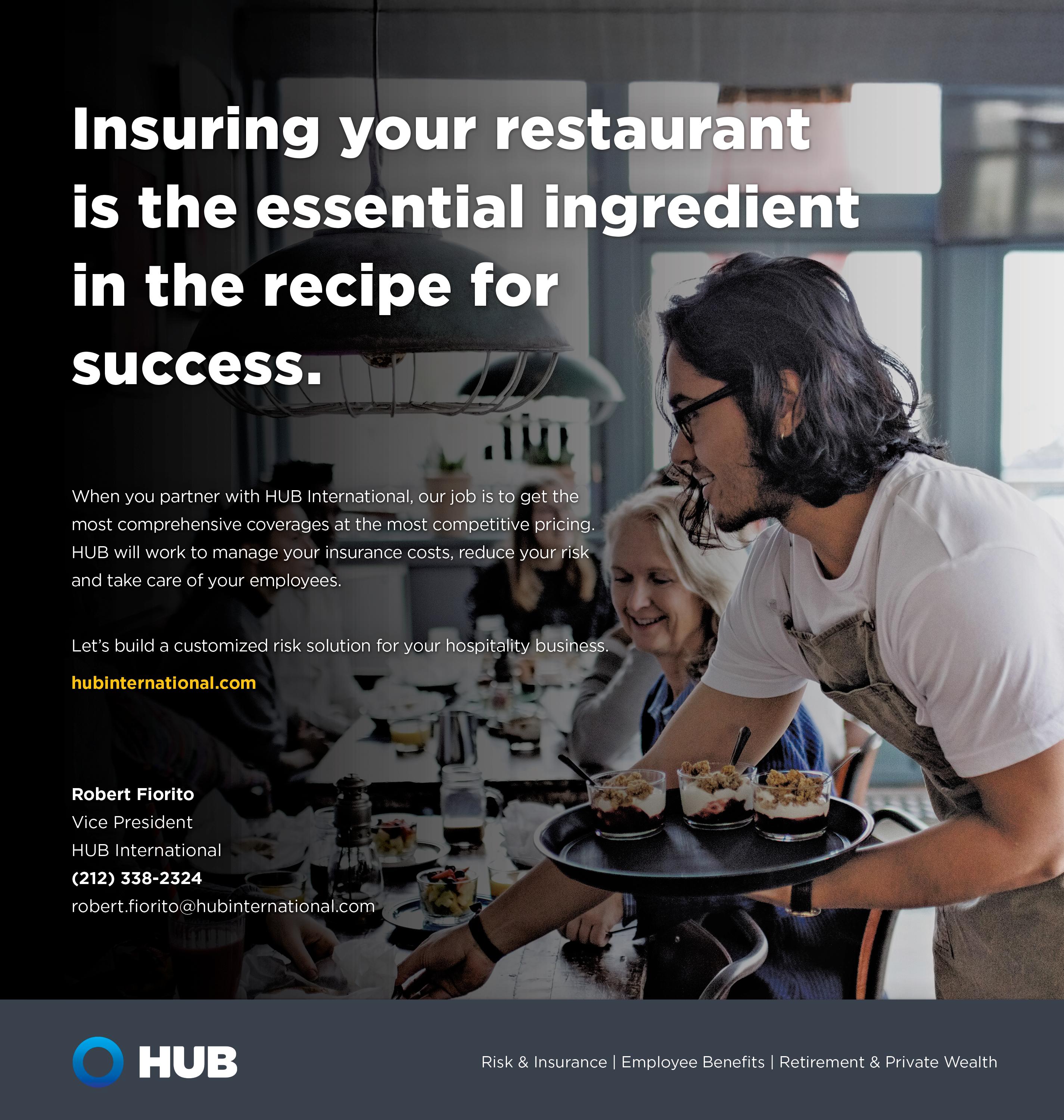
When people say “variety is the spice of life,” they’re usually being casual. In my world—the kitchens and dining rooms of senior living communities—it’s a mission. At Restaura, we don’t use the word “feeding.” We nourish. We connect. We celebrate. Because for many seniors, mealtime is the highlight of the day. It’s a moment of joy, dignity, memory, and community. And variety? That’s what keeps it all alive. Every plate tells a story. We’ve heard over and over again how important food is to memory and identity. For today’s seniors, meals aren’t just sustenance—they’re history, travel, family, and culture, all rolled into one bite. Many of our residents have traveled, cooked, and explored diverse flavors in their lifetimes. So why would we flatten that with cookie-cutter menus? One resident recently reminded me: “My mom used those little seasoning packets in everything—that’s how I remember home.” It’s a small detail, but it’s powerful. That’s why cultural variety isn’t a bonus feature in our dining programs. It’s the backbone. Yes, this work is complex. We balance dietary restrictions, texture modifications, and nutritional targets daily. Some residents need soft foods. Others require heart-healthy or diabetic-friendly menus. But complexity doesn’t mean compromise. We work around these challenges by creating flavor-forward recipes that hit every requirement without tasting like cardboard. We never lead with the limitation—we lead with

the flavor. That’s part of our “unapologetically delicious” culinary commitment. Take our Mediterranean program: seared salmon with olive tapenade, ancient grain tabbouleh with lemon-roasted asparagus, and an olive oil cake with Greek yogurt drizzle. It’s heart-healthy, yes. But it’s also exciting, layered, and unforgettable.
We believe that dining should be experienced—not just served. Recently, during a Cinco de Mayo celebration, I pushed a molcajete cart table-to-table, smashing avocados for fresh guacamole. Residents lit up—not just because of the food, but because of the interaction. They asked questions, shared memories, and gave instant feedback. It was a twoway street.
When we opened a new community in South Carolina, we didn’t ship in a ge-
neric menu. We asked questions, we listened, and we cooked. Dishes like herbrubbed turkey cutlet with peach chutney and BBQ jackfruit sliders hit the sweet spot between Southern comfort and modern health-conscious flair. It’s about being hyperlocal and highly responsive.
As we have rolled out Restaura across the country we noticed something: there were no clear benchmarks for excellence in senior dining. So we helped create them. In partnership with the International Council on Active Aging (ICAA), we launched a new Culinary and Hospitality Standards of Excellence program. These standards cover everything from cultural inclusivity to personalized meal plans to scratch cooking practices. And we did not stop there—we introduced the “Plate of Distinction” to recognize communities that truly excel. It’s our
“We never lead with the limitation—we lead with the flavor. That’s part of our ‘unapologetically delicious’ culinary commitment.”
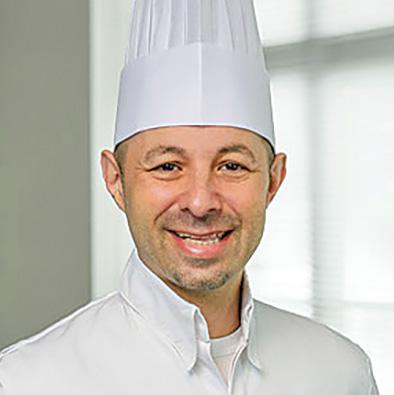
Chef Matthew Thompson is a distinguished culinary executive celebrated for his innovative and sustainable approach to menu development and hospitality. With over 25 years in the industry, Chef Matthew has established operational systems that drive meaningful social and economic impact. At Restaura, he is devoted to advancing culinary artistry through creative menus and fostering a team culture focused on dynamic, responsibly sourced dining experiences. Throughout his career, Chef Matthew has championed plant-based diets and sustainable lifestyles, contributing to Food Solutions New England and serving on the Farm to Institution New England advisory council. He is also a sought-after speaker for sustainabilityfocused organizations such as AASHE, the Culinary Institute of America, and others. Previously, Chef Matthew cofounded Harvest Table Culinary Group, a farm-to-institution dining venture that emphasized regional sourcing and wellness in universities. He spearheaded programs in data-driven food tracking and partnered with the World Resource Institute for climate-forward initiatives. Chef Matthew also held roles in Culinary Operations and Sustainability at Aramark Corporation.
version of the Michelin star—but built for senior living.
One of the big questions I hear from operators: “Do I need boutique distributors to do this right?” The answer: not necessarily. It's less about who you buy from and more about how you source. We prioritize responsible sourcing—local farms, BIPOC producers, regenerative agriculture, fair trade—because the
continued on page 112

Some restaurateurs open kitchens. Elliot Nelson opened conversations. His restaurants may serve craft beer, burgers, and Mezcal, but the thing they’ve really delivered—again and again—is a sense of place. Across Downtown Tulsa, and now Oklahoma City and Norman, Nelson’s establishments have become civic staples not because of what’s on the menu, but because of what they mean to the neighborhoods they serve.
Nelson’s origin story starts in Tulsa—but it was shaped by the outside world. “I was born and raised in Tulsa, and so were my parents and grandparents,” Nelson said. “But when I traveled, I realized how little people thought of Oklahoma. That stuck with me. I had a chip on my shoulder early on.”
That chip turned into drive. Years later, it became a vision. Nelson didn’t

just want to start a bar; he wanted to shift how people saw his city. That first bar—McNellie’s Pub—was planted Downtown at a time when almost no one thought that made sense. “When I was looking for a place to build it, Downtown just wasn’t where people went,” Nelson noted. “But I didn’t want to go where the crowd already was. I wanted to help build the crowd.”
The idea wasn’t to chase trends. It was to create gravity. That meant adapting not just to urban form but civic function. “Happy hour is an extension of the neighborhood,” Nelson added. “In big cities, you walk out of work and you’re still connected to where you are. Tulsa didn’t have that. People were driving to Brookside. That made no sense to me.”
So he built it—a place people could walk to, linger in, return to. What followed was a cascade of new concepts, carefully chosen locations, and a playbook built not on replication, but on observation. “Everything we’ve done has been shaped by the street it’s on,” Nelson said. “There’s no one-size-fitsall when you’re building places meant to last.”
Over time, the mission expanded beyond Tulsa. Nelson’s McNellie’s Group extended its reach into Oklahoma City and Norman, but the approach stayed the same: think locally, act intentionally. “We never wanted to copy and paste,” Nelson said. “What worked in Tulsa wouldn’t necessarily work elsewhere. But the idea—that people want places where they feel known—that travels.”
continued on page 112
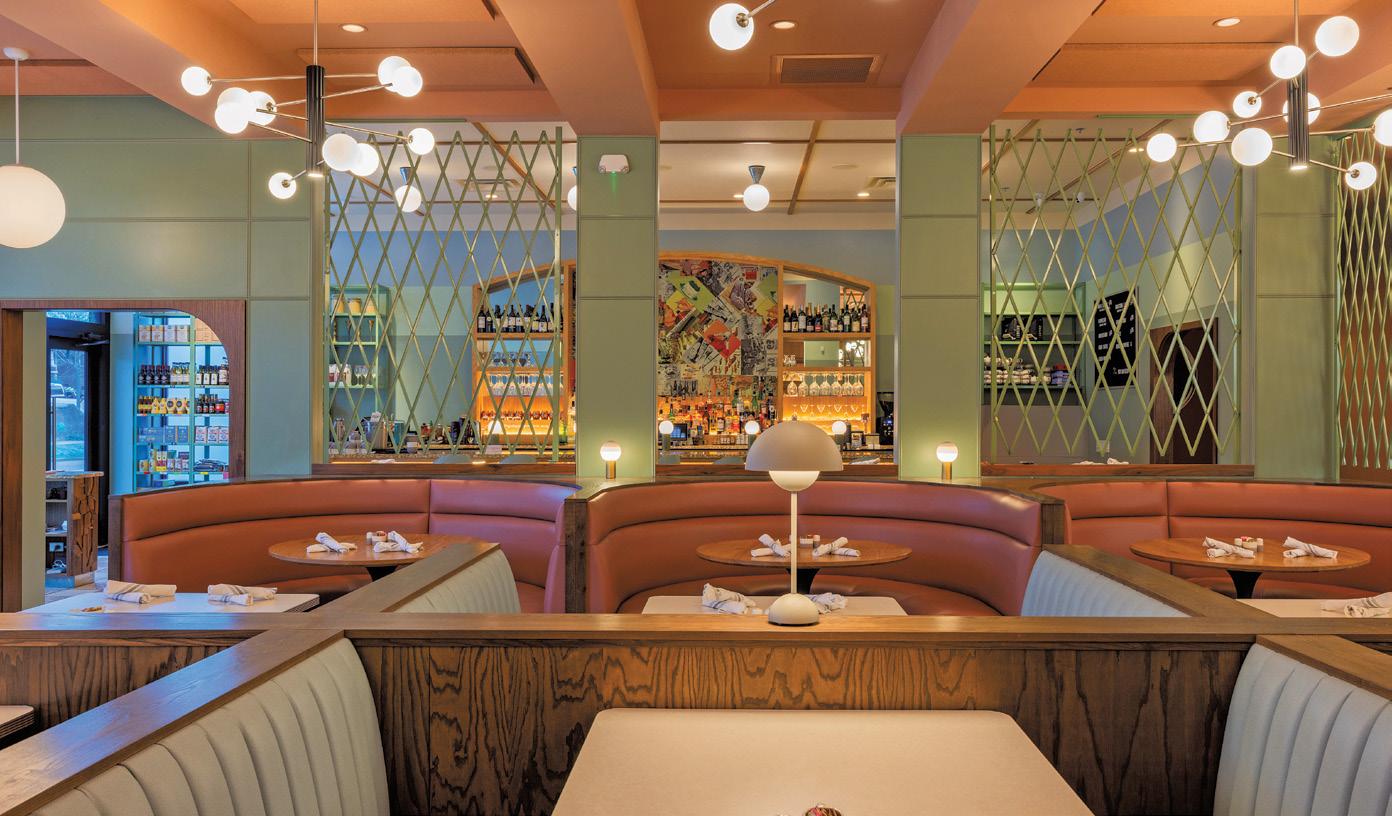
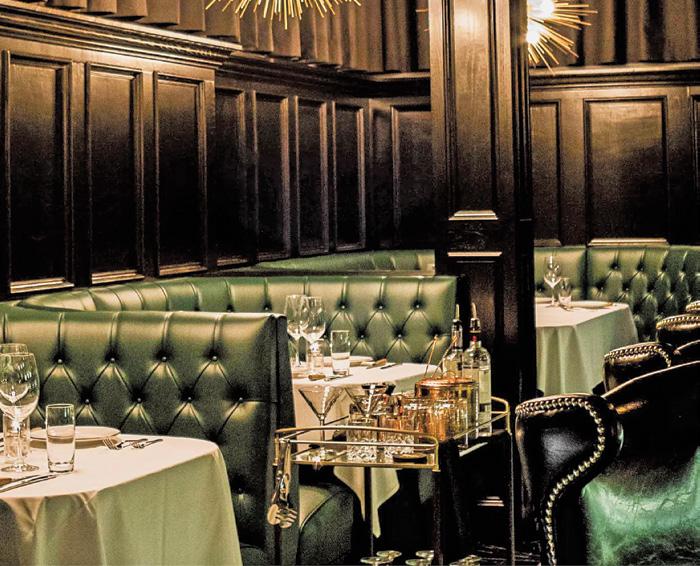



Why chefs are reaching for tart cherries to energize plant-based recipes with a naturally bold kick
My neighbor Oleksandra and I share a love for cooking and discovering new ingredients. We often introduce each other to our home countries’ favorite flavors—like the generous use of garlic in Philippine cuisine, and in her case, the widespread use of tart cherries in Ukrainian dishes. So when I recently came across information about the U.S. Tart Cherry Industry, my interest was instantly piqued. (Full disclosure: the fact that my nickname is Cherry also added to the appeal.)
I’m excited to cast a spotlight on how tart cherries are making waves in foodservice—particularly in plant-forward dishes. Chefs are innovating with this vibrant, versatile fruit, and tart cherries are proving to be more than just a garnish. When I read this quote from Amy Cohn, president of the U.S. Tart Cherry Indus-

try—“Tart cherries have an incredible story to tell—from their myriad health benefits to their trendy applications, to their connection to U.S. family farms”— I knew she was the perfect person to speak with.
Join me in learning more about this bold ingredient from Ms. Cohn, an expert in food and nutrition leadership, strategy, and communications. As president of the Cherry Marketing Institute, she’s a passionate voice and advocate for the tart cherry industry.
Amy, to start, could you share a bit about your background, the Cherry Marketing Institute, and your vision for the U.S. Tart Cherry industry?
I’m a registered dietitian by training and have spent my career at the intersection of food, nutrition strategy, and brand development. Today, I serve as
president of the Cherry Marketing Institute and the Council for U.S. Tart Cherries—where I help lead a collective vision to bring new energy to a time-honored American fruit. My goal is to evolve how the world sees tart cherries—not just as a nostalgic or seasonal ingredient, but as a bold, vibrant option for modern menus and health-conscious consumers. We’re here to reintroduce tart cherries in a fresh way—rooted in heritage, but with a pulse on what’s next.
How are chefs incorporating tart cherries into savory, plant-based dishes— beyond desserts and drinks?
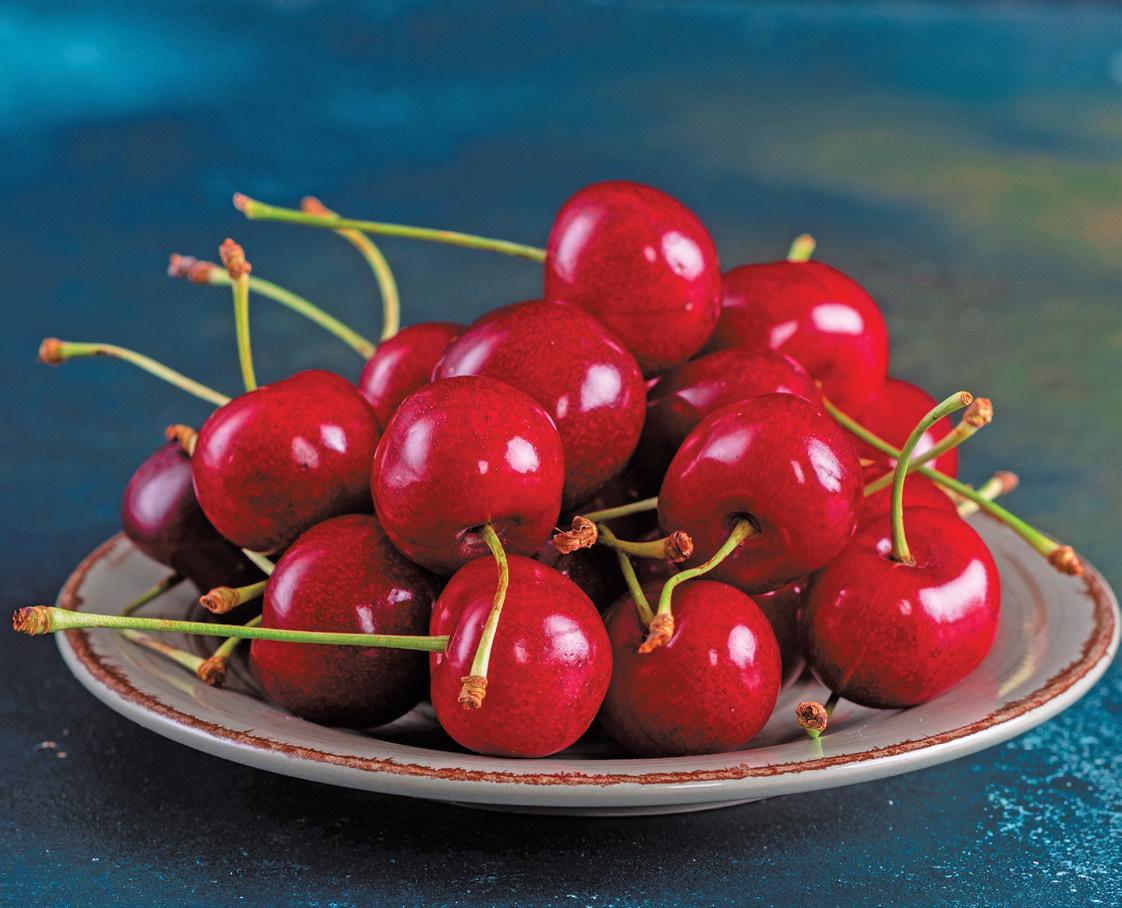

Cherry Dumaual is a seasoned contributing writer for Total Food Service, bringing years of experience in culinary communications to her role. As the former Partnerships Director at The Monday Campaigns/Meatless Monday, she was responsible for spearheading the PR and partnership development for Monday initiatives, including Meatless Monday. During her tenure, she successfully forged partnerships with renowned organizations, such as C-CAP (Careers for Culinary Arts Program), the American Institute of Cancer Research, and New Jersey Healthy Kids Initiative. Prior to joining TMC, Cherry held the position of Senior Vice President at leading PR agencies, where she worked with major food and healthcare clients. Her passion for learning and cooking international cuisines has led her and her husband to explore local food markets and restaurants in over 50 countries. This firsthand experience has allowed her to gain a deep understanding of different cultures and cuisines, which she brings to her work in the food industry.
We’re seeing incredible creativity in how chefs are using tart cherries to add depth, contrast, and boldness to plantbased dishes. Think: a tart cherry gastrique over roasted cauliflower steaks, smoky tart cherry barbecue glazes on grilled tofu, or Middle Eastern-inspired grain bowls topped with tart cherry chutney. Additionally, dried tart cherries are starting to steal some excitement in the salad world – as they make an excellent centerpiece for green and grain salads. The fruit’s natural acidity and rich color add both a visual pop and a flavor lift—making vegetables, grains, and legumes feel more complete and craveable.
What makes tart cherries a standout ingredient for health-conscious diners and plant-forward menus?
Tart cherries bring a naturally bold taste that supports balance and complexity in plant-based cooking—no artificial flavoring needed. They’re minimally processed, grown on U.S. family farms and fit squarely into the “real food” movement that health-conscious diners crave. Plus, they align with a growing interest in functional, and U.S. farmconnected ingredients that carry a story beyond the plate.
Can you share examples of foodservice operators or chefs who are creatively using tart cherries on their menus? Definitely. Chefs across the country— from independent kitchens to campus dining programs—are leaning into tart cherries. Here are a few examples: • At a recent NACUFS conference, we
on page
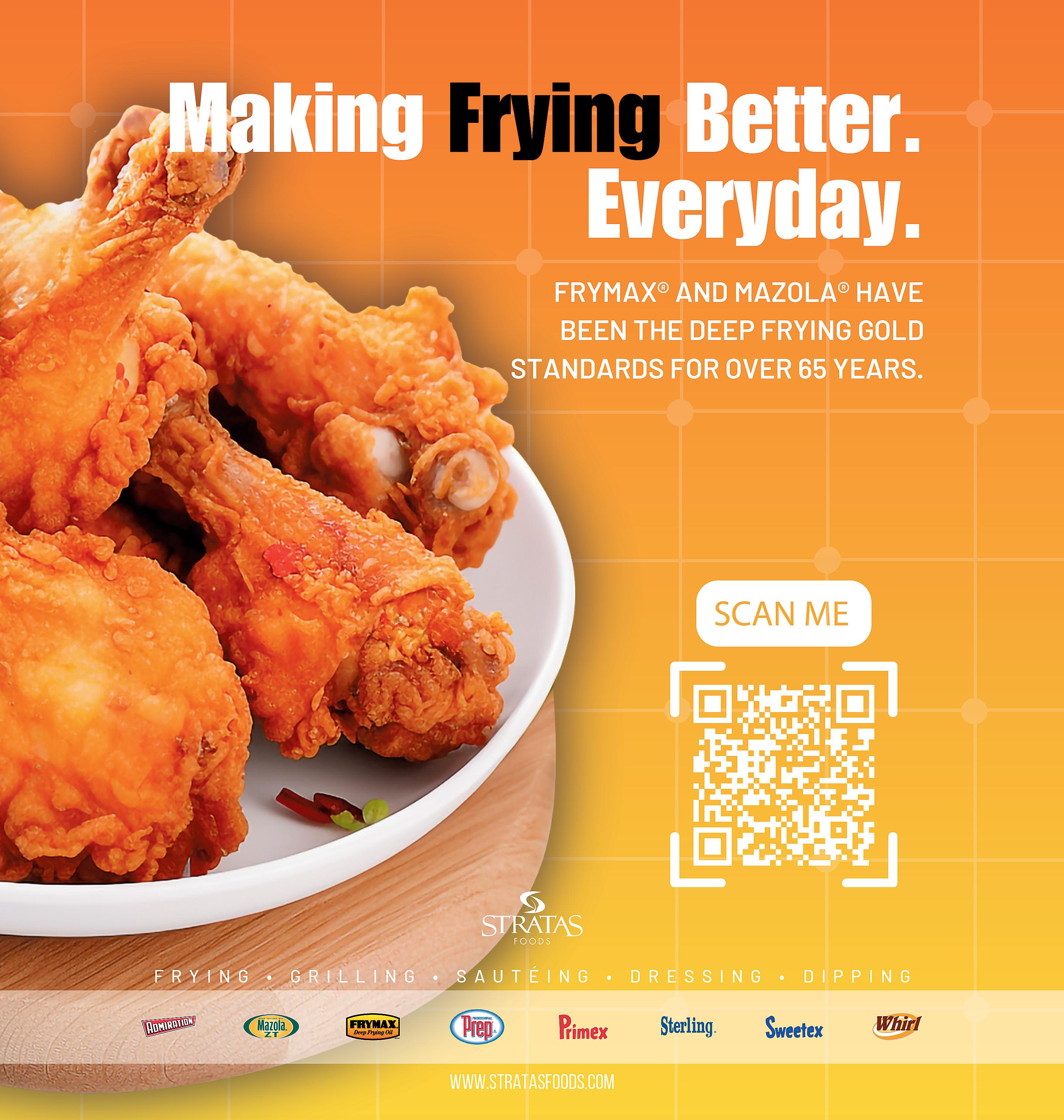
At Total Food Service, we’re always hunting for the next culinary star ready to make waves in New York and beyond. Through our intro to the Friend of Chef program, we are privy to emerging talent from around the globe—creative voices who are redefining what dining looks, feels, and tastes like. That’s how we found the “next” culinary star to come to the US: Bernardo Galindo
With the Global Flavors trend catching fire across the U.S., this moment is perfect for someone like Galindo. His food is bold, honest, and deeply rooted in community and culture—everything today’s diners crave. As tastes shift and the appetite for authentic, international experiences grows louder, Galindo is poised to become a name Americans will know.
Bernardo Galindo is a prominent figure in Mexico City’s culinary scene, known for his innovative approach to gastronomy and his commitment to community-driven dining experiences. Origi-
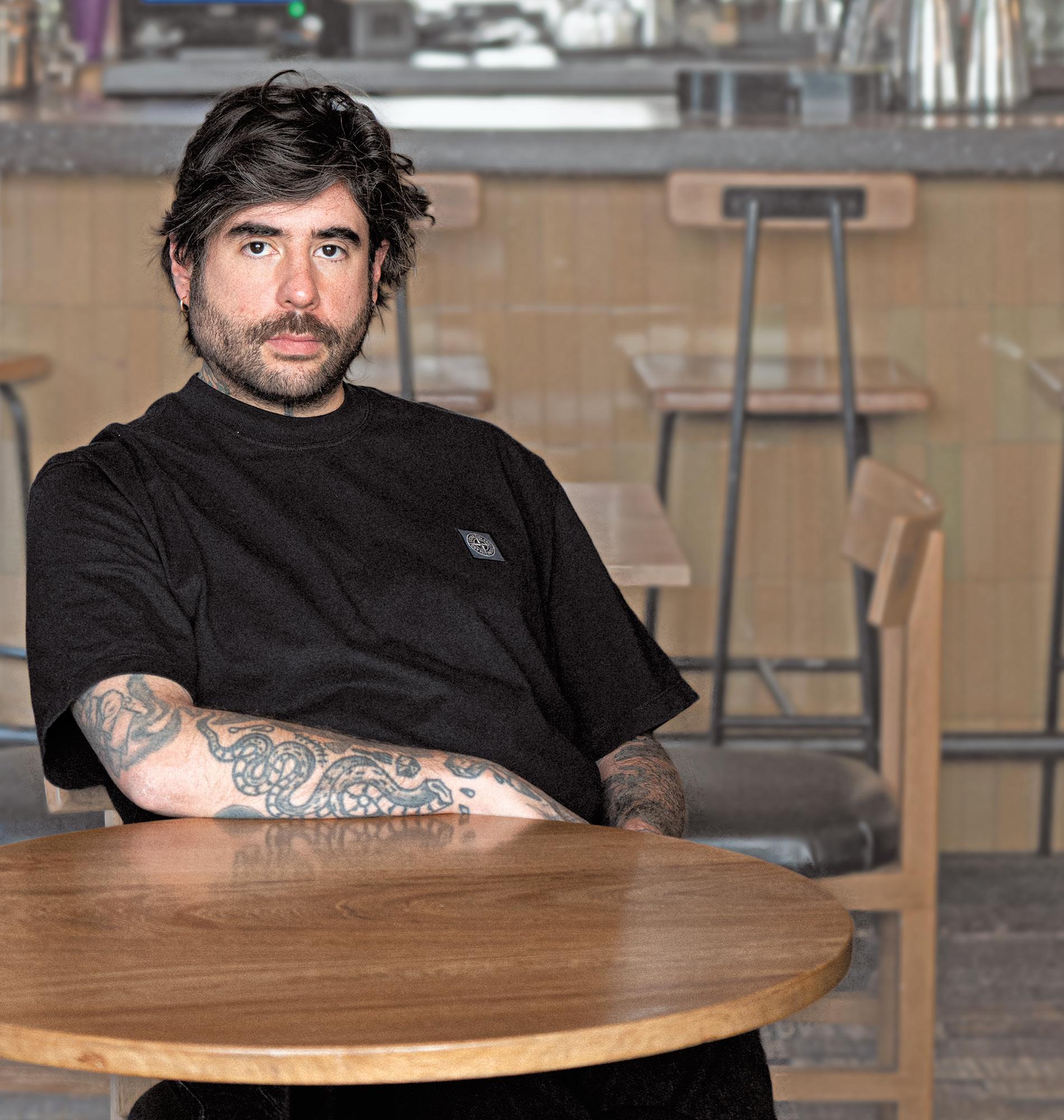
nating from the southern part of Mexico City, Galindo has been instrumental in shaping the dining culture of neighborhoods like Roma and Condesa. He is the founder of several notable establishments, including: Campobaja, a seafood restaurant inspired by the coastal flavors of Ensenada, reflects Galindo’s deep connection to the region. Club Petanca Roma combines casual dining with the traditional French game of pétanque, offering a unique social experience. El Tigre Silencioso, a collaborative project with chef David Castro Hussong, has been recognized for its innovative cuisine, earning a nomination for Best New Restaurant at the MexBest 2023 awards. Caimán, a bar that has garnered attention for its distinctive offerings, also received a nomination for Best Bar at the same awards. Table Studio, a catering company, showcases Galindo’s versatility and his commitment to delivering exceptional culinary experiences beyond traditional restaurant settings.
Galindo’s approach to food is deeply rooted in authenticity
continued on page 38
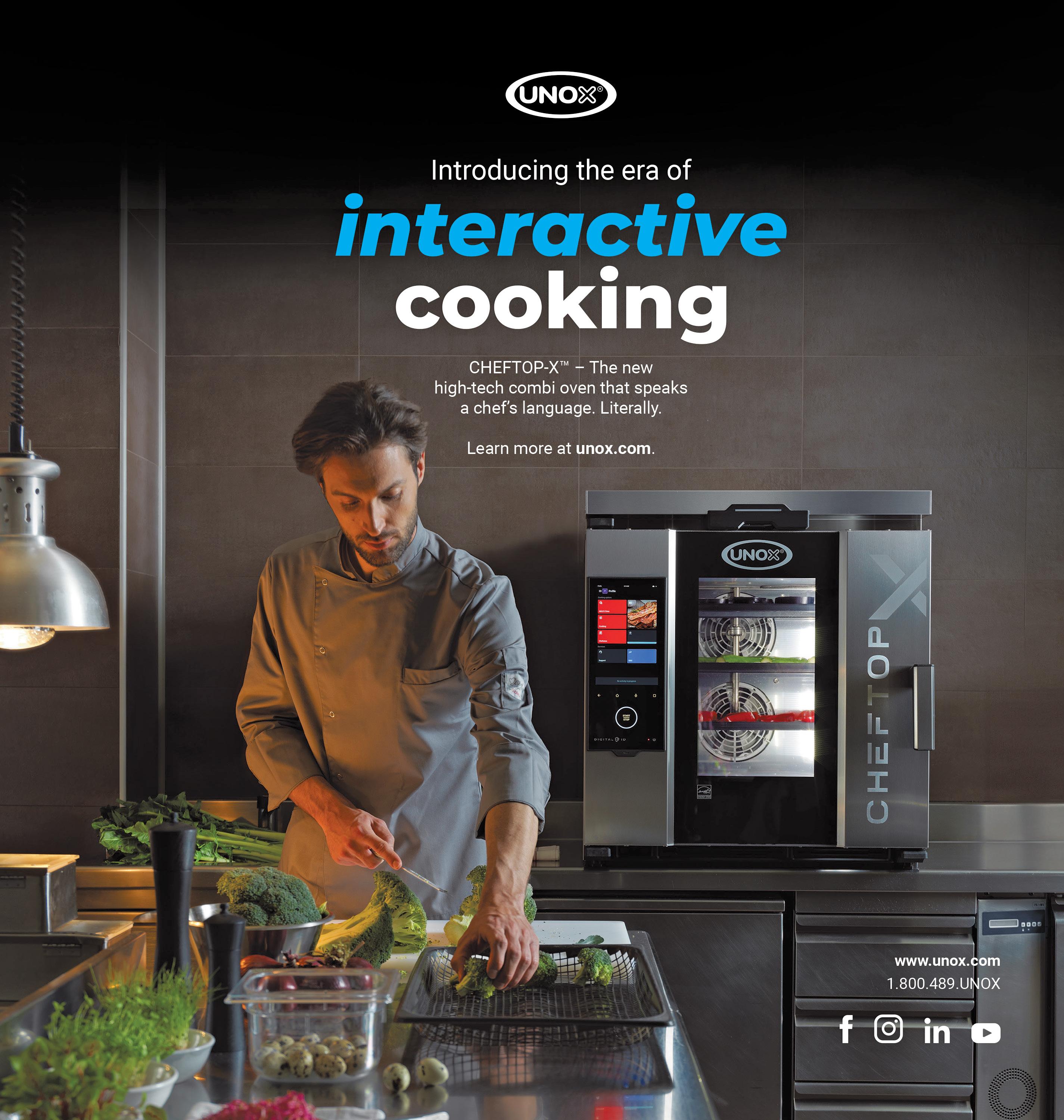
and community. He has a penchant for street food and often highlights local vendors and traditional dishes in his recommendations. His establishments are known for their relaxed atmospheres, encouraging patrons to engage with food in a communal and unpretentious manner.
During challenging times, such as the COVID-19 pandemic, Galindo demonstrated resilience and adaptability. He cofounded Colectivo Tlacuache, a collaborative initiative with fellow restaurateurs like Paulino Martínez, Elena Reygadas, and Jair Téllez. This collective created a basic delivery platform to continue serving customers and supporting the local food community. Additionally, Galindo and his partners launched Comala, a shop emphasizing wine and local products, further showcasing their commitment to community and sustainability.

tion for the region’s seafood.
How has mentorship or formal education shaped your approach as a restaurateur? Did you study culinary arts or business formally, or was your education more hands-on?



















Galindo’s deep appreciation for Ensenada’s culinary landscape is evident in his frequent travels to the region and the inspiration it provides for his ventures. His dedication to preserving and celebrating local flavors, combined with his innovative spirit, positions him as a significant influencer in Mexico’s contemporary dining scene.
Why are we spotlighting Bernardo now? Because his food doesn’t just follow a trend—it helps define the future. Galindo’s vision brings people together around the table with flavor, purpose, and story.
Let’s start from the beginning — what first drew you to the restaurant industry? Was there a parent or mentor who sparked your interest in food and hospitality?
I got started in hospitality by organizing pop-up events around a seafood cart, working with premium, high-quality products. We sold clams, aguachiles, oysters, and ceviches. Through that, I met a family who has accompanied me over the years, and I discovered my love for Ensenada, Baja California — and above all, a deep respect and apprecia-









I never pursued formal studies. I’d say my biggest learning experience came during the first three years of my first restaurant, Campobaja. Long hours taught me both the art of service and the importance of sensitivity in hospitality. At the same time, I had to understand the administrative structure, cost control, and business management. The common thread across all of it? People. It always comes down to the team.
Your portfolio includes some of Mexico’s most celebrated concepts — El Tigre Silencioso, Campobaja, Ochenta y Nueve, and Caiman Bar. Can you walk us through how your career evolved into such a diverse collection of restaurants?
As I mentioned, there’s a common thread running through all of our concepts: Baja California, high-quality ingredients, and strong human values. Through my relationship with the Hernández family — the best seafood suppliers in Mexico — and especially Ezequiel, I built relationships with others who later became my business partners. Daniela oversees the group’s beverage program — from developing cocktails to selecting wines — and works across both operations and administration. Lucas, her brother, produces many of the wines we offer exclusively at our venues. I’ve developed several concepts with both of them. Later, we created El Tigre Silencioso with David Castro, who integrated into our team and partnership very organically. From the start, we felt comfortable working with him, and I think that comfort is reflected in the final result.
Each of your venues has such a unique
continued on page 40


identity. What’s your philosophy when developing new restaurant concepts?
There are a few key principles we always follow when creating a new concept:
1. It has to be something we would genuinely enjoy ourselves — something we’d be customers of.
2. We have to feel proud of the brand, space, concept, and communication.
3. A seemingly obvious one, but not always: the numbers have to make sense, even from the first business plan.
4. Location, location, location.
5. Everyone involved — creative partners, investors, team members — must bring energy, love for hospitality, and values that align with ours.
What’s your approach to building and leading your back-of-house and frontof-house teams? How do you ensure the guest experience and culinary execution stay consistent across multiple concepts?
From day one, our strategy has been to develop new talent and invest in training. We strongly believe in career growth, and we have many examples of team members who started from the bottom and grew within the company. A key part of this is keeping curiosity alive — the desire to always learn more. And one of the most important things in this industry (and others) is that leaders must inspire the next generation.

How has the Mexico City restaurant scene changed since you first opened?
Have you noticed trends or shifts in customer behavior, competition, or expectations?
Mexico City — and especially the neighborhood and street where many of our restaurants are located — has changed radically. Even before COVID, there was a growing tourism boom focused on gastronomy, and post-2021,
As for consumption patterns, tourism has definitely changed things — for better and worse. But Mexico has a deeply rooted food culture, and that keeps many traditions intact. It’s a beautiful tension between the new and the old.
In the U.S., operators are dealing with rising food costs and labor shortages. Are you seeing similar challenges in Mexico City, or are the issues different?
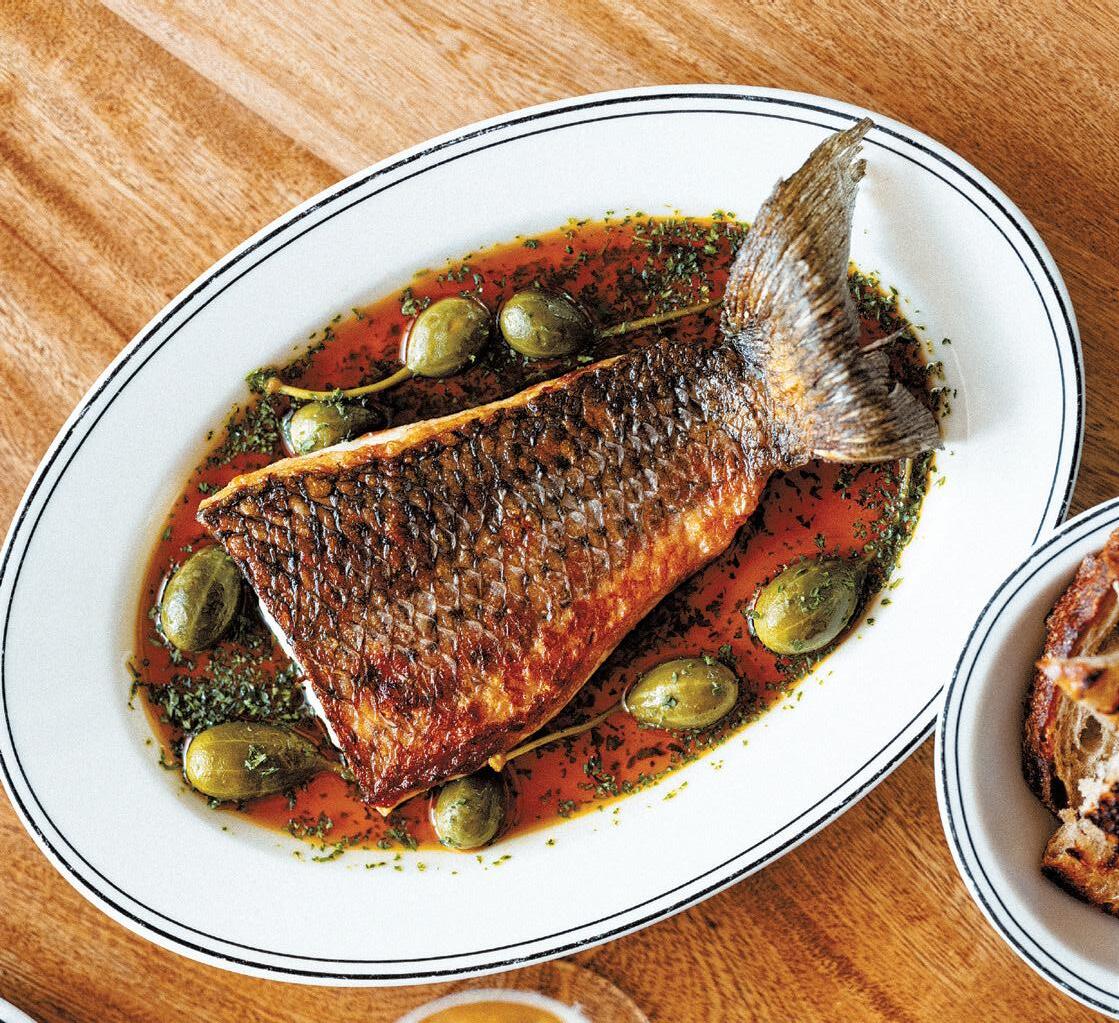
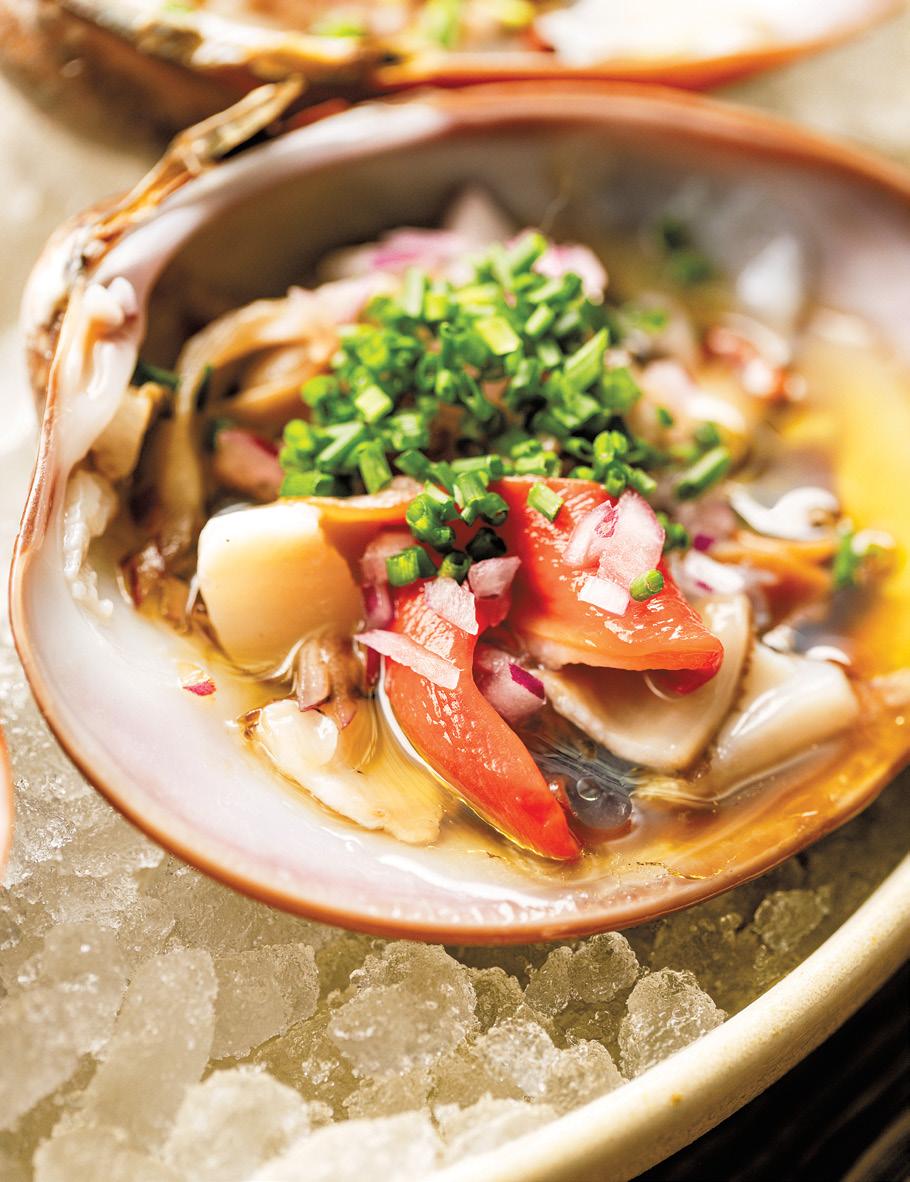
In terms of food costs, yes — we’re facing similar challenges. But I’d say Mexico has its own unique set of problems.
continued on page 42

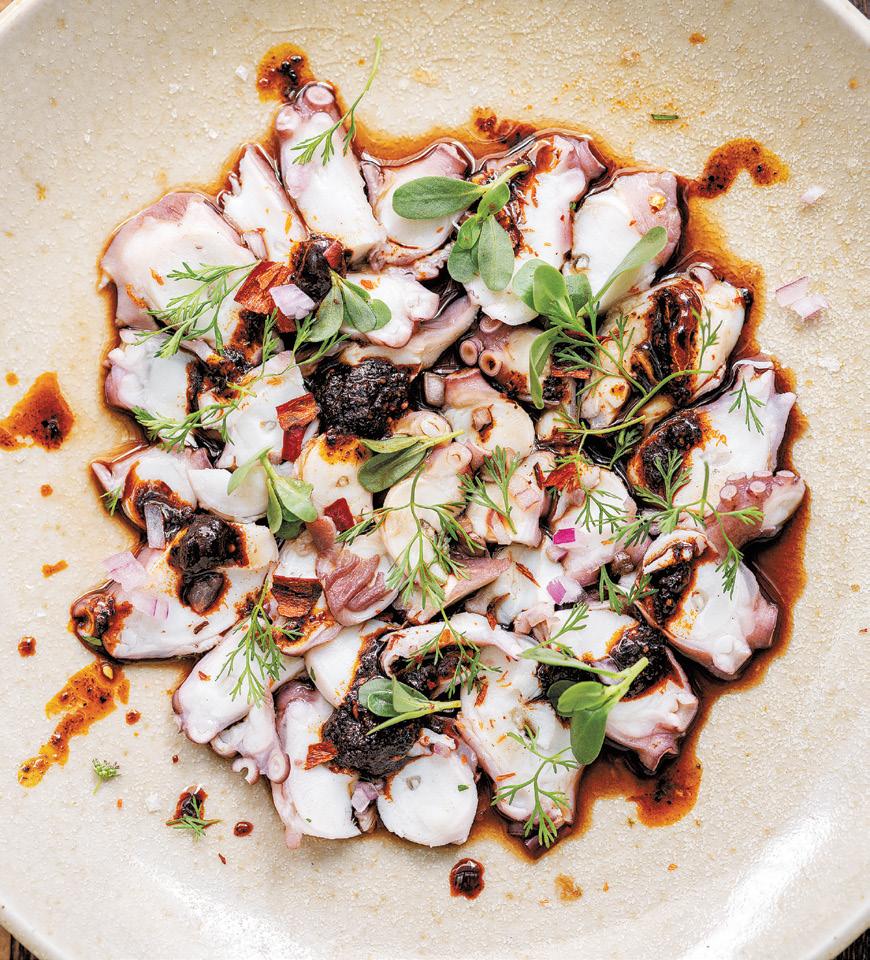

Menu development is clearly a strength of yours. How do you go about sourcing ingredients in Mexico? What’s your strategy for combining fresh markets with broader supply chain solutions?
Within our group, we call this menu engineering. We aim to maintain healthy cost structures by optimizing our product mix. Often, smart inventory and waste management can generate more savings than focusing only on suppliers. As one famous book says: the money is in the back door. That said, we always prioritize top-quality products. It’s something that has defined us from the start.
You’ve built something incredibly respected in Mexico. What motivated you to expand into the U.S. market now — and why New York specifically?
Our brands have depth — they speak to who we are and to a cultural moment for Mexico. We represent Mexico in a way that goes beyond clichés like sombreros and Tequila. We bring fresh, bold, and sometimes risky ideas. There’s always room for concepts that break away from the safe and predictable.
The New York restaurant scene is famously competitive. How did you navigate the real estate search, and what made you decide on your future location(s)?
We’re lucky to have some incredible friends — FOC (Friend of Chef) — who helped us understand the market and locations with a thoughtful, strategic approach. They’ve been key allies.
What’s your broader vision for your U.S. expansion? Do you see New York as the flagship for future national growth?
You never know how far something will grow. For now, the focus is solely on New York.
Tell us about your partnership with Friend of Chef. How did that collaboration come about, and why did it feel like the right fit?
We met the FOC crew last year and have been in talks ever since to build a hospitality and culinary bridge between

Mexico City and New York. They’re the best at what they do here, and we feel confident having them by our side as we work toward opening a space in NYC.
Talia Berman and Keith Durst’s FOC team have deep roots in the NYC food scene. What role will they play in building out and growing your brand in the U.S.?
Having local partners is essential when trying to build something great in NYC’s ever-evolving restaurant world. Talia and Keith will be playing that role with us — key local players who bring insight and deep knowledge of the industry’s pulse.
How do you plan to promote the launch of your first U.S. restaurant? Will the strategy be digital, community-driven, event-based — or all of the above?
While I can’t reveal too much yet, it will definitely be a combination of all of the above, with an organic, communityfirst approach rooted in the local restaurant scene.
All photos courtesy of AB Restaurant Group


In foodservice today, success isn’t just about making something delicious—it’s about doing it fast, affordably, and at scale. Operators are under more pressure than ever to manage razor-thin margins, adapt to staffing challenges, and satisfy customers with bold, memorable flavor. That’s where menu mastery comes in: a smart strategy that balances flavor, value, and operational efficiency to meet the moment. One company leading the charge is Campbell’s Foodservice, whose portfolio of soups, snacks, and plant-based solutions is engineered for real-world kitchens. At the helm of its culinary direction is Chef Gerald Drummond, Executive Chef at Campbell’s Foodservice and a veteran with nearly four decades in the industry. From running high-end restaurants to driving innovation at Campbell’s, Drummond brings a grounded, team-first approach to helping operators succeed.
Flavor alone can’t carry a menu anymore. It has to work in concert with cost control and back-of-house realities. “You can’t talk about being food-centric and then act like you’re not,” Drummond said. “We had to change behav-
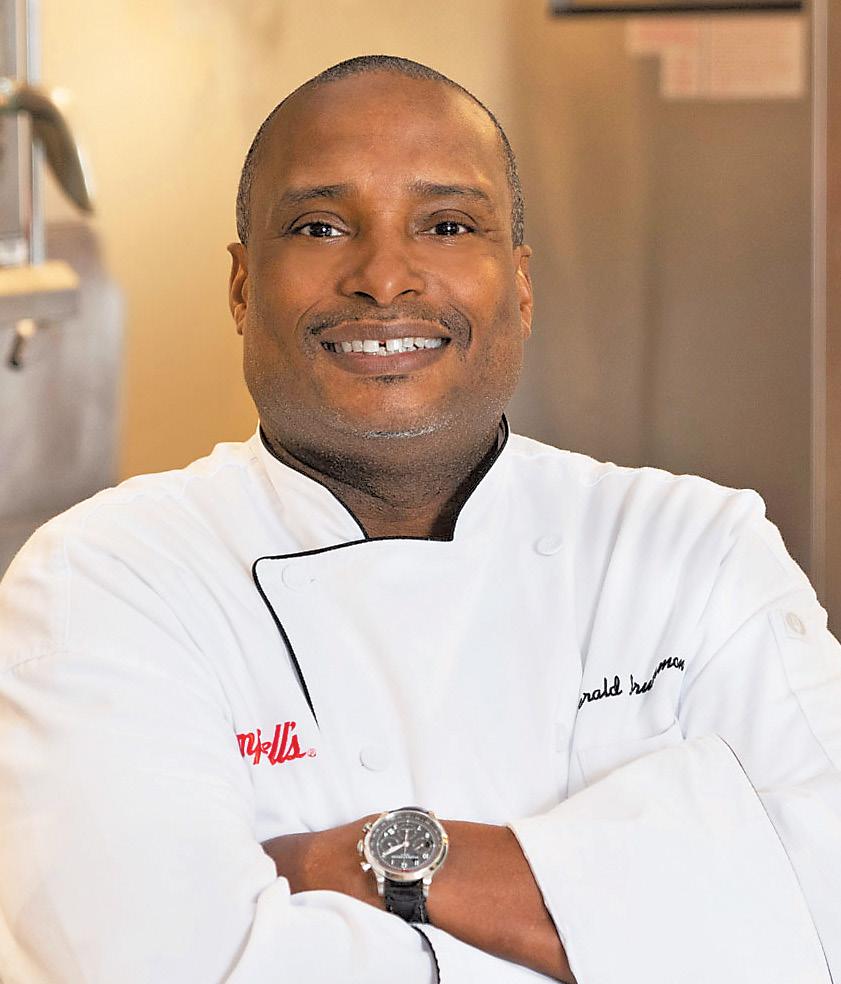
iors. That’s what we looked at from a Campbell’s perspective.” And changing those behaviors means equipping operators with smart, scalable, profitable solutions.
The best menus today are built with purpose. They feature bold, globally inspired flavors that excite customers, but they’re grounded in ingredients and processes that keep kitchens running smoothly. “Our inspiration comes from marketing, sales, product development, and culinary working as one team,” Drummond noted. “Within that team, it’s all about trust—trusting each other’s skill sets.”
The pressures of rising food costs and limited labor have forced operators to rethink how they build menus. It’s not enough to chase food trends—you have to build for longevity, repeatability, and profit. “When I hear, ‘Chef, can we go back in the kitchen today?’—that’s the energy I want,” Drummond added.
Building a strategy around flavor, value, and efficiency starts with a mindset shift. You can’t look at them as tradeoffs. They’re not mutually exclusive— they’re interconnected. Flavor drives demand. Value supports traffic. Efficiency ensures sustainability. Together, they form the backbone of a winning menu.
To do this well, foodservice teams need to start with a cross-functional approach. Culinary must work hand-inhand with operations and finance. This collaboration ensures that each dish doesn’t just taste great—it’s easy to prep, costed right, and ready to scale.
Research and vetting are also critical. Foodservice professionals should
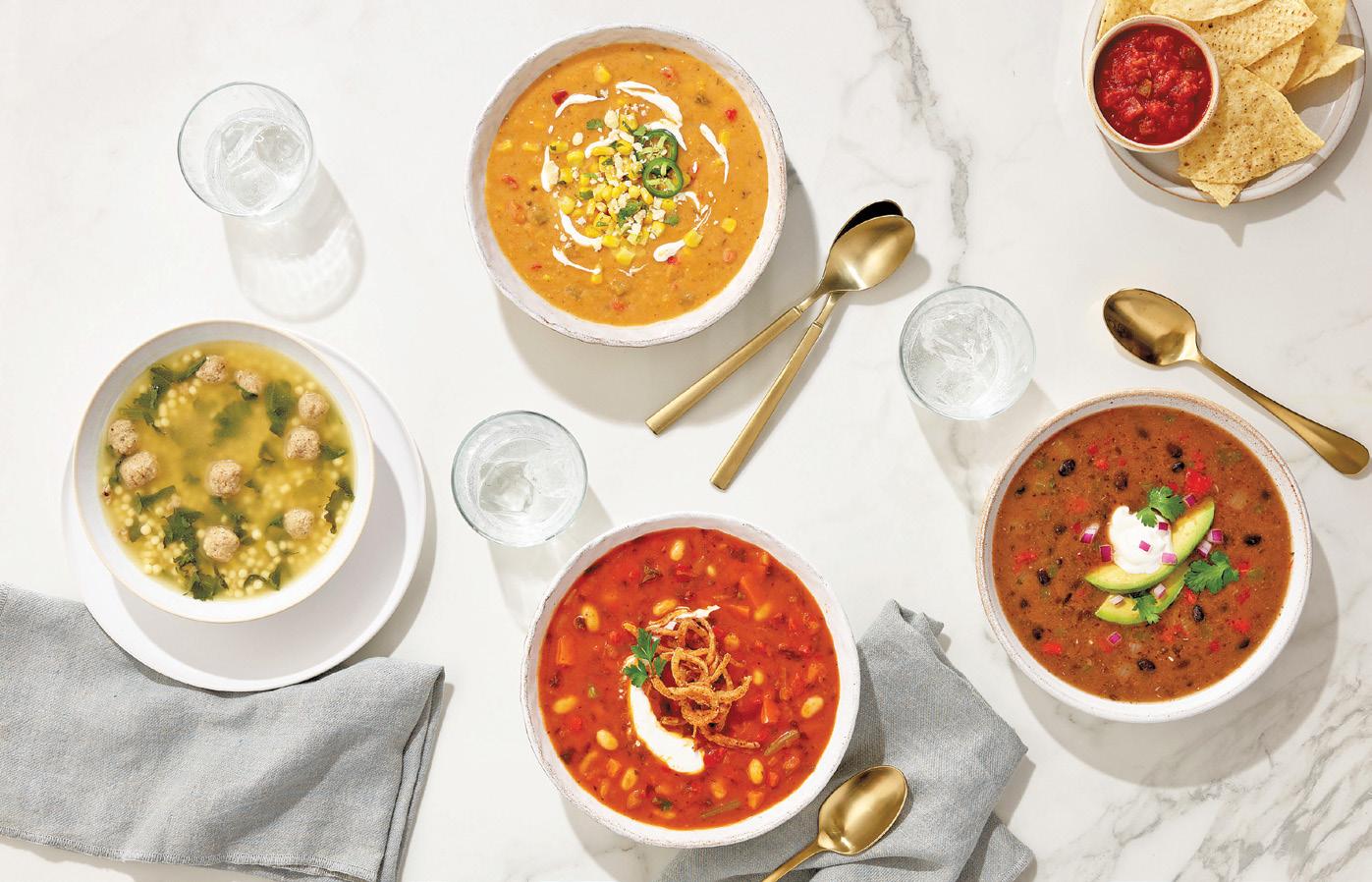
look for supplier partners who provide more than just product—they should offer inspiration, tools, and support. At Campbell’s Foodservice, this includes everything from globally inspired frozen soups to snack pairing guides and digital recipe tools.
“When people ask what I’m most excited about, it’s not just the soup—it’s how we’re reengineering everything with passion,” Drummond detailed. “Recipes that used to take 20 iterations now take five.”
Operators researching new solutions should ask: Will this help me cut prep time? Can I customize it? Does it offer consistent quality across locations? Can it do double duty on the menu? Providers who answer “yes” across the board— backed by culinary teams and proven performance—stand out.
That’s exactly where Campbell’s Cu-
“We’ve done nacho platforms, walking tacos with chips, even dessert applications with pretzels. We showcase that fun, craveable side of the menu.” — Chef Gerald Drummond
linary Reserve frozen soups come in. “They’re designed to meet the operational needs of today’s kitchens—especially in terms of prep time, versatility, and scalability,” Drummond said. The globally inspired lineup features bold flavors like Caribbean-Style Jerk Chicken and Spicy Harissa White Bean—both built to be heat-and-serve with highimpact taste.
Flavor development is anything but random. “Why are we doing Caribbean jerk? Because signals are telling us global flavors are trending,” Drummond continued. “But when people say ‘global,’ they often only mean Asia or Latin. What about Caribbean? What about Portuguese?”
This grounded, field-driven approach to flavor exploration is a hallmark of Campbell’s culinary process. “We didn’t guess—we listened,” Drummond noted. “We went to operators who are subject matter experts in Caribbean jerk. I wanted to hear it from them, not from Wikipedia.”
Another standout innovation is
continued on page 111



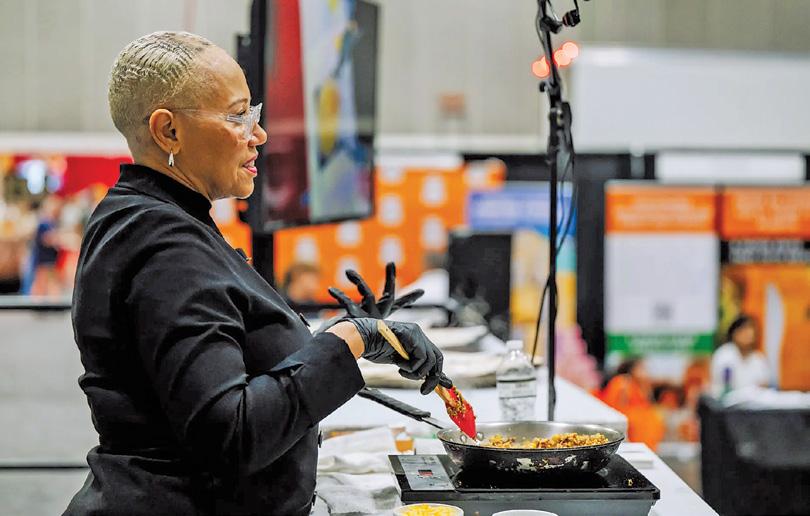

The California Restaurant Show, featuring the Pizza Tomorrow Summit Pavilion, one of the West Coast’s premier events for the restaurant, pizza and foodservice industry, returns to the Anaheim Convention Center from August 3–5, 2025. Attendees will experience celebrity chef appearances, expert-led workshops, three full days of U.S. Pizza Team Competitions, and hundreds of exhibitors showcasing the latest innovations in food, beverage, equipment, and technology. Registration is now open, with early bird discounts available until May 21, 2025.
“The California Restaurant Show, recently honored with three Fastest 50 awards by Trade Show Executive magazine for year over year percentage growth in square footage, exhibitors and attendance, is a vital resource for restaurateurs, chefs, investors, suppliers, and foodservice professionals looking to connect, learn, and grow,” said Glenn Celentano, CEO and Partner of Restaurant Events, LLC. “We’re excited to return to Anaheim in August for this dynamic three-day event, sponsored by the California Restaurant Association, bringing together the culinary community for unparalleled networking, education, and inspiration.”
This year’s trade show will host 220+ exhibiting companies, with 50% new to the show, introducing cutting-edge food, beverages, tech,
equipment, and tableware. Adding a new layer of engagement, the show is partnering with Walk-In Talk Media, producers of the #1 food podcast on Apple Charts, Walk-In Talk, hosted by Carl Fiadini. As the official podcast of Restaurant Events, LLC, Walk-In Talk will provide exclusive audio and video coverage from the show floor, including behind-the-scenes insights, exhibitor interviews, and industry commentary.
This year’s Culinary Innovation Theater will feature two celebrated chefs including Chef Nyesha Arrington – Top Chef fan favorite and advocate for sustainable cuisine; and Chef Justin Pichetrungsi – James Beard Award-nominated chef and owner of Anajak Thai in Los Angeles, named Restaurant of the Year by the Los Angeles Times. Both will host live cooking demonstrations, sharing their signature techniques, philosophies, and creative insights.
The education program, developed in partnership with the California Restaurant Association and a Conference Advisory Board, will feature dozens of expert speakers, culinary competitions, live demos, and tasting events. The show’s education program includes a robust lineup of seminars and hands-on workshops focused on the industry’s most pressing challenges and emerging opportunities. Paid workshops include:
• Restaurant Management 201 & 301 – In-depth sessions on opera-
tional leadership, profitability, guest experience, and workforce development.
• From Risk to Readiness: PAGA Reform & Wage Law Compliance
• Increasing Sales & Service Through Wine & Other Fine Beverages – A hands-on session designed for managers and their service teams.
For the 2nd year on the show floor, the Pizza Tomorrow Summit Pavilion, will feature the California Pizza Challenge (CPC), sponsored by REAL California Milk, celebrating the state’s long-standing excellence in cheese production. Hosted by the U.S. Pizza Team, the CPC includes four culinary competitions showcasing California cheese; and four Pizza Athletic categories, adding fun and flair to the floor.
The 2025 California Restaurant Show and Pizza Tomorrow Summit Pavilion will be held August 3–5 at the Anaheim Convention Center. Registration is available at www.californiarestaurantshow.com. For information on exhibiting and sponsorship opportunities click here.
The events are produced by Restaurant Events, LLC, which also organizes the Florida Restaurant Show and Pizza Tomorrow Summit taking place at the November 11–13, 2025 –Orange County Convention Center, Orlando, FL; and the New York Restaurant Show taking place March 3–5, 2026 – Javits Center, New York City.


WHAT WE’RE READING: WHAT WE’RE WATCHING:
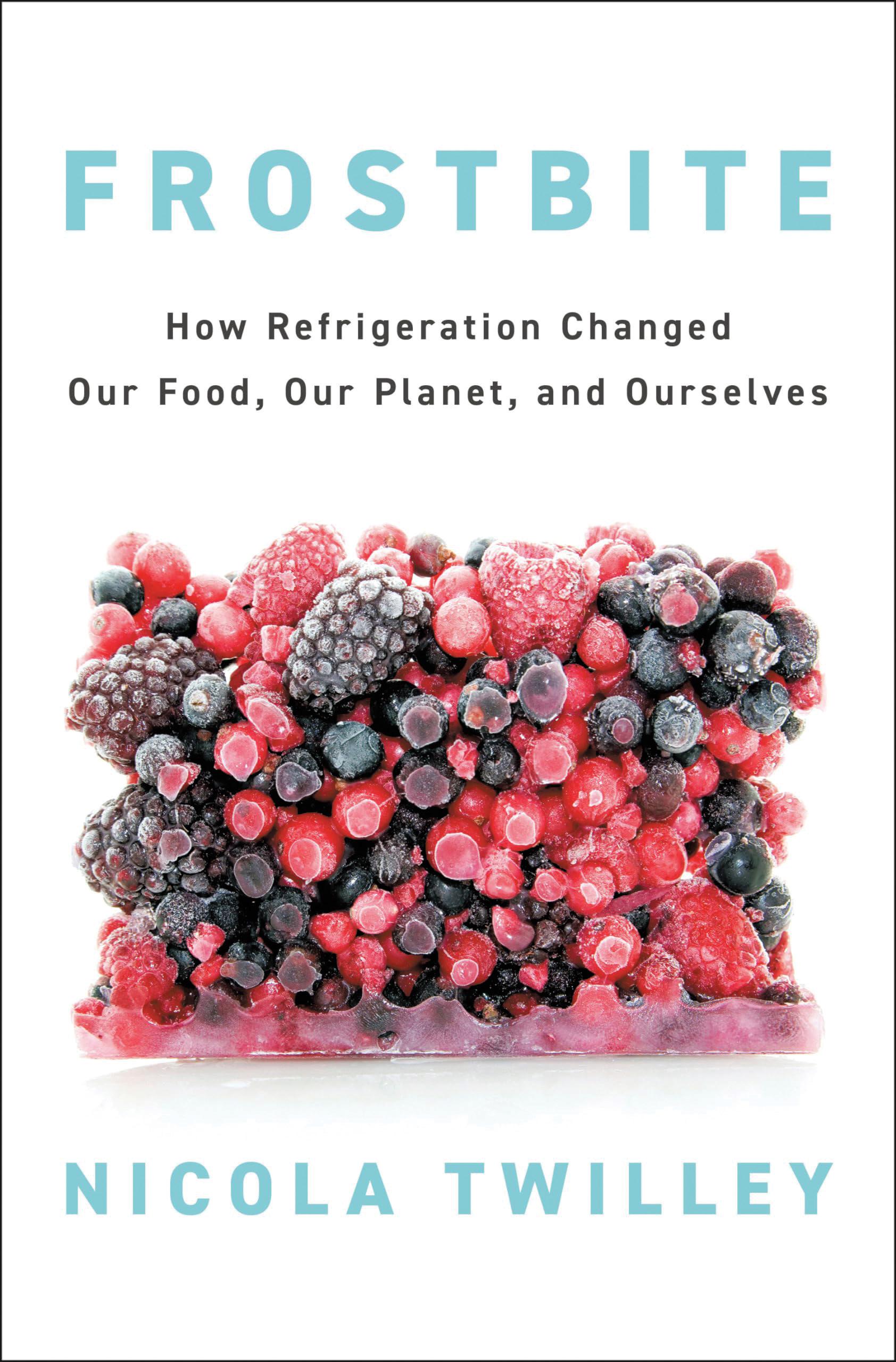



Winner of the Nach Waxman Prize for Food and Beverage Scholarship
Kitchen Arts & Letters and Maron Waxman announced that the 2025 Nach Waxman Prize has been awarded to Frostbite: How Refrigeration Changed Our Food, Our Planet, and Ourselves by Nicola Twilley (Knopf). The prize carries an award of $5,500. Chosen unanimously by this year’s judges for its depth, originality, and extraordinary writing, Frostbite explores how refrigeration has shaped the way we eat, cook, and live.
Twilley dives deep into the “cold chain”—the invisible infrastructure behind how fresh food moves from field to table—and brings it vividly to life. From temperature-controlled warehouses to two-story tanks of frozen orange juice, Frostbite blends science, history, and personal immersion into a story that’s as engaging as it is eye-opening.
In addition, the judges selected for honorable mention A Twist in the Tale: How the Humble Anchovy Flavoured Cuisine by Christopher Beckman (Hurst) and One Thousand Vines: A New Way to Understand Wine by Pascaline Lepeltier (Mitchell Beazley).
Also shortlisted for the Prize out of nearly 50 entries were The Molino: A Memoir by Melanu Martinez (University of Arizona Press) and Intoxicating Pleasures: The Reinvention of Wine, Beer, and Whiskey after Prohibition by Lisa Jacobson (University of California Press).
The Nach Waxman Prize recognizes a book published in the United States in the previous calendar year which is likely to attract new readers to the field of food scholarship or to alter significantly the direction of future research. The win-
ning book must be well-written and accessible to motivate general audience readers. The Nach Waxman Prize honors Nach’s lifelong support for books that do more than inform; they endure.
The judges were:
Darra Goldstein, the founding editor of Gastronomica and editor in chief of the Oxford Research Encyclopedia of Food Studies and winner of numerous prizes for her work in food, including James Beard and IACP awards.
Morna Livingston, Professor Emerita of the College of Architecture & the Built Environment at Jefferson University, who specializes in the study of gravity water systems and cultural landscapes.
Mayukh Sen is a James Beard and IACP Award-winning author and journalist whose book Taste Makers (2021) chronicled the lives of seven immigrant women who changed American cooking. He is also the author of the recently published Love, Queenie: Merle Oberon, Hollywood's First South Asian Star.
In the words of the prize judges, Frostbite does so remarkably well:
Darra Goldstein: Frostbite illuminates the invisible world of the cold chain— the modern journey of perishable food from field to table. In an exemplary blend of rigorous scholarship and engaging writing, Nicola Twilley chronicles the history of refrigeration, from its miraculous ability to preserve foods to the significant ills it has brought to the global food chain, including the compounding effects of refrigeration’s heat in our dangerously warming world. Twilley’s research is both archival and empirical. In order to understand the sensory as well
continued on page 122
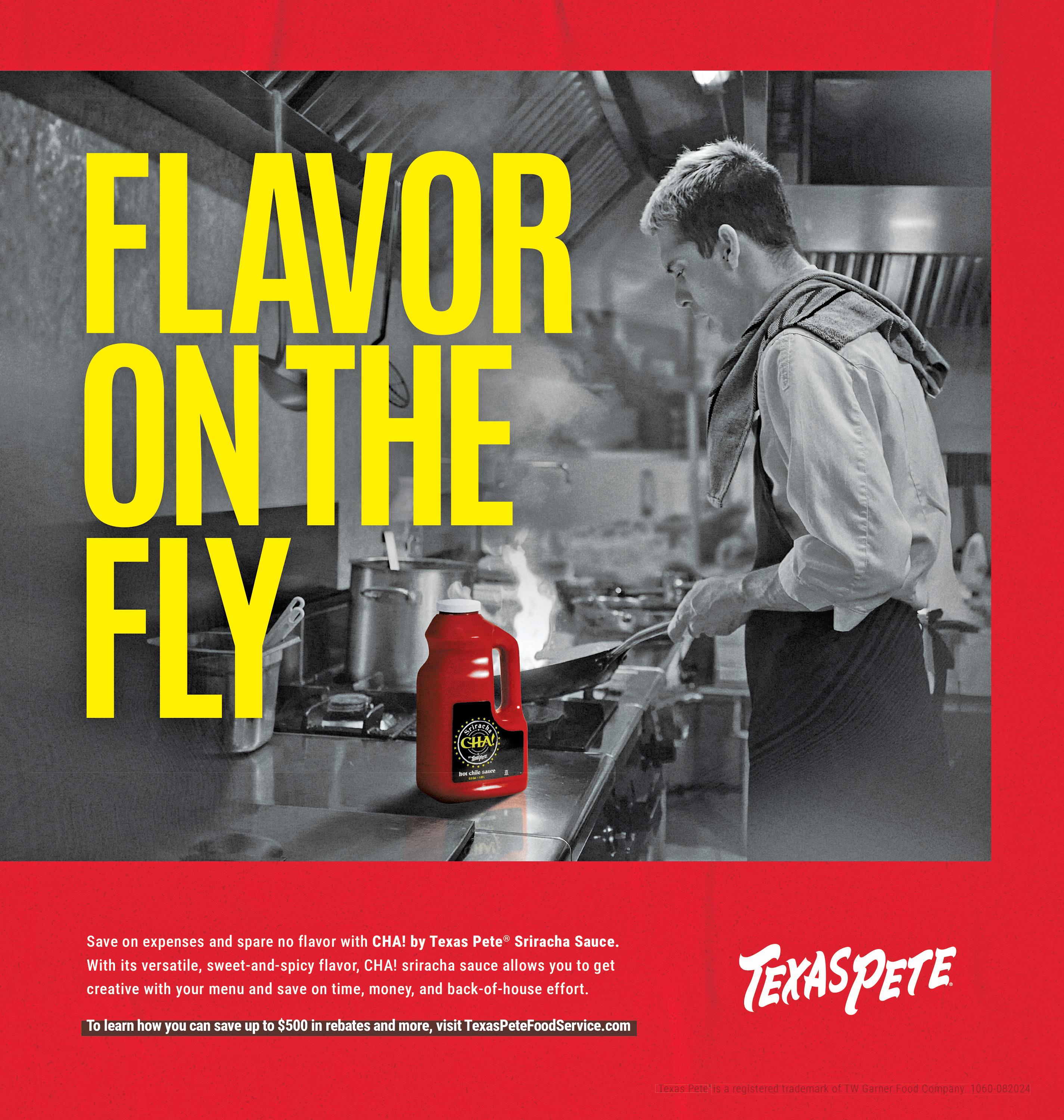
In partnership with Hudson County Schools of Technology (HCST), leading foodservice equipment and product distributor BradyPLUS helped bring a bold educational vision to life by sustainably transforming a decommissioned school bus into a fully functional, professionally equipped culinary lab on wheels. Now serving the Jersey City community, the Outdoor Classroom Food Bus provides students from County Prep High School a handson culinary and hospitality experience while raising funds to support the school’s culinary program.
Unveiled during a ribbon-cutting ceremony on April 10, the Outdoor Classroom Food Bus builds on a 2024 pilot program that enables students to explore all facets of culinary arts, including safety, sanitation, budgeting and resource allocation—all in an immersive, mobile environment. This year’s upgraded model expands the program’s reach and introduces even more advanced kitchen capabilities, thanks in part to BradyPLUS’s role as equipment advisor and foodservice partner.
“This was a truly exciting and innovative challenge,” said Steven Kauf, BradyPLUS sales manager of equipment and supplies. “We worked closely with County Prep to integrate professionalgrade equipment that gives students the same hands-on training they’d receive in a commercial kitchen—all in the tight footprint of a converted bus. This is the kind of project that prepares students not just for jobs, but for real-world entrepreneurship.”
BradyPLUS supported County Prep by delivering hands-on expertise across food storage, preparation, cooking, holding and sanitation. In addition to train-
“[BradyPLUS] are proud to have played an important role in developing an experiential learning center that is sustainable, provides hands-on learning for students and will serve as a model for other schools.” — Steven Kauf
ing students on safe and efficient equipment operation, the company helped lay the foundation for real-time learning, service and community impact.
Working collaboratively with the school, BradyPLUS identified and integrated adaptable foodservice equipment and supplies that empower students to serve a flexible, seasonal menu throughout the year while generating revenue for the program. BradyPLUS also provided the bus’s vibrant graphics, giving the mobile kitchen a polished, professional
look that reflects the program’s creativity. Dishes featured at the grand opening included inventive creations such as the Rhi-Licious Shrimp Tacos, ShroomTastic Burger and Crisp-A-Chokes with zesty lemon garlic aioli.
“Food trucks are one of the fastestgrowing segments in foodservice, increasing at a rate of nearly 11% annually, with more than 58,000 operating in the U.S.,” Kauf said. “They’re also more accessible than traditional restaurants, which makes them an ideal train-
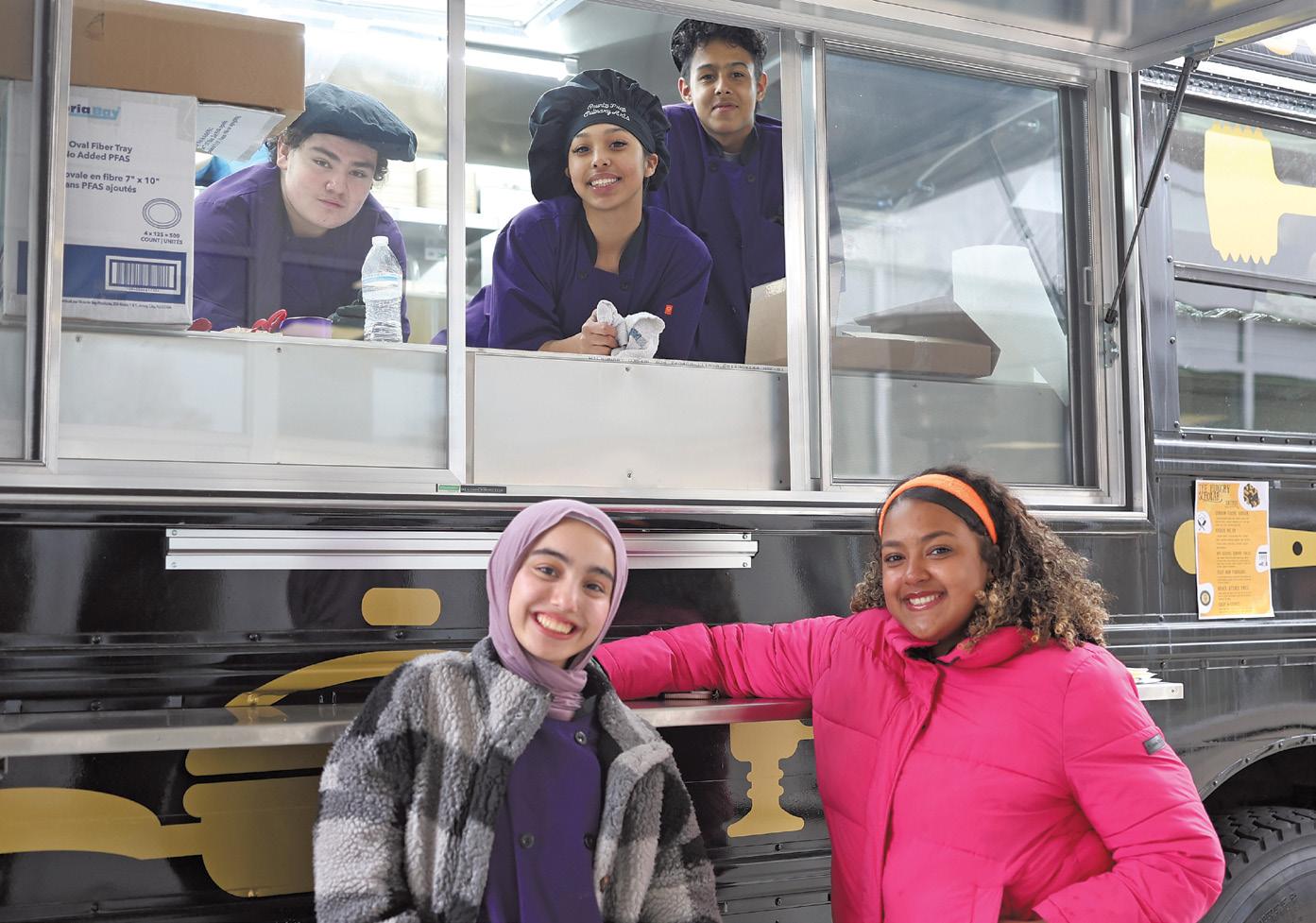
ing ground for aspiring chefs and food entrepreneurs. We are proud to have played an important role in developing an experiential learning center that is sustainable, provides hands-on learning for students and will serve as a model for other schools.”
In addition to function, the project emphasized sustainability. BradyPLUS helped the school recycle water and select energy-efficient appliances, compostable packaging and locally sourced ingredients to reduce the Outdoor Classroom Food Bus’s environmental impact.
“The Food Bus represents the best of what we strive for at HCST — offering experiential learning that empowers our students to apply their skills in meaningful, real-world settings,” said Dr. Joseph Sirangelo, acting superintendent of HCST. “We are proud to offer a careerfocused curriculum and such innovative environments that prepare the next generation of restauranteurs and chefs for the ever-evolving culinary landscape.”
BradyPLUS is a leading national distributor and solution provider focused on JanSan, foodservice, and industrial packaging. We are driven to make customers more successful and operations more productive and sustainable. We offer Supplies PLUS Support: Premium brands, expert advice, and exceptional customer experiences. Our 6,000 associates have a passion for delivering innovative solutions for the business challenges of today and tomorrow. Together, we serve over 100,000 customers nationwide in end markets, including education, government, healthcare, hospitality, restaurants, building services, food packaging & processing, and grocery.
For more information, please visit www.bradyplus.com.
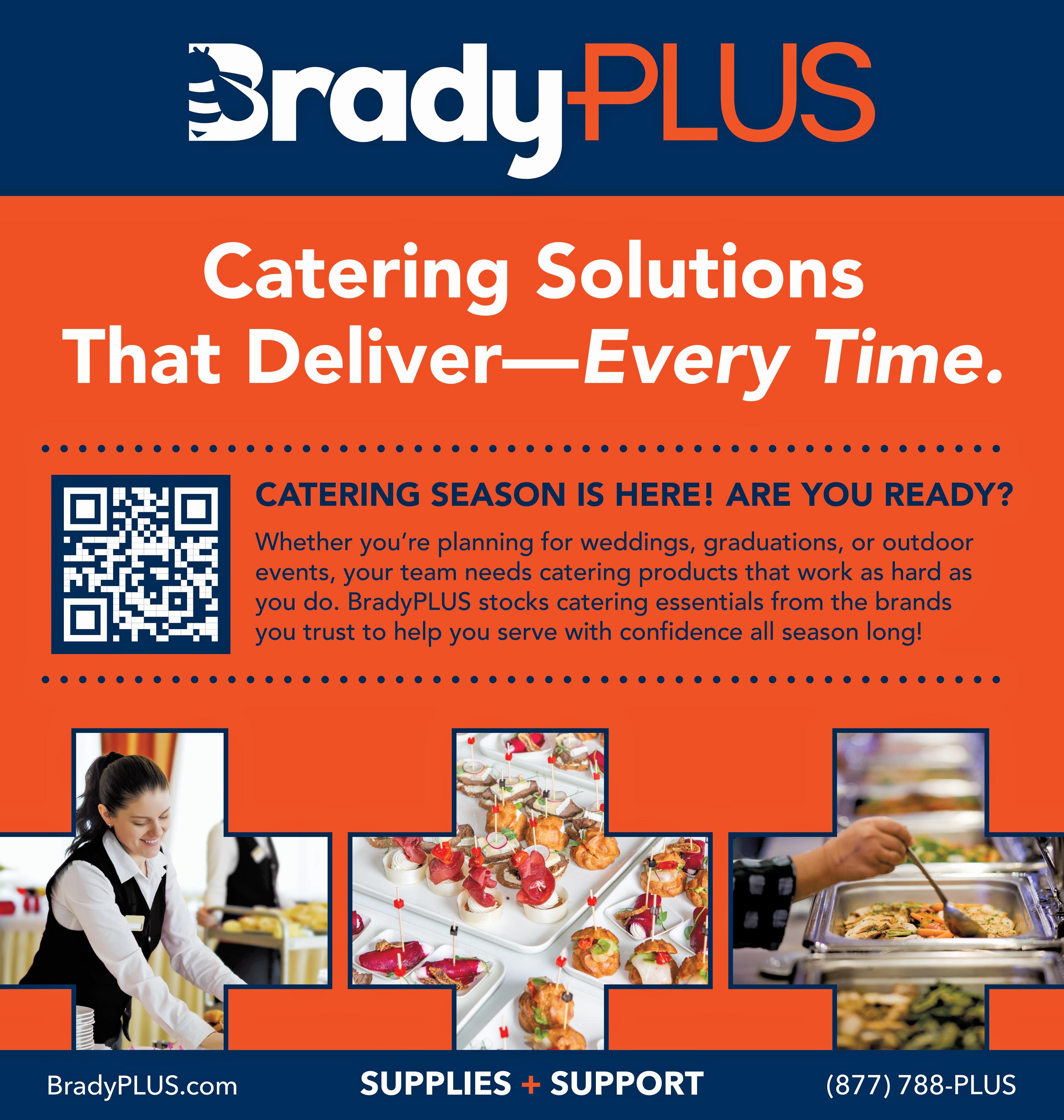
In the world of restaurants and hospitality, the importance of sourcing furniture that is both stylish and functional cannot be overstated. From quick-service establishments to upscale dining venues, the right seating, tables, and decor not only enhance the guest experience but also reinforce the brand’s identity. However, creating a strategy to source cutting-edge furniture solutions with short lead times and manageable costs—especially in an era of unpredictable tariffs—requires thoughtful planning and proactive decision-making.
To build an effective strategy, restaurants and foodservice operators should start by identifying their core needs: design, availability, and cost-effectiveness. This approach helps to prioritize which factors are most critical for the venue’s unique requirements. Next, it’s essential to research suppliers who can meet these needs, particularly those who offer domestically manufactured options to mitigate tariff impacts.
“By staying local, we’ve been able to innovate in ways that imported solutions just can’t match.”
One company leading the way in this space is Modern Line Furniture, based in Hamilton, NJ. Known for their forward-thinking approach, Modern Line anticipated the rise of tariff issues well before they affected the industry. “We saw it coming and knew we needed to build a resilient supply chain,” said Vlad Spivak, Managing Partner at Modern Line. By focusing on domestic production and maintaining partnerships with local suppliers, they’ve been able to keep costs stable while continuing to innovate with cutting-edge designs.
Modern Line Furniture’s decision to manufacture in the United States has positioned them as a reliable source for restaurants and hospitality venues.
“Our goal was to maintain control over production while offering high-quality,
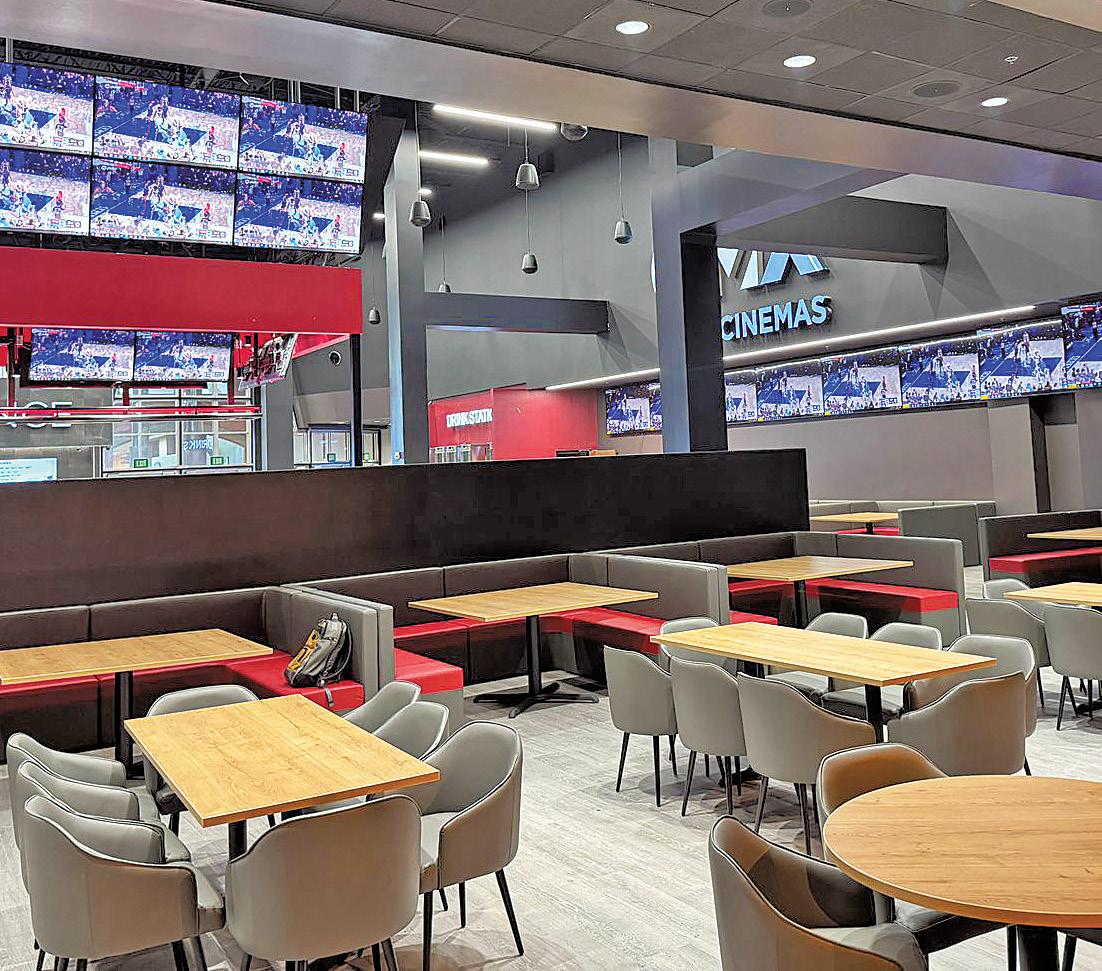
customized solutions,” Yana Katliarova, CFO and managing partner noted. “When the tariffs started impacting our competitors, we were already ahead of the curve.”
Modern Line Furniture offers a wide range of products specifically designed for the hospitality and restaurant industries. Their portfolio includes stylish and durable tables, chairs, banquettes, and bar stools, all crafted to withstand the demands of commercial use. In addition to their standard offerings, they specialize in custom work, creating unique furniture pieces tailored to a venue’s specific aesthetic and func-
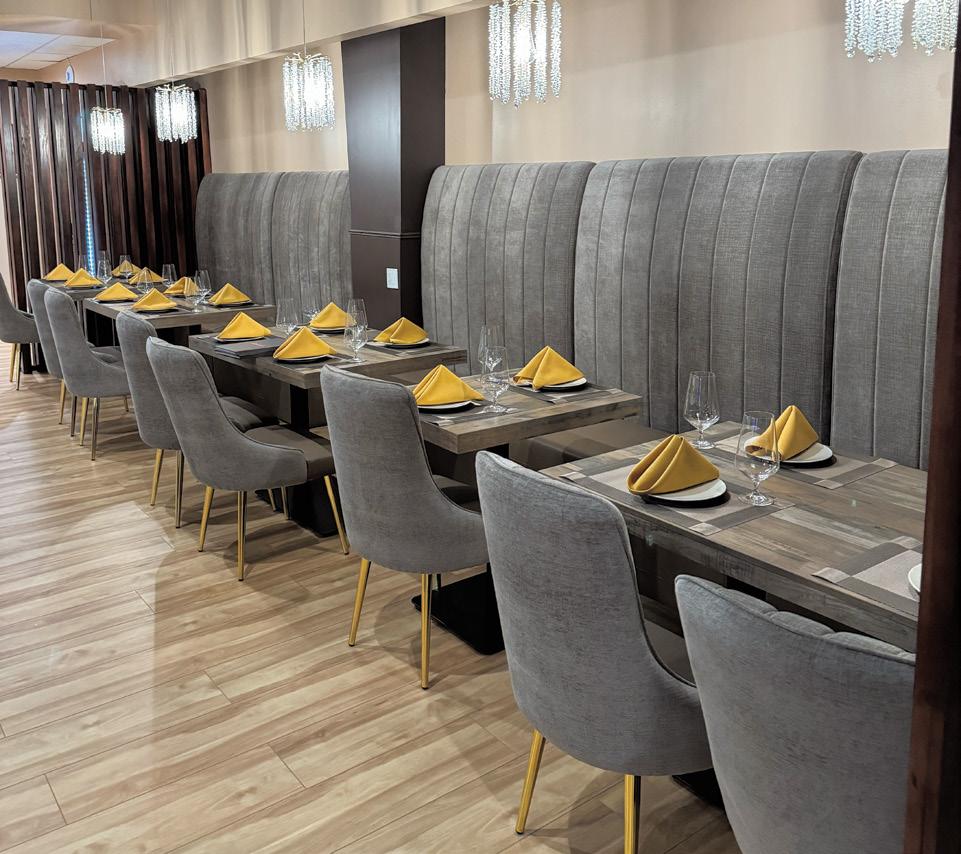
tional needs. Whether it’s a sleek, modern banquette with integrated lighting or a set of uniquely designed chairs featuring custom upholstery, Modern Line ensures that every piece combines form, function, and exceptional quality. “Customization is at the heart of what we do,” Katliarova detailed. “We listen to our clients’ visions and bring them to life with precision and craftsmanship.”
An increasingly popular strategy for cost savings and sustainability involves repurposing existing table bases that
continued on page 118
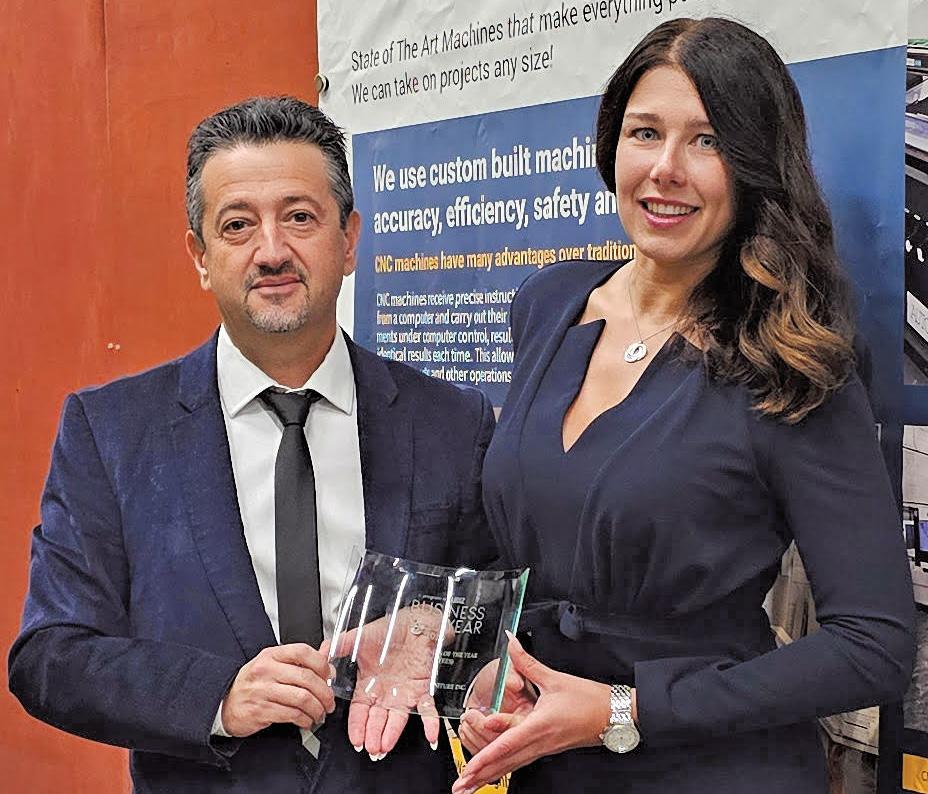


Your menu should be working for you, not against you. A well-designed menu can do more than just list your offerings — it can actively drive profits and improve your bottom line. As a restaurant owner, you need to think strategically about how your menu impacts customer choices and your overall revenue. Here are four powerful strategies for menu engineering to help you turn your restaurant menu into a profit driving machine.
Restaurant menu layout is about more than just pretty design
The layout of your menu isn't just about aesthetics — it’s about guiding your customers’ decisions. Studies show that customers’ eyes are naturally drawn to specific areas of a menu, like the top right-hand corner. This is prime real estate! Place your high-profit items in these key spots to increase the likelihood they’ll be ordered.
You can also use visual breaks like boxes, bold fonts or even small icons to draw attention to certain items. These subtle cues guide customers’ eyes toward the dishes you want to highlight, ultimately boosting sales for your most profitable items.
The way you display prices on your menu has a surprising impact on how customers perceive value. Here are a few tricks to keep in mind:
• Adjust pricing: Using prices like $12.95 instead of $13 can make items feel less expensive.
• Drop the dollar signs: Research shows that removing dollar signs makes customers less focused on cost

and more on the food itself.
• Introduce anchor items: Adding a higher-priced item to each section makes the rest of your offerings feel like a bargain in comparison.
In menu engineering, stars are those high-margin, high-popularity items you want every customer to order. These dishes are your moneymakers, so make sure they stand out. Use boxes, bold colors, or even photos to grab attention.
For example, if your truffle pasta is a
hit and brings in great margins, give it a prominent spot on the menu. Train your servers to subtly recommend these items to diners. When customers feel like they’re getting a “top pick,” they’re often willing to spend a little more.
At the other end of the spectrum are the dogs. These are the dishes with low profitability and low popularity. These items drag down your menu’s efficiency and profitability. If a dish
A streamlined menu with fewer, more profitable options is easier for guests to navigate and allows your kitchen to operate more efficiently.

David Scott Peters is an author, speaker, restaurant expert and coach who coaches restaurant operators how to stop being prisoners of their businesses and to finally achieve financial freedom. His first book, Restaurant Prosperity Formula: What Successful Restaurateurs Do, teaches the systems and traits restaurant owners must develop to run a profitable restaurant. Thousands of restaurants have worked with Peters to transform their businesses. Get his free 30-minute training video http:// www.davidscottpeters.com.
isn’t pulling its weight, consider cutting it altogether or reinventing it into something more appealing.
A streamlined menu with fewer, more profitable options is easier for guests to navigate and allows your kitchen to operate more efficiently. Remember, every item on your menu should contribute to your restaurant’s success.
to menu profitability
Is your menu working hard enough for your business? With just a few strategic tweaks, you can turn your restaurant menu into a profit-driving machine. Track the results of these changes and watch how they positively affect your bottom line.
Let’s make your menu a true partner in profitability!
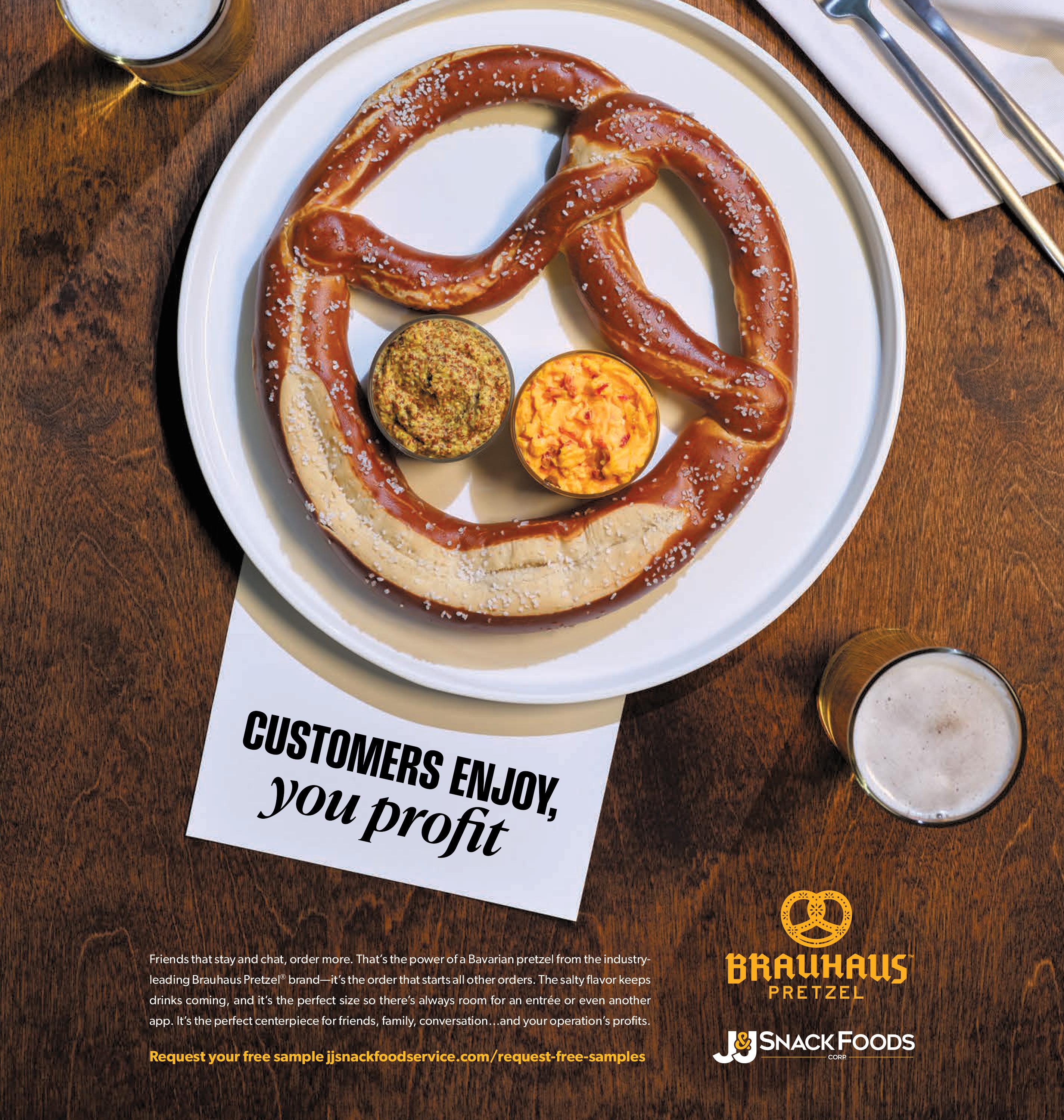
Small and midsize restaurants are under more pressure than ever. Labor shortages, razorthin margins, rising customer expectations, and the shift toward digital dining experiences have created a challenging landscape. For many, the only way forward is smarter—not harder— operations. That’s where technology steps in. From point-of-sale (POS) systems to kitchen robotics and customerfacing automation, smart tech is no longer a luxury. It's a survival tool. But adoption lags. Many operators are still relying on outdated tools or pieced-together systems that cause more friction than they fix.
William Brown, President of FairlyEven, is working to change that. His company helps restaurants and local businesses find and implement the right technologies to streamline their operations, improve efficiency, and future-proof their workflows. “Too often, restaurants are sold on buzzwords and
big-brand hype without understanding what will actually work for them,” Brown said. “Our approach is all about practical, business-specific solutions.”
The first step in successfully adopting smart technology is having a focused strategy. According to Brown and his team, it begins with understanding the workflow. Restaurants should map out their daily operations—front-of-house, kitchen, ordering, and inventory—and pinpoint where the biggest friction exists. Whether it’s long ticket times or manual entry errors, identifying these pain points is key. Once those are clear, operators should define what they want to achieve. That could mean cutting labor costs, reducing mistakes, increasing throughput, or simplifying reporting. With goals in mind, the next step is to prioritize. Trying to overhaul everything at once usually leads to frustration. Most restaurants benefit from starting with one or two foundational improvements—typically POS and online

“We’re not trying to ‘disrupt’ anything. We’re trying to make daily life easier for the people who feed their communities.” — William Brown
ordering systems.
It’s also important to involve the team. “Your staff are the ones using this tech every shift,” Brown noted. “If they don’t buy in or it’s too complex, adoption will fail.” Brown also advised operators to plan for growth. Even if a restaurant only needs basic functionality today, it’s smart to invest in systems that can scale to include integrations with accounting software, delivery platforms, and loyalty programs.
Once a strategy is in place, operators need to research and vet potential providers carefully. Brown emphasized starting with real demos. “Not a slideshow. Not a brochure. A live walkthrough of the actual system,” he added. “It’s the only way to see how it fits your day-to-day.” He also warned against assuming the most advertised brand is automatically the best. Instead, operators should dig into specifics like uptime guarantees, contract terms, tech support response times, and whether the system allows for future upgrades.
Cost is another key factor. Restaurants should look beyond upfront pricing and compare total cost of ownership—hardware, monthly fees, customer support, and long-term contract implications all matter. Leasing equipment can be especially costly over time. “Leasing may sound easy, but you end up paying more than the gear is worth,” Brown continued. Another often overlooked step is speaking to fellow operators. Peer rec-
ommendations can cut through marketing noise and highlight real-world performance. Lastly, Brown suggested stress-testing customer support before signing a deal. “Call the help line before you’re a customer,” he said. “If they treat you like a number now, imagine how they’ll act when you’re locked in.”
This pragmatic and personal approach is what sets FairlyEven apart. Their team of sales professionals and marketing strategists take a hands-on role in helping businesses adopt the right technologies. Rather than pushing one-size-fitsall packages, they focus on getting to know the unique needs of each operation. “We don’t start with a product. We start with the business,” Brown said. “That’s why we do door-to-door outreach and one-on-one consults. It’s not about selling what’s hot. It’s about fitting the right tool to the right workflow.”
Today, FairlyEven’s core offering is their POS system, which was built to address common frustrations in the market. Unlike many popular tablet-based systems that rely heavily on Wi-Fi, their solution includes hardwired setups for reliability. Their POS also uses a dual pricing model that shows two prices— one for cash and one for card—keeping everything transparent and compliant with credit card brand rules. “Our clients don’t want fluff,” Brown detailed. “They want simplicity, speed, and support. We’re here to give them all three.” continued on page 111
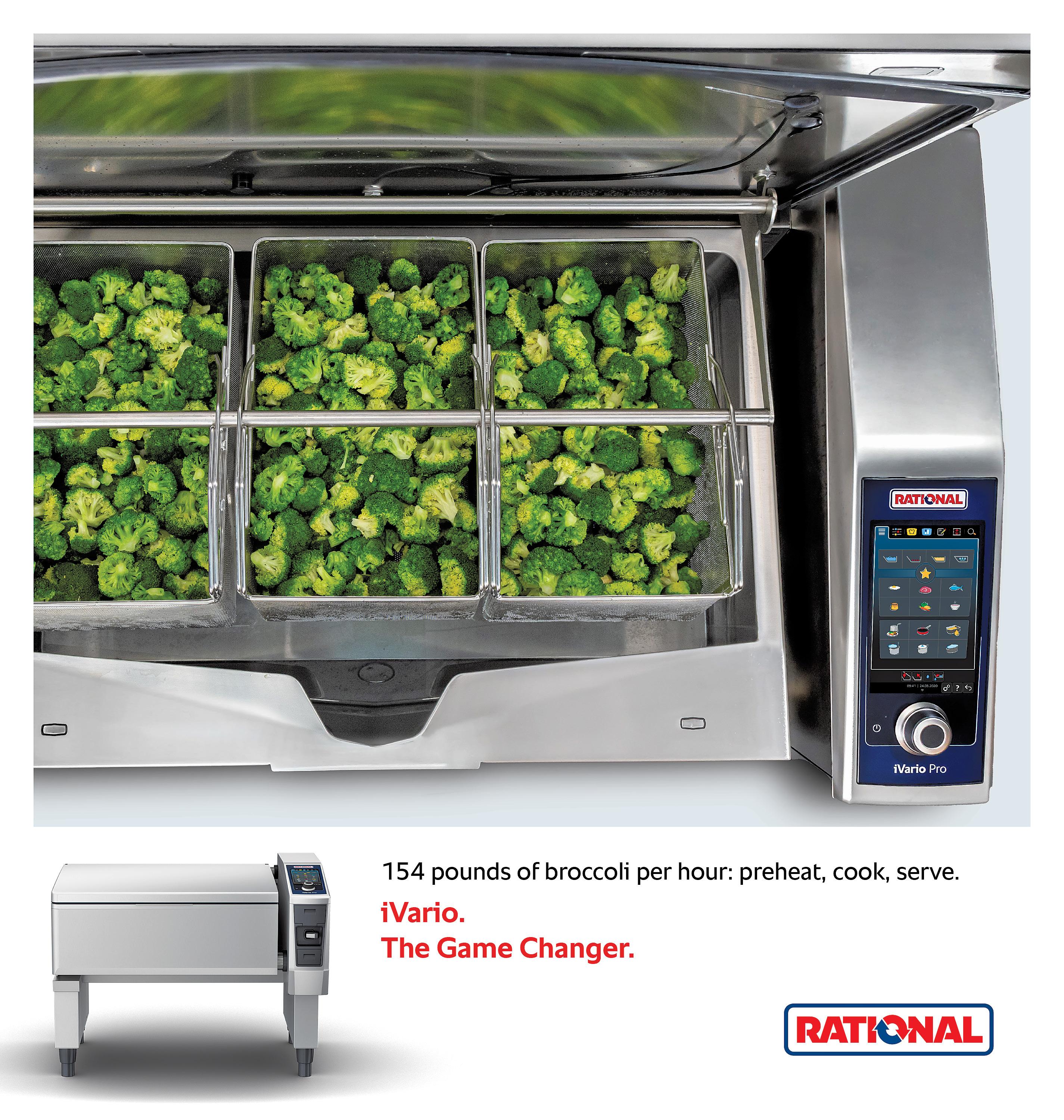




Finding a food manufacturing resource that truly understands the complexity of today’s foodservice landscape isn’t about chasing the lowest cost or the flashiest innovation. It’s about partnering with someone who understands the real-world conditions of your restaurant or foodservice operation: tighter labor, fewer skilled cooks,

compressed prep times, and the need for menu consistency across dayparts. Operators know the grind. Guests still expect great flavor and fast service. What bridges that gap is a manufacturer that doesn’t just market and sell food—but delivers real solutions.
That search starts by looking for a manufacturing partner who thinks like an operator. Among the nation’s most savvy food manufacturers is Reser’s Foodservice, headquartered in Beaverton, OR— a trusted partner to restaurants, non-commercial operators, and distributors looking to run leaner, smarter kitchens. Reser’s delivers fresh, refrigerated solutions that help foodservice teams overcome today’s biggest challenges, from labor shortages to menu consistency. Their extensive portfolio includes prepared sides and salads, hand-cut fruit, tortillas, spreads, and desserts—all designed to reduce
prep, save time, and ensure food safety. According to Ron Salzman, Vice President of Reser’s Foodservice, “We don’t show up with just a product list. We lead with how our food helps an operator solve for labor, consistency, food safety, and prep time.” Salzman said many restaurant teams today don’t have the staff—or the luxury—of scratch prep. “The reality is that there are twelve steps in making potato salad from scratch. Our version comes ready to use, with built-in safety and consistency, but operators can still make it their own with signature spice blends or garnishes,” he added. What operators need is food that performs. That means it must deliver freshmade flavor, have a long refrigerated shelf life, hold well during service, travel well for off-premise, and require minimal back-of-house skill. That also means the manufacturer must provide versatile components that can flex across the
“You don’t need new labor to build a new daypart. You need food components that flex.” — Ron Salzman
menu to keep SKU counts low and operations efficient. “Nobody wants to bring in five SKUs to support one menu item,” Salzman noted. “We help operators simplify their inventory and use that same SKU across breakfast, lunch, dinner, and late-night.” SKU consolidation is another Reser’s strong suit. With space and freezer capacity shrinking, operators need fewer, more flexible products. The labor side is especially critical. Reser’s doesn’t position its food as a labor eliminator— but as a labor reallocator. “We know teams are shrinking, but we also know nobody wants to let staff go. Our products help reassign labor to higher-impact areas, like guest-facing roles or the line where skilled hands matter most,” Salzman continued. The logic is simple: do less prep, do more service, and ensure everything that leaves the kitchen is consistent and food-safe.
So how does a restaurant or foodservice operator build a daypart strategy that works for today’s leaner teams? First, they need to start by defining what kind of signature flavor they want to be
continued on page 110

Labor shortages and soaring food costs have tightened the margins across restaurants and hospitality venues nationwide. From fine dining to fast casual, operators are navigating a minefield of economic pressures—and it’s driving a renewed, sharper focus on one often-overlooked piece of the business: the beverage program.
“Margins are thin everywhere right now,” said David Vogel, Founder and CEO of Badger Bevs. “So your bar menu isn’t just a nice-to-have anymore—it’s a profit center that has to, more than ever, pull its weight.”
Nowhere is that more apparent than in the evolving world of cocktail culture, where customer expectations have shifted rapidly. The rise of the
“If you’re taking the buzz out of the cocktail, the mixer becomes the star.”
— David Vogel, Badger Bevs
non-alcoholic (NA) cocktail movement—driven by a growing base of sober-curious or health-focused patrons—has added complexity, but also opportunity, for operators willing to innovate. Simply put, guests want the craft, the presentation, the taste— but not necessarily the alcohol.
In this new landscape, top-quality mixers are no longer optional— they’re essential. “If you’re taking the buzz out of the cocktail, the mixer becomes the star,” Vogel added. “That means what’s in the bottle matters
more than ever.”
Creating a cocktail experience without alcohol means that the depth, character, and complexity must now come from the ingredients that remain. That’s where brands like Badger come in. “Our approach was always to craft the best-tasting, cleanlabel, high-carbonation mixers that could stand on their own—whether they’re mixed with alcohol or not,” Vogel noted.
Badger’s product line includes meticulously developed options like

blood orange, ginger beer, grapefruit, and tonic—all designed to provide premium flavor and texture without artificial ingredients. Vogel’s vision for Badger focuses on both performance behind the bar and the aesthetics of the cocktail. “The difference between a cheap mixer and a great one is pennies in the glass,” Vogel detailed. “But if someone sends a drink back or doesn’t return because it didn’t live up to expectations, that’s a cost no one can afford.”
Adding further pressure is the uncertain state of international trade. With tariffs fluctuating and global supply chains remaining fragile postCOVID, importing premium mixers from overseas—particularly Europe— has become more complex and expensive. That’s prompted a shift toward domestic suppliers.
“From the beginning, we believed in building something Americanmade,” Vogel outlined. “We didn’t build Badger because we saw tariffs coming—we built it because we wanted to make something great, here, for American restaurants.”
Now that tariffs are back on the table, the decision looks more prescient than ever. Many popular legacy brands, like Fevertree, are facing changes in ownership and distribution—moves that may affect quality and availability for their high-end customers.
“We’ve already gotten calls from distributors and bartenders who are concerned about what’s next,” Vogel said. “They don’t know what direction some of these brands will go in, but they know they want consistency, quality, and availability. That’s what we deliver.”
continued on page 110

In the ever-evolving world of foodservice, operators face a constant challenge: finding menu items that feel fresh and fun without requiring a complete kitchen overhaul. That’s where products like Stuft Tots came into play, offering innovation in a simple, practical format.
Foodservice operators, particularly in convenience stores, quick service restaurants (QSRs), and other high-volume settings, are always on the lookout for new menu items that balance excitement with practicality. The key is finding items that offer a fresh take without overwhelming back-of-house operations.
Operators across the U.S. are creating a buzz about Stuft Tots, crispy filled bites that deliver bold flavors in a portable, easy-to-serve format. Stephen Caldwell, President & CEO of Stuft Tots, said, “Menu fatigue is real—and we’re here to wake things up. Operators are constantly looking for something that’s fresh, fun, and doesn’t require a complete kitchen overhaul. That’s where our crispy filled products come in.”
“Versatility is what operators appreciate most. They can introduce something new without reworking their entire menu.” — Stephen Caldwell
Stuft Tots were born from a simple craving: why hasn’t anyone made a stuffed hash brown in the U.S.? After tasting a similar concept overseas, Stephen Caldwell couldn’t get the idea out of his mind. “I came home, couldn’t stop thinking about it, and decided to create it myself,” Caldwell noted. The result? Crispy on the outside, melty and cheesy on the inside—a perfect comfort bite.
Stuft Tots are clean label, gluten-free, and made with 100% U.S.-sourced ingredients. They’ve quickly become popular in thousands of convenience stores and foodservice programs nationwide.
What makes Stuft Tots truly unique is that we’re the first and only to market with a crispy, hand-held potato bite that’s stuffed from the inside out with a U.S. patent. It’s not just about being different—it’s about solving a real need. Operators want something fast, exciting, and premium without the prep or mess.

Versatility and novelty set these products apart. From breakfast to late-night snacks, Stuft Tots fit seamlessly into diverse menus without requiring significant changes in operations. Operators love that they’re fully cooked, portioncontrolled, and can be heated in minutes—either in an oven, fryer, or hot case.
Caldwell continued, “Our products are designed to fit anywhere on the menu, whether it’s a breakfast box, a side for sliders, or a late-night hot case snack. For breakfast, they’re a grab-andgo hero—quick out of the oven, no utensils needed, and packed with proteins like bacon, egg, and cheese. At lunch, they’re a fun side or add-on to sandwiches and bowls. In the afternoon, they serve as a premium snack, especially in convenience and campus settings. And by late night, they’re the star—craveable, indulgent, and perfect for that hot-case moment when people want something satisfying, fast, and familiar... but different. Operators love that they can plug our tots bites into existing menus without changing a thing—and suddenly they’ve got something fresh, premium, and margin-friendly.”
The flavor variety is a major selling point. From classic Ham & Cheese to bold Bacon, 3 Cheese & Jalapeño, the options cater to a wide range of tastes and meal occasions. This makes them ideal for operators looking to keep menus fresh throughout the day.
“Versatility is what operators appreciate most,” Caldwell added. “They can introduce something new without reworking their entire menu.”
One standout success came with Circle K’s Holiday Station Stores in the
Midwest. Initially planning for an eightweek supply of “Spud Kicks” (a branded Stuft Tots offering), the stores sold out in just days, leading to a rapid reorder. “We moved 220,000 lbs in just 8 weeks across 600 stores—400% over forecast,” Caldwell detailed.
Operators are seeing impressive margins ranging from 30–50%+ with the Stuft Tots. The secret lies in their efficiency. Our products are fully cooked, portioncontrolled, and designed for low-labor, low-waste prep. There’s no need for added ingredients or complex assembly—just heat and serve. This simplicity enhances speed, consistency, and profitability. “Compared to other popular sides like fries, mozzarella sticks, or breakfast sandwiches that demand more prep or have tighter margins, our crispy filled bites consistently deliver superior menu appeal and stronger bottom-line performance. Plus, with clean label ingredients and gluten-free certifications, they meet today’s consumer demands for both quality and convenience.”
Operators are getting inventive with how they incorporate Stuft Tots into their menus. One popular approach is the Loaded Tot Nachos—replacing traditional chips with crispy filled tots, piling on the toppings, and creating an indulgent, shareable hit. For breakfast, many operators serve Breakfast Boxes featuring tots paired with fruit, yogurt, or a boiled egg—perfect for grab-and-go convenience.
C-stores and QSRs are also leveraging Stuft Tots as Slider Sidekicks—adding two or three tots as a premium upsell with mini sandwiches or burgers. Late continued on page 113



Green beans are one of those vegetables that you can end up taking for granted. Or worse, forget to keep in regular rotation in your fridge. I want to wake you up to the wonderful world of green beans, and June is the season when they are fresh off the vine.
Sunny days and cool nights make Greece the perfect climate for green beans – it’s no wonder they are a highlight of many a farmer’s market.
Green beans also have a long history. They were first introduced to the Mediterranean region back in the late 1400s, with Christopher Columbus following his second voyage, and to this today remain a critical crop of the region.
It is also worth noting that since arriving in Greece, green beans, and
other beans have also been known as a “poor man’s meat,” and have been a good source of protein (compared to other green vegetables) as part of the Mediterranean diet.
Green beans are referred to by many different names: french beans (haricot vert); string beans; flat beans; Romano beans; snap beans; or just "snaps”. No matter how you like to refer to them, green beans are low in calories, rich in nutritional value, and a good source of protein and fiber - they’re delicious and make you feel full, so what’s not to like? Green beans also help fight inflammation, can help lower cholesterol, and are a good source of folate and potassium, known to aid in regulating blood pres -
sure. They also contain vitamins C and A, iron, and contain beneficial minerals including calcium.
I am often asked if it’s better to eat green beans raw or cooked. And the short answer is, it’s okay to eat them either way, but if enjoying them raw, make sure you give them a good wash. Also, some people find digesting them raw can be a little bit harder on your system, so whatever suits you best is the best way to consume them.
It is not surprising that green beans in Greece are often tied to what is referred to as ‘ladera’ style cooking – which basically means, cooked in oil, and of course that means with olive oil (my liquid gold). They can be served up in a variety

Chef Maria Loi is an entrepreneur, Greek food ambassador and healthy lifestyle guru. The author of more than 36 cookbooks, she is also the host of the award winning PBS series, The Life of Loi: Mediterranean Secrets, now airing its third season on PBS stations nationwide. Season 3 is streaming on PBS Passport currently, and coming soon to Amazon Prime Video, Apple TV, Roku and PlexTV, while both seasons 1 & 2 are available to stream on PBS Passport, Amazon Prime Video, Apple TV, Amazon Freevee, Roku, and Plex TV. The Life of Loi aims to build an inspirational, educational movement around the Mediterranean diet and lifestyle. Loi Food Products, her specialty brand built on traditional ingredients from Greece, includes refrigerated dips, savory pies, pastas, botanical herbs, and olive oil sold on QVC, at Whole Foods Markets, Fresh Direct, and at other retailers. Chef Loi is also the namesake of the acclaimed restaurant, Loi Estiatorio, in the heart of Midtown Manhattan. Connect with her on LinkedIn, follow her on Instagram and Facebook, and learn more about her food philosophy at loiestiatorio.com/chef-loi/.
of ways, used as main dishes, side dishes, or eaten as I use to do when I was young, fresh off the vine (after a good washing!) Braised green beans are great as a side dish. I like to cook them up by slowly simmering them in a simple sauce made with grated tomato, onion, garlic, and olive oil, of course. You can also top them off with a bit of feta and a sprinkle of fresh dill, which adds a dash of flavor, texture, and some bonus protein.
continued on page 66


Sauteed green beans are super simple and delicious – just a touch of olive oil, a squeeze of lemon, and a pinch of salt provides an incredible side dish. If you’re a garlic lover like me, add some to the pan and let it brown as the green beans caramelize. Alternatively, you can forsake the garlic and instead, after sauteeing, dress them with a healthy dose of olive oil and red wine vinegar, topping them with some fresh tomato – it’s a super refreshing alternative means of preparation.
Growing up my Papou (grandfather in Greek) used to always serve up Fasolakia me Ntomata, a soul-comforting dish made with green beans, tomatoes, potatoes, fresh herbs, and of course, my beloved olive oil. To this day, I can’t live without this light-yethearty summery stew.
This traditional dish is a Greek classic, and it does take more time to cook than a simple sauté. Gently stewed with tomato, potatoes and green beans, plenty of olive oil and herbs, this is considered a main dish, and a star for those who like plant-forward eating. Also of note, I have always used Romano beans (also known as flat beans), which are the main kind of green bean you find in Greece, and though a little more labor intensive to prepare, well worth the time spent.
They also work wonderfully as an upscale garnish for savory summertime cocktails.
That said, any green bean you like will do for this delectable dish.
Greek-Style Potato and Green Bean Salad is one of many cold dishes that can feature green beans as a star ingredient. Light, refreshing, and a great addition to a summer meal or picnic, this dish comes together quite quickly. Small potatoes work best when preparing this dish, and feel free to use red, gold and/or even russets which all add a slightly different flavor profile to the recipe. You’ll want to blanch the green beans so they retain their beautiful color and a bit of their signature crunch, and don’t cook the potatoes too long either - you don’t want them getting mushy. The salad is mixed with fresh herbs like parsley and dill, then topped off with a simple vinaigrette made of olive oil, fresh lemon, and emulsified with a bit of Dijon mustard and some garlic for a nice pop of flavor.
Don’t forget about pickled green beans either! These tasty pods are perfect for pickling, and the result is a bright, crunchy, briny treat that compliments many other dishes – think about substituting them for capers and pairing with lemon to brighten up a succulent grilled fish dish, or using them instead of traditional pickles as a compliment to a summer barbecue.
I have never been the most ambitious gardener, but my Papou certainly set a good example for me. He loved growing all sorts of fruits and vegetables in our family’s garden - not just in the summer, but year-round. He told me that if you want to start out with something fun to grow and quite spectacular, try gigante beans. They aren’t green beans per se, but are in the bean family, and are colloquially known as white runner beans. The Greek climate is perfect for them. He said all you have to do find a sunny spot, plant the seeds directly in the ground alongside a nice trellis, and you’ll be surprised how quickly they grow - the results are amazing. Because of Papou, I am particularly partial to gigante beans because of their size, texture, wonderfully buttery flavor, and meaty texture.
Here in the US, if you want to supplement your garden with an additional bean, try a classic green bean. You can grow them in a container right out on your patio. They need plenty of sun, and should be watered daily… but what could be better than picking them right off the vine, and incorporating them to a variety of delicious summer dishes?!
Whether you grow them yourself, get them from the farmer’s market, or buy them at the grocery store, one thing is for sure – fresh green beans are synonymous with the joy and verdancy of summer!


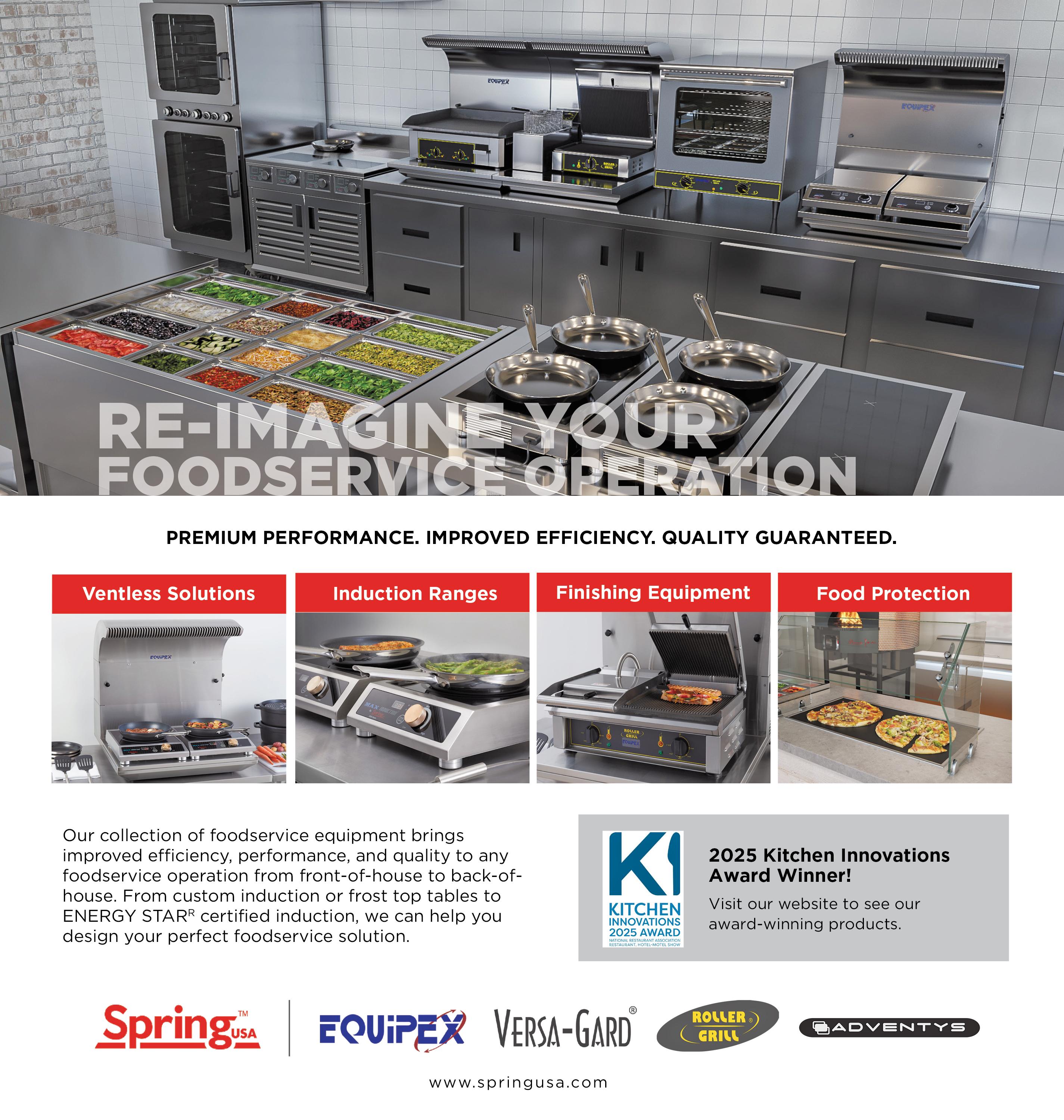
Restaurants today are in the middle of rewriting what hospitality means. For decades, the guest experience hinged on service, connection, and dining in. But now? The model is shifting—fast. Operators are torn between crafting a modern service experience and transforming into production machines built for off-premises efficiency. At the 2025 National Restaurant Association Show in Chicago, this question sat front and center: Do we double down on fullservice interaction, or pivot to a future dominated by takeout and delivery?
The Show, which drew over 53,000 professionals to McCormick Place from May 17–20, was buzzing with this identity crisis—and the innovative strategies that might solve it. Exhibitors, speakers, and attendees weren’t just looking for new products. They were seeking answers. How do we serve a customer who no longer wants to sit and dine? How do we retain employees in a hyper-competitive market? And what do we do when our guests stop drinking?
“We saw more purposeful engagement and idea-sharing this year than

ever before,” Tom Cindric, President of Exhibitions for Informa Connect Foodservice Group, said. "This year's Show delivered exactly what operators need in today's uncertain market — tangible solutions to current challenges and a clear vision of opportunities ahead.”
This year’s show spotlighted sharp shifts in strategy across the foodservice industry. Supply chain innovation stood out, with operators leveraging creative sourcing, local vendors, and alt products to boost reliability and control costs. Workforce efficiency took
center stage, driven by automation, connected tech, and tighter workflows aimed at reducing labor strain and improving retention. Wellness trends reshaped menus, with a focus on clean labels, customizable portions, and dietary flexibility—fueled in part by rising GLP-1 usage.
Off-premises demand stayed strong, prompting fresh ideas in kitchen layouts, packaging, and fulfillment. Operators leaned into customization and limited-time offers to deliver variety and value without ballooning food
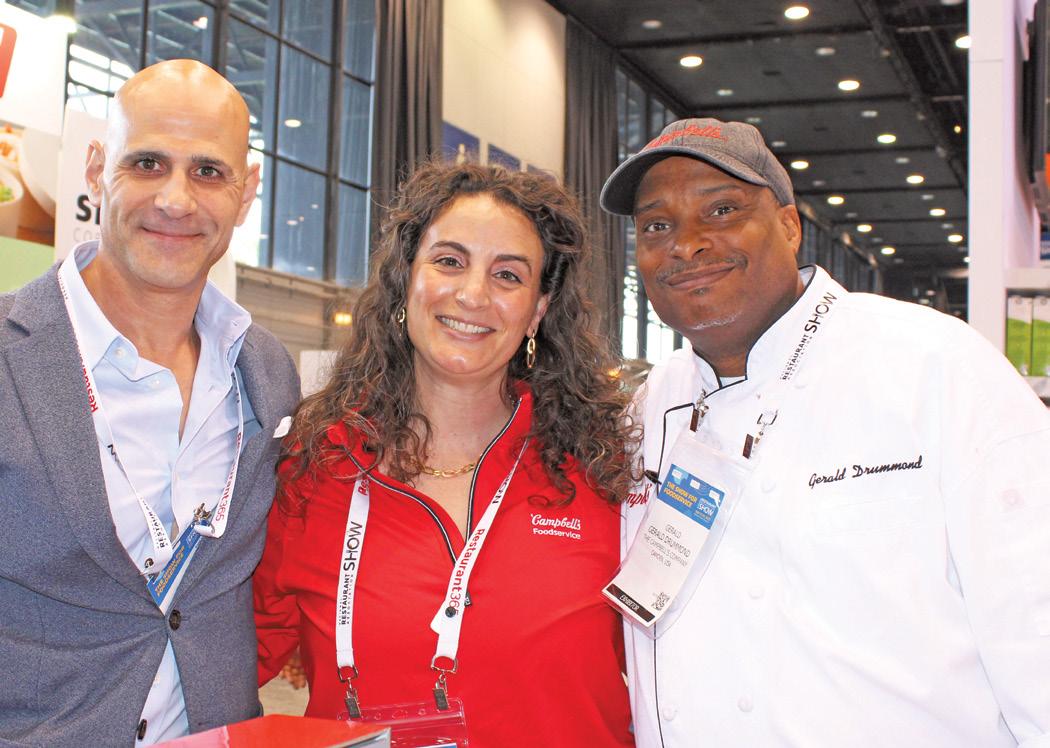


costs. Data integration surged, enabling smarter ops, inventory, and marketing decisions. Bold global flavors brought the heat, with spicy, smoky, and Asian influences dominating new product launches and demos. Overall, the show signaled a clear push toward agility, personalization, and operational intelligence.
Solutions came in all shapes and sizes—from AI-powered fryers to lowABV mocktail menus, plant-based
continued on page 70
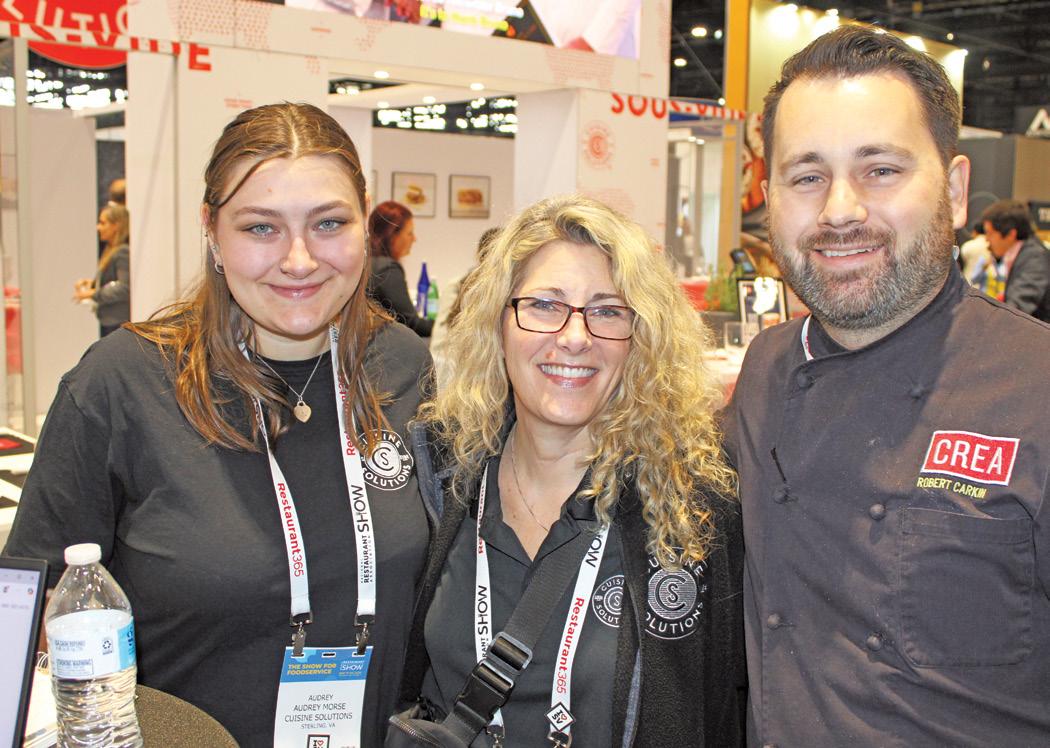



meatball innovations to tech tools that turn fryers and refrigerators into smart systems. And while the exhibits were packed with tools to make kitchens faster and leaner, the seminars raised big questions about what it means to run a restaurant in an age of economic pressure, cultural shifts, and customer redefinition.
Operators today aren’t just fighting rising food and labor costs. They’re navigating a total rewiring of consumer behavior—and often with legacy technology that can’t keep up. Jennifer Bell, Chief Marketing Officer for Lettuce Entertain You Enterprises, Inc., shared her thoughts on the value of attending: “We have 60 different concepts, everything from Asian to steaks to seafood, and each has different needs. The Show has something for everyone, and that's what we love about it. We come here, and no matter what type of restaurant we have, there's something here for us.”
One of the biggest pressure points? Labor. Hiring and keeping talent remains a make-or-break issue, especially for independents and multi-units outside major metros. Automation was a recurring answer—one made more approachable through back-of-house solutions like robotic prep assistants, auto-dispensing beverage systems, and AI-driven line management. But no one suggested technology alone would save the day. Technology should support and empower your team—not replace it.”
Another issue creating tension in kitchens: the Ozempic effect. As appetite-suppressing GLP-1 drugs go mainstream, operators are watching average ticket sizes fall and consumer preferences shift toward nutrient-dense, protein-forward, and lower-sugar meals. “It’s not just about smaller portions,” one education session panelist said. “It’s about menus built around control, function, and wellness—not indulgence.”
That shift affects everything, from ingredient sourcing to beverage strategy. Dry January has become Dry All Year. And while the mocktail boom is real, many operators are struggling to replace alcohol revenue. Show demos featuring botanical spirits and lowcontinued on page 72

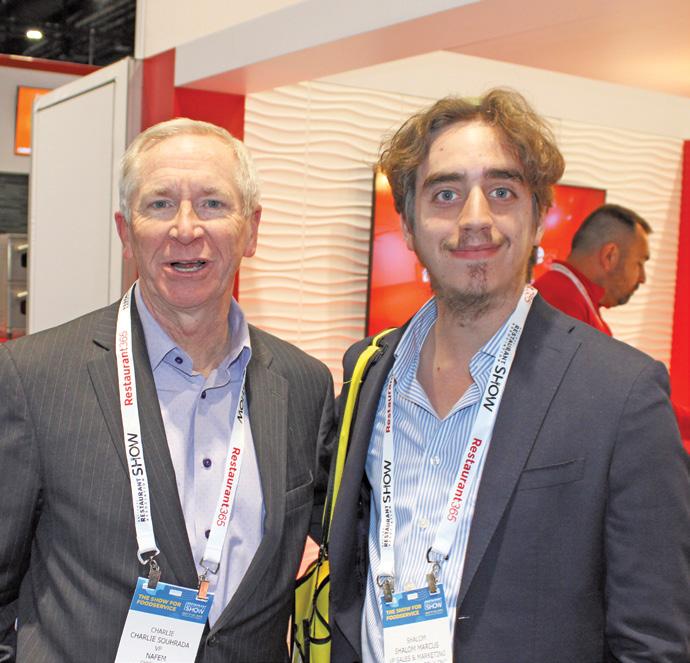
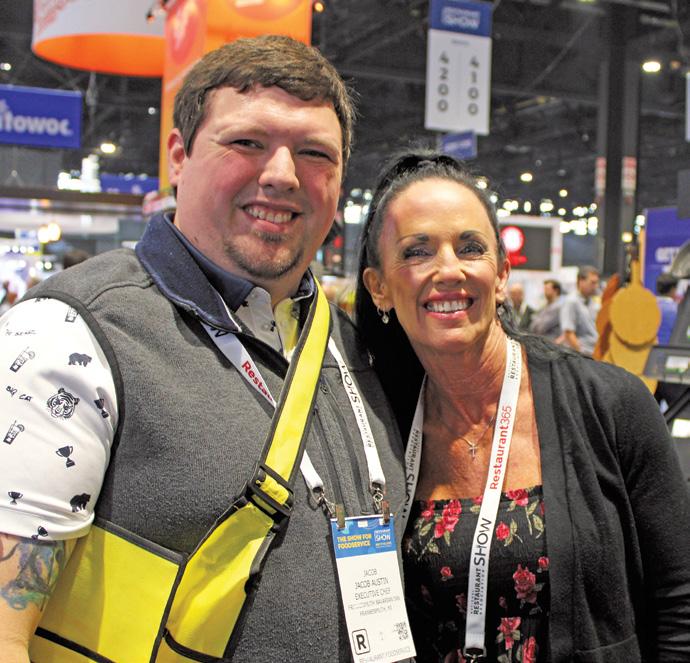
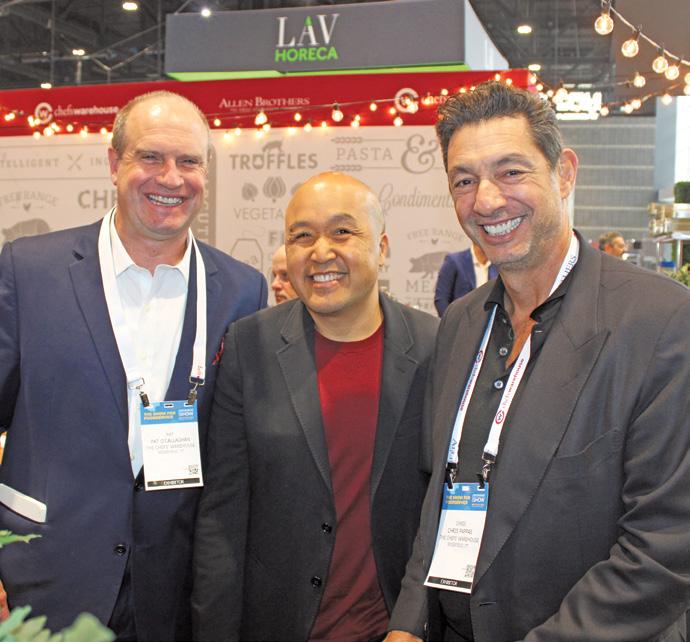
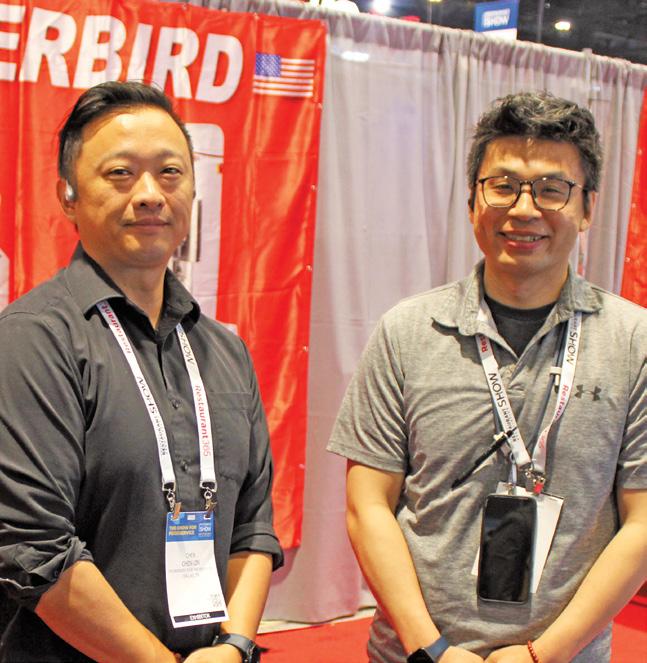


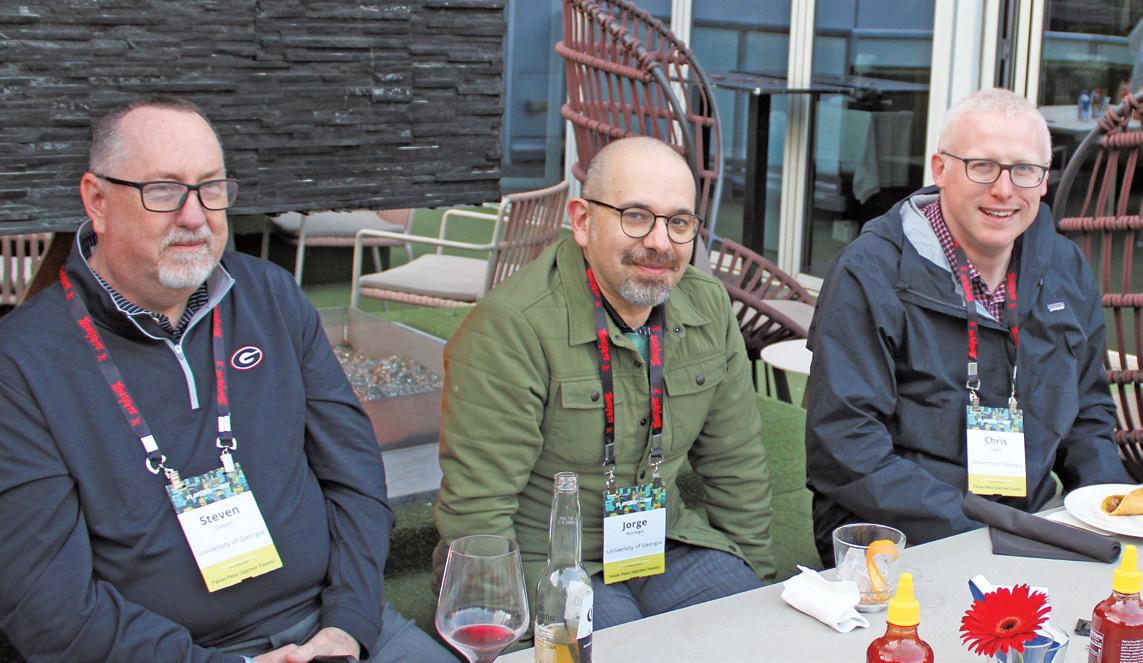
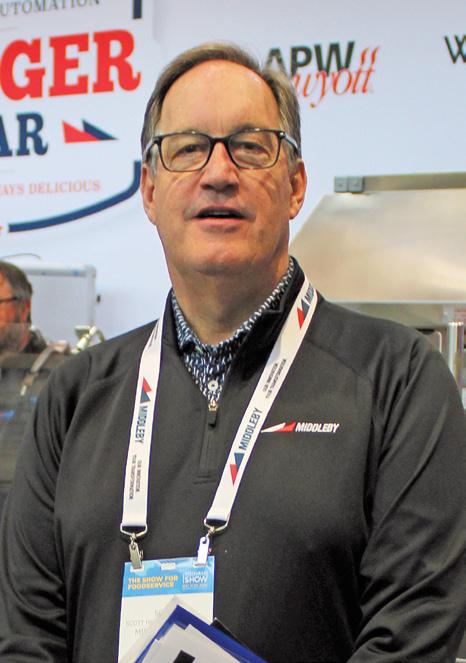
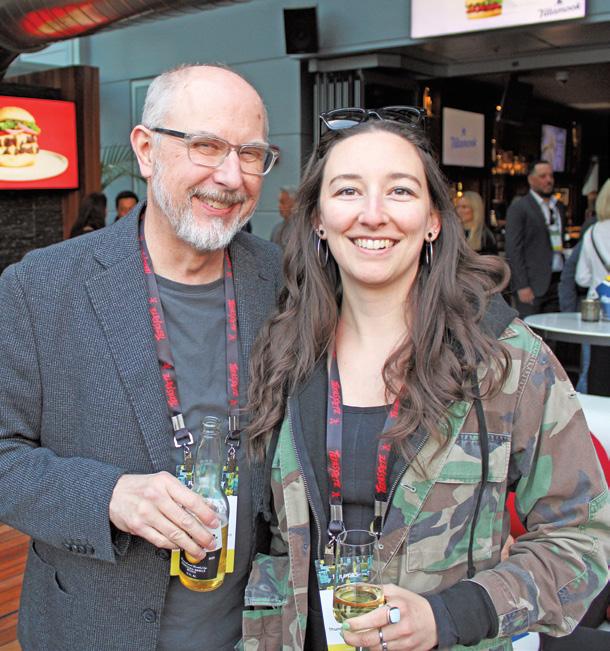

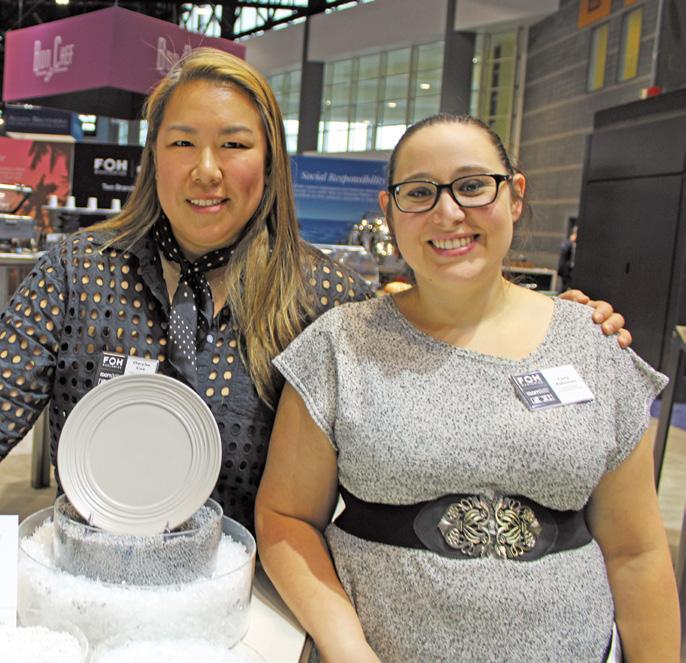

sugar alternatives helped bridge the gap, offering ways to maintain margins while meeting new expectations.
Plant-based food also had a stronger showing than ever These products weren’t presented as trendbait— they were positioned as profit drivers that satisfy dietary flexibility without operational headaches.
And for those still holding on to the idea that the restaurant of the future is a gas-powered kitchen buzzing with servers taking orders by hand? The electric kitchen revolution is real. Many exhibitors leaned into ventless, plug-and-play equipment designed for safety, sustainability, and smaller footprints—meeting the realities of labor shortages and green regulation head-on.
With more than 45 operator-led sessions, the Expo + Education badge program, presented by Campbell Soup Company, offered actionable content across six curated tracks: Culinary Insights, Operations Solutions, Marketing, Technology, Beverage Trends, and Workforce. Badge holders also attended a general session with Courtney Storer, culinary producer of FX’s “The Bear,” and Donnie Madia, managing partner of award-winning One Off Hospitality Group.
On Show-Sunday, Carla Hall, acclaimed chef, author, and TV personality (“Top Chef,” “The Chew”), headlined the Show’s keynote with an inspiring conversation on passion and purpose. The education program also featured Technomic’s “Lessons from the Winners,” helping attendees connect macro trends to practical strategies.
The Culinary Experience featured an extensive schedule of live demonstrations, tastings, and book signings, that allowed attendees to engage directly with chefs and explore new culinary inspirations. Highlights included presentations from: Rick Bayless, Nina Compton, Dominique Leach, Pyet DeSpain, Nyesha Arrington and Dara Yu on Sunday. Show Monday's line up of Top Chefs included Jet Tila, Chef Eric Adjepong and Jonathon Sawyer. Among the show highlights was once again the (FABI) Awards, celebrating products that are redefining menus, driving consumer demand, and help-




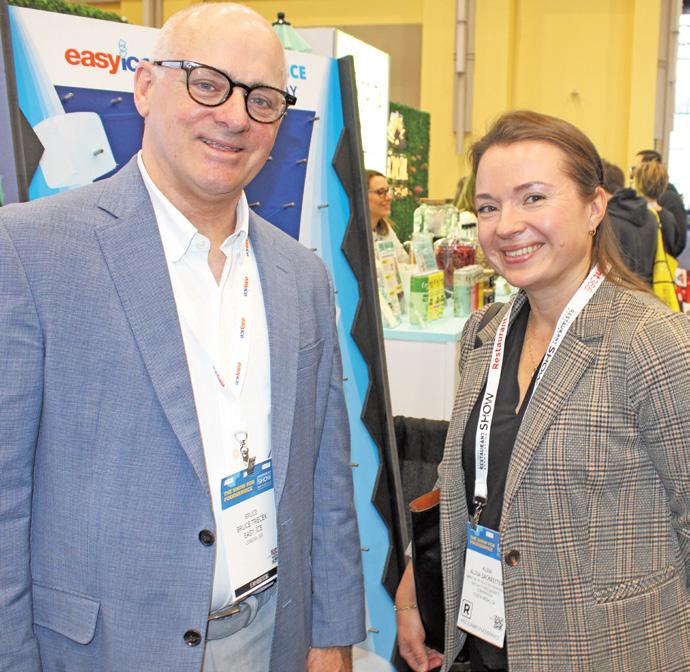
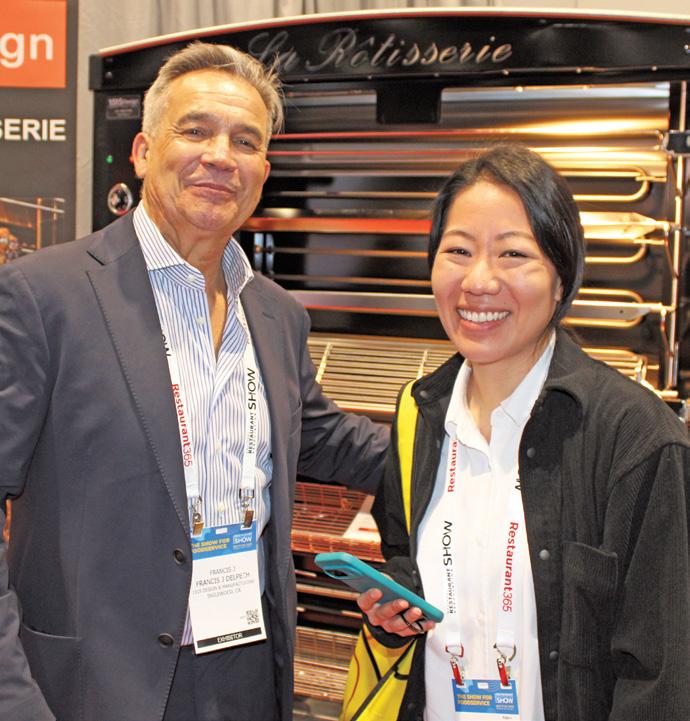

ing restaurant operators enhance profitability. This year’s standout products reflect growing trends in globally inspired flavors, clean-label ingredients, innovative plant-based alternatives, and convenience-driven solutions that simplify kitchen operations. Locatelli Crema di Cacio E Pepe from Ambriola is an old-world Italian DOP cheese presented in an innovative new way, Cre-
ma di Cacio E Pepe. Allows creativity and excellence for classic and new age dishes. Lower ingredient cost and easyto-execute recipes make for profitable family-style, pub, and white tablecloth apps and entrees consistently.
Then there was the C-store conversation. Convenience retailers have evolved into fierce competitors by delivering premium food fast, often with-

out the friction of tipping or long waits. Operators have to rethink how they deliver hospitality when a customer can get a quality sandwich and kombucha with one button press at a gas station, For all the disruption, there was optimism, too. This year’s Show proved the industry isn’t backing down. Operators are learning to blend tradition with in-
continued on page 74


novation. That might mean deploying AI to handle inventory and prep, testing out subscription-style beverage models, or converting former dining rooms into ghost kitchens. It might also mean digging deeper into what hospitality actually looks like when your guest never leaves their car.
At the 2025 NRA Show, automation took center stage—not as a novelty, but as the new standard. Compared to past years when futuristic tech sat mostly on the sidelines, this year’s event showcased real-world solutions ready for deployment. “What stood out was the momentum in automation, AI integration, and labor-saving equipment,” said Caitlin Rodgers, Senior Director of Marketing at Informa Connect Foodservice Group. Attendees saw AI-powered food prep stations, IoT-connected refrigeration units, and the debut of the Apex OrderHQ Array Series—an autonomous order pickup locker—moving from concept to practical use. Robotics and smart systems weren’t outliers; they dominated the floor. Ventless and stackable kitchen gear, robotic fryers, and back-of-house automation platforms promised to cut costs and boost speed. The message was clear: the future of foodservice isn’t coming—it’s already in the kitchen.
The Show floor wasn’t just a product parade. With guided tours, curated meetups, and breakout sessions with top minds from brands like Courtney Stoner of TV;s The Bear and One Off Hospitality, the 2025 event fused learning and discovery. Informa’s platform made it easy for attendees to customize their experience—matching them with sessions, demos, and booths that fit their business model and challenges. “We have built something unique,” Cindric detailed. “The way people move through the Show now—it’s intentional. It’s smart. You don’t get lost in the noise. You get what you came for.”
"Our vision is to future-proof what makes the restaurant experience unforgettable,” noted Michelle Korsmo, President of the NRA. “This Show has become mission-critical to giving operators a space to think out loud, meet the makers of the tools they need, and walk away with more clarity and confidence. At the heart of our vision lies
empowering people, and it requires us to meet the demands of a very competitive marketplace.”
“Not only do today's restaurant consumers get more information and make decisions in more targeted ways than ever before, the rate at which technology itself is advancing is accelerating. Additionally, 2025 may mark the first year that artificial intelligence [AI] becomes a true agent for executing tasks,” Korsmo noted — and it is not the only technological advance that operators must contend with. “I know this is felt by everyone, even smaller, independent restaurant operators," she said. “Today's restaurants face significant pressure to improve digital experiences and kitchen operations — yet many rely on legacy technology.”
So what should operators do next? Start simple. Look at laborsaving tools that don’t disrupt your workflow. Audit your menu for items that can be made plant-forward, smaller-portioned, or GLP-1
friendly. Think about beverage profits without alcohol. Invest in technology that consolidates—not complicates— operations. And prepare for a world where tipping culture could disappear altogether.
Because the restaurant of tomorrow won’t look like yesterday’s dining room. It might look more like a pickup counter, a mobile kitchen, or a QRcoded smart station that delivers meals on demand. But it can still feel like hos-
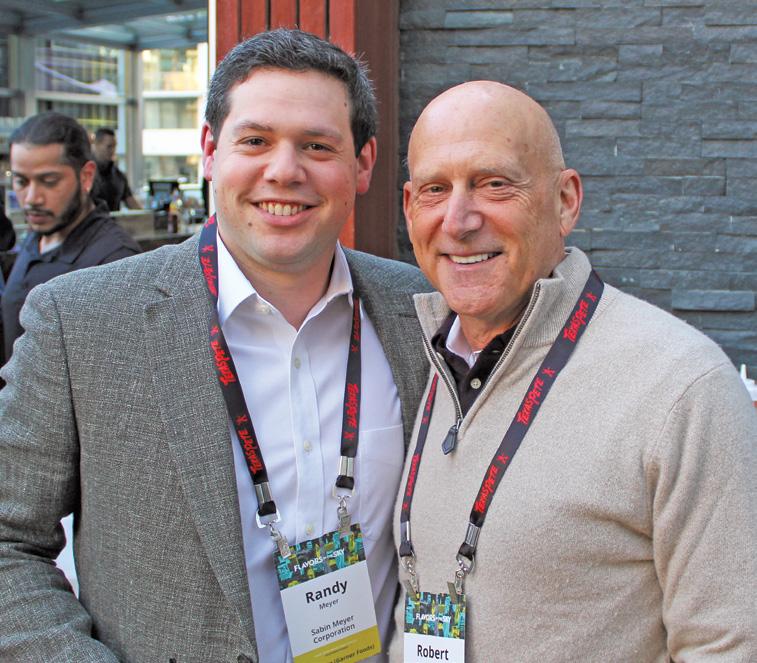
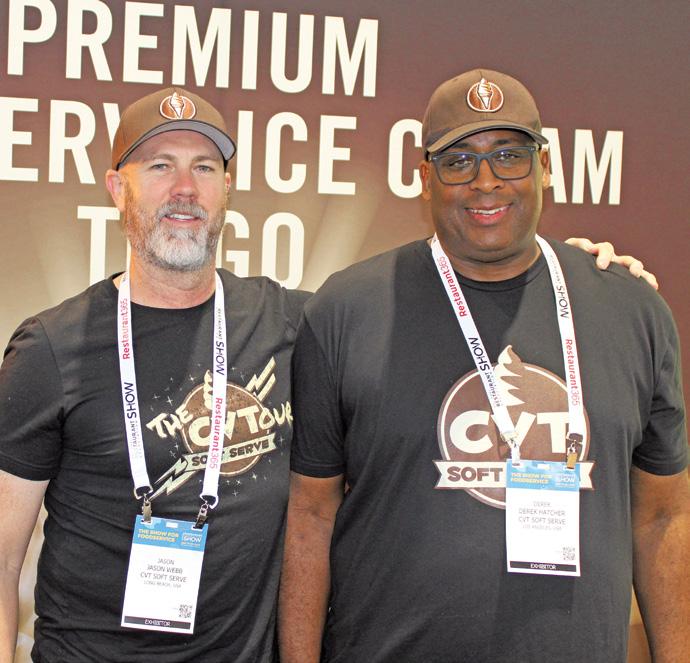

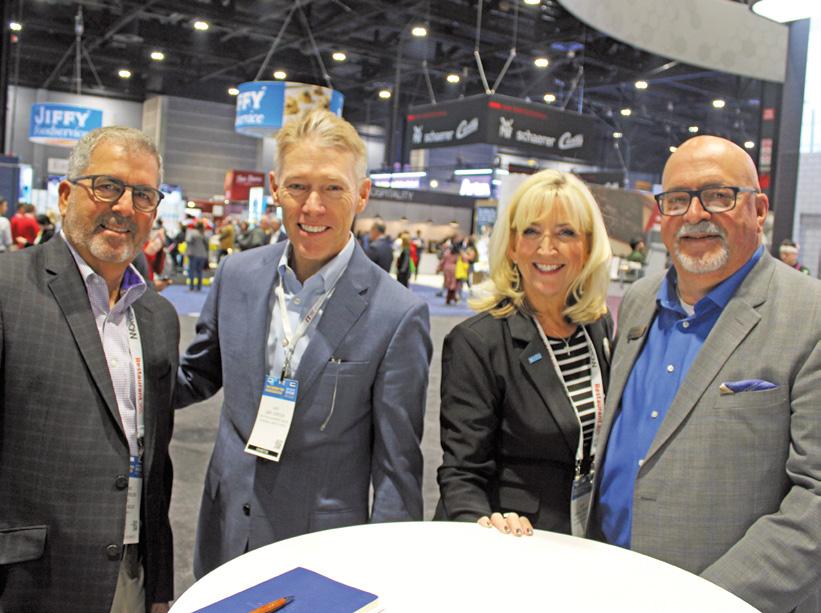
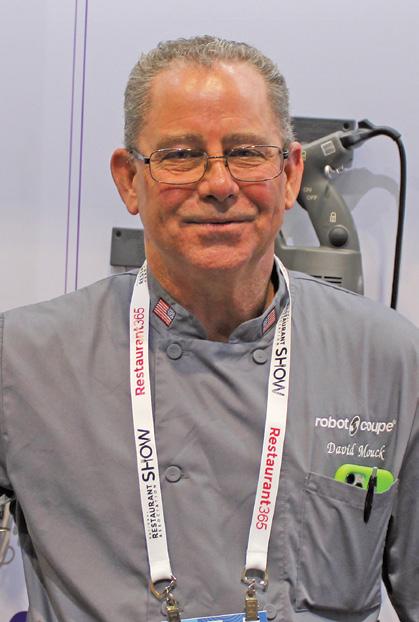
pitality—if you plan for it. As Korsmo concluded, “We’re not here to predict the future. We’re here to shape it. And we’re giving operators the tools to do just that.”
To learn more about attending or exhibiting at the 2026 National Restaurant Association Show, restaurant and foodservice professionals can contact Informa directly through www. nationalrestaurantshow.com.


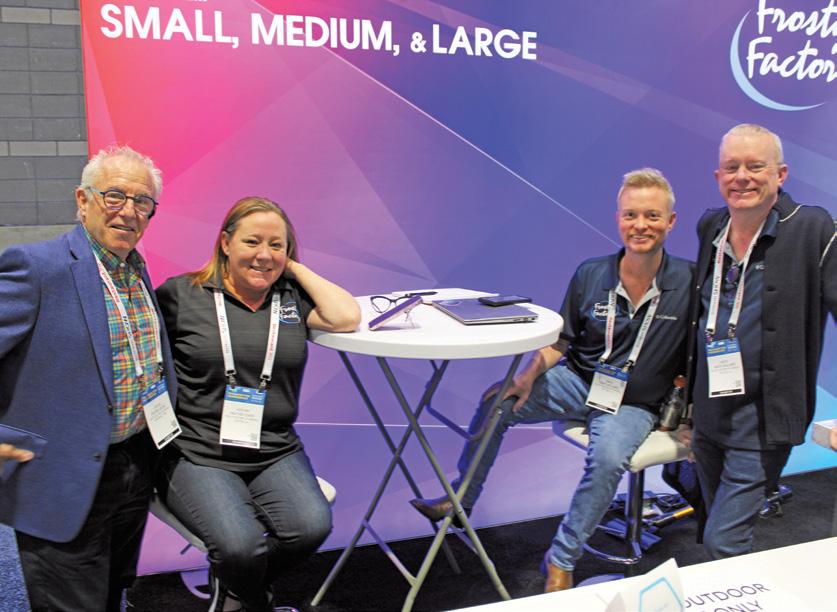

On May 9, 2025, the legal landscape shifted significantly when Governor Hochul signed into law the state’s fiscal year 2025-2026 budget, which included amendments to the New York Labor Law (“NYLL”). This amendment eliminates the most punitive consequence of frequencyof-pay lawsuits for employers - automatic liquidated damages. Such liquidated damages were available to hospitality industry employees bringing frequency of pay claims if they were not paid their wages weekly, even though they were otherwise paid their wages in full. In other words, the timing of the wage payment resulted in the violation, and not necessarily the amount of the wages paid.
This change represents a fundamental recalibration of how the law treats frequency of pay violations. For employers that have faced class actions seeking six years’ worth of back pay damages for paying their employees less frequently than once per week, this amendment is a game changer.
The NYLL has long required employers to pay their “manual workers” on a weekly basis within seven calendar days of the week during which the wages are earned. Employees in the hospitality industry must be paid on a weekly basis regardless if they are deemed “manual workers” or not. For almost a century, the NYLL’s frequency of pay claims were understood to authorize enforcement solely by the
For employers that have faced class actions seeking six years’ worth of back pay damages for paying their employees less frequently than once per week, this amendment is a game changer.
New York State Department of Labor (“DOL”), with no private right of action available to employees. In 2019, however, this changed when the Appellate Division, First Department, held that individuals could bring private lawsuits for frequency of pay claims — a decision that spurred a surge in litigation. Thereafter, in early 2024, the Appellate Division, Second Department reached the opposite conclusion,
holding that no private right of action exists under the law. With a split in the appellate courts, and no clear guidance from the Court of Appeals, New York’s highest court, uncertainty remained, and the tidal wave of class action lawsuits continued, including in the hospitality industry. In these cases, paying an employee $4,000 every two weeks—rather than $2,000 each week—could trigger significant
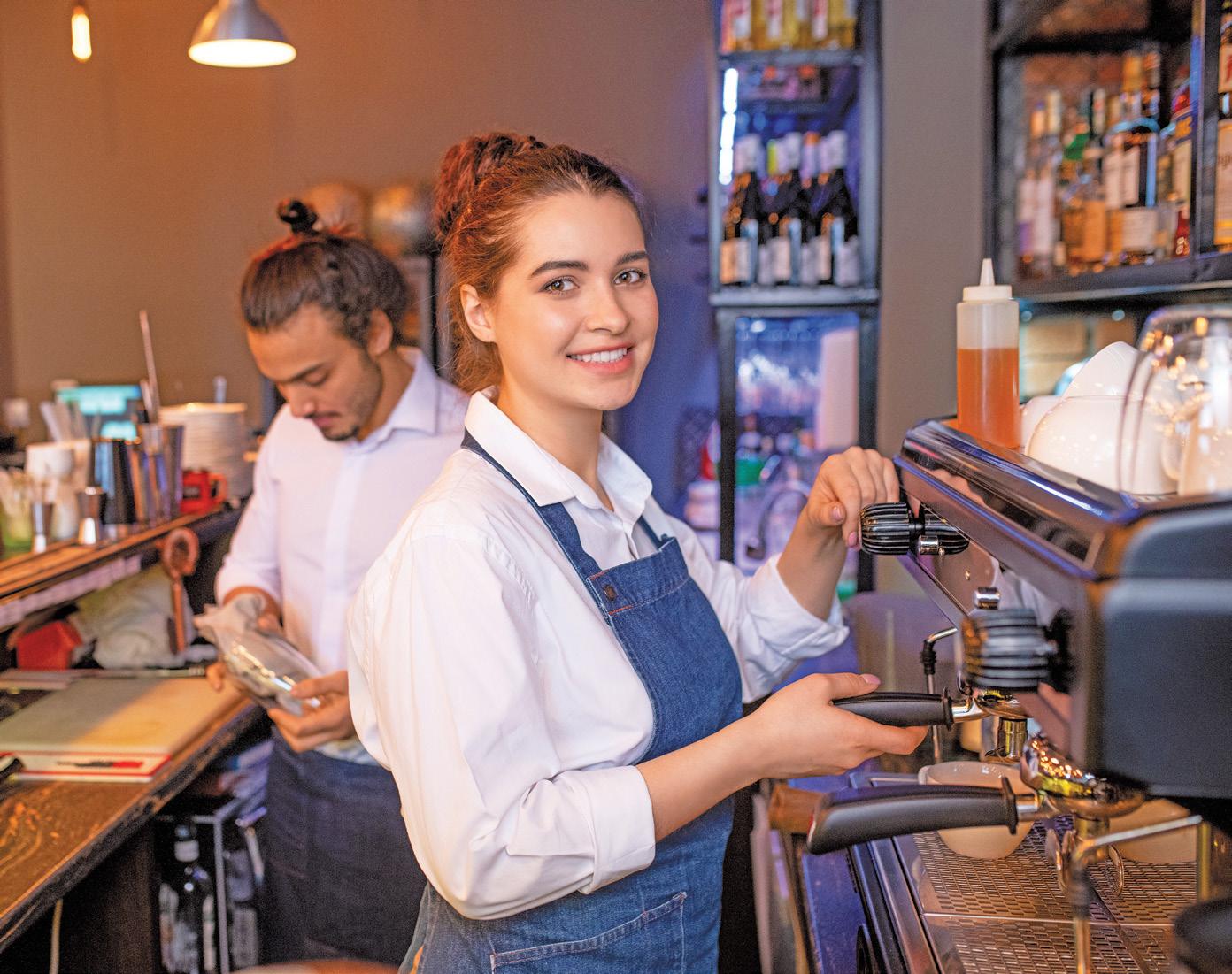

Anthony Vassallo is an Associate in the Labor & Employment Group at Ellenoff Grossman & Schole LLP. His practice includes representing management in traditional labor relations, employment discrimination actions and wage and hour litigation. Prior to joining Ellenoff Grossman & Schole LLP, he was an associate at Bee Ready Fishbein Hatter & Donovan LLP, where he represented various municipal entities, ranging from counties and townships to villages and special districts. Mr. Vassallo can be reached at (212) 370-1300 or avassallo@egsllp.com.
liquidated damages of approximately $2,000 per pay period, in addition to interest, attorneys’ fees and costs.
The new law doesn’t change the weekly pay requirement for hospitality employers. What it does, however, is limit the damages available when that requirement is not met. As long as an employer has been paying its workers at least semi-monthly on a consistent schedule, and wages are fully paid, then the only nominal damages available are interest at the statutory rate of 16% annually, or roughly 0.03% per week, for employers proven to have violated the law for the first time.
This leniency isn’t extended to everyone. The amendment to the law draws a clear line between employers committing a first-time violation and those with a prior finding of noncompliance. If an employer has already been found to be in violation of this law by a court or the DOL, and repeats the offense, they remain fully exposed to full liquidated damages, interest, attorneys’ fees and costs. So, the safe harbor is real—but it’s conditional. Repeat players don’t get the benefit of the doubt.
continued on page 120

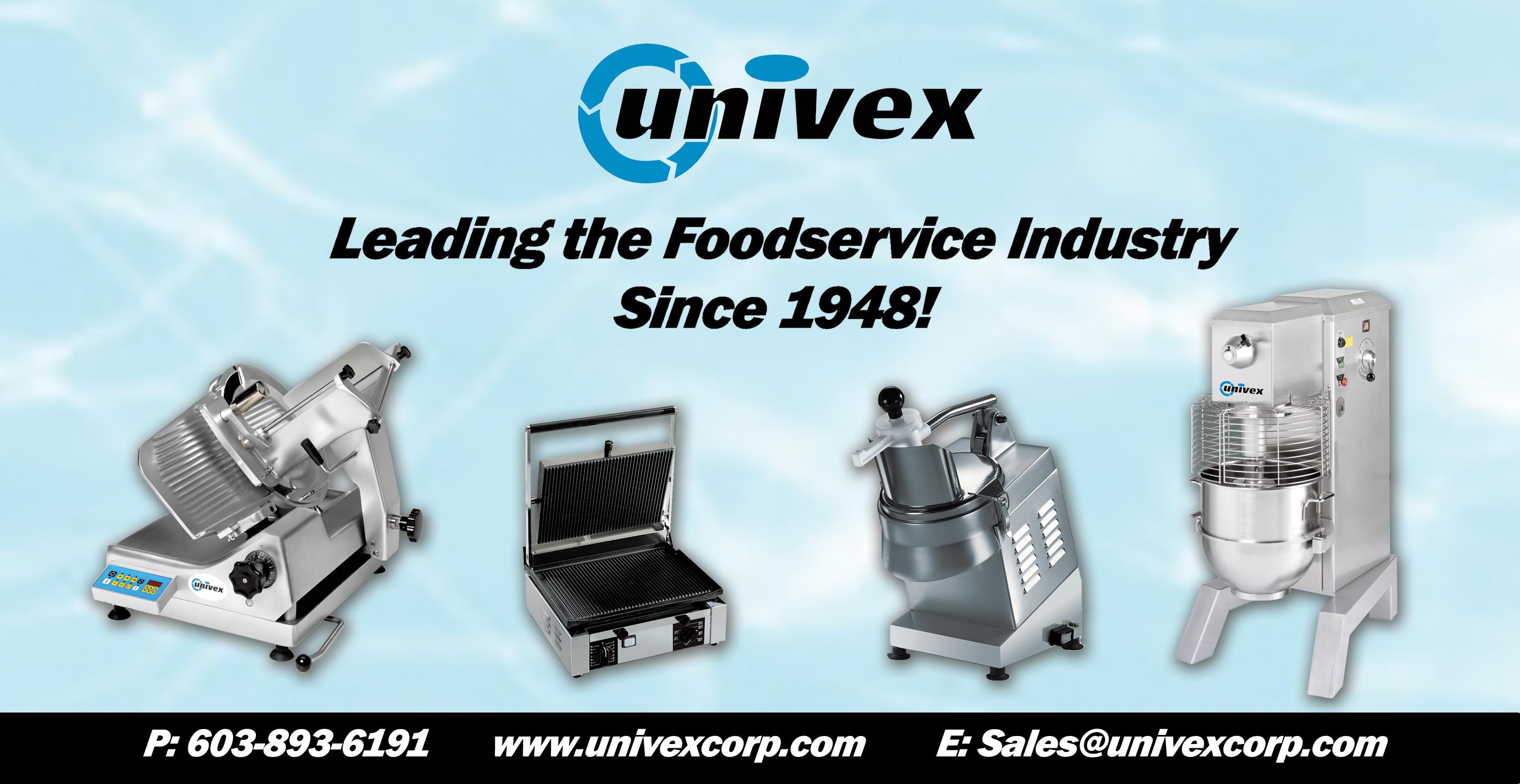
Running a restaurant profitably has never been easy — and lately, it’s only gotten tougher. Between fluctuating food costs, staffing shortages, and shifting diner expectations, chefs and operators are under constant pressure to do more with less. Chef Zack Mills knows this firsthand. As executive chef and partner at True Chesapeake Oyster Co., Baltimore’s only restaurant founded by an oyster farm, Mills has learned to build a dining experience that’s both visionary and viable.
“The margins are tight, and every decision matters,” Mills said. “But if you build something that connects with people and you’re smart about how you run it, it’s possible to create something lasting.”
True Chesapeake Oyster Co. didn’t start as a restaurant. It began in the brackish waters of Southern Maryland, where Co-Founder Patrick Hudson launched the state’s first oyster farm dedicated to ecological restoration and premium product. Mills, who was leading award-winning kitchens at the time, became one of Hudson’s earliest and most enthusiastic customers.
“I fell in love with the oysters before I ever imagined running a restaurant with them,” Mills noted. “Their flavor really captured the essence of the Bay.” That flavor — soft salinity, clean finish, distinctly Maryland — is now at the center of a culinary brand that’s rewriting what sustainable seafood can look like. When Mills joined Hudson and oyster shucker Nick Shauman to open True Chesapeake in 2019, the idea wasn’t just to build a restaurant. It was to build a mission-driven model that prioritized traceable sourcing, local identity, and community roots.
Mills’ path to this moment wasn’t accidental. Raised in Davidsonville, MD, he grew up cooking Sunday dinners with his Italian-American family.
“Design a menu around not just what’s trendy or cost-effective in the short term, but what builds identity.” — Chef Zack Mills
He trained at The French Culinary Institute, then rose quickly through the ranks at top kitchens across the country under the mentorship of James Beard Awardwinner Michael Mina. By the time he returned to Baltimore, he’d launched multiple high-profile restaurants and developed a deep understanding of culinary operations from coast to coast.
“My background taught me precision and consistency,” Mills added. “But coming home gave me purpose. I wanted to tell the story of where I’m from.” Telling that story meant more than just serving oysters. It meant building a menu that feels like Maryland — and making that menu sustainable, seasonal, and signature. For other restaurant operators hop-
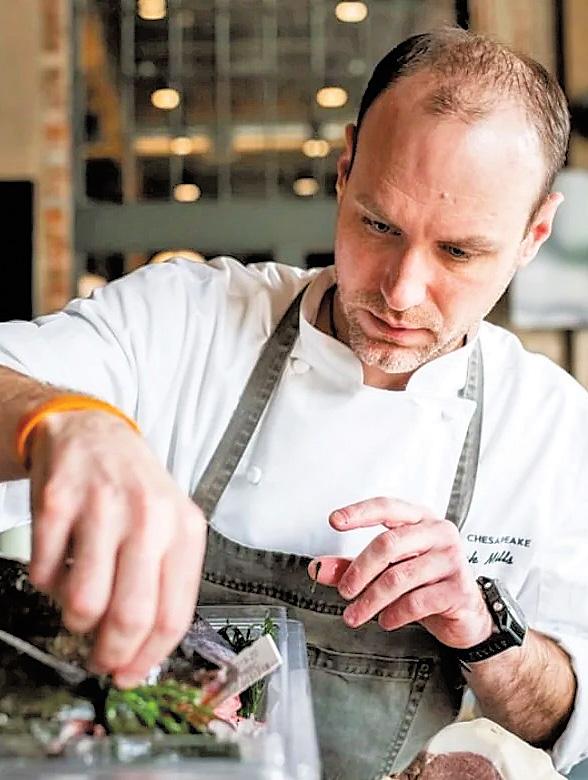
ing to do the same, Mills recommends anchoring the process in values first.
“Start by asking what makes your perspective unique,” Mills outlined. “Then design a menu around that — not just what’s trendy or cost-effective in the short term, but what builds identity.”
At True Chesapeake, that identity shows up in every dish. Spaghetti and clam channels his Italian roots with Chesapeake sensibility. Blue crab mac & cheese, made with Chefs Warehousesourced ingredients, blends comfort food with regional pride. Even vegetarian offerings — like the mushroom tart — reflect the same care and intention.
Behind each dish is a procurement strategy built on tight collaboration. “We
rely heavily on Chefs Warehouse,” Mills said. “They’ve helped us source not just ingredients, but inspiration. That partnership, he explained, was born of trust and shared standards. “Chefs Warehouse stood out because they had products I believed in — and they delivered consistently,” Mills continued. “They also cared about helping us succeed, not just selling us boxes.”
For restaurateurs exploring cost-effective supplier relationships, Mills suggests starting with clarity. Define your non-negotiables — whether that’s freshness, local sourcing, or price flexibility. Then research vendors who specialize in those areas. Vet them not just on catalog, but on service and adaptability. “Look for someone who will be in the trenches with you,” Mills detailed. “You need a distributor who understands what you’re building and can support your goals long term.”
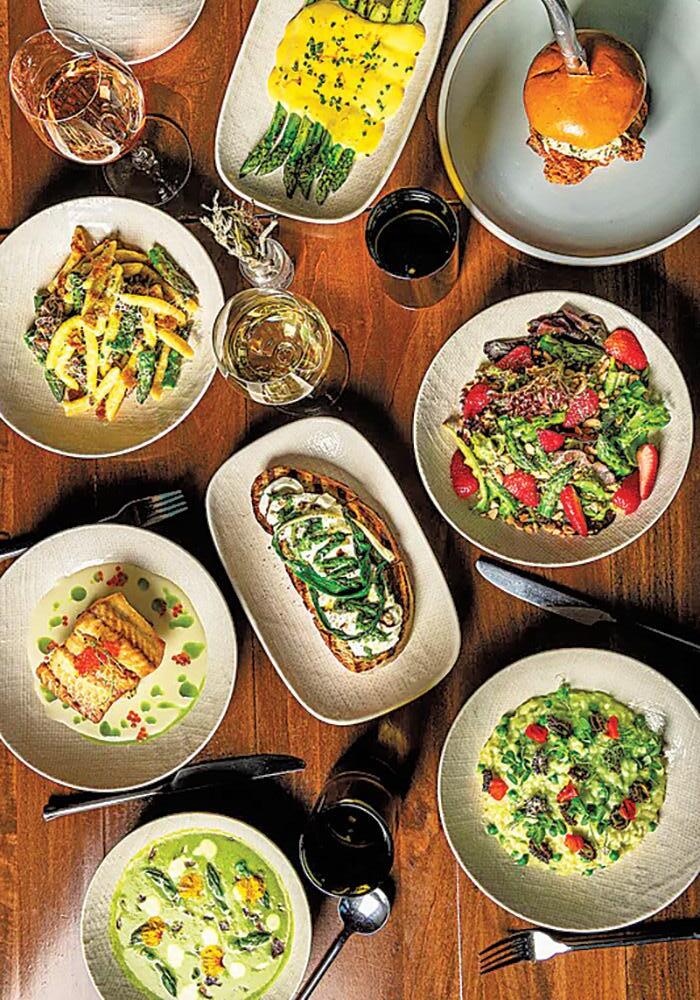
Launching Maryland’s first oysterfarm-to-table restaurant wasn’t just a culinary achievement. It was a logistical puzzle, requiring careful vetting of partners, chefs, and suppliers alike. Mills and his team didn’t take shortcuts. They built the concept from the tide up.
Today, the results speak for themselves. True Chesapeake Oyster Co. has earned top reviews, a loyal following, and a reputation as one of Baltimore’s defining dining experiences. The restaurant has also expanded to off-site catering, public events, and an evolving seasonal menu that keeps guests coming back. “The goal has always been to build something iconic, not just popular,” Mills noted.
continued on page 120

Over the past decade, the craft beer industry has exploded in popularity, with thousands of independent breweries popping up across the United States. While great beer may be the foundation of any successful brewery, more and more operations are discovering that strong food offerings are equally critical to their long-term success. The modern brewery is no longer just a place to enjoy a flight of beer—it’s a destination, a community gathering space, and an experience. And food is central to that experience.
In the early days of the craft beer movement, many breweries focused solely on the beer. Food wasn’t considered essential—maybe a bowl of pretzels on the bar or a rotating food truck outside the taproom. But customer expectations have shifted. Today’s guests are looking for a full-service experience, one that includes not just great beer, but also satisfying food that pairs well with it.
Consider these brewery menu options:
1. Beer-Battered Cheese Curds with Spicy Ranch
Why it works for breweries:
• Cheese curds are a regional favorite, especially in the Midwest.
• They’re rich and salty, which complements hoppy IPAs or crisp lagers.
• Easy to prepare in bulk—just portion, fry, and serve.
2. Crispy Fried Chicken Sliders with Pickles and Beer-Honey Sauce
Why it works for breweries:
• Fried chicken is a universal favorite
and satisfies heartier appetites.
• Pairs beautifully with a variety of beer styles—from pilsners to IPAs.
• Easy to prepare—just fry the chicken, build, and serve.
3. Mini Loaded Fry Flights
Why it works for breweries:
• Encourages sharing and pairings with multiple beers—like a "bite flight" to go with a beer flight.
• Potatoes are inexpensive, satisfying, and endlessly customizable.
• Easy to prepare in batches and ideal for high-volume service environments.
Here’s why offering food is such a smart business move for breweries:
• Increases Time on Premises: Guests are more likely to linger—and order more beer—when food is available.
• Boosts Per-Customer Spend: Adding even a simple food menu can increase the average ticket size significantly.
• Improves Guest Experience: Thoughtful food pairings elevate the tasting experience and leave a stronger impression.
• Encourages Group Visits: Customers are more likely to bring friends or family when there's food involved.
• Enhances Brand Identity: Offering a unique menu can help differentiate your brewery in a crowded market.
Of course, not every brewery has the space, budget, or staffing to launch a full-service kitchen. Many operate in
continued on page 120

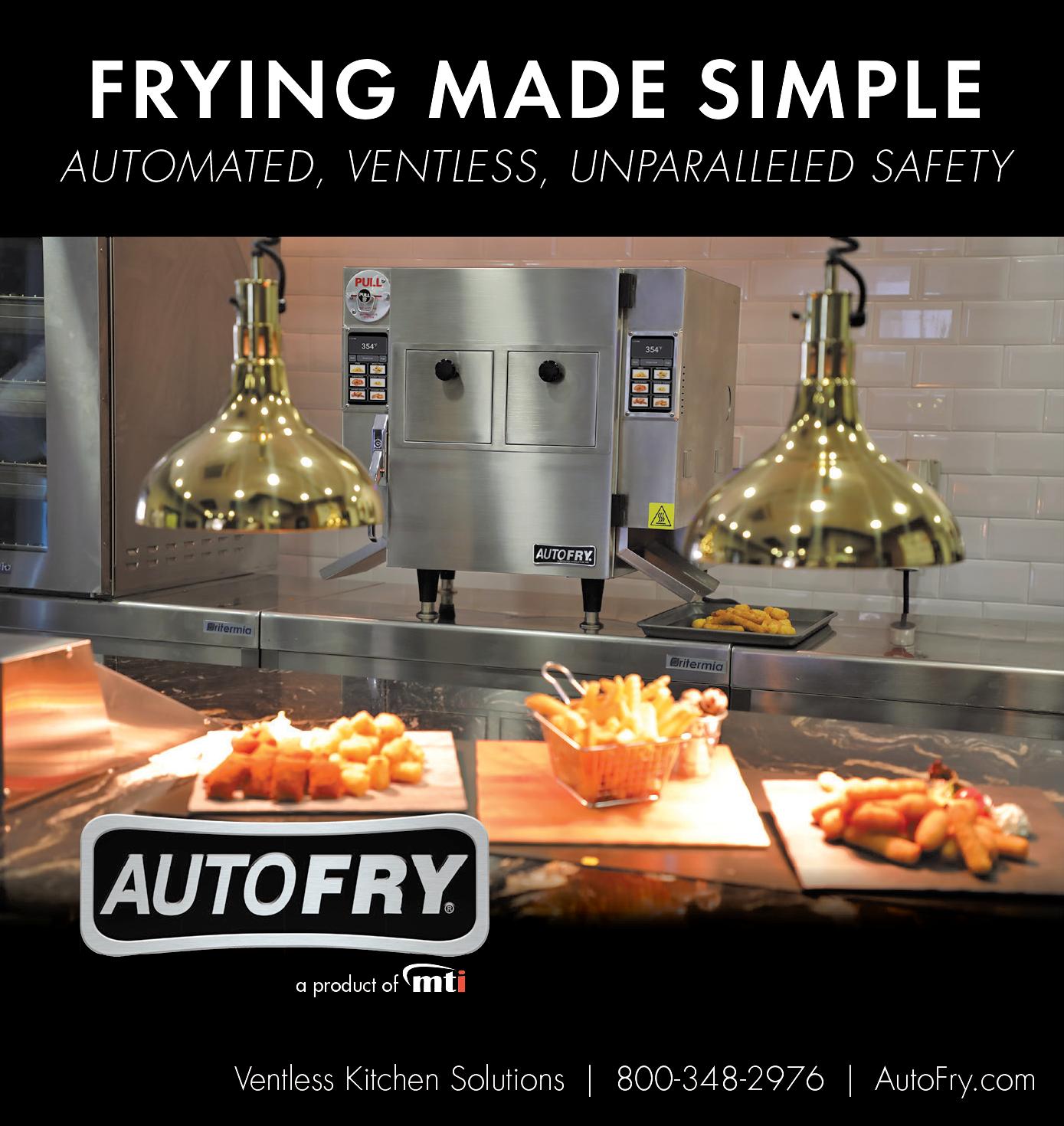

If you're in foodservice, gloves are not optional—they’re mandatory. But in the middle of a volatile tariff environment, managing your disposable strategy can feel like trying to steer in a storm. I’ve been in this business for over three decades, and what I can tell you is this: what worked yesterday won’t necessarily work tomorrow.
This column is here to help restaurant operators, foodservice distributors, and consultants rethink how they approach gloves and disposables in an uncertain market—without
“We’ve had operators tell us, 'A glove is a glove.' It’s not. Glove quality varies dramatically by country, factory, material, and even batch.”
compromising food safety, worker efficiency, or cost control.
Over the last 20 years, the disposable product space has evolved significantly. Operators have come to expect stable supply, competitive pricing, and products that work—both in performance and environmental
impact. But the COVID-19 pandemic cracked open the myth of supply chain stability. Ocean freight skyrocketed. Containers sat offshore. Gloves vanished overnight.
Now, tariffs have taken center stage again. Unlike in the past, where importers had months to prepare for tariff changes, this round hit fast and without warning. We’ve seen sudden price spikes, supply chain chaos, and product shortages—all of which force foodservice operators to make fast, high-stakes decisions.

Here’s what makes gloves fundamentally different: they’re non-negotiable. They’re legally required, critical to food safety, and must perform to protect both the customer and the worker. You can hand out forks on request—but you can’t “cut back” on gloves. That’s why tariffs hit this product category harder.
And yet, some operators try to manage gloves like any other disposable—by shopping on price. That’s a mistake. Buying cheap gloves can cost you much more in the long run.

Dan Grinberg is the Founder and President of Elara Brands, a leading supplier of disposable gloves—including nitrile, latex, vinyl, synthetic, hybrid, and poly—to the foodservice industry. Committed to fighting hunger in America, Elara donates a meal for every case sold through its One Case • One Meal program in partnership with Feeding America. Grinberg also serves as a Director and Immediate Past Chair of Island Harvest Food Bank in Long Island, New York.
Poor-quality gloves tear, fit badly, or even leave behind fragments in food. Some are stiff and uncomfortable, leading to worker fatigue and slowdowns. In some cases, low-grade gloves have pinholes that allow bacteria to spread. That’s not just a performance issue—that’s a lawsuit waiting to happen.
We’ve had operators tell us, “A glove is a glove.” It’s not. Glove quality varies dramatically by country, factory, material, and even batch. Our job at Elara is to help operators tell the difference—and choose smarter.
Let’s clear something up: there’s never been large-scale glove production in the U.S., especially for nitrile gloves. The cost and infrastructure needs are massive. For now, the global glove market runs through Asia, particularly Malaysia, China, Vietcontinued on page 113

In 2025, foodservice operators are feeling the squeeze—between rising labor costs, tighter health regulations, and higher customer expectations. And nowhere is that pressure more evident than in hygiene. At York Building Services, we work with restaurants, hospitality brands, and foodservice operations across the country, and the top challenge we’re helping them tackle is simple but stubborn: keeping hygiene standards high without blowing the budget.
We get it—budgets are tight. But what we’re seeing far too often are unrealistic expectations built on underfunded plans. Operators want daily cleaning, comprehensive sanitation, and spotless kitchens—on a rotational schedule and a shoestring. It doesn’t work. Labor is the biggest driver of cost in any hygiene program, so if the math doesn’t add up, either corners get cut or staff gets burned out.
Our job is to help our clients rethink
that math—and use every tool at our disposal to stretch budgets without sacrificing standards. That starts with smarter scheduling, leveraging AI for labor analysis, and investing in the right equipment. Tools like cordless backpack vacuums, enzyme-based degreasers, and color-coded microfiber systems allow our teams to work faster and safer while reducing risk. And we’re leaning heavily into data and automation to keep us ahead of the game.
The labor crunch isn’t going anywhere. That means accountability has to be baked into every level of the operation. Our supervisors are trained to step in, not just oversee. We’ve doubled down on retention by building a culture where our team feels invested, respected, and informed. That includes constantly reinforcing why things are done a certain way. When our people understand the science behind sanitation— why we clean drains a certain way, why cross-contamination rules matter—they
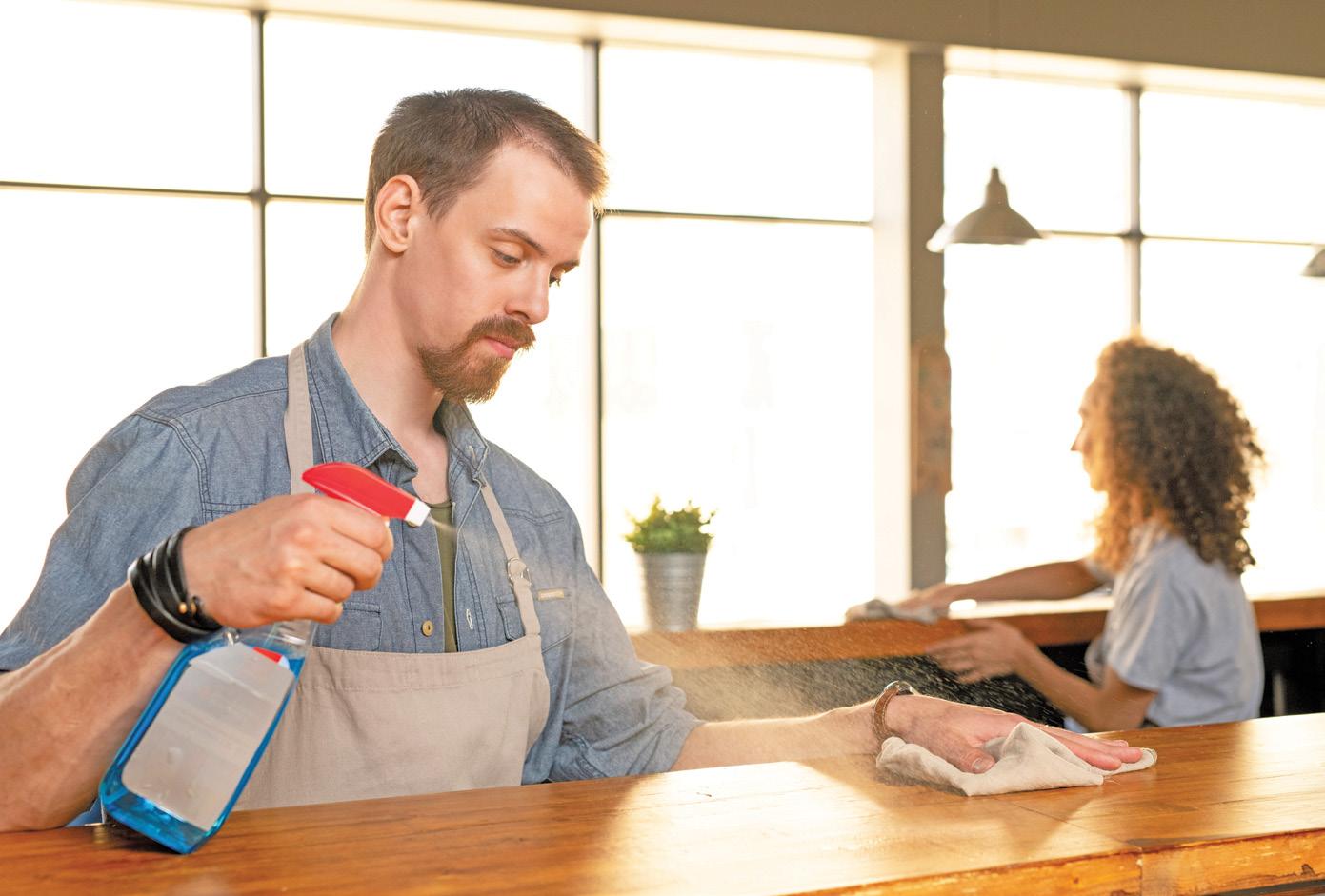
buy in.
We’ve also digitized accountability. Every team member has mobile checklists, digital punch-in systems, and realtime inspection logs. Our operations team reviews every report, and our clients get the same updates. It’s transparency that drives consistency.
AI is no longer a nice-to-have. It's table stakes. At York, we use AI daily to analyze labor data, identify bottlenecks, and forecast where we can gain efficiencies without compromising results. Tools like ChatGPT help us quickly model workflows and optimize routes, while transcription tools like Otter AI let us extract action items from every meeting and keep our managers aligned across shifts and properties. This is how we future-proof our hygiene strategy. It's not just about having the latest tech— it's about using it to stay one step ahead.
We’ve walked into too many operations where the wrong product was used on stainless steel, where fryer areas were ignored, or where “deep clean” meant little more than pushing debris out of sight. One of the worst offenders? Crosscontamination. That’s why our teams rely on a strict color-coded system for all cloths, mop heads, and equipment. Red doesn’t touch blue, and nobody improvises.
Another big one: grease buildup and indoor air quality. As regulations tighten, so do inspections. We help our clients keep hoods, ducts, vents, and drains on a tight schedule. We use HEPA-filter vacuums for high dusting and coordinate directly with HVAC and hood-cleaning vendors to make sure every base is covered. When you treat cleaning as an isolated task, things get missed. When you approach it as a sys-

Robert Rivadeneira is the co-founder and driving force behind York Building Services, Inc. (YBS), a two-time Inc. 5000 commercial cleaning company that has been providing highquality, professional building services to the New York Metropolitan Area for more than 25 years. Established in 1997 by Robert and his father, Alberto Rivadeneira, YBS specializes in creating safe, productive, and healthy environments for its clients, with a strong focus on the hospitality industry. Under Robert’s leadership, YBS has grown into a trusted partner for numerous businesses by offering tailored cleaning programs and services, including overnight cleaning programs, kitchen stewarding, finedetail and project cleaning, along with professionally trained cleaning personnel. Robert’s vision has always been to approach cleaning as an integral part of a company’s success, working closely with clients as an extension of their management teams. With a team of trained and certified professionals, YBS ensures high standards of cleanliness and safety, particularly in kitchens and restaurants. Robert’s dedication to excellence, combined with the leadership of his wife, Harmony Trujillo, has shaped the company’s values of service, leadership, relationships, and integrity. This family-owned business continues to thrive, making a lasting impact on New York City’s commercial cleaning industry.
tem—shared by teams, departments, and vendors—you win.
Hygiene threats aren’t always obvious. Standing water under a prep table. Cracked tiles that trap bacteria. Drains that look clean but harbor pests. We train our teams to think critically and look past the surface. One example that stands out: a luxury hotel kitchen facing a fruit fly infestation that their in-house team couldn’t solve. We overhauled the BOH cleaning process, added enzymatic drain treatment, coordinated with pest control, and rebuilt broken grout lines— all while syncing daily with the kitchen team for walkthroughs. The problem disappeared within weeks.
continued on page 108
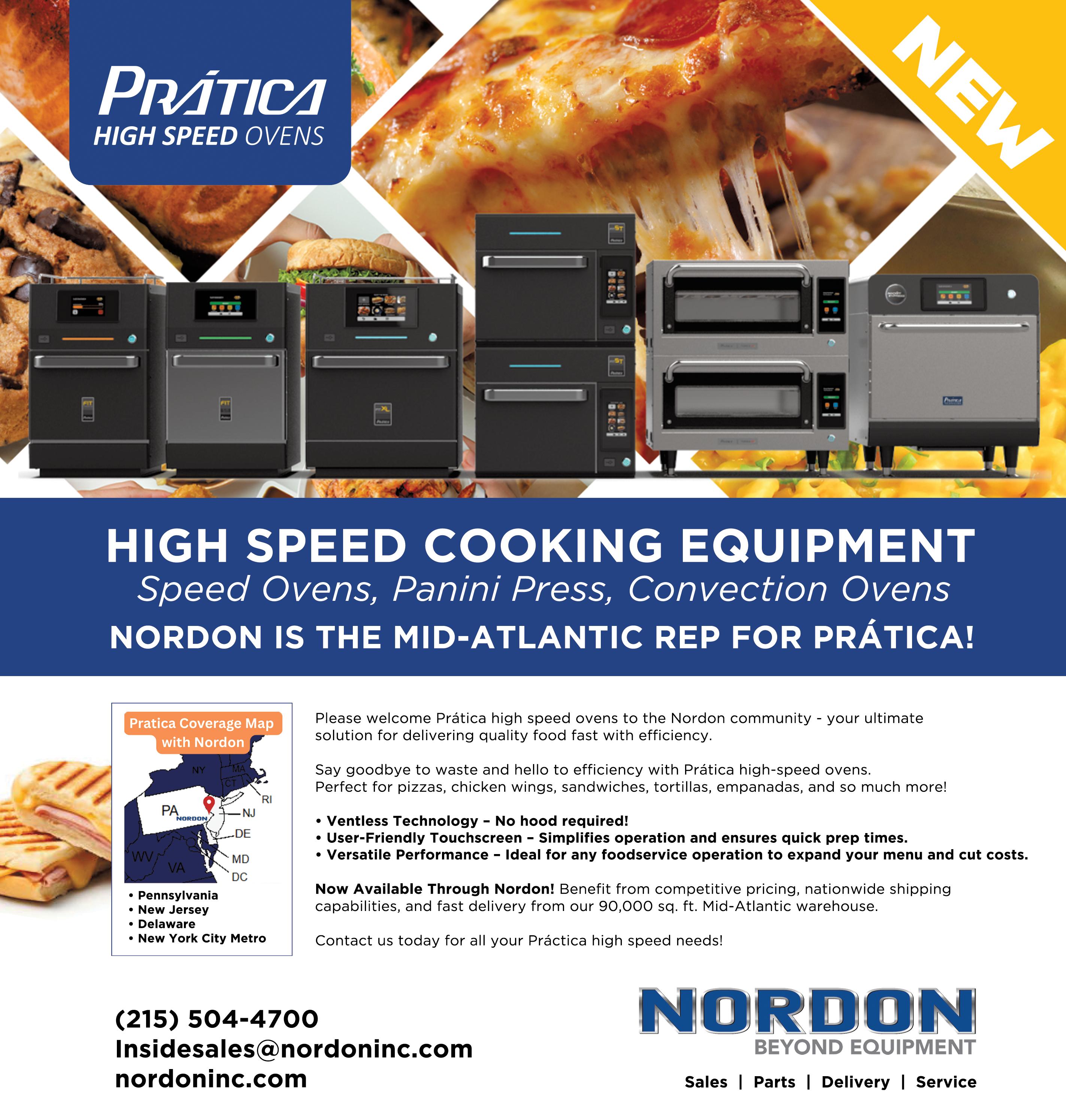
Labor shortages and inflationary food costs are forcing restaurant and foodservice operators to make tough calls every day. With leaner teams and tighter margins, some operators are choosing to cut corners—literally and figuratively—on back-of-house tasks like restroom maintenance. But in a post-pandemic world, that’s a mistake few can afford to make.
Restrooms have emerged as a key battleground in shaping customer loyalty. “Guests notice when a restroom is neglected, and they remember it,” said Dotti Haynes, HoReCa Marketing Director at Essity, parent company of the Tork professional hygiene brand. “Our data shows 73% of people say a bad restaurant restroom experience will impact their willingness to return.” For operators trying to grow share in a saturated market, that stat should raise red flags.
To further spotlight this issue, Tork hosted a seminar titled “Stop Flushing Your Guest Experience Down the Drain” at the 2025 National Restaurant Association Show in Chicago. The session, moderated by Haynes and Amie Kromis, Vice President, DEI at Essity, brought together foodservice leaders to discuss the overlooked business impact of restroom hygiene and the actionable steps operators can take—even amid labor shortages and rising costs. “We’re looking to reframe the restroom as a strategic asset, not just a chore,” Haynes explained. “Our goal is for attendees to walk away with practical solutions and a new mindset around hygiene.” The session also showcased real-world examples, de-
sign insights, and data from the Tork brand’s global research. Attendees gained access to exclusive resources and a firsthand look at inclusive hygiene innovations, including highefficiency dispensers and skin-friendly soap systems.
Today’s guests expect more than good food—they expect the full experience. And that includes the bathroom. “When consumers are out to dine, whether it’s fast casual or white tablecloth, the restroom is seen as a reflection of the kitchen,” Haynes added. “If the bathroom is dirty, guests start wondering about food safety, staff hygiene, and overall standards.” Operators are facing the reality that restrooms can either elevate the brand or sink it. With nearly half of patrons admitting they track locations with bad restrooms to avoid them, poor hygiene isn’t just an annoyance—it’s a brand killer.

a restaurant’s carbon footprint. “Fewer trucks, less fuel, less hassle,” Haynes outlined. “It’s efficient and sustainable.”
Operators can’t afford the labor hours it takes to babysit restrooms all day. But with high-capacity, lowmaintenance dispensers, they don’t have to. The Tork brand’s solutions help maximize uptime and guest satisfaction, while freeing up staff for higher-value tasks. Its one-at-atime dispensing systems reduce waste and limit contact points, contributing to both cleanliness and cost control.
Tork has been working to help operators bridge the gap between guest expectations and operational limitations through a concept it calls Inclusive Hygiene—an approach that ensures restrooms meet the needs of all guests, including those with physical, sensory,
“A dirty bathroom tells guests everything they need to know about what’s happening behind the kitchen door.” — Dotti Haynes
or cognitive challenges. “Our research shows many guests experience anxiety when using public restrooms due to barriers that most of us might not even notice,” Haynes noted. “Loud hand dryers, harsh soaps, or high-difficulty dispensers can create real discomfort for people with autism, eczema, or reduced mobility.”
The Tork brand’s solution: a smarter product line designed with everyone in mind. Its PeakServe® paper towel dispensers, for instance, require low pull force and hold more product, reducing refill frequency. “That dispenser was actually certified by the Swedish Rheumatism Association as easy to use,” Haynes detailed. “It’s thoughtful design like this that makes a difference.” The brand also offers compressed hand towels that save storage space and reduce delivery frequency, which can significantly shrink
“You’re not just saving on products, you’re protecting your staff and guests by reducing touchpoints and cross-contamination risks,” Haynes said. “It’s a value play, not a price play.” At a time when every dollar counts, prioritizing restroom hygiene can seem like a luxury. But the brand’s research suggests it’s actually a business necessity. “A clean bathroom tells guests everything they need to know about what’s happening behind the kitchen door,” Haynes concluded. “It builds trust, shows professionalism, and creates a more inclusive environment that keeps people coming back.”
For operators or distributors looking to improve their hygiene strategy—or explore how to pair Tork hygiene solutions with Bigelow’s tea service portfolio—visit www.torkglobal.com/us/en/ foodservice to learn more.

Inflation and labor shortages have created a difficult operating environment for restaurants and foodservice providers across the country. With wages climbing and ingredient costs remaining volatile, operators are looking for every opportunity to control their P&L. Increasingly, that means looking to the back of house—not just for efficiencies, but for long-term value that can protect margins over time.
One such opportunity is emerging in kitchen equipment—and specifically, in refrigeration. Fort Worth-based Traulsen, a longtime leader in commercial refrigeration, has made a bold move to enhance value and durability across its entire product line. Effective June 1, 2025, the company will transition all products from aluminum to fully stainless steel interiors and exteriors— without raising prices beyond previously announced adjustments for tariffs. “Customers want stainless,” said Jason Janning, VP and general manager at Traulsen. “Nobody asks for aluminum. It’s always been a compromise. When you’re buying the best, you shouldn’t have to settle.”
The upgrade affects all Traulsen G Series, Dealer’s Choice Compacts, and Centerline™ by Traulsen units. The switch to stainless improves both product durability and customer perception—key factors for businesses looking to reduce replacement costs and project a polished, professional kitchen. “Stainless offers better corrosion resistance, longer life, and just looks more premium,” Janning added. “That means fewer repairs, more uptime, and better long-term ROI. It’s value built to last.”
“Being a Traulsen customer means never having to compromise on performance, engineering or quality.” — Jason Janning
Despite the material improvement, Traulsen isn’t passing the cost on to customers—at least not because of the stainless steel. While a 7% price adjustment takes effect in June 2025 due to global tariff impacts, the shift from aluminum to stainless comes at no additional upcharge. “Our decision was driven entirely by the customer experience,” Janning noted. “We knew we could simplify our operations while upgrading our products. That gave us the leverage we needed to make this move without affecting our price positioning.”
With the transition, Traulsen is also retiring its A Series and consolidating its vertical offerings under the premium R Series. This streamlining eliminates redundancy and simplifies choices for dealers and operators. At the same time, Traulsen is upgrading its most popular lineup—the G Series— with full stainless construction, turning a high-volume workhorse into a premium performer. “We’ve
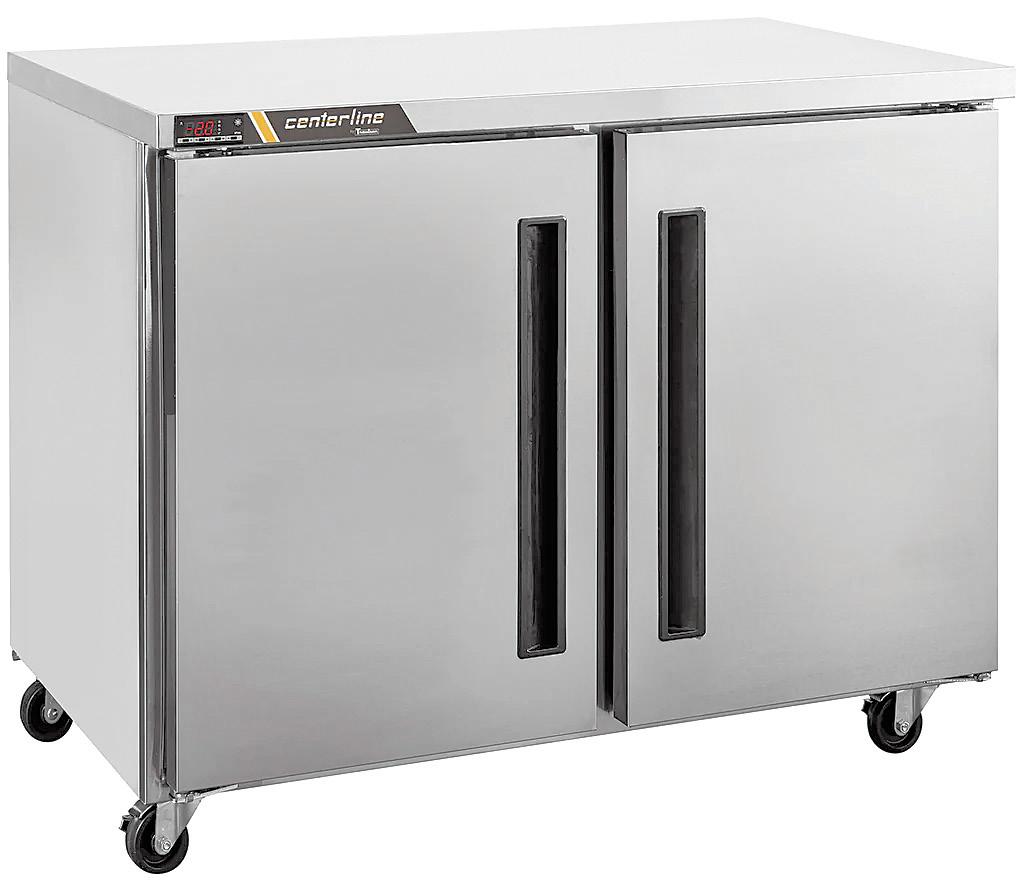
had customers asking for a stainless G Series for years,” Janning detailed. “Now, they won’t have to ask. It’ll be standard.”
One of the most significant beneficiaries of this upgrade is the Centerline by Traulsen product line—a mid-tier solution designed to balance cost and performance for budget-conscious operators. Until now, Centerline products featured stainless exteriors and aluminum interiors. That’s about to change. “With this transition, even our Centerline units will have full stainless construction,” Janning outlined. “It’s a major upgrade that puts Centerline in a unique value position— especially for customers who don’t want to compromise on quality, but still need to stay within a tighter capital budget.”
The Centerline line includes compact, hardworking equipment such as CLPT
prep tables and CLUC undercounter refrigerators and freezers—ideal for quickservice kitchens and high-volume operations. And all of it is made right here in the U.S.
A major selling point for Traulsen’s equipment—especially in today’s procurement environment—is its U.S. manufacturing footprint. Every product in the line is assembled in Fort Worth, Texas, with stainless sourced from domestic suppliers. “Some operators assume Centerline is imported,” Janning noted. “It’s not. It’s built in the same region, just a mile from our flagship Traulsen plant.” This domestic manufacturing advantage translates into faster lead times, better quality control, and fewer supply chain headaches. It also helps customers align with sourcing policies that prioritize North American-made goods. “Being U.S.-made gives us control, and gives our customers confidence,” Janning concluded.
In an industry squeezed by food inflation, labor costs, and rising utility bills, equipment that lasts longer, performs better, and requires less maintenance is no longer a luxury. It’s a strategy. And with Traulsen’s stainless upgrade, operators now have a value-based way to stabilize their P&L.
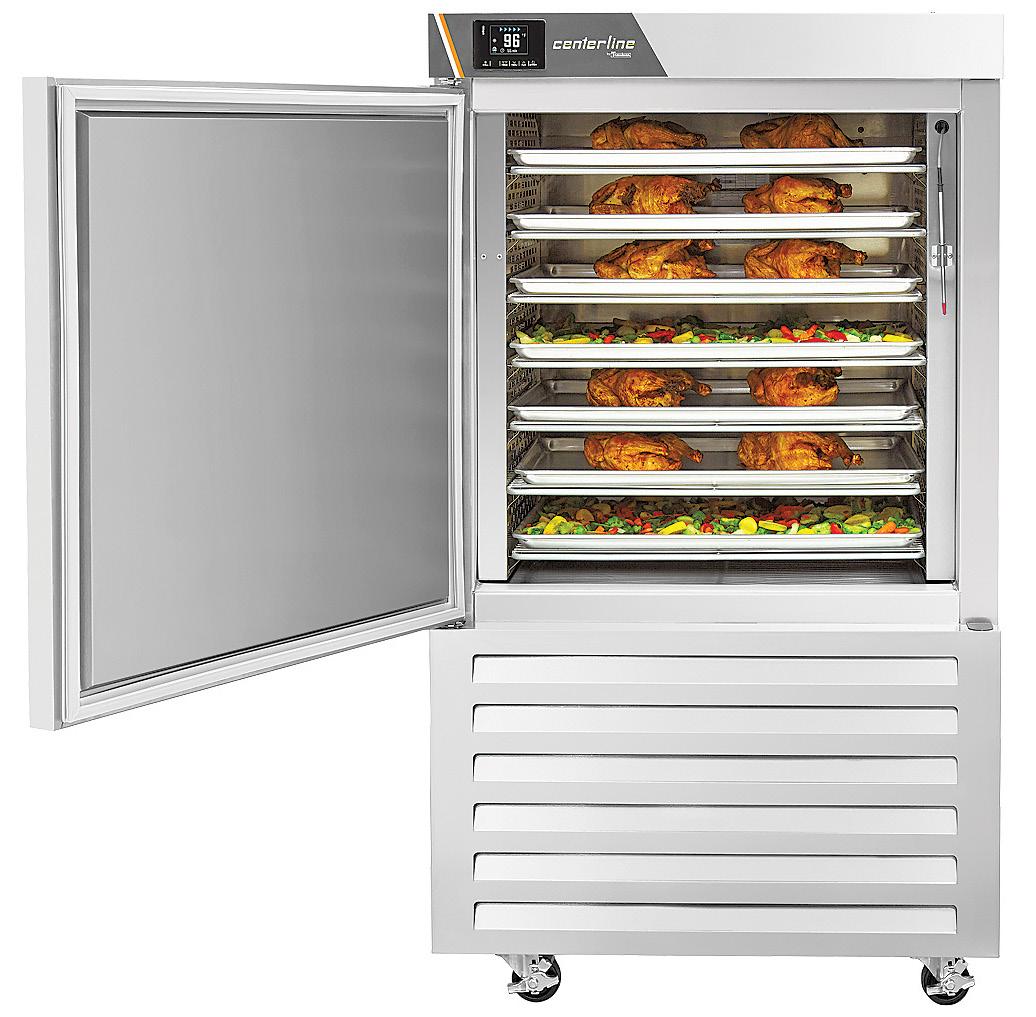
Distributors, consultants, and end-users can learn more about these enhanced offerings by visiting Traulsen.com or CenterlineFoodEquipment. com. As Janning noted : “This is what our customers have been asking for. We’re proud to deliver it— without compromise.”

In today’s competitive foodservice industry, where culinary excellence and customer satisfaction drive success, the quality of ingredients is more crucial than ever. Among the key components that distinguish a remarkable dining experience, the quality of meats takes center stage.
That’s why Baldor Specialty Foods, a leader in premium food distribution in the Northeast and Mid-Atlantic recently acquired Golden Packing, now rebranded as Golden Meat Co., to enhance its premium meat offerings. This acquisition allows Baldor to vertically integrate meat processing, combining high-end sourcing with expert butchering. “The integration of Golden Meat Co. helps us offer custom cuts and portioned meats with consistent quality, which is crucial for our chef customers,” TJ Murphy, President of Baldor noted. This strategic move aims to enhance Baldor’s meat offerings by combining Golden’s expertise in high-end sourcing and expert butchering with Baldor’s logistics and customer reach.
To support this expanded protein category, Baldor has brought on a dedicated team led by Mark Pastore as Vice President of Business Development, focusing on increasing visibility and sales on the East Coast. Kevin Lindgren, now Director of Golden Meat Co., oversees operations and integration, while John Winters DiMarco leads protein business development. Daniel Nguyen, as Senior Protein Supply Planner, manages dayto-day supply chain coordination.
Leading this ambitious expansion is Mark Pastore, an industry veteran with over three decades of experience, who now serves as Baldor’s Vice President of Business Development. Incor-

porating the highest quality meats on a restaurant or foodservice menu not only elevates taste but also strengthens brand reputation, customer loyalty, and profit margins “Customers today are more discerning than ever, expecting superior flavor and texture when they order a steak or a burger,” Pastore said. “By choosing the best quality meats, restaurants can meet and exceed these expectations, ensuring repeat business.”
Baldor’s commitment to quality extends beyond products to the way they train their sales force. “We’ve taken the time to educate our team on the nuances of high-quality meats,
from dry-aged beef to specialty items like duck,” Pastore continued. “We want our sales team to not just sell but to understand what makes these products exceptional.” “Let’s make it really boutique. Let’s really take our time to curate a lot of the better farms to growers. Let’s make it sustainable” Pastore added. “We want our offerings in the Baldor tradition to feel carefully selected.”
Pastore emphasized the importance of variety in the premium meat selection, highlighting that it’s not just about beef. “We’ve got incredible options including duck, which has been a hit among our high-end restaurant
“Premium meats not only enhance flavor but also shape a restaurant’s reputation and profitability.” — Mark Pastore
clients. Our Orvia Duck, sourced from the Hudson Valley region, stands out for its flavor and quality,” Pastore detailed. “When chefs want to elevate their poultry dishes, this is the go-to choice.”
The training program includes hands-on sessions where sales representatives learn about the sourcing, processing, and unique characteristics of each meat type. “We’re building knowledge, not just selling points,” Pastore outlined. “This way, when they talk to chefs, they can speak with confidence and expertise.”
“Restaurants and foodservice operators looking to integrate high-quality meats into their menus should start with a clear strategy,” Pastore continued. “This involves understanding their target market, evaluating the cost implications, and identifying reputable suppliers who can consistently meet quality standards. Menu pricing and portion control also play key roles in maintaining profitability while offering premium options.”
To make premium meats viable, it’s essential to research and vet suppliers carefully. Operators should look for providers that offer consistent quality, have transparent sourcing practices, and can scale with demand. Visiting processing facilities and sampling products can provide critical insights. Working with partners like Baldor Specialty Foods, which has a robust logistics network and longstanding relationships with premium meat providers, can simplify the procurement process.
“The combined expertise of our team means we’re not just offering quality cuts, but also reliable service
continued on page 108

In today’s fast-paced foodservice landscape, restaurant and foodservice operators face a multitude of challenges ranging from labor shortages and rising operational costs to increased hygiene expectations and evolving customer demands. As the industry navigates these complexities, finding straightforward and effective solutions becomes crucial to maintaining efficiency and profitability. Space constraints, particularly in high-traffic areas, add another layer of difficulty, forcing operators to rethink how they manage essential supplies like cutlery. Amid these pressures, innovations that optimize space, reduce waste, and improve staff productivity are not just beneficial—they’re essential for ongoing success.
With an eye toward offering a solution that can take the pressure off of the operator, GP PRO has intro -

duced a response to increased demand for dispensed cutlery and the growing need to maximize space in breakrooms, convenience stores, and foodservice establishments: the Dixie Ultra® SmartStock® Mini Tri-Tower Cutlery Station. The new dispenser addresses the operational challenges faced by many establishments, particularly those dealing with smaller spaces and limited staff resources.
The Mini Tri-Tower builds on the success of the original Dixie Ultra® SmartStock® Tri-Tower Cutlery Station, which launched in 2020 and quickly became an industry favorite. As Dan Nirenberg, Georgia-Pacific’s Dixie brand vice president and general manager, noted, “Our customers really value that the Tri-Tower dispenser helps them manage cutlery waste while improving hygiene and staff efficiency, but its size isn’t a fit for everyone. We’re introducing the Mini Tri-Tower specifically for establishments that want to take control of their cutlery but have less space available to do so.”
This compact version stands at 17.5 inches tall, allowing it to fit comfortably beneath standard hung upper cabinets while still holding 195 utensils. In contrast, the original Tri-Tower

stands at 29 inches and accommodates 390 utensils. Like its predecessor, the Mini Tri-Tower offers one-ata-time dispensing, which, according to GP PRO research reduces cutlery usage by up to 31% compared to open cutlery bins. This not only improves operational efficiency but also supports hygiene and waste reduction.
Nirenberg added, “The original TriTower dispenser changed the game for high-traffic foodservice environments, combining three separate dis -
“Productivity, hygiene, and cost are the three most critical factors for operators. By integrating the Mini Tri-Tower, they can address all three while maintaining a clean and organized dining area.” — Dan Nirenberg
pensers into one unit. The Mini now extends these benefits to operations with tighter spatial constraints.”
When implementing a strategy for dispensed cutlery in a foodservice operation, it’s essential to consider factors like space availability, usage frequency, and staff involvement. GP PRO’s Mini Tri-Tower addresses these by combining compact design with ease of use. Whether in a hospital cafeteria or an office breakroom, this dispenser ensures that cutlery is readily available without cluttering limited counter space. Nirenberg continued, “Productivity, hygiene, and cost are the three most critical factors for operators. By integrating the Mini Tri-Tower, they can address all three while maintaining a clean and organized dining area.”
continued on page 108

Customers love a great product, but they remember a clean experience. That’s the balance foodservice operators are chasing: delivering indulgent, high-quality treats without sacrificing presentation—or patrons’ wardrobes. Nowhere is this more relevant than in the ice cream category, where sticky hands and stained shirts have long been part of the deal. But that’s changing, thanks to smart innovation and a growing demand for food that’s both beautiful and practical. CVT Soft Serve is leading the charge.
As more restaurants, stadiums, and events look to offer memorable experiences, ice cream continues to dominate as a crowd-pleaser. The challenge? Keeping it classy. When an operator serves a premium product, they want that quality reflected in everything from flavor to form factor. People want real ice cream—the kind that’s creamy, rich, and nostalgic—but they don’t want it melting into their lap by the second bite. A new strategy is emerging: prioritize taste and presentation together, with packaging and formats that solve the mess problem while enhancing the overall food moment.
CVT Soft Serve, a Los Angeles-born brand known for nostalgic flavor and fanatical quality control, has created a solution that checks every box. Their single-serve pouched soft serve line has cracked the code, giving foodservice operations a no-mess, all-flavor product that delivers joy, not drips. For operators trying to get it right, it starts with sourcing. It’s not enough to find a product that tastes good on paper. The real strategy involves tasting and testing, understanding how the product performs in the field, and asking: Does it maintain quality over time? Does it align with the brand experience? Does it work in motion—in a stadium seat, on
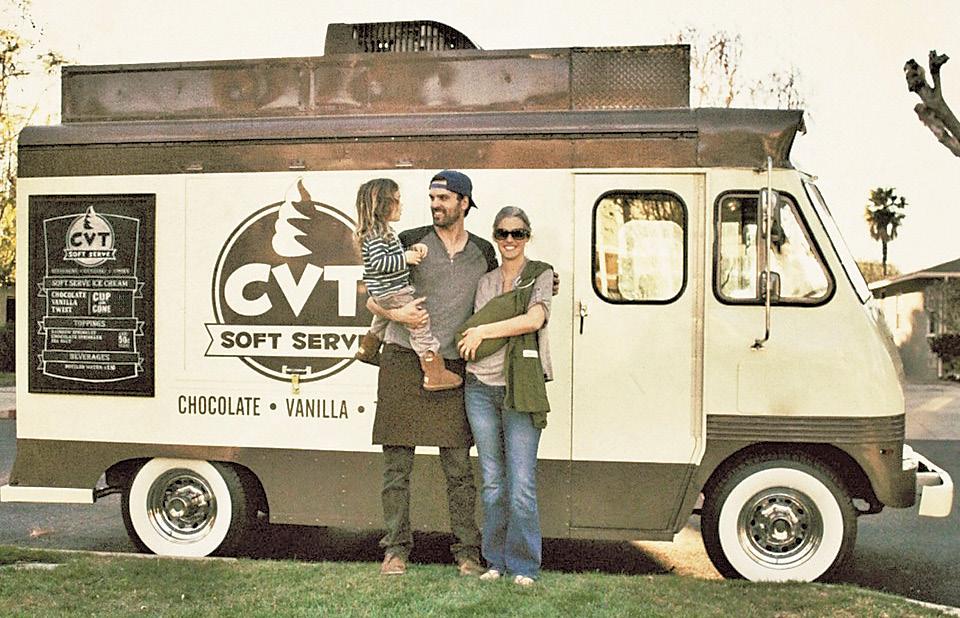
“No scooping. No dripping cones. Just hand it over and watch people smile.” — Joe Nicchi
a food truck route, or during a festival?
Once a solid product is identified, aesthetics come into play. This includes packaging that’s intuitive, spill-proof, and portable. It’s not just about making food look Instagram-ready—it’s about real-world functionality. Guests are juggling kids, phones, bags, and


drinks. They’re walking, cheering, moving. A premium ice cream experience shouldn’t demand a napkin rollout or outfit change.
That’s where CVT’s pouched ice cream format becomes a game-changer. With chocolate, vanilla, and twist options made from the same dairy-rich formula that built a cult following in LA, these shelf-stable, freezer-friendly pouches let operators deliver old-school soft serve without new-school hassles. “We had so many operators tell us they loved the taste of our ice cream but didn’t want the logistical headache,” CVT owner Joe Nicchi said. “So we developed something that kept the same quality but removed the mess.”
CVT’s customers span a wide range— from grocery chains like Wegmans and Ralphs to entertainment venues and festivals. But one of their most high-profile partnerships debuted just last month at the Indianapolis 500, the largest single-
day sporting event in the world.
The Indy 500 brought together more than 300,000 fans to the at the iconic Indianapolis Motor Speedway, and CVT was there to meet the moment. With the heat on and crowds everywhere, the demand for cold treats was intense. CVT’s pouched format allowed for fast, clean service without melting delays or sticky waste. “It was the perfect environment to showcase how the pouch works,” Nicchi noted. “No scooping. No dripping cones. Just hand it over and watch people smile.”
The soft serve pouches were a standout hit at the race, appealing to both families and adults looking for an easy, indulgent break from the sun. It wasn’t just a novelty—it was a functional, flavorful upgrade that many guests had never seen before. “The Indy 500 was a dream opportunity for us,” Nicchi added. “It proved our theory that people want soft serve without the side effects.”
Live Nation has also taken notice. CVT is now the official ice cream partner for Live Nation Amphitheaters, bringing their signature pouches to concertgoers across the country. It’s a perfect fit: mobile crowds, fast service, and no-mess indulgence.
For restaurants and foodservice operations considering a similar strategy, it’s important to build from both ends: flavor and form. First, identify a product that meets a high bar for quality—CVT’s signature chocolate and vanilla blends, made with real dairy and minimal ingredients, are a good example. Then, evaluate how that product is delivered. Can it be served quickly? Can it handle volume? Does it maintain its aesthetic from first bite to last?
Nicchi outlined the key advantages of the pouch format. “Operators love the continued on page 108
Finding the right outdoor dining structure in New York City has become a strategic move for restaurant operators. As the city continues to enforce DOT regulations through the Dining Out NYC program, businesses are challenged to strike a balance between compliance and creating an inviting space. Getting it wrong could mean fines, lost revenue, or even removal of structures. Getting it right can mean not just compliance but also creating a dynamic space that draws in repeat customers and enhances the dining experience.
With outdoor dining now a permanent feature in New York City, restaurants must adopt a long-term approach. Temporary fixes that worked during the pandemic are no longer sufficient, as operators need to ensure their structures are built to last, both in terms of compliance and customer appeal.
strEATery offers a full line of modular, customizable outdoor dining solutions that combine aesthetics with compliance. Each structure meets DOT guidelines while offering features like weather resistance, easy maintenance, and customer comfort. From waterfilled barriers that protect patrons to elevated flooring that simplifies cleaning, strEATery’s setups are designed to last. “We built these structures with New York in mind,” said Sarah Eden, Director of Business Development for strEATery. “From quick assembly to seasonal storage, we’ve thought through the entire lifecycle of an outdoor dining area.
When developing a strategy for finding a new outdoor dining structure, start by assessing your current setup. Measure your available space, account for sidewalk and street dimensions, and ensure your vision aligns with DOT regulations. Next, think about customer experience: Does the structure feel like a natural extension of your indoor environment?
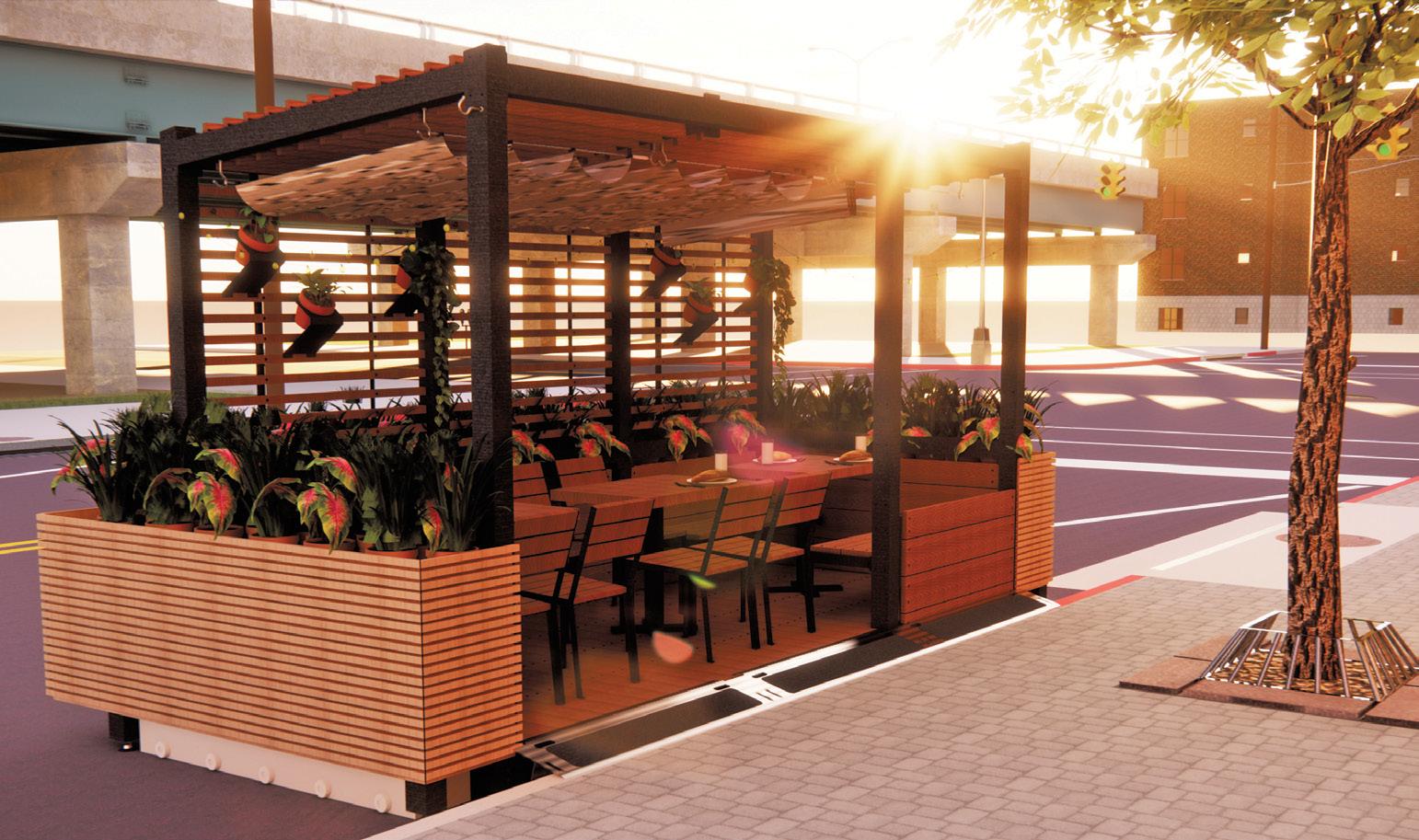
Will it attract guests to return? “The key is to see your outdoor dining area not just as an extension of your restaurant, but as a vital part of your business plan,” “By choosing the right structure, you’re not only staying compliant but also boosting your brand’s appeal.”
strEATery’s experience in the industry highlights that the most successful setups are those that reflect the restaurant’s identity while seamlessly fitting into the urban landscape. “We’ve seen how thoughtful design can transform a space and make it a genuine draw for guests,” Eden added.
Once you have a clear vision, it’s time to research cost-effective solutions. Start by gathering quotes from various vendors and assessing their understanding of NYC’s regulatory landscape. Ask for references from other restaurant operators who have used their structures, and
don’t shy away from visiting installations to see the quality firsthand. “We often advise operators to think long-term,” Eden noted. “Investing in quality now means fewer headaches later – and often higher returns.”
strEATery’s modular designs mean that each setup can be customized to suit the restaurant’s aesthetic. Built from durable materials, these structures withstand New York’s unpredictable weather while remaining visually appealing. Safety features include impact-resistant barriers and elevated, easy-to-clean flooring. Plus, optional features like integrated heating and wireless charging can enhance the dining experience.
strEATery uses high-quality materials, including lightweight yet durable aluminum, to ensure long-lasting performance in outdoor environments. The structures feature hinged doors that can
“The key is to see your outdoor dining area not just as an extension of your restaurant, but as a vital part of your business plan.” — Sarah Eden
be easily lifted for cleaning, reducing maintenance time and keeping the space hygienic. These practical elements are designed to meet both DOT compliance requirements and the daily demands of busy restaurant settings.
In addition, strEATery offers added amenities like wireless mobile phone charging stations, which increase guest satisfaction and extend dwell time. The inclusion of planters with beautiful, low-maintenance greenery further enhances the ambiance, while integrated heaters make the space comfortable even during cooler months. These thoughtful features encourage repeat visits and longer stays, boosting revenue potential. strEATery structures also offer a strong return on investment by maximizing the revenue from each table turn. For example, an eight-seat setup, costing approximately $1,000 per month, can generate significant revenue with just one lunch and two dinner table turns per day. Assuming an average ticket price of $100 per seat, this setup can bring in around $2,400 daily, amounting to nearly $50,000 per month. The low operating cost relative to potential income makes strEATery’s solutions a smart investment for any restaurant.
“Our goal is to make outdoor dining feel effortless for both operators and guests,” Eden outlined. “We want every restaurant to feel confident that their setup is both compliant and inviting.”
For operators ready to explore their options, strEATery offers personalized consultations to discuss needs and budget. “We’re here to support you from planning through installation,” Eden concluded. For more information, contact Sarah Eden and her team at strEATery. Visit www.streaterypods.com for details.
Do you have the SCOOP on any foodservice and hospitality news? Send items to SCOOP Editor Joyce Appelman at tfs@totalfood.com
SCOOP heard that Patina Group, formerly Patina Restaurant Group, the iconic hospitality brand has officially unveiled a bold new identity that reflects its evolution from a singular fine dining restaurant to a modern, lifestyle-driven hospitality brand. With an ambitious goal to double its restaurant portfolio by 2030, Patina Group is embracing a future defined by culinary excellence, radical hospitality, and experiences that scale without compromise.
Under the leadership of President John Kolaski, the rebrand signifies a new era for Patina Group, with key initiatives that include the launch of new chef-led concepts like Hundredfold, a collaboration with James Beard Award-winning Chef Timothy Hollingsworth, as well as strategic partnerships with renowned chefs such as Carlos Gaytán and Iron Chef Morimoto. The brand also plans to expand its presence in entertainment and cultural-adjacent dining, large-scale events, and corporate hospitality.
SCOOP has learned that Tyson Foods, a leading provider of high-quality protein, is introducing four new products to its foodservice portfolio, offering operators versatile, high-quality protein solutions that meet evolving consumer demands. The latest additions include State Fair® Crispy Homestyle Beef Bites, Tyson® Honey
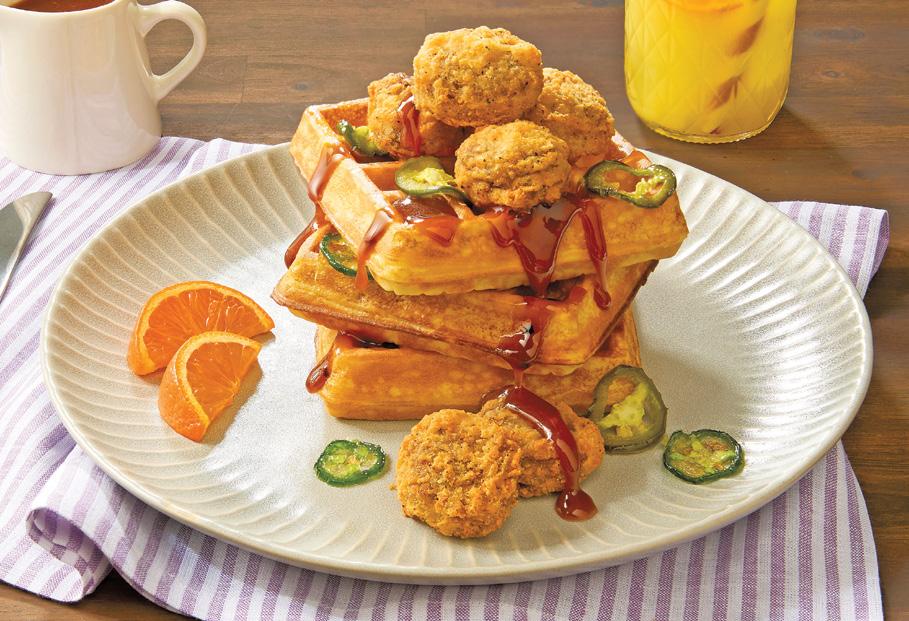
Stung® Chicken Chunks, Tyson® Fully Cooked Flamebroiled Turkey Patties, and Galileo® Protein Snacks.
State Fair® Crispy Breaded Beef Bites offer a homestyle flavor with visible black pepper and can be served as a center-of-plate item, appetizer, or side. The par-fried format allows for quick preparation, going from freezer to fryer in 3 to 3.5 minutes. With 82% of consumers indulging in comfort foods at least once a week (Datassential, Comfort Foods: Defined, 2023), these bites provide operators with an easy way to deliver the familiar, indulgent flavors diners crave while adding a versatile protein option to the menu.
Tyson® Honey Stung® Chicken Chunks are fully cooked, lightly breaded whole muscle chicken breast chunks in Original Honey and Hot Honey flavors. Made with real honey in both the marinade and breading, the products align with consumer demand for sweet and spicy flavors. According to Datassential’s Hot Honey Food Profile report (September 2024), hot honey menu penetration has grown 152% in the past four years. The freezer-to-fryer format allows for easy preparation without the need to mix or coat with honey.
Tyson® Fully Cooked Flamebroiled Turkey Patties provide a high-protein, lower-fat alternative for operators serving health-conscious consumers. The flame-broiled patties offer a char-grilled flavor, contain 14 grams of protein per serving, and have 35% less fat than a USDA 75% lean/25% fat beef patty. A 2024 Tyson Foods consumer study (Turkey Consumer Trends Report, January 2024) found that 62% of consumers are eating turkey more often for health reasons, and 54% perceive turkey as a premium protein option.
The launch also includes Galileo® Protein Snacks, which introduce three ready-to-eat options: Pasteurized Process Provolone Cheese & Italian Dry Salame, Italian Dry Salame, and Sliced Pepperoni. Made using traditional Italian techniques, the products contain no BHA/ BHT. The Provolone Cheese & Italian Dry Salame Snack Pack pairs provolone with salame, while Italian Dry Salame and Sliced Pepperoni provide bold, classic flavors in a convenient format.
“With these four new product innovations, we are helping operators meet consumer demand for bold flavors, high-quality proteins, and convenient back-ofhouse solutions,” said Scott Ware, Vice President Foodservice Customer Development at Tyson Foods. “From craveable comfort food to trending sweet heat, our latest offerings provide versatile solutions that enhance menus and drive customer satisfaction.” For more information, visit TysonFoodservice.com/products/latest-products.
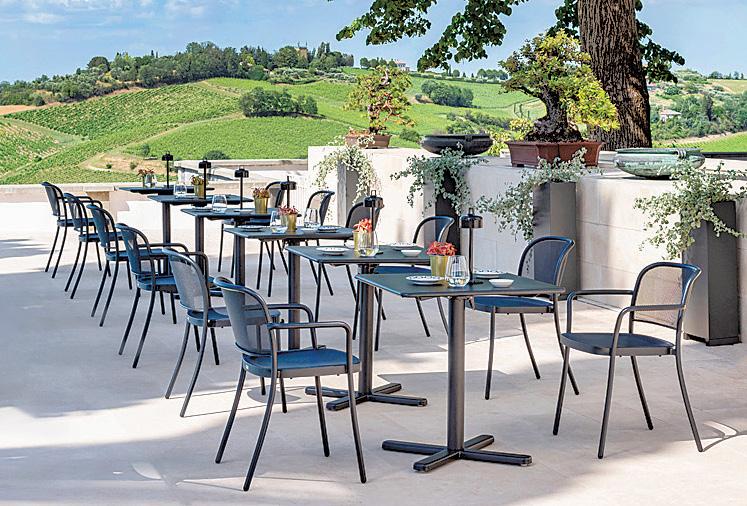
SCOOP has learned that EMU recently introduced the Café collection by Christophe Pillet, a perfect blend of contemporary style and classic elegance. Crafted from durable steel, these chairs are built to last, making them ideal for both commercial and home settings. With a versatile range of chairs, armchairs, and stools available in vibrant colors, the Café collection is suited for indoor and outdoor use. Its sleek lines effortlessly complement various EMU tables, offering both style and functionality. Elevate your space with Café where timeless design meets everyday practicality. Transform your environment today!
Learn more at https://emuamericas.com/
SCOOP discovered that there’s a bold new plantbased recipe resource helping school districts serve food that’s better for students and the planet. Friends of the Earth recently released Climate-Friendly PlantBased Recipes for Schools, a vibrant collection of 40+ student-approved recipes developed in collaboration with K–12 school districts across California.
The free digital booklet features kid-favorite, culturally diverse dishes like Chana Masala Power Bowls, Tofu Japchae, and Fiesta Crunch Wraps—scaled for school kitchens and designed to meet USDA meal pattern requirements.
The launch marks a major step forward in mak-
ing school food both healthier and more climatefriendly. With meat and dairy production responsible for nearly a fifth of global greenhouse gas emissions, shifting school meals toward more plant-based and organic options is a powerful way to reduce climate impact.
Friends of the Earth has been working with over 100 school districts to help them build out school meal programs that support healthy kids and the environment. These recipes came out of that program –meaning they’re already tested by school food service teams. Every recipe has proven its cultural relevancy, appeal to diverse students and ease of preparation at scale.
The guide itself is designed to make everything as easy as possible for school food service directors, with recipes already scaled for industrial kitchens, K-12 meal pattern guidance and marketing tips to build kids’ enthusiasm for plant-based meals. School food service directors have praised the resource as a strong example of statewide collaboration to advance healthy, plant-based meals.
The Climate-Friendly Plant-Based Recipes for Schools booklet is free to download at foe.org/recipes. To learn more about Friends of the Earth’s school food work, visit climatefriendlyschoolfood.org.
SCOOP has learned that Pecinka Ferri Associates recently announced that Joe Louis Ferri has been named Chief Operating Officer (COO), ushering in the next era of leadership at the company that has defined smart foodservice solutions for over 50 years in the Metro New York area.
Joe Louis Ferri, affectionately known as Joe Jr., steps into the COO role with deep industry roots and a fresh perspective.
A second-generation leader, Joe has grown up in the business and brings a dynamic combination of legacy knowledge, strategic insight, and operational savvy to the table. In addition to his new title, Joe will be taking on many of the roles and responsibilities previously managed by his

father, Joe Ferri Sr., who recently retired.
“This isn’t just a job for me—it’s in my DNA,” said Ferri. “Pecinka Ferri has always stood for integrity, innovation, and smarter foodservice. As COO, I’m excited to evolve how we deliver solutions that truly work for our customers, while honoring the legacy we’ve built.”
In his new role, Ferri will oversee day-to-day operations, foster key manufacturer partnerships, and further develop Pecinka Ferri’s customer-first approach. He will continue to serve as Director of Project Sales, ensuring continuity for clients and partners who rely on his expertise in this area. His promotion reflects the company’s commitment to long-term growth and ongoing leadership in the foodservice equipment industry.
To learn more, visit pecinkaferri.com.
SCOOP learned that VITLIFE is the new exciting news in commercial refrigeration. Their two door 54" Reach in Freezer VRT54F comes with best-in-class features like European controls and air circulation system to reach optimal temperatures and uniform cooling with no concontinued on pgs 98-99

densation on doors. Add to it self-close doors and hold at 90 degrees for convenience, EC fan motor for lower energy consumption, less noise with higher efficiency and pre-installed heavy-duty castors with brakes for easy mobility. With capacity of 46 Cubic feet and low price, this beast is an absolute winner. Check them out on www.vitlifecommercial.com
SCOOP learned that Olio Piro, producers of extra virgin olive oil renowned for its high antioxidant properties, announced a remarkable double victory at the 2025 NYIOOC World Olive Oil Competition, the world’s most prestigious benchmark for quality in extra virgin olive oil. The company’s flagship oil, Piro, has earned its seventh Gold Award, while its newest innovation, Cucino, claimed Gold on its debut appearance. This double win is a powerful affirmation of Olio Piro’s dedication to consistency, craftsmanship and purity.
Piro, known for its bold character, antioxidant richness, and unmistakable Tuscan identity, has consistently stood out on the global stage. Now, in its seventh consecutive win at NYIOOC, it continues to embody Olio Piro’s commitment to excellence in every drop.
The 2025 competition also marks a triumphant introduction for Cucino, Olio Piro’s newest expression, which was developed specifically for high-heat cooking. Crafted from a proprietary selection of olive varieties that retain their nutritional integrity when heated, Cucino offers a rare harmony of flavor, versatility, and health benefits. Its Gold Award recognition signals the emergence of a new category: a heat-friendly extra virgin olive oil that doesn’t compromise quality.
“We created Cucino with the same principles that made Piro an award-winner,” said Marie-Charlotte Piro, CEO of Olio Piro. “To have both oils recognized at this level—especially Cucino on its first appearance—is deeply rewarding. It’s a tribute to our incredible team, our trusted growers and millers, and the high standards we never stop pushing.”
These dual honors exemplify Olio Piro’s mission: to elevate everyday cooking through flavorful and functional olive oils. Whether drizzled as a finishing touch or used in high-temperature sautéing, Olio Piro oils are designed to bring out the best in your food while supporting a health-forward lifestyle.
• Piro is ideal for finishing dishes, imparting elegance, depth, and vibrant flavor.
• Cucino is engineered for performance under heat, delivering antioxidant resilience and smooth, balanced taste in high-temperature cooking.
Olio Piro can be found online at olio-piro.com and is
served at fine dining establishments, including Eleven Madison Park in New York City. Piro retails at $56.00 for 500ml, and Cucino retails for $39.00 for 750ml.
SCOOP has learned that Hobart, the premium commercial food equipment manufacturer known for designing and building some of the most reliable, musthave equipment, recently announced the winners of its annual custom-designed mixer giveaway at the International Pizza Expo in March. Lupe and Tim Hammill, owners of Cassidy’s Pizza in Watsonville, Calif., won a Legacy+® HL662 60-quart pizza dough mixer valued at $35,000 at the show in Las Vegas.
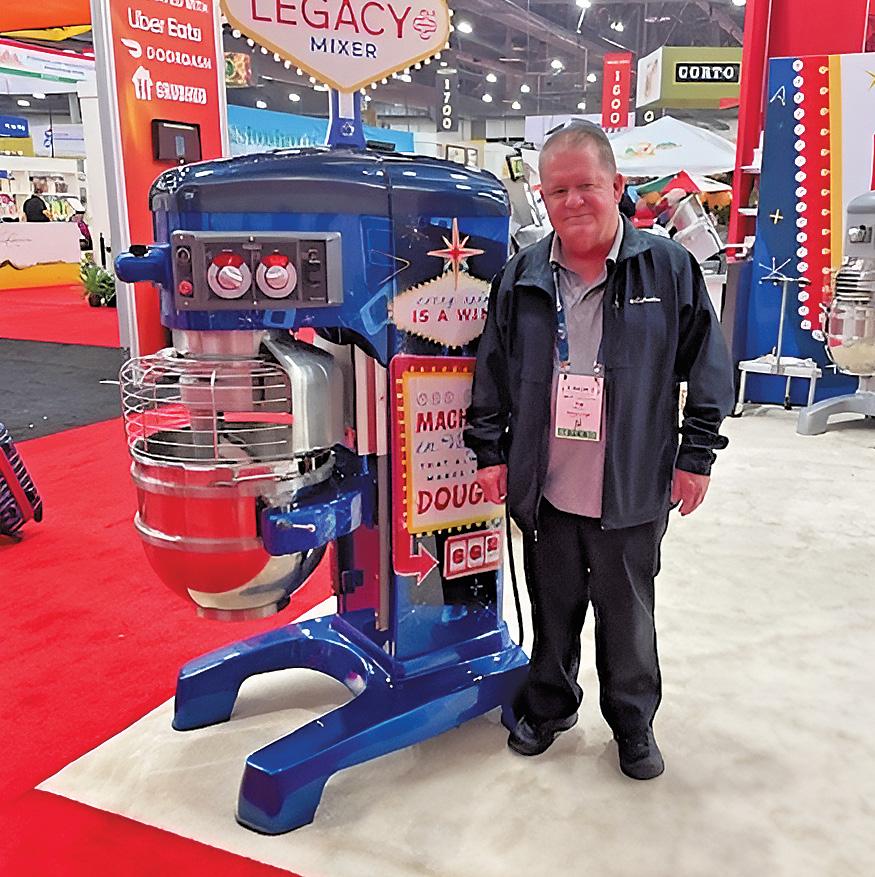
This year’s custom-designed mixer paid homage to Las Vegas with the slogan, “The One Machine in Vegas that Always Makes You Dough.” It featured images of pizza, slot machines, jackpots and iconic Vegas signs. Hobart designed the Legacy+ HL662 maximum heavy-duty mixer with its exclusive PLUS System, which consists of VFDadvantage technology, maximum capacity overheat protection and a reinforced planetary shaft. Together, these features drive more power to the bowl for consistent mixing and output and allow for as much as 30% more mixing capacity in the same size bowl, depending on the application.
Hobart also recently upgraded the Legacy+ HL662 mixer with its exclusive NoChipMax™ System. The system includes a NoChip™ aluminum planetary with a metallic gray hybrid powder finish that is scratch and corrosion resistant and prevents paint chipping. Also included is a NoChip #12 attachment hub with a stainless-steel insert and die cast cover, which prevents paint chipping when
using a VS9 slicer attachment or meat grinder. Hobart would like to congratulate the Hamills and the staff at Cassidy’s Pizza for winning their very own custom-designed Legacy+ HL662 pizza dough mixer.

On May 7, a Virtual Breakfast Session panel led by MaxEx founder Linda Kavanagh and Pecinka Ferri Executive Chef Nick Mercogliano dissected how foodservice operators can satisfy Boomers, Millennials and Gen Z under one roof. Kavanagh cautioned against over-targeting demographics. “Give diners a great experience. Do what you do best,” she urged, emphasizing core strengths over chasing fleeting trends. Mercogliano riffed on Field of Dreams: “If you build it—and build it well—they will come… with the proper marketing.”
The conversation pivoted to emerging formats, notably standalone, upscale food courts that house chefdriven stalls in a shared, flexible setting. These hybrid destinations let multi-generational groups—from tradition-oriented Boomers to digitally native Gen Z— each tailor their visit without compromise.
For operators, the mandate is clear: double-down on excellence, embrace adaptable concepts and leverage targeted marketing. By marrying culinary integrity with strategic format innovation, the foodservice industry can turn generational diversity from a challenge into its next growth engine.
Learn more at https://totalfood.com/vbs/
SCOOP heard that Empero Group, a leading Turkish manufacturer of professional kitchen equipment,
underscored its deepening commitment to the U.S. market at this year’s NRA Show by unveiling a range of new product innovations developed in partnership with Galaxy Group.
What began as a distribution alliance has evolved into a full-scale innovation partnership. The collaboration brings together Empero’s world-class manufacturing expertise with Galaxy Group’s deep understanding of the American foodservice market.
Marking its seventh appearance at the NRA Show, Empero made it clear: the company is not only here to stay — it’s here to grow. With strategic investments and a fully operational presence in the United States, Empero is positioning itself for long-term success.
“We’ve invested heavily in understanding what the U.S. market demands — and we’re delivering exactly that,” said Empero CEO Bekir Topuz. “Our partnership with Galaxy Group has been instrumental in helping us design smarter, more adaptable, and more competitive products.” Galaxy Group CEO Hakan Inan added, “It’s rare to find a global manufacturer as agile and committed to collaboration as Empero. Together, we’re building solutions that set new standards for quality and efficiency.”
SCOOP knows that today’s kitchens face mounting pressure to maintain output with leaner teams, tighter margins, and rising safety expectations. Bizerba’s new KR2 Professional Meat Cutter is designed to meet that challenge. This fully automatic horizontal slicer delivers safe, consistent slicing of bone-in or boneless meats— no skilled operator required. With push-button con-

trols, a washdown-safe stainless steel design, and slicing speeds of up to 220 cuts per minute, the KR2 helps teams increase throughput while reducing risk and cleanup time. It’s a smart addition to any operation looking to streamline meat prep without sacrificing quality or control. Learn more at https://www.bizerba.com/us/en
SCOOP has learned that Hoshizaki America announced the expansion of its partnership with Master Marketing Manufacturers Reps, who will now represent Hoshizaki’s full line of ice machines, dispensers, and refrigeration products in MAFSI Region 13 – Florida.
This territory expansion follows Master Marketing’s recent appointments in Tennessee and the Carolinas, further solidifying their presence across the Southeast and demonstrating Hoshizaki’s continued confidence in their performance and regional expertise.
“Master Marketing has demonstrated strong performance and leadership in the Southeast,” said Scott Meycontinued on pgs 100-101

er, VP of Sales at Hoshizaki America. “Their understanding of the market and commitment to customer success align perfectly with our long-term goals. We’re excited to expand our partnership with them in Florida.”
This move is part of Hoshizaki America’s ongoing efforts to align with top-performing rep groups that can deliver enhanced support, product knowledge, and responsiveness in key markets.
SCOOP knows the modern adage of Rooted locally, connected globally: From December 15 to 17, 2025, Riyadh will welcome Host Arabia, an evolution of the renowned HostMilano International Hospitality Exhibition, tailored for one of the world’s fastest-growing hospitality markets. The event is organized by Fiera Milano - a leading global exhibition organizer with decades of experience in international B2B events - in partnership with Semark, a key player in Saudi Arabia’s event industry. Together, they bring the full scope of HostMilano’s innovation, business insight, and sector expertise to the Gulf region.
Held at the Riyadh Front Exhibitions and Conferences Center, Host Arabia will offer international companies unparalleled access to high-growth opportunities across the hospitality and foodservice sectors in Saudi Arabia and the wider Gulf region. The event will run alongside Semark’s Saudi HORECA 2025 - the Kingdom’s leading annual food & beverage and hospitality services fair, now in its 14th edition. This co-location creates a powerful, unified experience that reflects the full scale of the modern hospitality industry, offering exhibitors and visitors the opportunity to explore new synergies across complementary sectors.
The focus on Saudi Arabia as the host destination is both strategic and timely. The Kingdom is investing heavily in tourism and hospitality, with ambitious goals to attract 150 million annual visitors by 2030 and deliver more than 300,000 new hotel rooms. This rapid expansion presents extraordinary opportunities for global companies across the HoReCa (Hotel/Restaurant/Café) value chain.
Backed by the proven HostMilano format - which returns for its 44th edition from October 17- 21, 2025and Semark’s deep local expertise, Host Arabia is set to become a strategic hub for innovation, networking, and market expansion in one of the world’s most dynamic hospitality landscapes. Save the date: December 15 - 17, 2025, Riyadh. Be part of the future of hospitality.

SCOOP heard that Pudu Robotics is transforming the food and beverage industry with AI automation. Their advanced service robots, BellaBot Pro, PuduBot 2, KettyBot, and Pudu CC1, streamline operations across the entire dining experience, from guest reception and food delivery to dish return and floor cleaning. By combining advanced navigation systems, interactive AI, and customizable advertising displays, their solutions enhance service quality, reduce employee workload, and elevate the customer experience. With more than 90,000 units deployed in over 60 countries, they’re redefining hospitality through automation that’s efficient, engaging, and precise. In 2025, Pudu expanded their North American footprint with a new U.S. headquarters in Santa Clara, California, and a fulfillment center in Hamilton, New Jersey, to better support growing demand for smart service solutions.
Learn more at www.pudurobotics.com
SCOOP learned that each year, commercial kitchens can overproduce by 20–30%, contributing to more than $380 billion in wasted food. Metafoodx is taking direct aim at this crisis with its patented 3D AI scanner — a plug-and-play device that captures the image, weight and temperature of food in just two seconds and links it to the menu. By tracking what’s prepared, consumed and left over, Metafoodx gives kitchens a complete snapshot of their operations to improve menu planning and forecasting. The result is transformative: up to 90% waste reduction, automated food safety compliance and an average 200% return on investment within weeks. Metafoodx’s technology is already trusted by universities and foodservice providers across North America, and they are seeing incredible results. With the global food tech market projected to exceed $80 billion by 2030
and operators increasingly seeking sustainable, costsaving solutions, Metafoodx is scaling fast to meet demand. To accelerate this growth, Metafoodx just closed $9.4 million in funding. If you’re a food operator ready to cut costs and reduce waste, book a demo with Metafoodx or reach out to their sales team at contact@metafoodx.com.
Purefetta™ is a game-changer for kitchens operating with lean teams. It makes life easier while maintaining top-tier quality. Purefetta is virtually indistinguishable from fresh semolina pasta—chefs and customers can’t tell the difference. By switching to Purefetta across the board, operators simplify prep, streamline inventory, and eliminate the risk of cross-contamination by removing traditional wheat pasta from the menu. With a cook time of just 1 to 2 minutes and full dishes ready in as little as 3 minutes, Purefetta drastically cuts time on the line. It also holds up beautifully after cooking, staying fresh for days when refrigerated. This makes it ideal for batch prep and fast plating during service, helping kitchens move quicker with fewer hands.
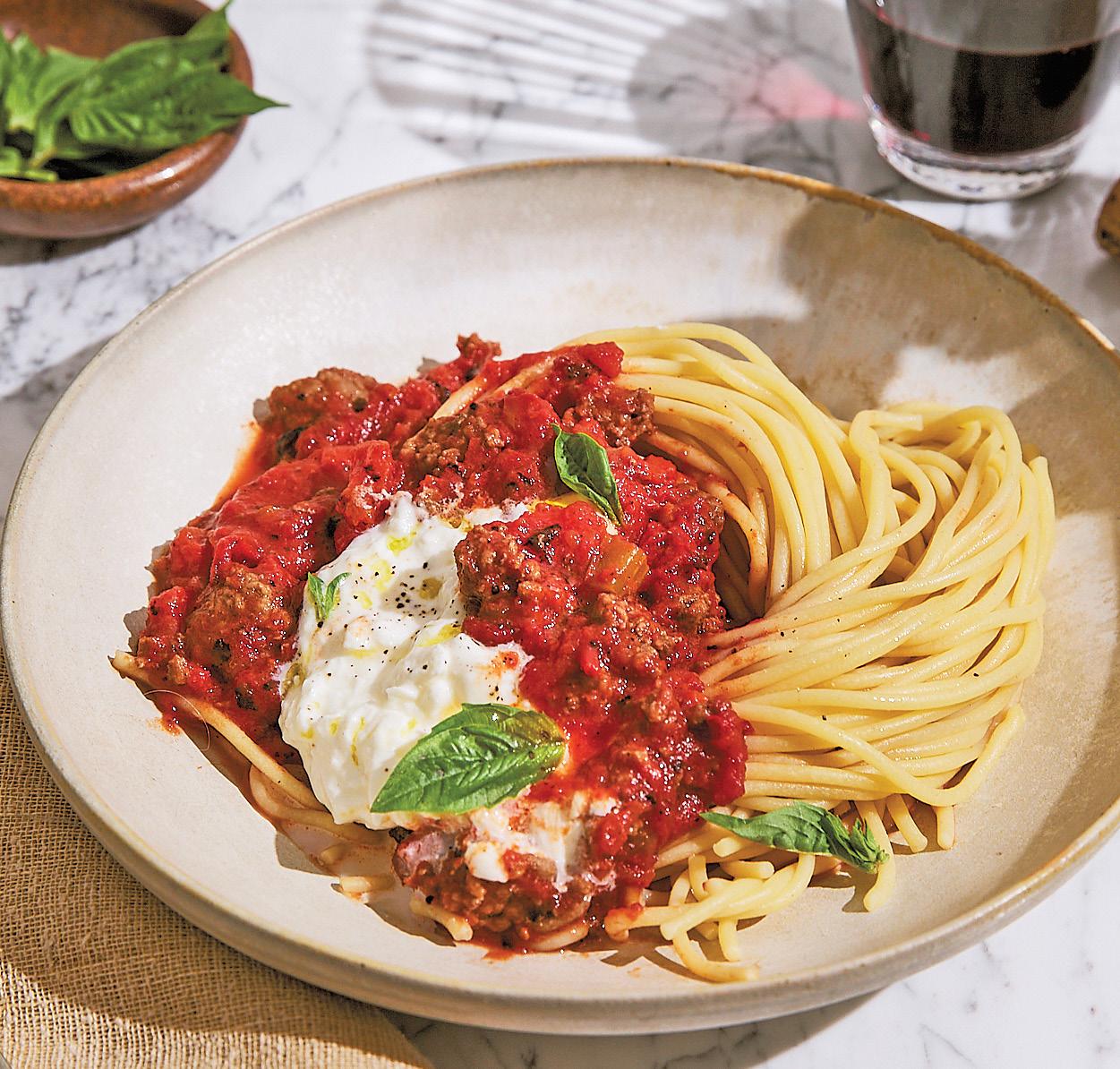
“Free-from” diners are often the deciding vote when groups go out to eat. When restaurants offer meals that naturally meet dietary needs—gluten-free, allergenfree, vegan—those guests return, bring others, and drive repeat business. With Purefetta, operators don’t just meet special requests; they attract loyal customers while easing the pressure on kitchen staff. In short, Purefetta helps solve one of foodservice’s biggest challenges: doing more with less—without compromising on quality, speed, or guest satisfaction.
Contact www.charliestable.com for more information and samples
SCOOP heard that Salsa Queen was started by a single mother to provide for her 7 children, and is now available in nearly 1000 stores across 35 states. At first, salsas were made around the kitchen and sold at local farmers markets where she built-up a loyal following because of the premium quality and unique taste profiles. Our fresh, gourmet salsas are preservative and gluten-free. Salsa Queen is also the world’s leading producer of
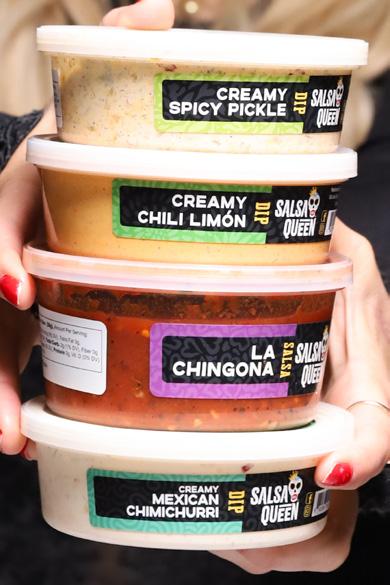
freeze-dried salsas. We’ve taken four of our fresh salsas and freeze-dried them so you only need to add water when you want amazing, authentic Mexican salsas. Lightweight and with a 3-year shelf life, our freeze-dried salsas means you can have great taste wherever you go! Fresh or freeze-dried, our salsas are family and keto friendly! Our salsas and dips are bursting with big, bold authentic flavors. Learn more at salsaqueen.com.
SCOOP has heard that Orderific is an AI-powered restaurant management platform built to streamline operations and boost profitability for small and medium-sized restaurants. It features a mobile-first POS system with digital menus, QR code ordering, and real-time payments, letting customers order and pay from their devices. With capped 2% transaction fees, it’s a cost-effective alternative to third-party apps. Restaurants benefit from instant fund settlements (1–2 days), AI-driven upselling, customizable loyalty programs, and real-time, multilin-

gual menu updates. Orderific also grants full ownership of customer data, enabling personalized marketing and deeper customer relationships - empowering restaurants to stay competitive and thrive in a fast-changing industry. For the first time ever, Orderific would like to offer a LIFETIME FREE ACCESS with CUSTOM SET-UP to TFS readers by emailing totalfoodpromo@orderific. com now!
SCOOP learned that Freshline is a modern B2B eCommerce platform built specifically for food distributors. Designed to streamline sales operations and enhance customer experience, Freshline enables distributors to offer a fully customizable online ordering portal tailored to their buyers’ unique needs. From real-time inventory and pricing controls to automated invoicing, fulfillment, continued on pgs 102-103
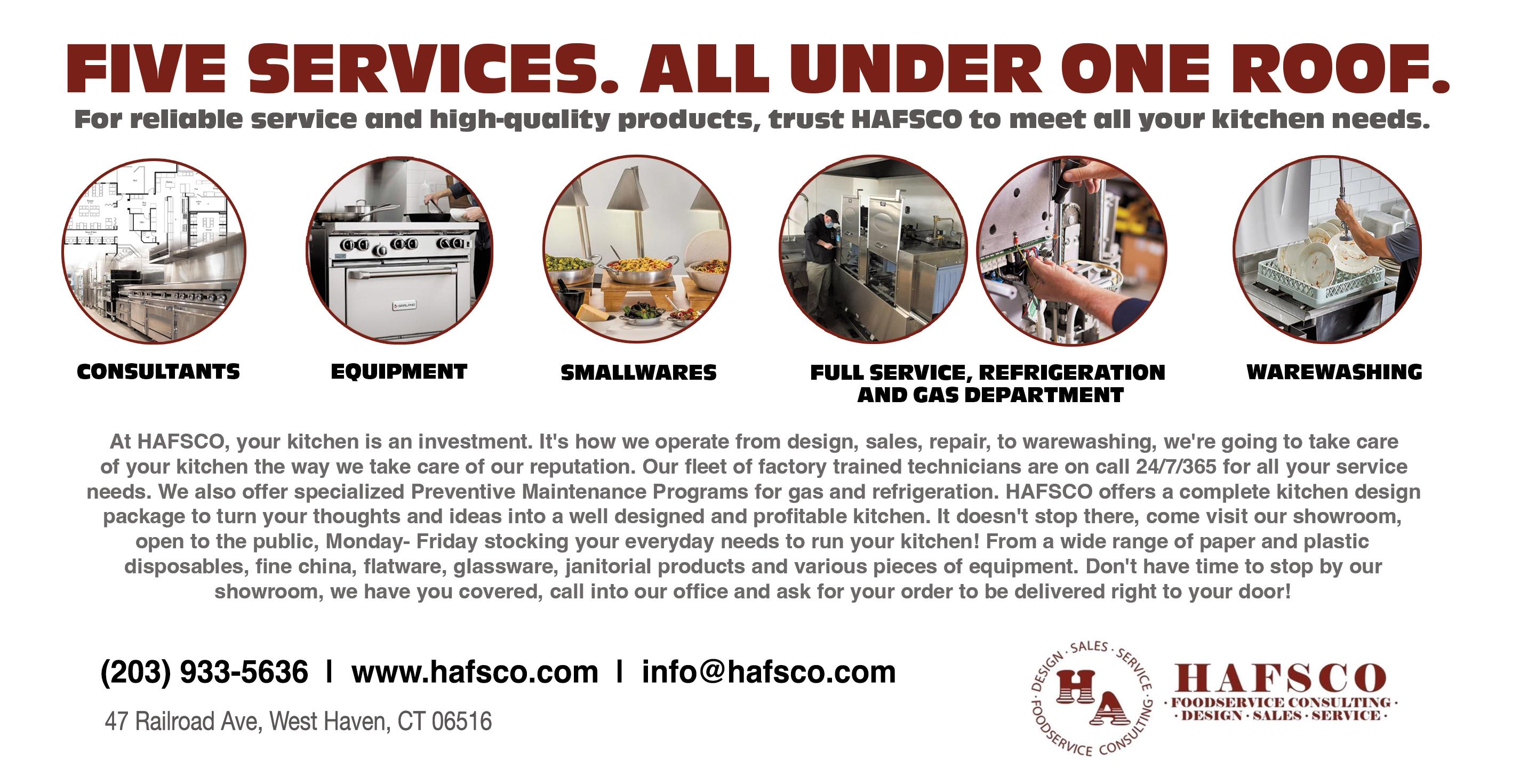

and payments, the platform helps distributors eliminate manual processes and drive efficiency. With built-in tools like AI-powered product recommendations, flexible delivery scheduling, and customer-specific catalogs, Freshline empowers suppliers to grow their sales while providing unmatched convenience to their customers. Trusted by industry leaders, Freshline is quickly becoming the go-to digital partner for distributors across North America looking to modernize their operations and stay competitive. Whether you're a regional wholesaler or a national foodservice provider, Freshline gives you the tools to scale smarter, sell faster, and serve your customers better. Learn more at https://freshline.io/.
SCOOP has learned that Neapolis® is a professional dome oven that bakes Neapolitan pizza in under one minute, reaching up to 510°C. Ideal for all pizza types and even bread with the optional front door. Chosen by top pizza chefs, it features advanced software that optimizes energy use for high-volume, low-cost baking. Available in three sizes (4, 6, 9 pizzas), it fits any space. Made in Italy with premium materials, it’s built for continuous use. Patented design, cool external surfaces, and smart energy management make it efficient, reliable, and perfect for any kitchen environment. Learn more at https://morettiforni.com/en/neapolis/
SCOOP learned that Johnsonville®, one of America’s most trusted sausage brands, recently announces the launch of three pre-sliced, pre-cooked sausage flavors designed to help foodservice operators

reduce prep time, save labor, and deliver bold, ontrend flavors their customers crave.
The new lineup includes: Ultimate Italian, Jalapeño Cheddar, and Southwestern. Each is packed with visible, authentic ingredients like bold herbs, real jalapeños, and creamy cheddar. With five slices per ounce, they deliver excellent coverage on pizzas, burritos, wraps, bowls, skillets, and more—making them ideal for breakfast, lunch, dinner, and graband-go.
“These new slices are purpose-built for foodservice operations that need to move fast without compromising quality or flavor,” adds Yoder. “Whether you're serving up signature pizzas or high-volume breakfast skillets, Johnsonville Slices deliver.”
Learn more at: https://johnsonvillefoodservice. com/product-lines/slices/
C•CAP AWARDS

SCOOP learned that Culinary Careers Program (C•CAP) — the workforce development nonprofit that empowers under-resourced high school students & adults to become the next generation of leaders in food and hospitality — recently announced it awarded $2,436,635 worth of scholarships to 150 deserving culinary students from 55 schools across the U.S., this spring.
C•CAP's rigorous scholarship process includes the requirements of stellar recommendations, grades, and attitudes, and the completion of a professionally judged and timed competition wherein students produce a total of four classic French dishes. Participating in the preliminary competitions were 411 students from 84 schools; those that passed entered into the final competitions, with 150 students ultimately passing that round, and winning scholarships.
This academic year, C•CAP broadened its scholarship offering and became the official administrator of all scholarship funds for the James Beard Foundation (JBF). Moving forward, any interest in funding new JBF-affiliated scholarship opportunities will be managed through C•CAP's established framework. In addition, C•CAP announced three new $15,000 scholarships in partnership with the Laxer Family Foundation for students based in Florida.
"We're thrilled we're once again to be able to provide significant higher-education financial support to our highly deserving students, with more than a dozen full-tuition scholarships to some of America's leading culinary institutions," said Tanya Steel, Co-Executive Director. "This brings our total to $76 million in college scholarships C•CAP has awarded, since our inception 35 years ago," said Co-Executive Director Jennifer Solomon. "We are proud to be one of the country's largest funders of higher education for culinary students." Learn more at CulinaryCareers.org and @CulinaryCareersProgram.
SCOOP heard that Ken Rubin, nationally recognized chef, educator, food anthropologist, and Chief Culinary Officer at Rouxbe—the world’s leading online culinary school—shares insights from his trip to South Africa.
Globally, culinary workers are vital to the tourism and hospitality sectors, which generate billions for regional economies and employ millions. This is especially true in South Africa, where nearly a third of the population faces unemployment, yet there’s a growing need for skilled culinary workers.
The sector is projected to grow 7% annually over the next decade. However, the legacy of apartheid still limits access to jobs and career advancement. In response, vocational education has emerged as a powerful tool. Skills-based credentials offer job seekers a competitive edge in this high-growth industry.
Nelson Mandela once said, "Education is the most powerful weapon which you can use to change the world." This is embodied at Forest Town School in Johannesburg, which offers culinary and hospitality training for high school students with disabilities. Students gain hands-on experience through work in the school’s bakery, developing real-world skills. Programs like this are essential for building a skilled and inclusive workforce. They equip students with practical tools, confidence, and independence—key to ensuring the next generation of culinary professionals reflects South Africa’s diversity.
--- Mike Soldyn is the newly appointed National Sales Manager at Old Hickory, bringing with him over a decade of proven success in sales and more than three years of hands-on experience in the food industry. A former professional softball player, Mike has always thrived in competitive environments where focus, drive, and excellence are non-negotiable. With a relentless work ethic and a passion for delivering results, Mike is leading Old Hickory’s sales efforts nationwide—building relationships, expanding market presence, and driving strategic growth for the brand. His approach blends deep industry knowledge with a genuine commitment to client success, making him a trusted partner in the field.
Mike’s mission goes beyond titles and targets. At his core, he’s driven by a desire to achieve excellence in everything he does—whether he’s mentoring his team, helping

a customer find the right solution, or spending quality time at home. His authenticity, leadership, and relentless pursuit of growth make him a standout not just at Old Hickory, but across the industry. As he steps into his new role, Mike is excited to carry on Old Hickory’s proud legacy of American-made craftsmanship, while forging new paths of innovation and success in the foodservice space. To learn more about Old Hickory, please visit www.hickorybbq.com or email Mike Soldyn via ms@hickorybbq.com
--- The Vollrath Company announced the appointment of Paris Dreibelbis as its new Corporate Chef and Product Training Manager. In this role, Dreibelbis will lead comprehensive training initiatives designed to elevate product knowledge, culinary innovation and customer engagement across the organization.
Dreibelbis brings a unique combination of hands-on culinary experience and a deep passion for the foodservice industry. His background spans prestigious kitchens and food operations, including his recent position as Food Fanatic Chef at US Foods and Corporate Chef at Alto-Shaam.
Dreibelbis’s career highlights include working alongside Team USA at the renowned Bocuse d'Or in Lyon, France, and winning first place at the Ment’or BKB Young Chef Competition in Las Vegas. His interna-
tional experience and forward-thinking approach make him an ideal leader to spearhead Vollrath’s training programs and customer-facing events.
In this position, Dreibelbis will oversee Vollrath University’s training and demonstration initiatives, support new product launches, and serve as a product expert for both internal teams and culinary professionals across the country.

As part of this transition, longtime Vollrath Corporate Chef Rich Rupp will remain with the company parttime to assist with onboarding and ensure a smooth handoff of responsibilities. Rupp, who has been an invaluable resource and ambassador for the brand, will continue to support training initiatives until he decides to retire.
continued on page 104
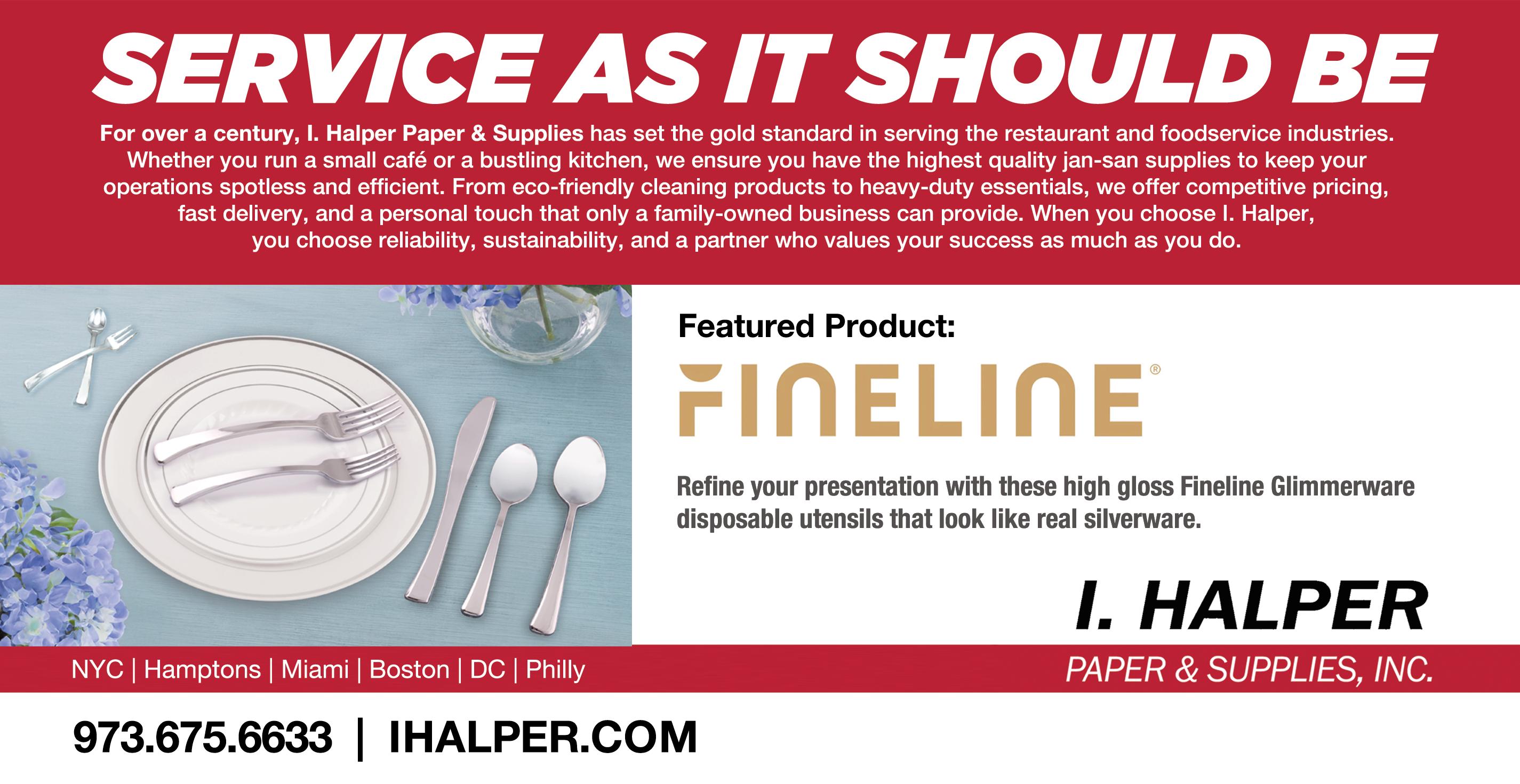
--- Global, family-owned food company Rich Products (Rich’s) announced Jaimie Lowe as its new Executive Vice President and Chief Financial Officer (CFO). A seasoned global finance leader with more than 25 years of experience and long tenures at companies like Unilever, Danone and most recently Tyson Foods, Lowe brings deep expertise in investment management, corporate development, financial planning and digital transformation. She joins Rich’s as a member of its executive team.

As CFO, Lowe will oversee Rich’s financial strategy and planning, risk management, capital structure, and key growth initiatives. In today’s rapidly evolving economic environment, her leadership will be instrumental in navigating the landscape, while ensuring financial resilience. A critical member of Rich’s executive team, she will shape and lead global finance into the future, ultimately helping the company deliver on its bold growth aspirations.
Prior to joining Rich’s, Lowe held executive roles at Unilever, Danone and Tyson Foods, leading Financial Planning and Analysis, Corporate Development, Investor Relations and Treasury and Risk. With deep experience in consumer-packaged goods, she has led and shaped financial strategies across various sectors, including food, nutrition, protein and beauty, as well as driven market growth and development strategies across the U.S., Asia, Europe, and the Middle East.
native desserts but for mentoring the next generation of chefs. His approach blends elegance, precision, and flavor — values deeply reflected in RATIONAL’s cooking systems. Chef Bachour’s passion for performance and exceptional aesthetics resonates across the international culinary stage. His artistry, often described as a fusion of vibrant color and refined form, has earned him an immense social media following and a reputation as a visionary in modern pastry.
SCOOP heard that the Culinary Institute of America hosted its annual Leadership Awards Gala at Manhattan’s Ziegfeld Ballroom last month, spotlighting five trailblazers whose careers have redefined hospitality and culinary education. Known as the presentation of the Augies™, the evening celebrated not only excellence but purpose—with a goal to raise $1 million for student scholarships.
This year’s honorees included Elizabeth Blau, a James Beard Award nominee and founder of Blau + Associates, revered for transforming Las Vegas into a global culinary destination and advancing women’s leadership in hospitality through her Women’s Hospitality Initiative.
Brandon Chrostowski ’06, founder of EDWINS Leadership & Restaurant Institute, was celebrated for his groundbreaking work training formerly incarcerated individuals. His vision has evolved into a national model for rehabilitation through culinary education.
SCOOP learned that the prestigious 2025 Green Restaurant Awards recognize the restaurants and organizations in the restaurant industry which have accomplished a high level of environmental achievement in their respective categories.
HERE ARE THE WINNERS:
*GREENEST RESTAURANT Certified Green Restaurant® that received the most GreenPoints™ MUSE Global Kitchen is a 4 Star Certified Green Restaurant® in Calabasas, California, which has implemented 71 environmental steps and earned 573.08 GreenPoints™, the most GreenPoints™ of any Certified Green Restaurant®. MUSE Global Kitchen serves 100% vegan food and has on-site solar panels that produce more than 65% of its annual energy usage.
*Greenest Caterer: Big Delicious Planet
*Greenest Small Chain: Barcade Greenest University: Harvard University Greenest University Restaurant: Village Center Dining
*Greenest Independent Restaurant: Maine Beer Company Tasting Room
*Greenest NYC Restaurant: Well& By Durst
*Greenest Zoo Restaurant: Base Camp Cafe at the Cincinnati Zoo
*Greenest National Park Restaurant: Carvers’ Cafe at Mt. Rushmore
*Greenest Corporate Cafeteria: Mars Wrigley GIC –Better Moments Cafe
*Greenest K-12 School: MUSE Global Kitchen
*Greenest K-12 Contractor: Flik Hospitality
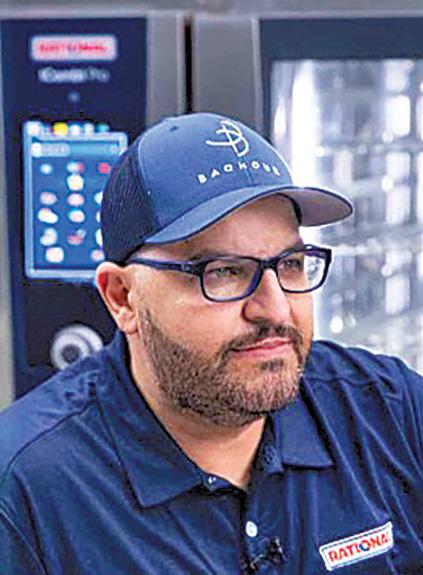
--- RATIONAL USA announced the appointment of globally celebrated pastry chef Antonio Bachour as its newest brand ambassador. Known for his bold creativity, technical mastery, and artistic presentations, Chef Bachour brings world-class talent and visionary energy to the RATIONAL culinary community. With multiple global awards for Best Pastry Chef and a Michelin Bib Gourmand for Bachour in Miami, Chef Bachour has become a global icon in the world of patisserie. With restaurants in the US and Mexico, he is revered not only for his imagi-
Renowned as the “Renegade Lunch Lady,” Ann Cooper ’79 was honored for her relentless advocacy for healthy school meals and food literacy. With over 50 years in the industry, Cooper’s impact spans public policy, education, and sustainable food systems.
I. Pano Karatassos ’60, a legend in the Southern dining scene and founder of Buckhead Life Restaurant Group, was recognized for elevating Atlanta’s culinary reputation and building a restaurant empire grounded in consistency and care.
Capping off the evening was Marcus Samuelsson, global restaurateur, author, and media personality. Samuelsson’s influence spans continents and platforms—from Red Rooster Harlem to his Emmy-winning food programs—making him a cultural force in modern gastronomy.
The gala welcomed 500+ guests, including chefs, alumni, and industry leaders. With auctions, a worldclass dinner, and passionate storytelling, the night reaffirmed the CIA’s commitment to nurturing future leaders in food.
*Reusables & Green Disposables Award: Chauncey’s Choice at CCU
*Energy Conservation & Renewable Energy Award: Cavers’ Cafe at Mt. Rushmore
*Sustainable Food Award: MUSE Global Kitchen
*Chemical & Pollution Reduction Award: Putnam Dining at UConn
*Waste Reduction Award: Cougar Woods Dining Commons at University of Houston
*Water Conservation Award: Outpost Cafe at the Cincinnati Zoo.
*Sustainable Seafood Award: Cougar Woods Dining Commons at University of Houston & Mars Wrigley GIC – Better Moments Cafe
*Green Marketing Award: Fresh Food Company
*Green Social Media Award: Tall Guy and a Grill
*Green Employee Leader: Valerie Davis Green Leader: Gregory Godfrey & Deepka Sani.
Learn more: https://www.dinegreen.com/post/announcing-the-2025-green-restaurant-awards
stead of just listing ingredients, describe the taste and texture of each dish in an evocative way, using sensory language.
Adding Unexpected Delights: Behind-the-Scenes Content: Offer exclusive glimpses into the kitchen, perhaps a time-lapse of a popular dish being made or a quick tip from the chef.
Virtual Events: Host online cooking demonstrations or Q&A sessions with the chef, streamed live or recorded and available on the website.
Local Event Calendar Integration: Feature upcoming local events in the area, positioning the restaurant as part of the community.
Create a website that isn't just a transactional tool, but a digital representation of the warmth and uniqueness of your restaurant experience. Then, integrating your website and social media platforms effectively can enhance visibility, improve customer engagement, and ultimately drive more traffic to your restaurant. Here are some thoughts and actions on how to achieve this synergy:
Consistent Branding: Ensure that the branding (logos, colors, and messaging) is consistent across your website and social media platforms. This helps reinforce your brand identity and makes it easier for customers to recognize you.
Share Engaging Content: Use your social media channels to promote content from your website, like the new smoking video clips, food photography, blog posts, new menu items, events, or promotions. You can share links to these pages, encouraging followers to visit your website for more information.
Promote Your Social Media on Your Website: Integrate social media icons and feeds on your website to encourage visitors to follow you. You can include a dedicated section for live social media feeds to showcase real-time updates, customer interactions, and user-generated content.
Menu Updates and Specials: Announce daily specials or menu updates on both platforms. Use social media to create buzz about a new dish and link to the corresponding menu page on your website for more details.
Events and Reservations: If you’re hosting events (like wine tastings or live music), promote them on social media
and link to a dedicated events page on your website for more information and ticket purchases or reservations.
Customer Feedback and Reviews: Encourage customers to share their dining experiences on social media and tag your restaurant. You can feature these testimonials and user-generated content on your website, showcasing customer satisfaction and community engagement.
Email Sign-ups and Newsletters: Use social media to direct followers to sign up for your email newsletter on your website. Provide exclusive offers or insider news as an incentive for signing up, helping you build a loyal customer base.
Analytics and Learning: Utilize analytics tools available on both your website and social media platforms to assess what types of content and campaigns resonate most with your audience. Use this data to refine your strategies and make future content.
Call to Action (CTA): Make sure each social media post includes a clear call to action, directing followers to take specific steps (like visiting your website for reservations, exploring the menu, or finding location details).
Collaborations with Influencers: Work with local influencers who can share their dining experience and promote both your social media and website. This can help you reach a broader audience and enhance your brand’s credibility.
You don’t need to implement every idea presented here to create a successful website and social media platforms. However, with some creative thinking, you can elevate your online presence significantly. Stay true to your brand identity. By aligning your website and social media efforts, you can create a powerful marketing ecosystem where each platform supports the others. This strategy will help you attract new customers while also fostering loyalty among your existing clientele. Ultimately, this will contribute to your restaurant's success and strengthen your brand. Put in the effort, be creative, remain consistent, and consider hiring a professional if necessary. Enjoy the rewards of the strong brand you have built!
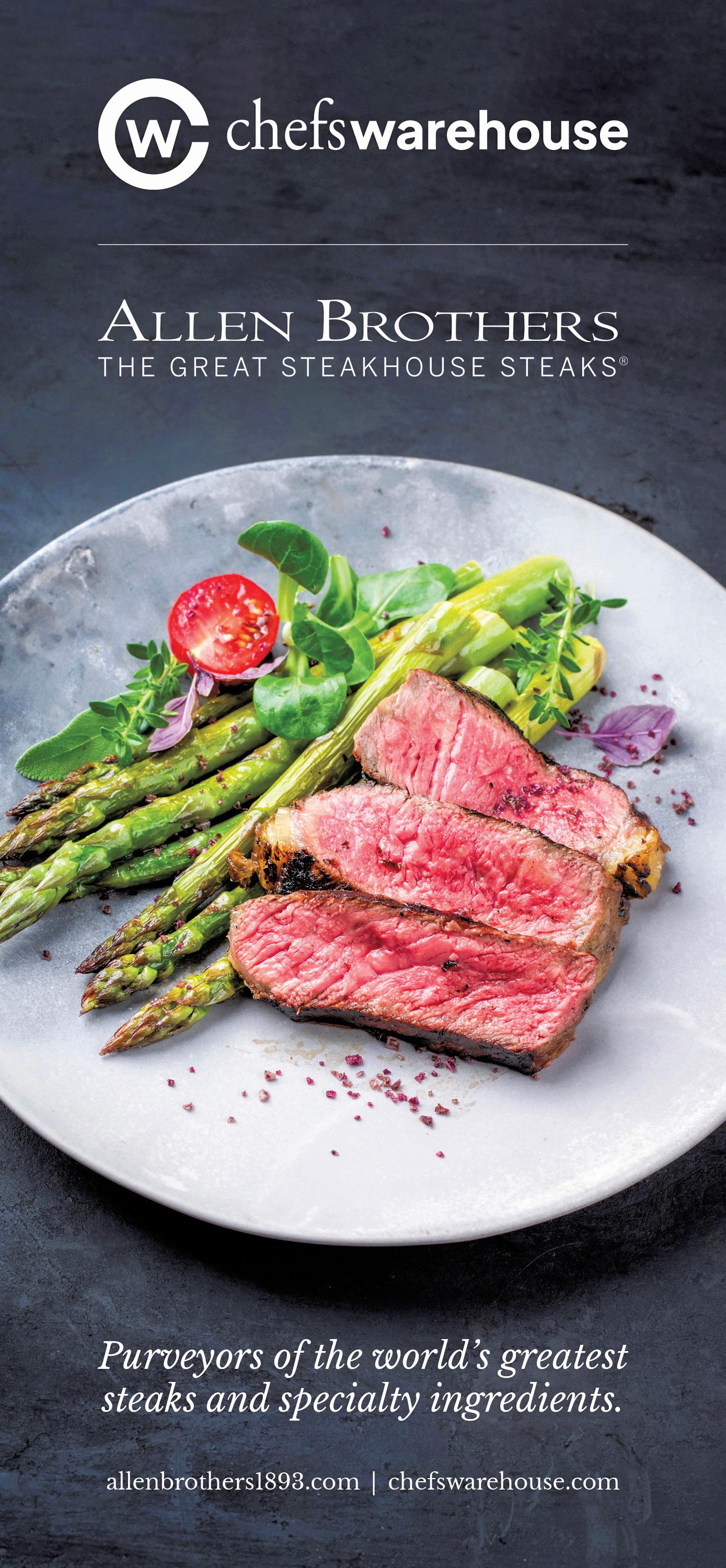
In today’s ultra-competitive foodservice landscape, margins are everything. And few categories offer the profit power of beverages. Whether you’re running a high-volume restaurant, a busy bar, or an entertainment venue, a smart, well-structured beverage program is no longer a niceto-have—it’s a necessity.
A profitable beverage strategy does more than just pad the check average. It can help shape the guest experience, streamline operations, and create new sales opportunities, especially when crafted with intent and built to reflect today’s evolving tastes. Gone are the days when beverage menus were just lists of basic beers and house wines. Today’s guests are adventurous, experience-driven, and—more than ever— interested in alcohol-free options. The rise of mocktails and premium NA offerings means beverage menus need to satisfy guests whether or not alcohol is involved.
Operators are listening. Across the U.S., restaurants and bars are investing in equipment and recipes that deliver flavor-forward, Instagram-worthy drinks—regardless of proof. And when it comes to operational ease and menu versatility, frozen drinks are having a serious moment.
That’s where Frosty Factory of America steps in. This Louisiana-based manufacturer has been producing high-per-
“Frozen
mocktails
give
formance frozen beverage machines since 1983. But the story starts even earlier, when founder Dolph Williams was running frozen drink service at his family’s liquor store.
Using those machines daily, Williams realized how much they lacked in capacity, reliability, and ease-of-use. With no manufacturers willing to build a better version, he sketched out his own design—on the back of a grocery bag. The result: a 12-gallonper-hour slush machine that redefined what frozen beverage service could be. “The reason our machines continue to succeed is simple,” said Heather Evans, Equipment Sales/Office Manager at Frosty Factory. “They’re efficient, easy to use, and built to last.”
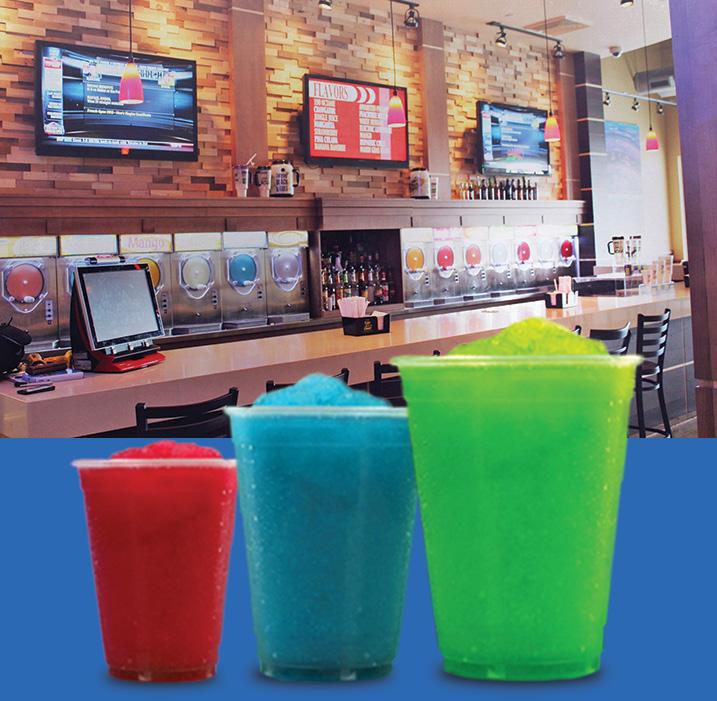
over 90% of the frozen drink machines in Las Vegas and New Orleans are Frosty Factory units.
Frosty Factory machines don’t require authorized service agents, and their simple construction is made for day-in, day-out performance. They’re reliable in even the most intense environments—Las Vegas casinos, cruise ships, national chains—and designed to handle both alcoholic and non-alcoholic offerings. “They’re designed to thrive under pressure,” Evans added. In fact,
operators
a great way to
serve both types of guests without extra labor or complexity. This flexibility is helping restaurants future-proof their beverage programs— whether they’re fast casual, fine dining, or somewhere in between.” — Heather
Williams
Beyond durability, the real story is profitability. Thanks to low product cost and high customer appeal, frozen beverages deliver strong margins. Operators can expect machines to pay for themselves in a matter of weeks—or even days, depending on usage. “Frozen beverages are often one of the most profitable items on a menu,” Evans noted. “It’s consistent, repeatable, and visually appealing, which boosts sales organically.”
As demand grows for alcoholfree experiences, frozen drinks also serve as a low-labor, high-impact way to serve mocktails that feel just as festive as their boozy counterparts. “People want the same fun experience whether they’re drinking or not,” Evans continued. “Frozen mocktails give operators a great way to serve both types of guests without extra labor or complexity.” This flexibility is helping restaurants
future-proof their beverage programs.
To bring this proven beverage strategy to one of the country’s most dynamic markets, Frosty Factory recently partnered with Young Block Rivera (YBR) as its exclusive Metro New York representative. The move gives dealers, consultants, and end-users in New York and New Jersey a local, knowledgeable resource for sales, support, and strategy. “YBR was chosen because they understand the region and know how to work with both independent and franchise operators,” Evans detailed. “They’re a great fit for helping us grow in a key market.” YBR acts as an extension of the Frosty Factory team— offering consultations, helping identify the right equipment for each concept, and serving as a trusted point of contact throughout the planning and installation process. “Operators in this market need partners who can move fast and think creatively,” Evans outlined. “YBR delivers that.”
With more operators seeking ways to diversify revenue and enhance guest satisfaction, Frosty Factory’s systems are increasingly becoming the go-to solution for frozen beverage success. “Having a strong regional rep gives us a better way to support end-users, especially in such a diverse and demanding market,” Evans concluded.
Operators and distributors in Metro New York can connect directly with YBR Marketing at 201-320-4787. National inquiries can reach Frosty Factory at 800544-4071 ext. 110 or visit frostyfactory. com to explore equipment options and ROI tools.
saw tart cherry harissa bowls and savory cherry tahini sauces stand out in tasting labs. Menu R&D teams are exploring ways to layer tart cherries into everything from meatless meatballs to Moroccan tagines. Culinary innovators are excited by how versatile and pantry-friendly they are—frozen, dried, juice, or purée.
• One group is looking at menu development opportunities for healthcare and Sr. living/LTC segments for arthritis and joint care support.
• A national foodservice company’s menu development team is also tapping into tart cherries – specifically how they can be incorporated into senior living and K-12 applications. They also manage college athletics meal programs and see opportunities to incorporate tart cherries into pre- and post-workout recovery as part of athletic performance programs.
• A major national restaurant chain is looking to tart cherries for a seasonal salad topping or as an LTO beverage inclusion. The menu already includes tart cherries in pastries, but is hoping to ex-
pand into other uses.
How does the U.S. Tart Cherry Industry support chefs, restaurants, or foodservice buyers looking to explore tart cherries?
We provide culinary inspiration, technical support, and ready-to-use resources for foodservice teams. They include trend guides, recipe development, product sourcing info, and connections to suppliers. We’re also active in industry events—offering tastings, demos, and menu ideation sessions to help chefs discover what tart cherries can do. Our job is to make it easy—and exciting—for chefs to get creative with this fruit.
We’re already ramping up our sponsorships and partnerships as well, like those with the Culinary Institute of America. For example, our participation in the CIA’s Healthy Menus Collaborative and similar events where we provide samples and work with chefs on that inspiration for menu uses. The U.S. Tart Cherry team also recently worked with
corporate chefs, menu developers and nutritionists at CIA’s Copia campus to introduce and discuss various menu applications and formats that could fit their needs.
Food professionals can get more information at: www.choosecherries.com/
CHERRY APPLE CRISP
From Chef Robert Irvine
SERVES 10. YOU’LL NEED
• ½ lb. dried tart cherries
• 1 cup boiling water
• ½ lb sweet cherries, pitted
• 1 lb green apples, peeled, core removed and sliced
• 1/3 cup granulated sugar
• 3 tbsp all-purpose flour
• 1 tsp vanilla extract
• 1/4 tsp ground cinnamon
• 4 oz all-purpose flour (about 3/4 cup)
• 1 cup old-fashioned rolled oats
• 1/4 cup packed brown sugar
• 1/4 cup sliced almonds
• 1 tsp salt
• 3 oz unsalted butter, melted
MAKE IT
1) Combine dried cherries and boiling water in a small bowl; cover and let stand for 30 minutes.
2) Combine dried cherries with soaking liquid, 1 pound sweet cherries, 1 pound apples, sugar, flour, vanilla extract, cinnamon in a large bowl; stir well.
3) Pour the mixture into a 13 x 9-inch glass or ceramic baking dish lightly buttered. Bake at 375° for 40 minutes.
4) In a separate bowl add 4 ounces flour, oats, brown sugar, almonds, and salt and stir well. Melt butter in a small bowl, and drizzle over oat mixture and mix well.
5) Remove the fruit from the oven, cover with the streusel topping. Bake for 20 minutes until golden brown. Let stand for 5 minutes; serve warm.
THE MACROS: CALORIES: 288; PROTEIN: 6 g; FAT: 10 g; CARBS: 47 g Recipe originally published in Robert Irvine Magazine. Reprinted with permission.

Sanitation and sustainability shouldn’t be at odds. We help clients reduce chemical usage by shifting to plant-based cleaners where possible and reducing single-use items like trash liners. It’s about being deliberate: using only what’s needed, and making every product and process count.
Every zone we clean—from a fryer drip tray to a vent hood—is tied to a checklist. These aren’t optional. They’re built into our mobile operations system and required for shift completion. Our supervisors follow with inspections that are reviewed and shared the next morning with both internal teams and our clients. That level of rigor keeps hygiene from becoming an afterthought. It be-
from page 94 CVT
ease—no equipment, no cleanup, no waste,” he said. “It’s portion-controlled and shelf-stable, so it works whether you’re serving ten or ten thousand.”
This format has opened doors for CVT in non-traditional venues like colleges, airports, outdoor festivals, and even corporate cafeterias. It also levels the playing field for smaller operators who may not have space or budget for full-scale dessert operations but still want to offer something special. “We’re seeing a lot of traction with independent restaurants and boutique hotels,” Nicchi continued. “They want something that feels premium but doesn’t require a back-of-house overhaul.”
Ultimately, the value lies in experience. CVT’s pouched soft serve transforms ice cream from a potential mess
bers and detailed plans for scaling up “Mission: VetCheck,” a volunteer outreach campaign that has connected over 10,000 veterans with support services since its launch.
“New York City is a place where people from all walks of life are celebrated—and that includes the people who served this country,” Coker noted. “When you welcome a veteran to your
comes a habit.
When a client calls us asking how to get ahead of 2025’s challenges, our answer is simple: start with a real plan— and fund it properly. Don’t wing it. Don’t delegate hygiene to whoever’s available. Appoint a point person. Give them time, tools, and authority. Make cleaning a visible part of daily operations—not something that happens after hours when no one’s looking. At York, we’re ready to help foodservice professionals build that plan. One that balances budget with reality, avoids expensive surprises, and holds the line on quality—every day, every shift, every plate.
and logistics,” Pastore continued. “We’re building on Golden’s legacy while leveraging Baldor’s distribution strength.” Golden Meat Co. will continue to operate its established business while leveraging Baldor’s expansive distribution network. The result is a streamlined supply chain that brings premium beef, both dryaged and fresh, directly to foodservice operators. “This partnership allows us to focus on quality without sacrificing service, which has always been our hallmark,” Benjamin Walker, Baldor’s Chief Revenue Officer, explained.
For restaurants and foodservice operators interested in incorporating Baldor’s new premium meat offerings, reaching out to a Baldor representative is the first step. Their team of ex-
perts can guide operators through the selection process, helping to match menu concepts with the right cuts and grades. With Baldor’s commitment to quality and logistics, the Golden Meat Co. portfolio is set to redefine how premium meats are delivered and served.
To learn more about the Golden Meat Co. offerings and how Baldor can support your restaurant’s premium meat strategy, contact your Baldor representative today or visit the Golden Meat Co. page on Baldor’s website at www.baldorfood.com. For direct inquiries, call Baldor at (718) 860-9100. Don’t miss out on the opportunity to enhance your menu with the finest meats available.
to a branded moment—one that tastes as good as it looks, and works in any setting.
“Our goal was always to bring soft serve to more people without compromising what made it great,” Nicchi detailed. “Now we’re helping operators do the same.”
For anyone in foodservice looking to serve ice cream that delivers on quality, convenience, and presentation, CVT’s pouched line is worth exploring. “We’re solving a real problem, and we’re just getting started,” Nicchi concluded.
To learn more about CVT Soft Serve’s pouched offerings or to talk strategy for your own menu, reach out to Joe Nicchi and his team to get a full look at the CVT portfolio of solutions.
from page 92 GP PRO
Additional advantages of both the Mini Tri-Tower and the original TriTower are their use of pre-configured refills that help reduce loading time; 3-in-1 dispensing of knives, forks, spoons, or sporks; and cutlery options including polypropylene, polystyrene, and commercially compostable (where facilities exist).
With dispensed cutlery gaining ground due to its hygienic and wastereducing benefits, the Mini Tri-Tower is well-positioned to become a preferred solution for smaller spaces. As Nirenberg detailed, “Dispensed cutlery has seen significant growth over the past few years, and the Mini Tri-
Tower meets the demand for a more compact option without compromising functionality.”
For foodservice operators or distributors interested in the Dixie portfolio, GP PRO recommends reaching out through their existing foodservice supplier or directly via the GP PRO website. Nirenberg concluded, “Connecting with our team or partners is the best way to learn more about how our solutions can improve your operation’s efficiency and hygiene.”
For more information, visit gppro. com or contact your GP PRO representative.
from page 6
table, you're welcoming history, honor, and humanity.” Burke said the city’s approach resonated with his own values. “When you’re in the hospitality business, you learn to appreciate sacrifice and service—those are part of the DNA of any good restaurant,” Burke added. “Welcoming veterans isn’t a promotion. It’s a privilege.”
Mayor Adams emphasized that the
culinary salute was just one part of a larger promise to serve those who served. His administration has been vocal about increasing job placements, mental health outreach, and housing access for veterans. The support shown by the hospitality industry is meant to reflect that broader vision. “Our administration is making sure veterans and service members know they’re
seen, they’re valued, and they’re welcome here,” Adams outlined. “This isn’t just about deals or discounts—it’s about respect.”
Coker concluded the sentiment with a message to visiting and resident service members alike. “Come see a show, walk through a garden, enjoy a great meal,” she said. “Let New York City take care of you the way you took care of us.”
• Nectar by Gaffney Foods: A Clean Floral Option
Nectar, made from red clover blossoms and offered by Gaffney Foods, is a vegan honey alternative that delivers delicate herbal notes in a clean-label format. It’s suitable for dressings, beverages, and sauces.
While not yet as widely distributed, Nectar is a compelling wholesale and private-label option for foodservice operators seeking pollinator-safe sweeteners.
Website: gaffneyfoods.com
• Universal Recipe: Honey Mustard Vinaigrette
Both Bee - Mindful Hunnie and Mellody work perfectly in this universal vinaigrette recipe—each offering a 1:1 replacement for honey.
Honey-Sweet Vinaigrette
Yield: approx. 2 cups
Ingredients:
• ½ cup Bee - Mindful Hunnie or Mellody
• ½ cup extra virgin olive oil
• ¼ cup apple cider vinegar
• 1 tbsp Dijon mustard
• Zest of 1 lemon
• ½ tsp sea salt
• ¼ tsp white or black pepper
• Optional: 1 tsp fresh chopped herbs (thyme or chives)
Directions:
1. Whisk or shake vigorously until emulsified.
2. Taste and adjust seasoning.
3. Store chilled for up to one week.
Serving Suggestions: Use with
from page 4
ing to funding agreements. These investments are not just about prestige— they're about unlocking tourism dollars, attracting culinary talent, and amplifying global visibility through food. For restaurateurs and foodservice operators eager to join the MICHELIN conversation, the next move is strategic outreach. Michelin maintains editorial independence, but they do work with tourism bureaus and offer partnership opportunities through promotional activities and guide distribution. To ex-
roasted vegetables, grain bowls, leafy greens, or as a marinade for plantbased proteins and all other proteins.
• Industry Impact: Sweeteners with a Story
Today’s consumers care about ingredients, sustainability, and purpose. That’s why these plant-based honey brands are more than just substitutions—they’re storytelling tools and brand differentiators.
Whether you're running a café, overseeing institutional dining, or curating a fine dining experience, incorporating bee-free honeys lets your team:
• Support pollinator preservation
• Reduce food waste (in the case of Mindful FÜD)
• Embrace cutting-edge food tech (in the case of Mellody)
Best of all, these alternatives integrate seamlessly into existing menus—no retraining or reformulation needed.
This year’s World Bee Day, the foodservice community has an opportunity to turn awareness into action. Choosing bee-free honey alternatives like Bee - Mindful Hunnie, Mellody, and Nectar isn't just a sourcing decision—it's a statement of compassion, innovation, and environmental leadership.
Let’s sweeten our menus and protect our pollinators—one jar at a time.
plore how to incorporate the MICHELIN name into your restaurant’s marketing strategy—or to better understand the inspection criteria—operators can reach out directly to the MICHELIN Guide’s North American team through their official website or via local tourism board connections.
“The Guide is about excellence,” Poullennec concluded. “But it’s also about community. We’re proud to highlight the cities that commit to both.”

known for—across the entire day. From there, it’s about mapping that flavor identity into items that share ingredients and prep techniques. Instead of building unique SKUs for each daypart, smart operators build flexible recipes that shift format, not complexity.
For example, Reser’s Mac & Cheese can be served on its own, baked with toppings, or incorporated into handhelds or bowls. Their mashed potatoes can be plated next to center-of-plate proteins or turned into loaded breakfast creations. “We tell operators to focus their creativity on the build, not the base,” Salzman detailed. “We supply a consistent canvas they can paint on all day long.”
Next, build a cross-daypart menu using a small, multi-use prep list. Think hand-cut fruit that works in smoothies, parfaits, and grab-and-go cups. Or torti-
from page 60
With all of Badger’s manufacturing and sourcing operations based in the U.S., their customers avoid the unpredictability of international logistics, port delays, or sudden price jumps. Plus, Badger’s resealable 250ml bottles are specifically designed to reduce waste and maximize utility in service—a small detail that makes a big impact for busy bar teams.
Today’s leading mixologists and bar managers are responding to the shift by developing original NA cocktails that are not just alcohol-free imitations, but entirely new creations. And Badger is giving them the foundation to do it. “People want experiences, and bartenders are artists,” Vogel said. “Whether it’s at a place like the Carlyle (NYC) or a chef-driven concept in Columbus, they’re using our mixers to build drinks that are fresh, layered, and distinctive.”
Among the cocktail standouts from Badger is: the Avanti which was created by Jillian Vose. She serves as Badger’s national brand ambassador and was head bartender at New York’s acclaimed Death & Co, and Beverage Director at The Dead Rabbit. Featuring Badger’s blood orange mixer in a lowABV riff on an Americano, the cocktail
llas that flex into breakfast wraps, lunch burritos, and late-night quesadillas. “It’s about seeing the day as a full-cycle opportunity,” Salzman outlined. “You don’t need new labor to build a new daypart. You need food components that flex.”
This is where Reser’s Foodservice offers a distinct advantage. Their portfolio includes fresh-refrigerated items like prepared sides and salads, hand-cut fruit, authentic Mexican tortillas, and on-trend spreads and desserts—all built to be serve-ready or easily customized. For example, their potato salad and coleslaw can serve as-is or become fusion platforms with global seasonings.
Reser’s also helps operators embrace trending formats like breakfast-all-day and hot chicken. “We’re seeing huge momentum in breakfast that doesn’t stop at 11 a.m.,” Salzman noted. “With our cut
potatoes, fruit, and prepared breakfastfriendly sides, it’s easy to execute breakfast all day, even with a small team.” The same goes for chicken—especially spicy chicken sandwiches. “We’re seeing operators lean into bold profiles. Whether it’s Nashville Hot or global fusions, our sides can complement and elevate those profiles,” he added.
Hot chicken may be the buzz, but it’s part of a larger trend: consumers want bold, craveable comfort. Reser’s offers mashed potatoes, mac & cheese, and other favorites that tap into comfort food appeal while supporting operational efficiency. “We’re also responding to demand for food that holds up off-premise. About 30% of meals today are consumed away from the table. That means everything—from slaws to sides—has to travel well,” Salzman said.
shows what’s possible when creativity and quality ingredients meet.
Operators are also discovering that a well-crafted NA cocktail can command the same price point as a boozy counterpart. In fact, in many markets, the going rate for a premium drink— alcoholic or not—now regularly hits $18–$20. “If the quality’s there, people will pay for it,” Vogel concluded. “But you’ve got to give them something real. That starts with using the right products—and making sure those products show up, every time.”
For restaurants, hospitality groups, or distributors looking to upgrade their beverage programs with a domestically produced, premium mixer line, Badger offers a compelling solution. The company partners nationally with Chef’s Warehouse and is actively expanding across key markets.
To learn more about Badger’s mixer portfolio, operators and distributors can connect with David Vogel and the Badger team through their website’s Contact Us page, or by reaching out to their distribution partners.
“Whether you’re in New York, Chicago, or anywhere in between, we’re here to support the best beverage programs in America,” Vogel said.
Reser’s Foodservice gives operators peace of mind by delivering fully prepared, refrigerated products that reduce the need for skilled back-of-house labor. With built-in food safety measures and consistent quality, their solutions help smaller teams operate confidently, minimizing prep steps and cross-contamination risks while maintaining high standards across every shift and location.
Operators or distributors looking to build a more profitable, labor-friendly, flavor-forward menu strategy can reach out directly to Ron Salzman and his team. All Reser’s Foodservice products and solutions are featured online: (https:// resersfoodservice.com/products/) where foodservice professionals can connect with sales reps, request samples, and explore menu inspiration for every daypart.
from page 20
your food, your reputation, and most importantly—you care about them.”
That’s exactly the philosophy behind Taste Envy. The Browns and their team offer full-service menu engineering, from strategic layout and branding to custom handcrafted menu covers made with high-end materials like leather and paper resin. “The menu should be a cherished object that customers want to pick up and hold,” Jason outlined. “Attention to detail in food presentation and decor should be matched by the quality of the menu.”
Taste Envy also offers interior layout design services, logo and brand support, and sampling options to help clients choose the right materials before final production. Their signature offerings—like multi-page leather menu books and the notched menu board— are designed not just for durability, but to complement a restaurant’s aesthetic. “We often use color to denote differences in menus, such as lunch, dinner, wine book, etc., while maintaining the same look and feel,” Jason detailed.
For operators on a budget, the Browns stress the value of smart design choices over lavish spending. Taste Envy’s consultative process includes evaluating a restaurant’s space and branding, pre-
senting options that align visually and functionally, and providing a clear path to execution with minimal friction. From consultation to delivery, most projects are completed within four weeks—making it realistic even for time-strapped operations to implement.
With clients ranging from independent gems to global hotel brands like Hyatt Hotels, Taste Envy has proven the power of strategic menu design to transform not only the look of a menu but the bottom line of a business. “TRUST is what makes it work,” Jason concluded. “Listening to the needs of our customers and proactively communicating where we can be of service—that’s what makes these collaborations successful.”
For restaurant owners, foodservice operators, or distributors looking to learn more about what Taste Envy can do, Nadine and Jason Brown can be reached directly. They offer personalized guidance on product selection, logo integration, and material samples.
Visit www.taste-envy.com or email info@lost-luggage.com to explore how Taste Envy’s portfolio of design solutions can support your next menu strategy.
Beyond POS, FairlyEven is also expanding into other areas of smart tech, including robotic kitchen automation for faster back-of-house operations.
“We’re already bringing robotic kitchen automation into the mix for clients who need faster back-of-house operations,” Brown said. “And we’re actively expanding into tools that support scheduling, inventory, and more.” The company’s growth is driven by its hybrid outreach model, combining direct sales with AI-powered marketing tools. This allows them to generate a steady stream of qualified leads while maintaining a high-touch, consultative approach.
“We’re not trying to ‘disrupt’ anything. We’re trying to make daily life easier for the people who feed their communities,”
from page 44
Campbell’s AI-powered recipe builder— a digital tool that helps operators create custom menu ideas using Campbell’s products. “It’s for operators looking for fresh, customized menu ideas,” Drummond outlined. “It brings together what we know about trends and lets you build for your audience in real time.”
Plant-based innovation is also front and center. The Pacific Foods® Barista Series Pistachio milk, for example, raises the bar on dairy alternatives. “It compares beautifully with other plant-based options in terms of frothability, flavor balance, and versatility,” Drummond said. “People thought Pacific was just for hot coffee. That shifted. Now it’s integrated in all kinds of beverages—even those without coffee or tea.”
At the show, Campbell’s chef-led tastings gave operators firsthand experience with reimagined menu staples. Think French Onion Soup, modernized with rich umami and ready-to-serve simplicity. “It stands out from other foodservice options on the market because it’s rooted in real culinary expertise,” Drummond said.
Snacks also play a critical role in menu pairing and merchandising. “Goldfish®, Cape Cod®, Kettle Brand®—they complement the broader Campbell’s offering,” Drummond noted. “We’ve done nacho platforms, walking tacos with chips, even dessert applications with pretzels.
Brown said. “That means meeting them where they are, listening, and following through.” The company’s success lies in its ability to simplify what has historically been a confusing and overwhelming process. “We’ve seen that when we actually take the time to understand what a business needs, we can help them make tech decisions they’re happy with six months or six years from now,” Brown concluded.
Restaurant operators, foodservice distributors, and tech-curious entrepreneurs can learn more or schedule a consult by visiting FairlyEven.com. Whether you need help finding a better POS system, want to explore automation, or just need a second opinion on your current setup.
We showcase that fun, craveable side of the menu.”
Digital engagement is a key part of Campbell’s strategy. From QR codes to recipe builders to online demos, it helps operators make faster, more informed menu decisions. “When people hear Campbell’s, they think soup,” Drummond said. “We have to tell a different story. Let the product speak for itself.”
That new story is also about meeting consumers where they are. Culinary Reserve’s bold flavors reflect a shift in preferences toward authenticity and adventure. “It’s not always smooth sailing, but it’s about understanding what each of us wants in a highly ego-driven business,” Drummond concluded. “To ask someone to collaborate, I take the approach of showing that leadership starts with humility.”
For operators looking to build valuedriven menus that tackle rising food costs, labor shortages, and operational complexity—Campbell’s Foodservice offers more than ingredients. They deliver solutions, support, and a passionate culinary team that’s ready to roll up their sleeves and help.
To connect with the Campbell’s Foodservice team and learn more about their portfolio of soups, snacks, plant-based beverages, and digital tools, visit CampbellsFoodservice.com or reach out directly to schedule a consultation.

“We weren’t just building bars— we were building places for people to connect, to stay, to belong.” — Elliot Nelson
In Oklahoma City, he planted roots in neighborhoods with existing momentum, not manufactured buzz. Midtown and Automobile Alley saw concepts like The Garage and Fassler Hall thrive because they spoke the local language. Norman got its own versions, tailored to the university energy that pulsed through town. “We’re not building for ourselves,” Nelson added. “We’re building for the block.”
Still, it wasn’t just restaurants Nelson built. Over time, he became a hands-on developer, bringing longabandoned buildings back to life. He also learned—sometimes painfully— just how complex civic improvement can be. “Figuring out how to develop things in urban areas is really, really difficult,” Nelson detailed. “Utilities, easements, crumbling buildings—it’s all harder than people think. But it’s also worth it.”
Part of what’s made it worth it is watching Tulsa evolve. But the pace hasn’t always matched his urgency. “It used to drive me nuts that we couldn’t get more done more quickly,” he said. “There was always red tape. You could budget something, approve it, and then wait months for action. That’s not how cities grow.”
That frustration eventually turned into reform. When Nelson helped lead the transition of Downtown Tulsa Partnership into an independent nonprofit, it wasn’t just structural—it was strategic. Autonomy brought speed. Now, the board can move faster, invest quicker, and shape change more directly. As board chair, Nelson has focused on defining priorities, raising funds, and clarifying what the Partnership is really for.
“We’re still an organization in its infancy,” Nelson outlined. “We’re trying to figure out where we can make a difference and where we just need to be a mouthpiece. Because not every problem needs our hands—but every
problem needs a voice.”That voice, for Nelson, often returns to one theme: belonging. It’s why he still talks about density. About permanence. About wanting Downtown to feel like a neighborhood, not a destination.
“Right now, the vibrancy of Downtown can still come and go,” Nelson said. “We need more people living here. That’s the tipping point. Once it feels full all the time, that’s when it clicks.” His personal development projects, including Santa Fe Square, have taken decades to complete. And even as that milestone approaches, Nelson isn’t looking for closure. “I used to think I’d get to a point where I’d feel done,” Nelson said. “But I don’t think that feeling ever comes. You finish one thing and see ten more that need to happen.” That clarity has brought a certain peace—but not complacency. “At some point I won’t be here anymore, or I won’t be doing as much,” he concluded. “But I want us to be able to look back and say, ‘OK, we made a difference.’”
In the meantime, Nelson is keeping an eye out—not for what’s next for him, but who’s next for the city. “I keep waiting on the next ‘me’ to show up. The next 25-year-old who’s willing to obsess over this place for 20 years.” He smiles at the thought. Then he added “I haven’t met them yet.”
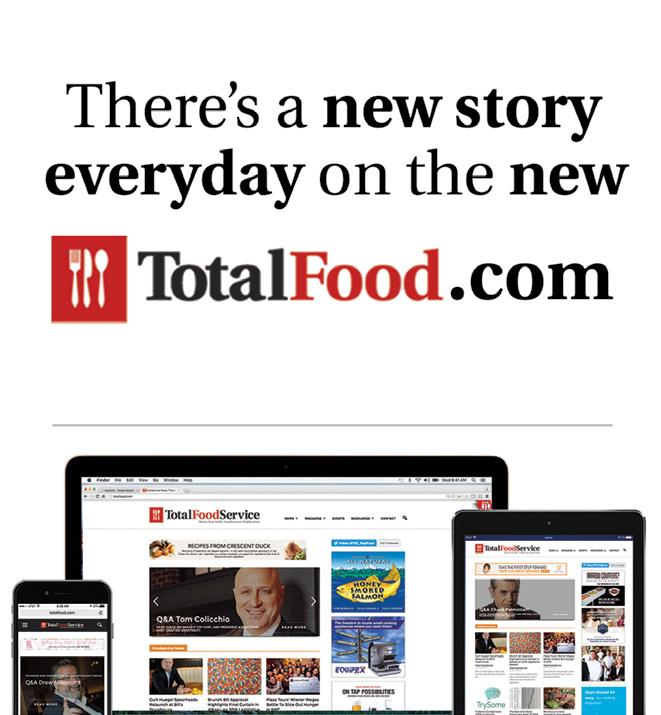
better your ingredients, the better your food. That’s true whether you’re sourcing from a broadener or direct from a grower. Scratch cooking and cook-toorder service are key. It’s not about fancy equipment—it’s about intention, technique, and care.
All the best culinary planning in the world means nothing if you don’t listen to your guests. At Restaura, we go beyond surveys. We look for sentiment. Why did they love that dish? What didn’t they understand? How did it make them feel? We collect that feedback digitally, at the table, and during events. And then we act on it. Nothing discourages a resident more than giving feedback that goes ignored. When they see their voice reflected on the next menu, they feel seen—and that’s everything.
None of this works without a trained, empowered team. We invest in culinary training, hospitality certifications, teaching kitchens, and hands-on labs. New staff are onboarded with role-specific programs, and we emphasize continuous development across the board.
Residents can tell when the person serving them is proud of what’s on the plate. That pride is built from training, mentorship, and clear standards. We didn’t invent the idea that great food matters. But we are working to redefine what “great food” looks like in senior communities. I’ve seen programs that rival top-tier restaurants—and I’ve seen others stuck in the past, microwaving frozen trays. The gap is huge, but the opportunity is bigger. We’re here to help operators close that gap. To build programs that make residents excited to head to the dining room. That bring dignity, flavor, and joy back to the table. That prove “variety is the spice of life” isn’t a platitude—it’s a strategy.
If you're ready to bring this kind of innovation to your community, we're ready to help. Visit us at restaura.com and fill out the intake form. A member of our regional team will reach out to schedule a conversation—virtual or in person. Let’s make your dining program something your residents can’t wait to talk about.

nam, and Thailand.
But not all imports are created equal. Factories differ in quality control, ethical labor practices, and ability to respond to demand shifts. Some suppliers jump from factory to factory chasing low prices, meaning the gloves inside the box today may not be the same as last time. At Elara, we don’t do that. Our supply model is built on stable, long-term partnerships. We audit factories, test materials, and track how our gloves perform in real kitchens. That’s how we keep quality up—even when the market goes sideways.
When tariffs hit, buyer behavior shifts quickly. Some stockpile inventory, hoping to beat price increases. Others panic and start swapping products without checking specs. Almost everyone gets more price-sensitive. That’s understandable—but dangerous.
Stockpiling too much ties up cash and risks expiration. Understocking leads to operational chaos and pre -
from page 22
mium “spot buys.” The real strategy? Be flexible. Plan for temporary substitutions. Work with a partner who knows the market and has options at the ready.
We’ve spent the last year helping customers rework their glove programs. In many cases, we’ve found gloves that better fit the task—at a lower cost—without compromising safety.
At Elara, gloves are our focus. It’s not just a product line—it’s what we do. And in a crowded, price-driven market, specialization is what protects operators. While some distributors bundle gloves with napkins and cutlery, our focus is squarely on disposable protection.
We offer a wide range of gloves because foodservice isn’t one-size-fitsall. A prep cook handling raw meat needs a heavy-duty glove. A sandwich shop employee changing gloves every few minutes needs a lightweight hybrid. We match the glove to the task— helping you avoid overbuying and
adding acidity and texture. Adding pico de gallo, crispy toppings, or roasted veggies not only diversifies the menu but also enhances flavor and presentation.”
Barilla Professional offers ongoing support to foodservice operators by providing creative solutions and practical tips for enhancing dishes. One such suggestion from Chef Walker involves adding pasta water to Mac & Cheese to improve consistency and texture. “Incorporating a bit of pasta water into the Mac & Cheese cooking dish helps to coalesce the dish, and this technique ensures a creamier, more cohesive final product.” Barilla’s commitment to supporting chefs goes beyond product quality by offering insights that help operators deliver consistently satisfying meals, even when facing tight budgets and evolving culinary demands.
With that on-going support from the Barilla Professional team, Houston-based Trulucks, known for its upscale seafood, featured Barilla Love Heart Shaped Pasta in their Valentine’s Day menu, pairing it with brie, lobster, and a triple cheese blend. The result was a luxurious yet comforting dish that showcased both creativity
overspending.
For example, our Digifit gloves are a great match for high-volume environments, while our FineFit2G nitrile line is built for chefs who need precision and sensitivity. And when gloves are used improperly—like not changing them when switching tasks—we offer training tools to support your managers and frontline staff.
During times of market stress, some operators get tempted to cut corners. We get it. But gloves aren’t the place to gamble. We’ve seen what happens when operators go for the lowest price: recalls, negative press, even lawsuits. That’s why we’re here—not just to sell gloves, but to educate and support.
We’re proud that our customers consistently tell us: Elara shows up. We stay in touch, give straight answers, and solve problems. That matters when supply chains get messy.
If you’re feeling the pressure of tariffs and don’t have a clear glove strategy, now is the time to act. Start by
and quality. Chef Walker concluded, “This dish exemplifies how even an indulgent menu item can be executed with consistency when using quality ingredients.”
To consistently deliver quality, choosing the right pasta manufacturer is crucial. Barilla’s pasta line, with over 40 cuts including Classic Semolina, Whole Grain, Gluten-Free, and Legume options, allows chefs to meet a diverse range of customer needs without compromising quality.
Chef Walker concluded, “Barilla’s focus on quality ingredients ensures consistent performance, especially for high-volume operations.”
As food costs continue to rise, restaurants must innovate to maintain quality and value. Barilla’s versatile pasta offerings provide a reliable foundation for creating both traditional and unique dishes that meet consumer expectations and operational needs.
For more insights on Barilla for Professionals’ pasta solutions and how they can support your foodservice operation, visit https://www. barillaforprofessionals.com/en-us/ or reach out to their team directly at BarillaforProfessionalsUS@barilla.com for support and product information.
evaluating your current glove lineup to ensure you’re using the right glove for each task and not overpaying for options that offer more than you need. Have a conversation with your distributor to confirm they are sourcing from reliable partners and have contingency plans in place. Make sure your team is properly trained on glove usage, since even the best glove won’t be effective if it’s not used correctly. Most importantly, don’t try to navigate this alone—reach out for support and guidance from experts who know the market.
We’re here to help you get it right. We’re always happy to provide samples, answer questions, and help you build a glove strategy that works—no matter what the market throws at you. Reach out to your Elara Sales Representative or contact us directly at heythere@elarabrands.com. You’ll also find product info, training resources, and more at elarabrands.com.
from page 62
at night, Snack Packs featuring crispy tots hold beautifully in hot cases, making them irresistible impulse buys during peak late-night hours. One of the key strengths of Stuft Tots is that they are proudly produced in the United States. This commitment to domestic manufacturing ensures not only consistent quality and freshness but also avoids potential tariff complications that can arise when sourcing from overseas. By utilizing 100% U.S.-sourced ingredients, Stuft Tots maintains its promise of quality while supporting local suppliers. This approach not only simplifies logistics but also gives operators peace of mind, knowing they are offering a product that meets high American standards.
Stuft Tots are a go-to solution for operators in Grab & Go, QSR, stadiums, and schools. The convenience factor is unmatched—fully cooked and easy to prepare, they can be integrated seamlessly whether as a breakfast option, a side dish, or a late-night snack. Schools appreciate their clean label and gluten-free profile, while stadiums benefit from their portability and indulgent flavor. In QSR settings, they can be paired with mini sandwiches or offered as a premium snack, proving their adaptability and broad appeal.
Stuft Tots continue to innovate with bold new flavor profiles in the pipeline: 3 Cheese Jalapeño—perfect for breakfast or a spicy late-night snack; Bacon, 3 Cheese & Jalapeño, a crowd-pleaser with a spicy kick; and the All American Cheese Burger flavor with fry sauce for dipping are also set to debut. Additionally, Chorizo + Cheese + Eggs are all set to make their debut in ‘26.
To learn more about adding Stuft Tots to your menu, contact them at Stephen@stufttots.com or call 503-333-7700.
and I carefully curate our menus to showcase the freshest, in-season ingredients, ensuring that every dish tells the story of our region’s bounty. This summer, we expect to highlight local corn, berries, stone fruits, and tomatoes. To minimize waste, we practice whole-ingredient utilization, preserving, pickling, and repurposing where possible. We also emphasize regenerative agriculture, supporting farmers who use soil-friendly methods that benefit the environment. In the summer months, it’s especially important that our partners focus on things like cover cropping, no-till or low-till farming, crop rotation, composting, and integrating livestock. By fostering strong relationships with producers and continuously educating ourselves on best practices, we aim to deliver an exceptional dining experience that is both flavorful and sustainable. Ultimately, our goal is to create food that not only nourishes our guests but also respects the land and community that make it possible.”
- Chef Megan Gill, BLDG Restaurant at Hotel Marcel
“Kale us old fashioned, but we believe that eating vibrant, organic veggies will never go out of style. We love them not only for the nutrition and satisfaction they provide, but also for the positive impact they have on our environment.” Managing Partner Aminda Warburton, Brassica
"My first prediction is Hyper-local sourcing. People care more about where their food comes from. Fresh, seasonal, and local is the way forward—not just because it’s trendy, but because it makes sense with how things are shifting in the industry in the US. My second is the Mediterranean diet: Fresh ingredients, bold flavors, and shared plates. Another prediction is functional foods as health and dining are blending more. Think dishes with probiotics or adaptogens—people love food that tastes good and makes them feel even better.” Culinary Director George Guzman, Carta Wine Bar
“Caribe Royale Orlando loves to color outside the lines. We take pride in challenging ourselves to be trend setters and not followers. Mocktails will continue to grow in all aspects, from offerings in our bars and restaurants to specialty action stations in our convention center. There are a lot of guests that want to feel part of the party and unique mocktails allow them to relax and enjoy a unique experience without peer pressure. I can also see ‘Mock Shots’ making their way into bars and becoming popular. We’re creating fun ways to do a shot, an experience that brings people together in the moment. I call it the placebo shooter! It allows you to take in the environment, people watch.” - Complex Executive Chef David Hackett, Caribe Royale Orlando
“As it pertains to summer drink trends, I believe the boom of more complex nonalcoholic options will continue.” - Director of Food & Beverage Gregory Innocent, Hotel Celare
“Non-alcoholic beverages are no longer an afterthought; think spiritfree aperitifs, kombucha-infused cocktails, and umami-driven mocktails that stand on their own. These drinks are just as complex and carefully crafted as their alcoholic counterparts.” - TJ VanRhee
“I predict a rise in adult non-alcoholic beverages. More restaurants now offer beautifully crafted mocktails—balanced, not overly sweet, and thoughtfully made. They’re as sophisticated as cocktails, not just flavored sodas. I enjoy them when avoiding alcohol for any reason or as a refreshing break. I also love fermented drinks like Unified Ferments teas, Walker Brothers Kombucha, and Dram Apothecary sodas. Another trend is vegetable-forward, sustainable dishes. With rising costs and supply chain issues, chefs are embracing local, plant-based options. At Miss Kim, over half our menu is vegetarian. Even non-vegetarians want more vegetables—they're
sustainable, versatile, and simply delicious.” - Chef & Owner Ji Hye Kim, Miss Kim & Little Kim
Trend #4: Botanical and Herba ceous Flavors will Accent Bever ages and Bites
“The palate of the casual diner has grown to appreciate herbaceous drinks and following the popularity of Aperol, there will likely be an increased curiosity for bold, flavorful drinks inspired by global influences. The curiosity for more flavorful drinks that come from all over the world will make its way into cocktails. Additionally, the classic Paper Plane cocktail is set to make a strong comeback on menus, with various creative twists and interpretations expected to emerge as well.” - Gregory Innocent
“Botanical and herbal accents are making their way into everything. Lavender, elderflower, and basil bring fresh, aromatic complexity to cocktails, sauces, and desserts. These ingredients add an elegant, floral lift to summer dining, making each bite and sip vibrant and refreshing.”
- TJ VanRhee
“Summer is the time for bright, light and zesty wines! While Sauvignon Blanc is always a welcomed option, more unique varietals such as Albariño and Verdicchio can pique interests as well as palates.” - Beverage Director Jamie Boss, Central Park Boathouse
"Personalization is increasingly important, with diners craving tailored experiences, particularly when it comes to beverages—craft cocktails and mocktails are in high demand. The trends in takeout and catering are also evolving, with picnic-style meals and shareable platters gaining popularity for group gatherings that want a seamless yet sophisticated summer dining experience. Sangrias, mojitos, and other tropical-style cocktails will show face, while also seeing diverse experimental versions of these classics." - Bar Manager Zach Smith, Serena Pastificio
“Health-Conscious Dining is a trend that will grow in 2025, as individuals increasingly see plant-based foods in two separate ways: There is food that appears healthy, because it is plant-based, but when you look at the ingredients and so many modifications, you have to ask, is it really healthy? And then there are foods that are all natural, come from the ground, and have not been modified––just as mother nature intended. I feel this will be more of the direction we go in and Chefs will have to get creative with all-natural, wholesome ingredients. An example would be a classic baked stuffed tomato: filled with brown rice, roasted mushrooms, spinach, lentils and drizzle of avocado oil.”
- David Hackett
“The demand for plant-based and alternative proteins keeps rising, driven by a growing awareness of their benefits – not just for personal well-being, but for the health of the planet. At the same time, balance remains essential – guests seek meals that are both nourishing and packed with bold, vibrant flavors that capture the essence of the season.”
- Kinan Ibrahim
“I foresee small plates continuing to be a major trend in the summer of 2025, especially in settings with outdoor dining. As people gather to enjoy meals outside, small plates offer a perfect way to sample a variety of flavors and share dishes with friends.”
- Executive Chef Sean Thompson, Porter House
“I think we’ll start seeing more new and fresh takes on classic NYC fare this summer. People enjoy a good mix of creativity and nostalgia during the summertime when they are reminiscing with friends and family including comfort-focused, fun and familiar dishes with a unique twist. Like at BKK New York, we have a hot dog with homemade Chiang-Mai pork sausage and authentic Thai flavored mayo.”Co-Owner Jeanine Royce, BKK NY

traditional and contemporary barbecue applications.”
BBQ sauces offer a unique opportunity to invigorate plant-based or vegan menu items, creating bold and appealing dishes. Chef Schweizer noted, “A great example is BBQ cauliflower bites, where the smoky sweetness of Sweet Baby Ray’s® Barbecue Sauce pairs perfectly with the crisp texture of fried cauliflower.” By using BBQ sauces creatively, operators can add depth to plant-based proteins like tofu or grilled vegetables. Incorporating BBQ into vegan wraps or bowls with roasted vegetables and pickled slaw adds a rich, satisfying element without compromising on dietary preferences. These dishes offer variety while appealing to a broader customer base, making BBQ an unexpected yet successful addition to plant-based menus.
Understanding the role of wings within a BBQ program is essential for year-round success. Chef Chris Gatto emphasized, “Wings aren’t just a seasonal item—they’re a year-round favorite, with demand exploding for major sporting events like football and basketball games.” Operators should plan well in advance, particularly in summer, to secure supply for peak sports events. Chef Schweizer noted, “If an operator waits too long to secure contracts, they may face shortages when demand spikes.” Wings can also act as a versatile platform for various BBQ sauces, offering a way to showcase seasonal flavors without drastically changing the core menu.
When adding BBQ to a summer menu, leveraging fresh, seasonal ingredients is essential. Chef Gatto pointed out, “In summer, I immediately think of corn, watermelon, peaches, zucchini, and crisp salads. These ingredients pair beautifully with BBQ, creating lighter dishes that still feel hearty.” Incorporating peach BBQ sauce into grilled chicken sandwiches or serving smoked zucchini alongside pulled pork can create a refreshing balance. Slaws with a hint of BBQ flavor are also a hit, adding crunch and contrast to the rich, smoky meats. Balancing bold BBQ flavors with seasonal freshness is the key to a
“I immediately think of corn, watermelon, peaches, zucchini, and crisp salads. These ingredients pair beautifully with BBQ, creating lighter dishes that still feel hearty.” — Chef Chris Gatto
successful summer menu.
To make summer BBQ offerings even more dynamic, Chef Greg Schweizer recommends dishes like BBQ brisket salad with barbecue ranch, roasted corn, cheddar cheese, and fried onion straws. Another favorite is burnt-end brisket tacos—caramelized burnt ends served on a toasted corn tortilla with a vibrant coleslaw. Both dishes embody the hearty yet refreshing qualities ideal for warm weather dining.
Operators should also consider BBQ-flavored sauces on egg sandwiches, like a Grilled Sausage, Egg & Cheese, or even creating barbecueinspired breakfast skillets. Brisket Benedict, served with a barbecue hollandaise on Texas toast, exemplifies how to blend familiar breakfast items with the rich, smoky flavors barbecue fans crave.
One of the biggest challenges for operators is maintaining SKU efficiency while offering variety. Chef Gatto added, “You don’t want singlepurpose SKUs cluttering your kitchen. The goal is to have multiple applications across all dayparts. A good example is using Sweet Baby Ray’s as both a traditional sauce and a base for dressings or marinades.”
Lunch and dinner, traditionally the strongholds of barbecue, should capitalize on BBQ’s broad appeal while incorporating lighter, seasonal elements during the summer. “Barbecue chicken flatbreads at lunch can transition into smoked ribs or pulled pork sandwiches at dinner. Incorporating summer ingredients like corn, watermelon, and peaches can also lighten heavier BBQ dishes while maintaining their signature flavors,” Chef Gatto concluded.
To learn more about incorporating Sweet Baby Ray’s and Ken’s Barbecue
sauces into your operation, visit the Ken’s Foodservice web site: https:// www.kensfoodservice.com/, where you’ll find product information, samples, and support from their culinary team.
Breakfast:
• https://www.sbrfoodservice.com/ recipes/korean-breakfast-sandwich
• https://www.sbrfoodservice.com/ recipes/smokehouse-bangers-andegg-stacker
Lunch:
• https://www.sbrfoodservice.com/ recipes/ham-egg-and-cheese-paniniwith-smoky-golden-mustard
• https://www.sbrfoodservice.com/ recipes/nsa-original-bbq-pulledpork-stuffed-zucchini
Appetizers:
• https://www.sbrfoodservice.com/ recipes/pulled-barbecue-chickenloaded-fries
• https://www.sbrfoodservice.com/ recipes/sbr-bbq-chicken-dip
• https://www.sbrfoodservice.com/ recipes/nsa-bbq-chicken-wings
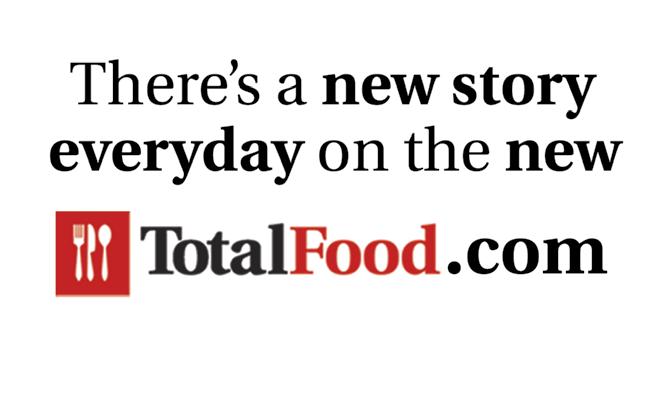


least one team member speaks Spanish and is clearly identified. Looking ahead to our fall Innovations Expo in New Jersey, we’re planning bilingual signage and labeling so attendees can navigate the experience comfortably. It's all part of being intentional and inclusive. Why does all this matter? Because language builds trust. When people can learn in their own language, they feel seen and respected. That’s not just good for morale—it directly impacts productivity and safety.
We’re exploring tools like real-time translation apps for training sessions, where attendees can listen or read in their preferred language. That could mean Spanish, Creole, or even American Sign Language for hearing-impaired team members.
If your company is considering multilingual content, start with your people. Are employees asking for translated materials? Are you getting feedback from customers about accessibility?
Use AI tools to get a first draft, but always have a fluent speaker review it for tone, cultural relevance, and accuracy. Choose video presenters who are native speakers and can relate to your audience. Don’t just translate word-for-word—localize the message. Not every phrase converts smoothly. For instance, the vocabulary used in Puerto Rico may differ from what’s commonly understood in Mexico or Cuba. Our team often debates the best phrasing, even researching regional preferences to get it right.
Bilingual materials shorten training cycles. When people understand right
away, there’s less need for repeated explanation or supervision. This improves memory retention and leads to fewer mistakes. More importantly, it helps employees feel confident and empowered. They’re more likely to take initiative and stay engaged.
And there are safety benefits, too. Clear understanding of chemical handling, food safety procedures, and equipment use reduces the risk of accidents.
While it’s early to measure all the benefits of our multilingual approach, the feedback from our team and customers has been overwhelmingly positive. People appreciate the effort. They engage more. They ask questions. They share ideas. That kind of two-way communication only happens when people feel like they’re being heard—in their own
language.
At Imperial Dade, we believe language inclusion is the next frontier in operational excellence and customer engagement. It’s not a trend—it’s a responsibility. From kitchens to restrooms, from training videos to signage, from employee onboarding to trade shows, language matters.
We’ve made it our mission to lead the way. If your team is looking for guidance on how to implement multilingual resources effectively, we’re here to help. Whether it’s developing content, advising on signage, or sharing lessons we’ve learned, the Imperial Dade team is ready to support you every step of the way. Because when we speak your language, everyone wins.
are still serviceable. Modern Line works with restaurant operators to create new tabletops that seamlessly integrate with existing bases, reducing waste and preserving resources. “If the base is sturdy and visually appealing, why replace it?” Katliarova added. “We collaborate with our clients to maximize their current assets, offering innovative solutions that refresh the look without unnecessary expenses.”
Flexibility is another key component of a strong sourcing strategy. Modern Line’s ability to offer fast turnarounds— often within three to four weeks—has become a major advantage as businesses struggle with long lead times from overseas suppliers. “We focus on quick customization without compromising quality,” Spivak added.
In addition to speed and tariff resilience, design remains at the forefront of restaurant and hospitality needs. Modern Line understands that operators want furniture that not only looks great but also endures the rigors of daily use. “Our products are built to last, even in high-traffic environments,” Katliarova continued. “By staying local, we’ve been able to innovate in ways that imported solutions just can’t match.”
During the COVID-19 pandemic, Modern Line Furniture recognized the
from page 52
importance of building a resilient and community-focused supply chain. Rather than facing disruptions alone, they reached out to nearby vendors to create a supportive network that strengthened the local economy while ensuring continued production. “We knew that bringing local suppliers into our ecosystem wasn’t just about surviving the pandemic—it was about making them feel like part of something important,” Katliarova said. “By fostering these partnerships, we not only kept our production steady but also helped other small businesses thrive.”
With ongoing tariff uncertainties, sourcing domestically becomes not just a preference but a strategic necessity. “The ability to avoid tariffs and still get great value is what makes us a go-to partner,” Spivak detailed. Modern Line’s proactive planning and investment in U.S.-based production have insulated them from supply chain disruptions and pricing volatility.
For restaurants and foodservice operators looking to enhance their spaces with stylish, durable, and custom-designed furniture while avoiding tariff-related challenges, Modern Line Furniture is the go-to partner. Visit their website at www.modernlinefurniture.com or call
(609) 667-1800 to discuss your project needs today. Contact Modern Line Furniture today to learn more about their
wide range of solutions and how they can meet your project needs efficiently and affordably.


Perhaps the most striking feature of the new law is its retroactive application. For employers currently dealing with active litigation over frequencyof-pay claims, this amendment drastically reduces their exposure, and likely their settlement posture.
Defense counsel across the state will now be reevaluating damages models and class certification strategies. Plaintiffs' attorneys, for their part, may be rethinking the economics
of continuing to litigate cases where the maximum recovery per pay period is now just a few dollars in interest.
For hospitality employers, this is a long-awaited reprieve. The reality is that many employers were not compliant with the law, not out of malice, but due to outdated payroll systems, unclear guidance, industry norms, or plain ignorance. The amendment still penalizes non-compliant employers but no longer imposes consequences that previously had the power to put
companies out of business. While the amendment provides relief from significant damages for firsttime violations, hospitality employers should remain vigilant. Transitioning to a weekly pay schedule may increase administrative costs, but those costs are likely to be far lower than the potential liability from future litigation—particularly for employers who have previously been found in violation and face the risk of full liquidated damages.
Looking ahead, hospitality employers should take steps to ensure compliance with the pay frequency requirements that remain in place. Employers should audit their current payroll practices to confirm that all hospitality employees are being paid on a weekly basis. For hospitality employers currently involved in pending litigation, the amendment may significantly reduce exposure by altering how damages are calculated.
older buildings, industrial spaces, or areas with strict ventilation regulations. Others want to avoid the complexities of hiring a full culinary team.
This is where breweries often struggle: they recognize the value of a food program but feel overwhelmed by the logistics.
Enter AutoFry—a game-changing solution for breweries looking to implement or enhance their foodservice program without major infrastructure investments.
AutoFry is a fully enclosed, ventless deep-frying system that allows operators to serve crispy, hot food with minimal staff and no need for traditional hood ventilation. Whether you're operating in a tight taproom or a larger brewpub, AutoFry offers flexibility and consistency that make it easy to deliver high-quality fried fare.
Here’s how AutoFry can help breweries meet their foodservice goals:
• Ventless Operation: No expensive hood system required. Perfect for older buildings or non-traditional spaces.
• Compact Footprint: Fits into tight back-of-house or bar areas without needing to redesign your layout.
• Consistent Results: Automated cooking ensures every batch of fries, wings, or mozzarella sticks comes out perfect—every time.
• Simple Operation: Minimal training required. Staff can focus on hospitality and beer service.
• Revenue Boosting: High-margin
menu items like fried appetizers and snacks can significantly increase profitability.
Food isn’t just an add-on—it’s a critical component of the customer journey. The smell of freshly fried food wafting through the taproom, the satisfying crunch of perfectly golden chicken tenders, the joy of discovering the perfect beer and food pairing—these sensory experiences create lasting memories.
With AutoFry, breweries can craft a consistent, satisfying food offering that complements their beer and creates an immersive experience that keeps guests coming back.
In today’s competitive craft beer landscape, standing out means offering more than just great beer. A well-executed food program can increase revenue, enhance the guest experience, and turn first-time visitors into loyal fans.
Whether you’re just starting out or looking to level up your taproom offerings, adding a reliable, high-quality solution like AutoFry can be the key to unlocking your foodservice potential— without the hassle of traditional kitchens.
Food and beer go hand-in-hand. With the right tools, your brewery can serve both exceptionally well.
To learn more about how ventless kitchen equipment can benefit your business, visit mtiproducts.com today!
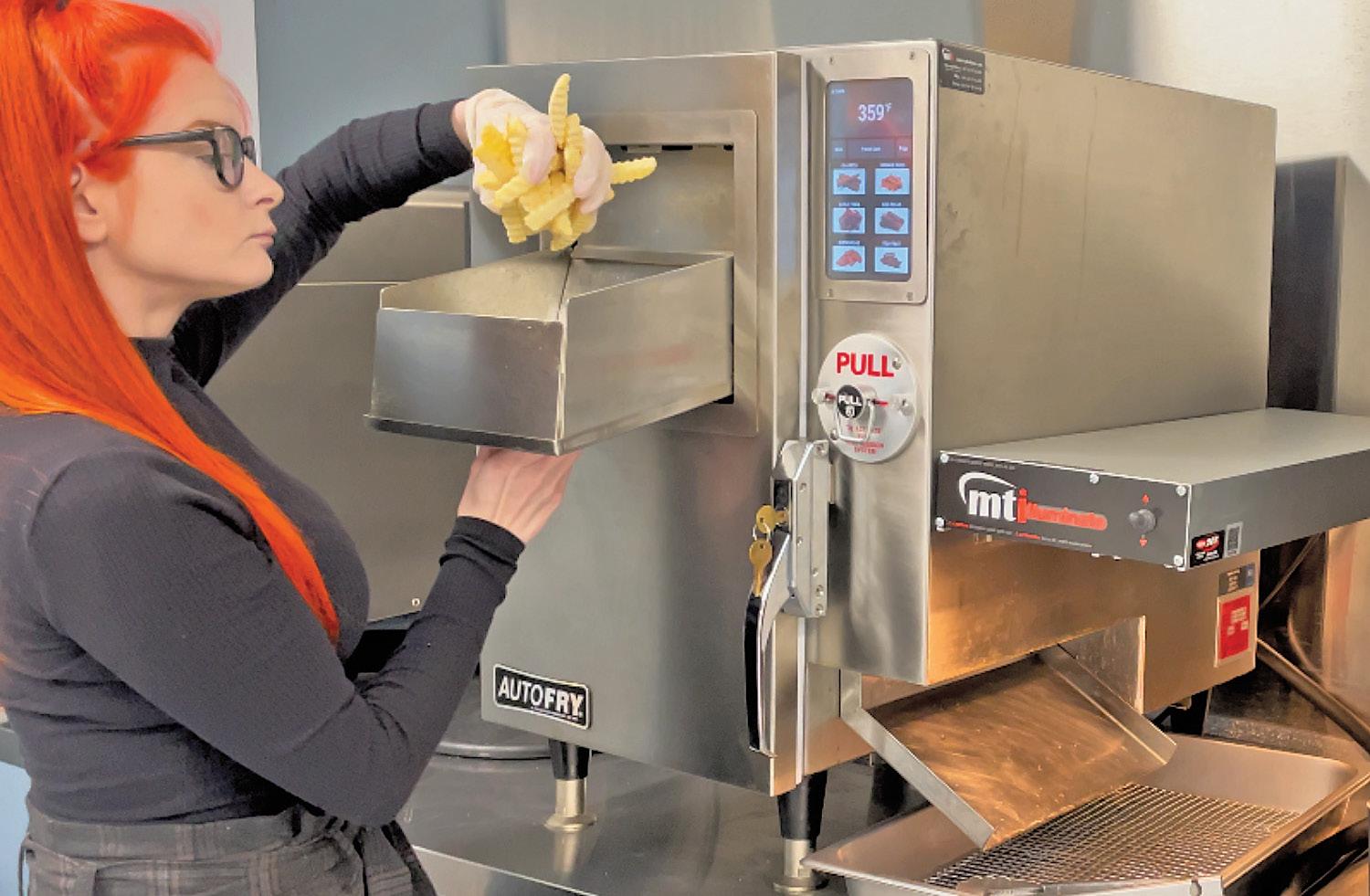
from page 78
That vision found a long-term ally in Chefs Warehouse. The distributor has become a cornerstone of the restaurant’s consistency and creativity, supplying everything from stracciatella to vanilla beans. It’s a relationship built not just on logistics, but on shared belief in quality and craft “With Chefs Warehouse, we’re able to take what’s in our heads and bring it to the plate,” Mills concluded.
For chefs, restaurateurs, and distributors looking to create that same kind of magic, the message is simple: start with your story. Then build the systems, partnerships, and menus that make it possible — every day, on every plate
True Chesapeake Oyster Co. stands as more than a restaurant — it’s a living, thriving example of what happens when vision meets execution. Through a shared commitment to excellence, sus-
tainability, and local flavor, Chef Zack Mills and Chefs Warehouse have created more than just a menu or a dining room. They’ve created an iconic venue — one that captures the spirit of Maryland on every plate, night after night.
It’s a partnership defined by mutual respect and trust. Mills brought the culinary insight and regional heart; Chefs Warehouse brought the resources and consistency to turn ideas into service. Together, they’ve turned True Chesapeake into a model for what modern restaurants can achieve: food with integrity, a concept with soul, and an experience guests remember.
For foodservice professionals inspired by that kind of success, the first step is clear — reach out to Chefs Warehouse and start building the foundation for your own iconic venue.

as the scientific properties of cold, she endured painful shifts in a refrigerated warehouse and visited numerous foodprocessing facilities. Thus, she is able to write as fluidly about the human sensation of cold and the smell of aging meat as about the respiration rates of lettuce, and her description of silvery, two-story tanks of frozen orange-juice concentrate glimmering in the half-light of a Delaware warehouse is memorable. While acknowledging the undeniable advantages of refrigeration, Twilley rues that thanks to cold’s preservative properties, many modern consumers have never tasted truly fresh food. In gaining shelf life through refrigeration, we have lost deliciousness.
Morna Livingston: Nicola Twilley's Frostbite is the perfect guide to the "engineered winter" in refrigerated warehouses. Because much refrigeration history is either lost
to common memory or was never in the public eye to begin with, her chapters on extending food’s edibility hold successive surprises. Beginning with packing food in blocks of winter ice—to storing it in enormous cold, atmospherecontrolled rooms—Twilley enlivens her work by delineating the quirky, intelligent, and unusual people who made the cold system possible. She follows inven-

tions of equipment and packaging with sketches showing how what our refrigerators hold may define our personalities; calculates the chilling cost of cooling on the environment; and speaks of possible alternatives to refrigeration on fruit, like adhesive skins. Twilley's thoughtful history will make it hard to open any refrigerator quite the same way again, much less consign fresh-picked blueberries to


their chill.
Mayukh Sen: In a year full of formidable food histories, Nicola Twilley’s Frostbite rose to the top of a crowded field for its unique subject, intrepid reporting, and character-driven storytelling. Twilley’s immersive, engaging prose pulls readers into a world they may not have thought much about and urges them to look at it with fresh eyes.

The Prize is named for Nach Waxman (1936-2021), the founder of Kitchen Arts & Letters bookstore in New York City, where he ardently championed the work of food and beverage scholars, as well as other authors who explored and illuminated the culture behind cooking, eating, and drinking. More information about Nach Waxman, as well as the Prize judges, can be found at https://www.kitchenartsandletters.com/pages/thenach-waxman-prize
